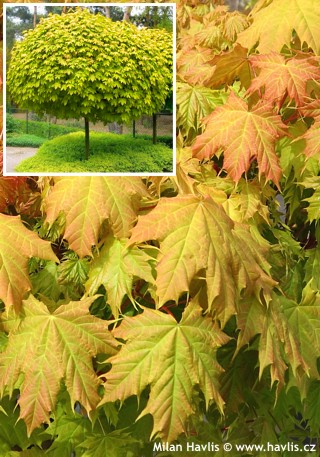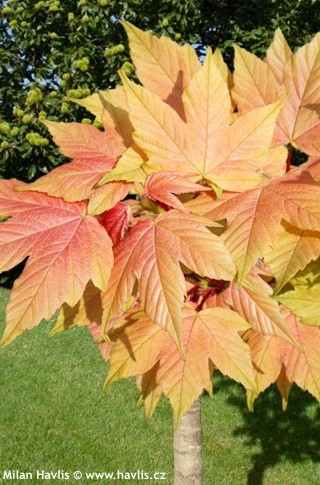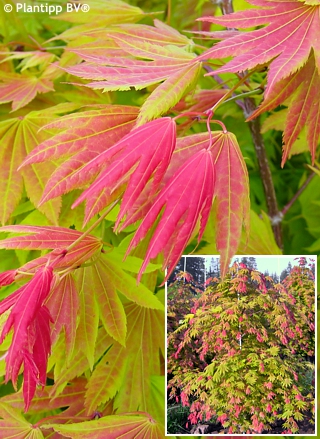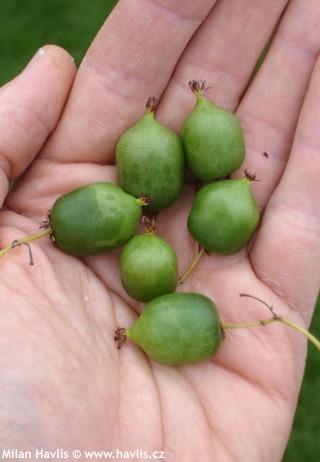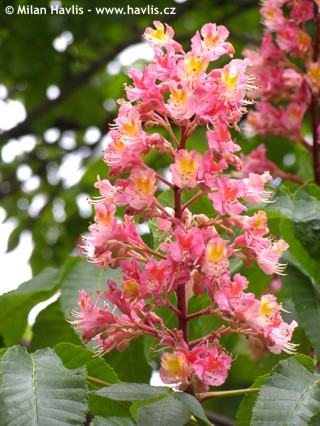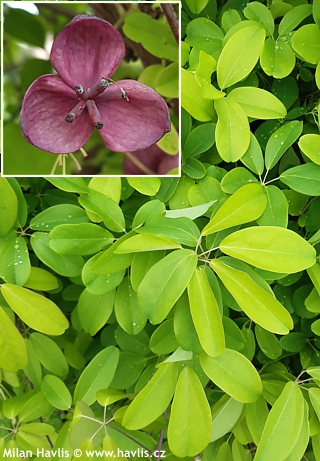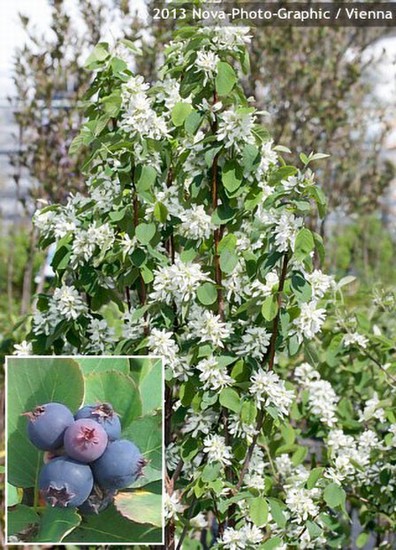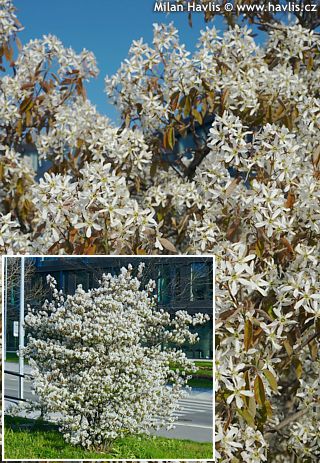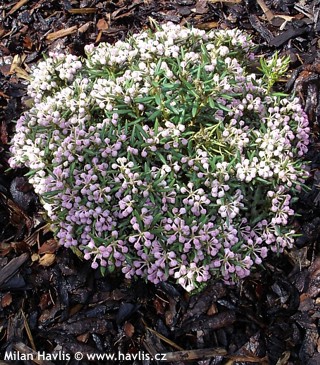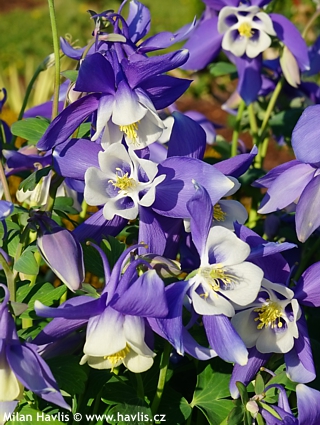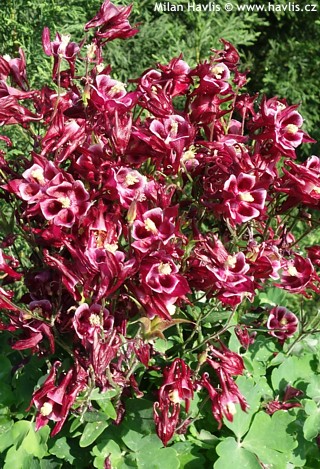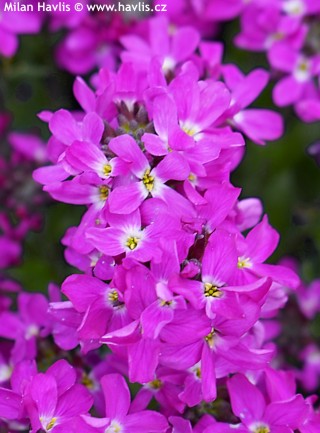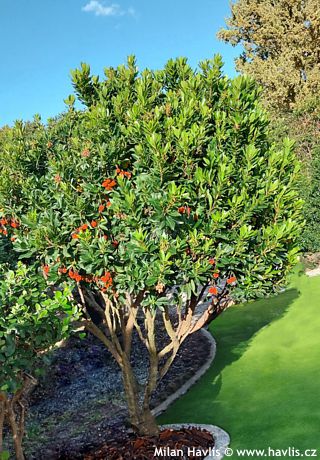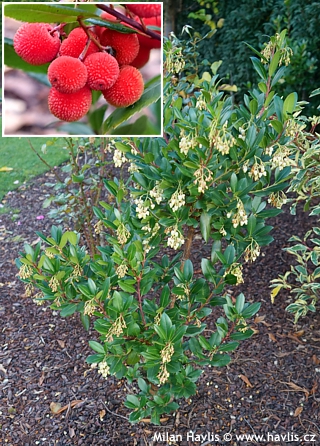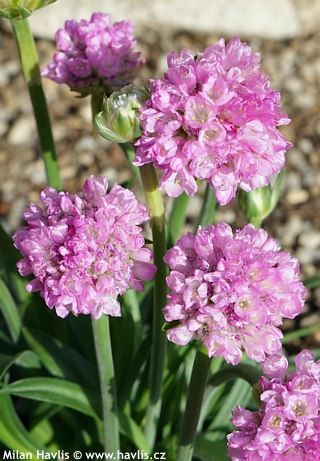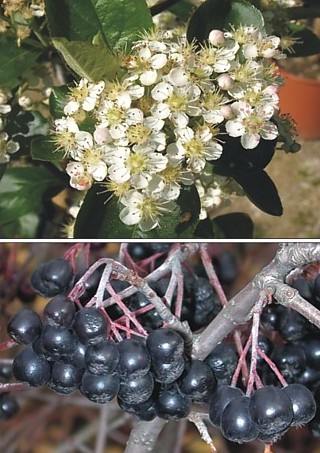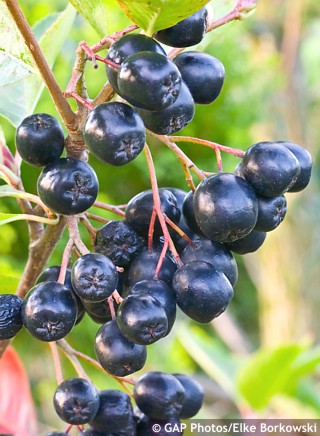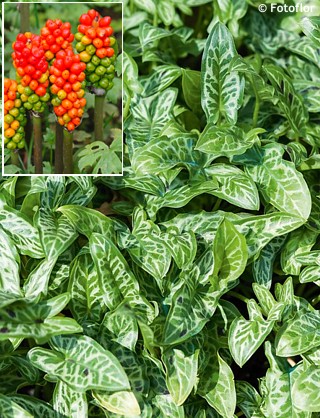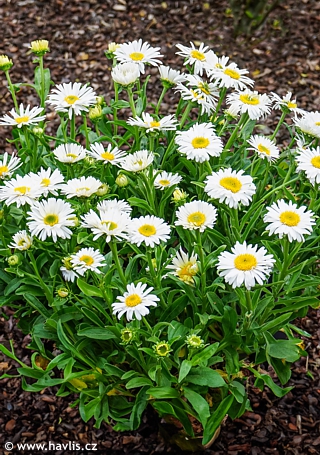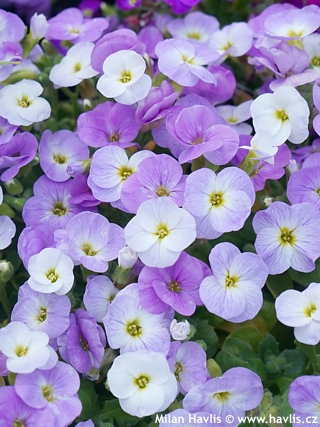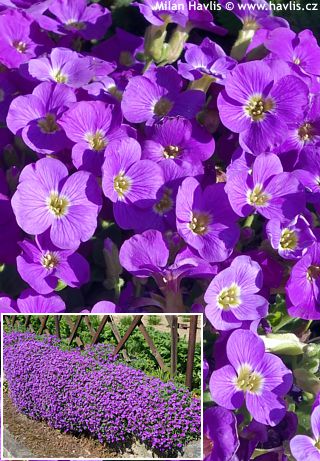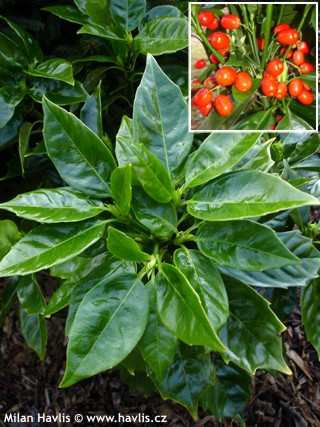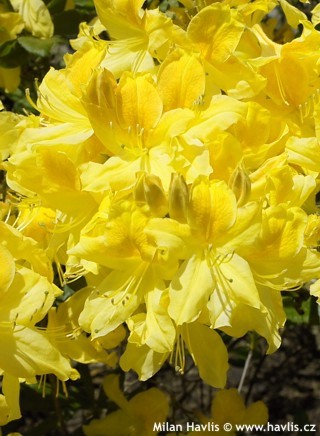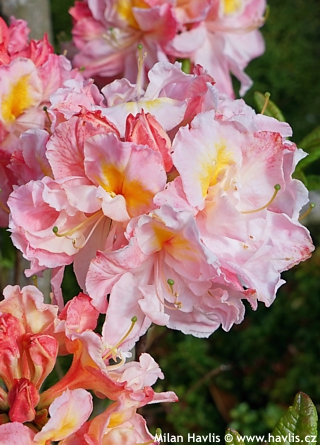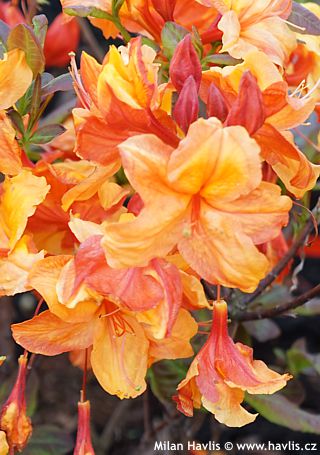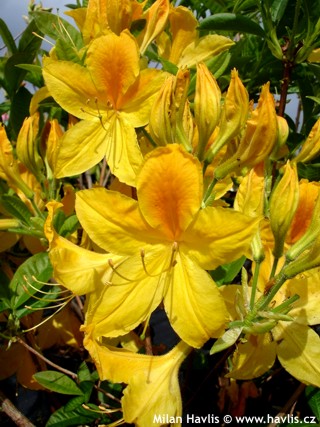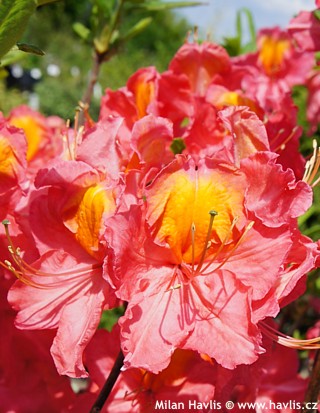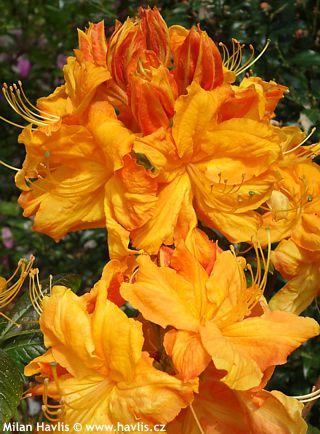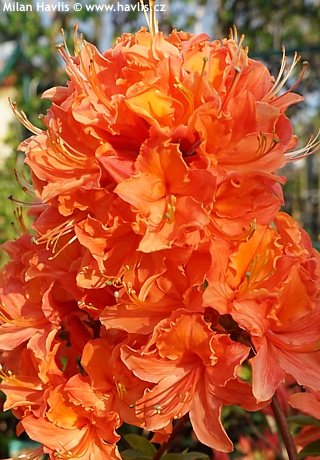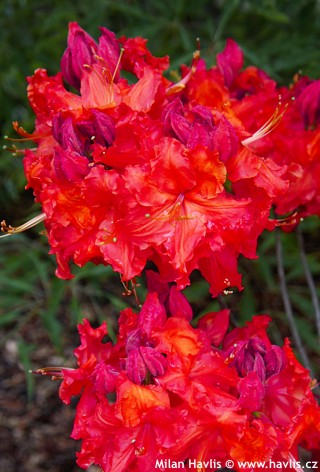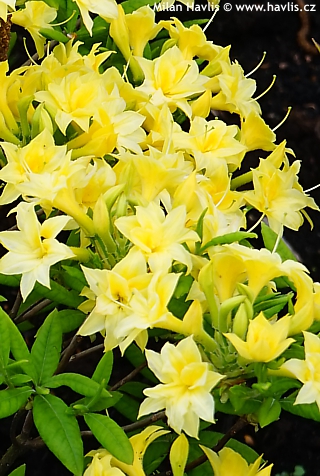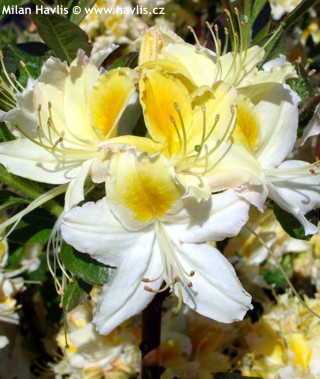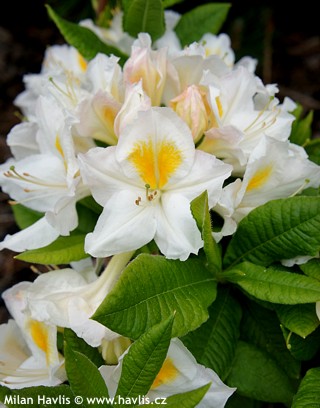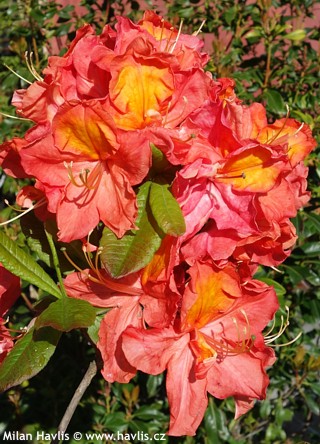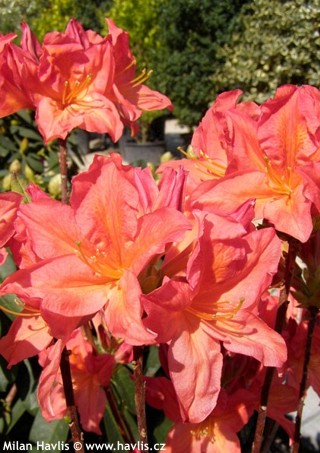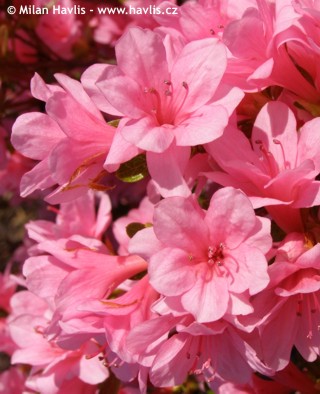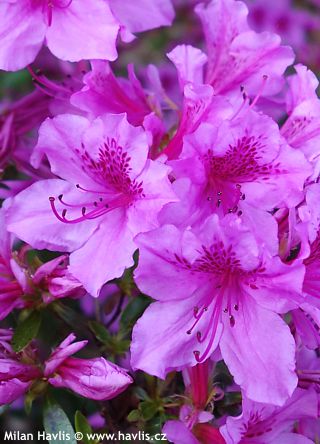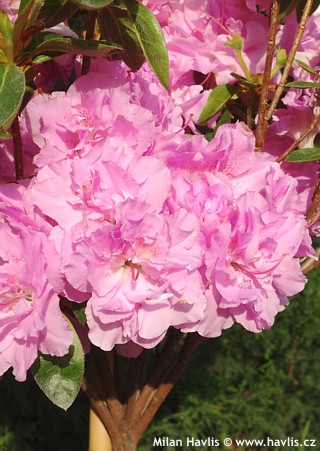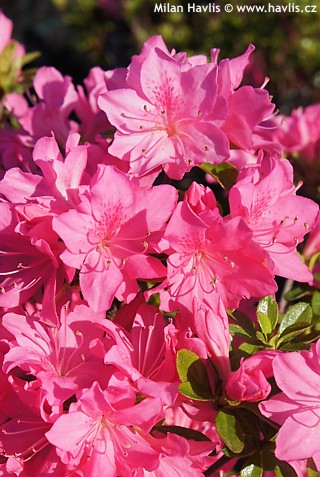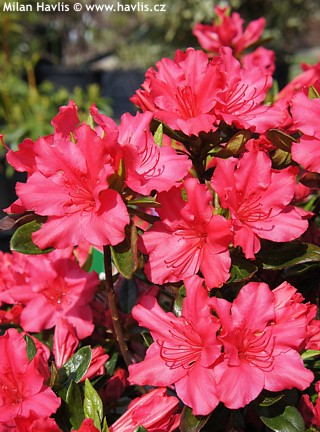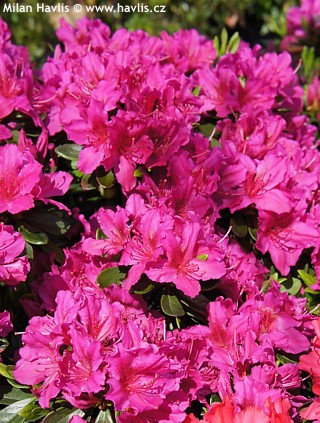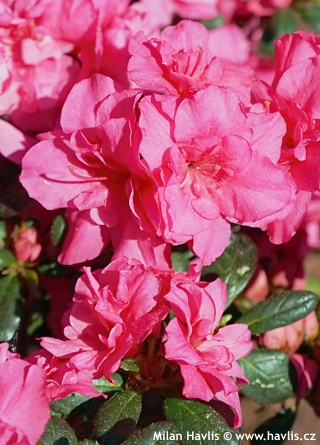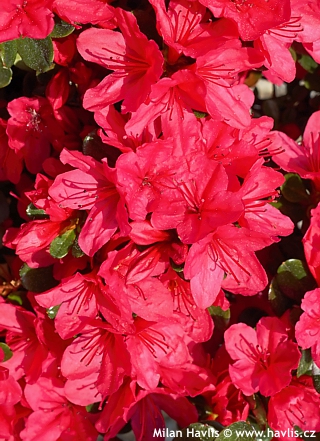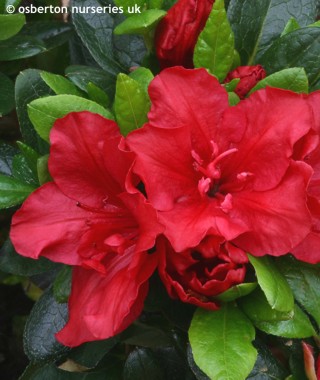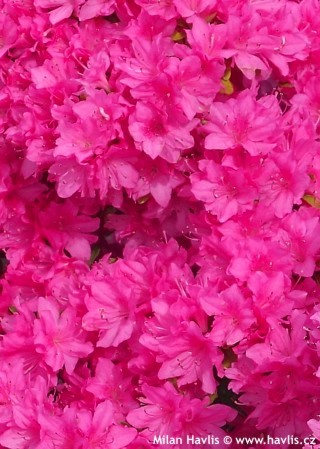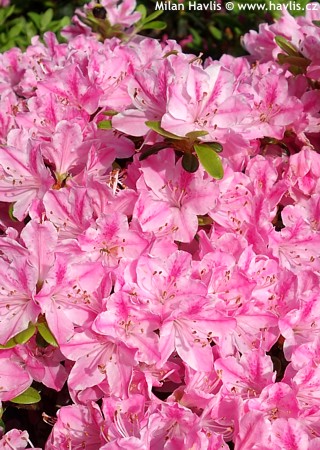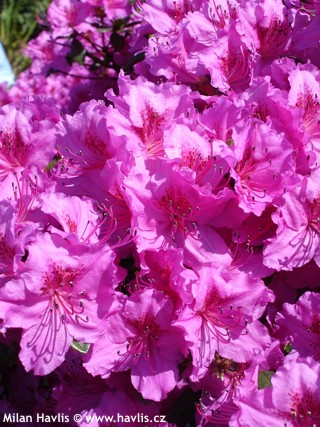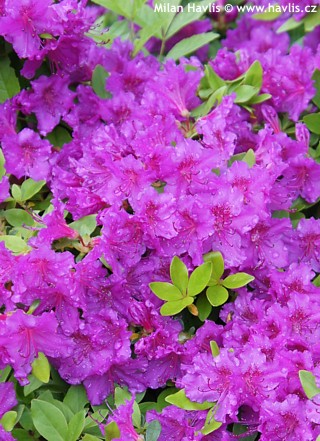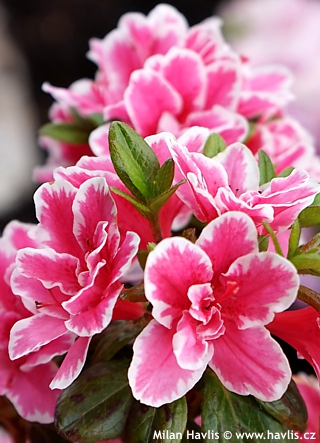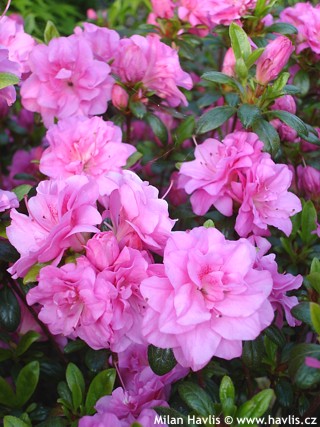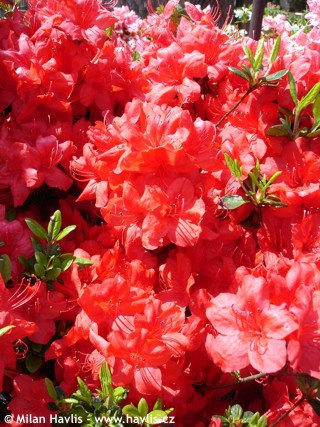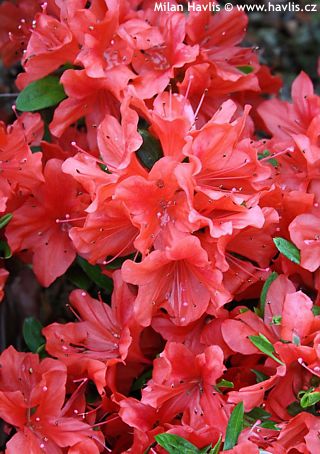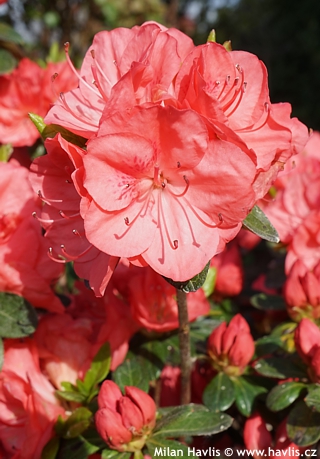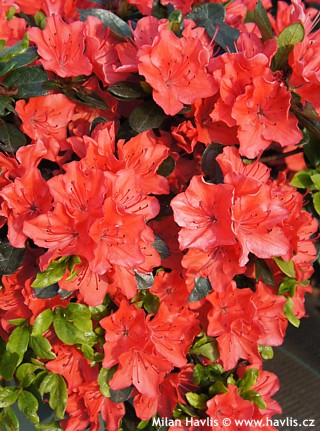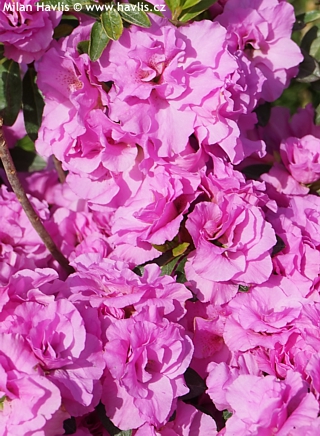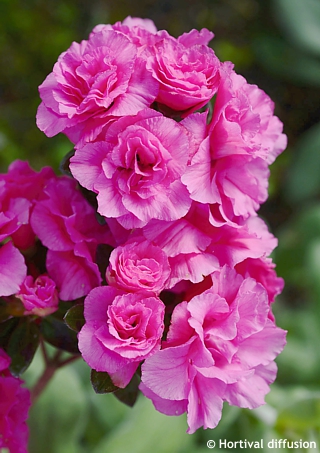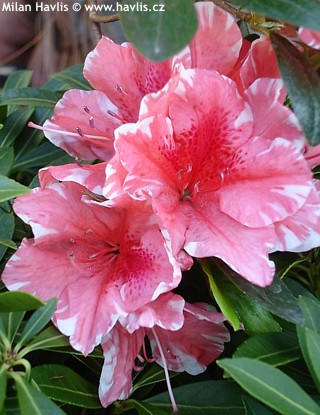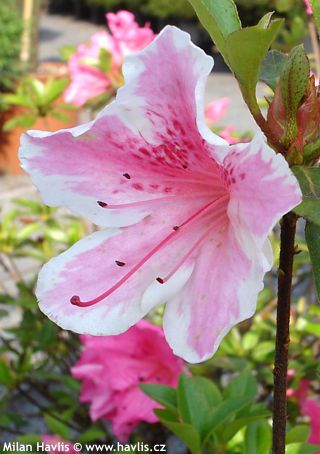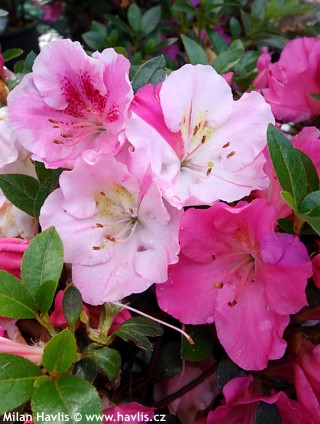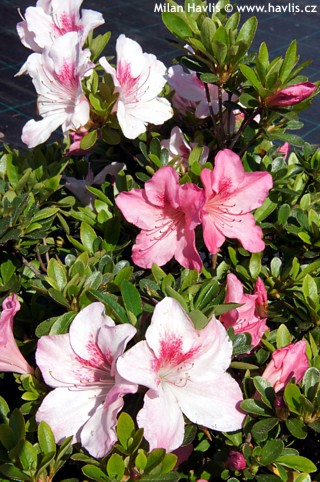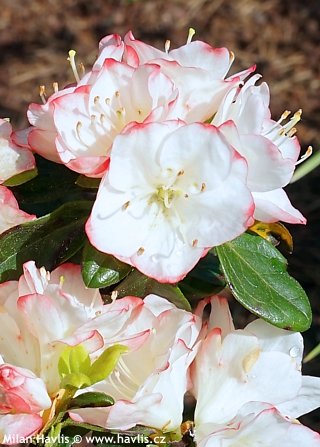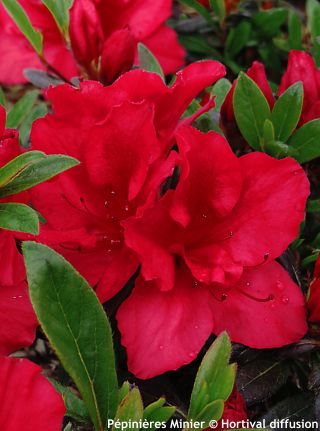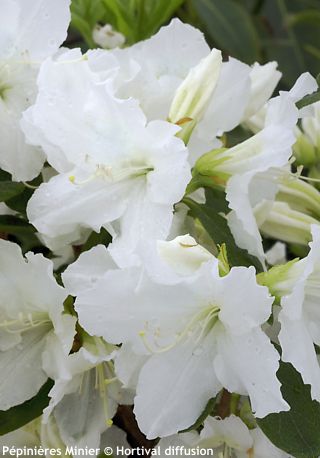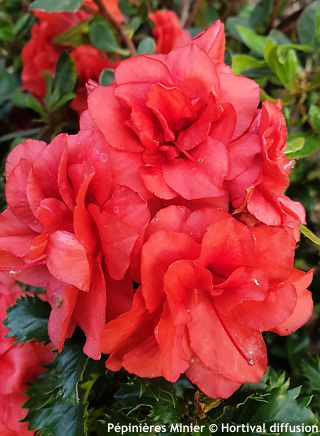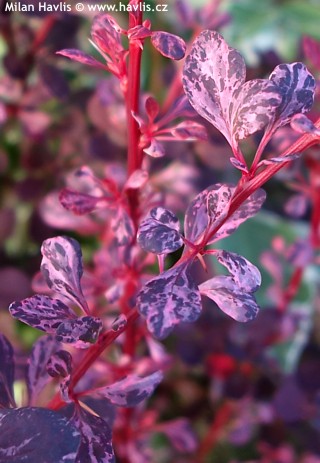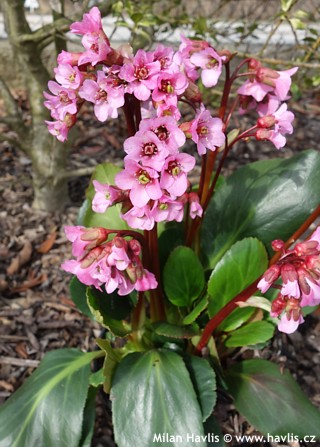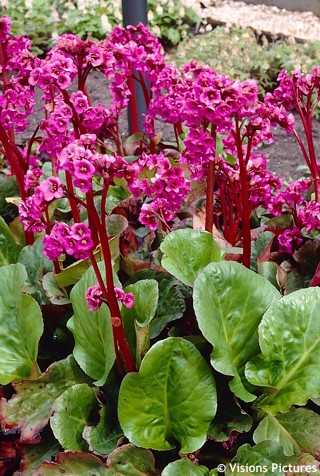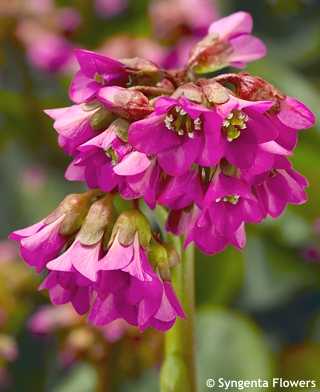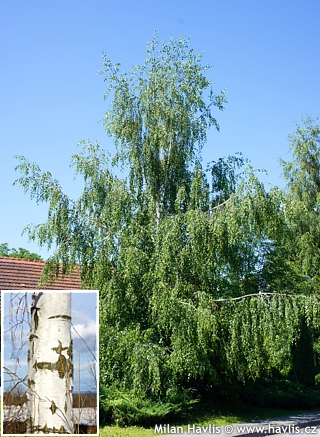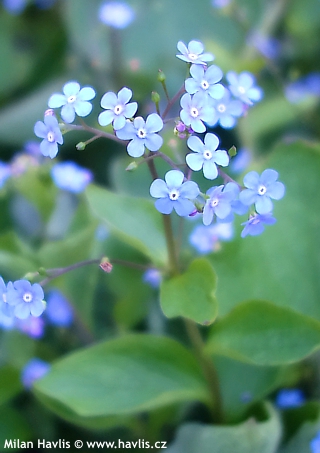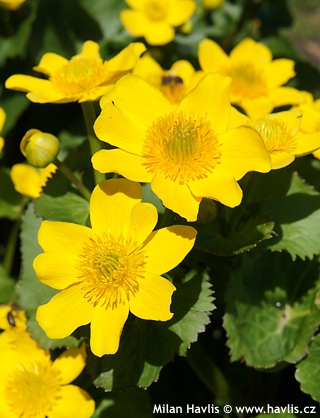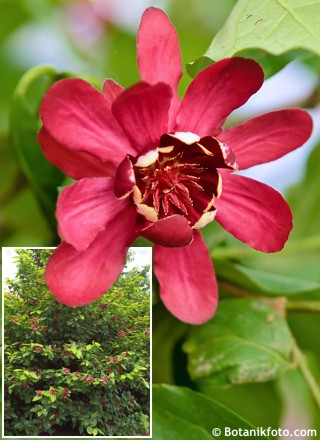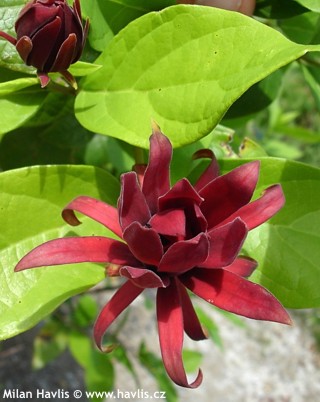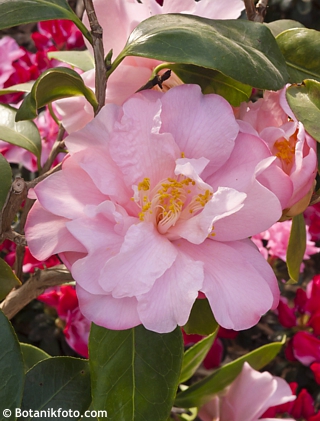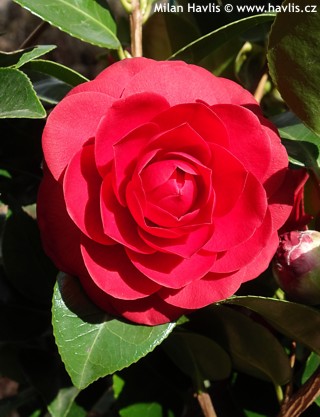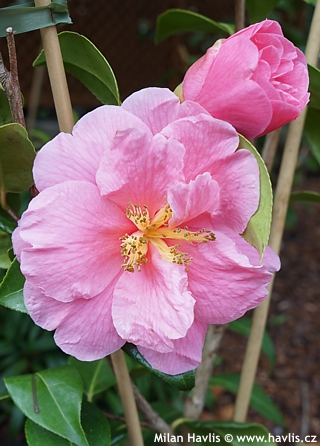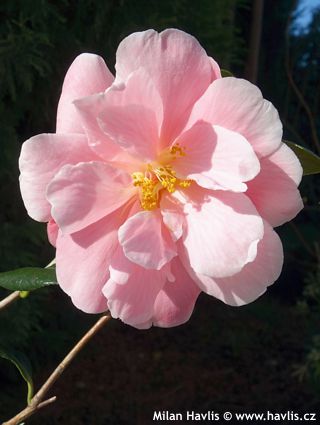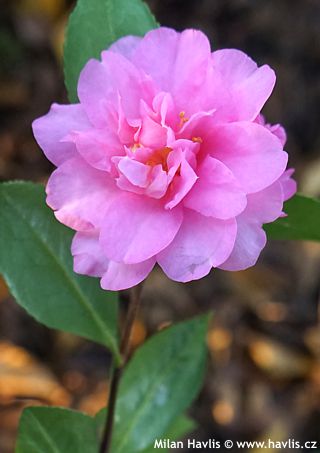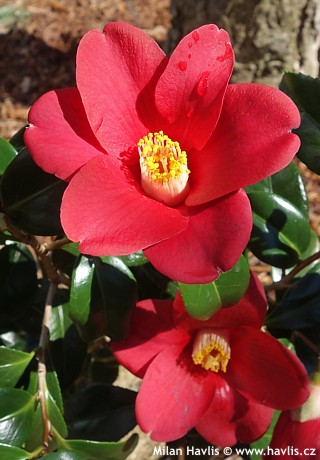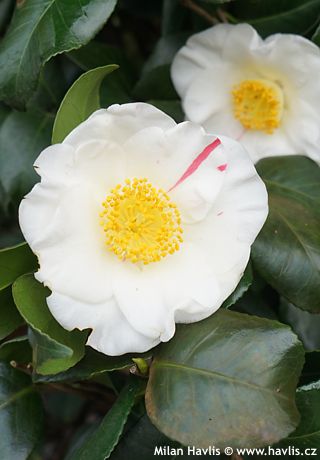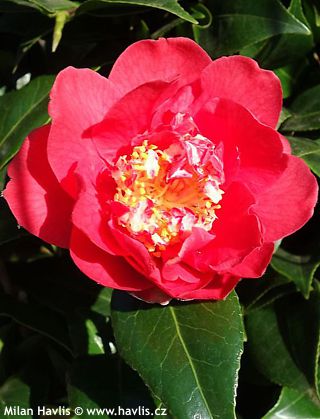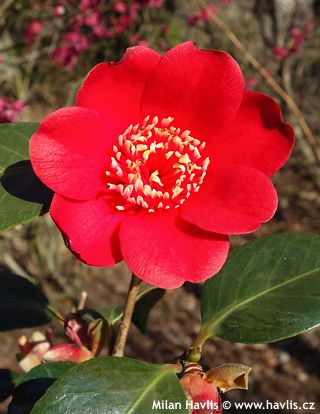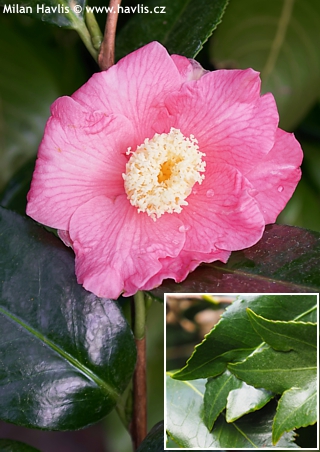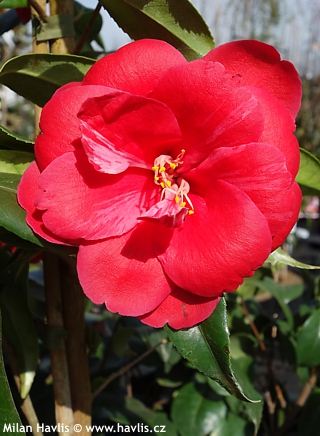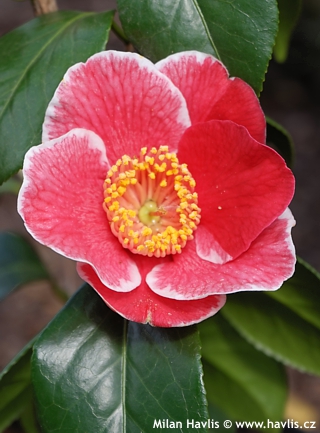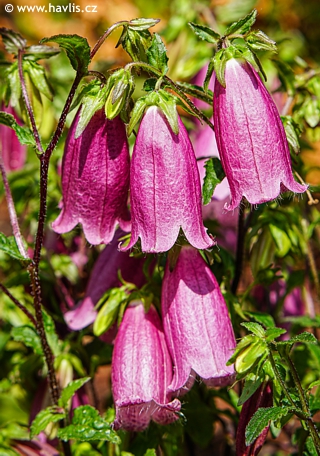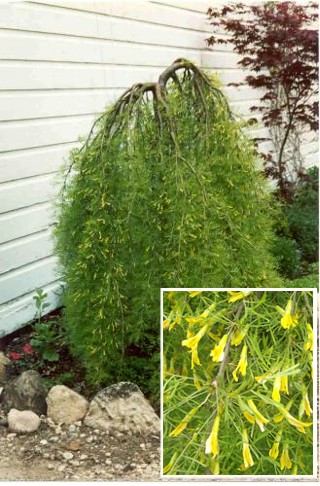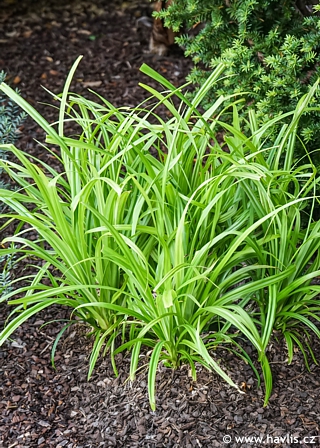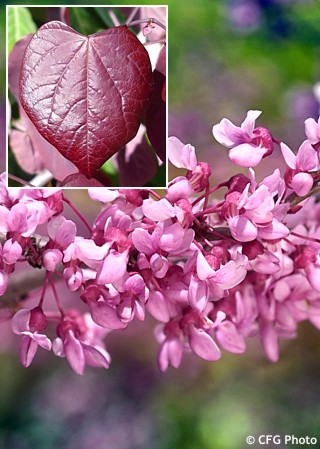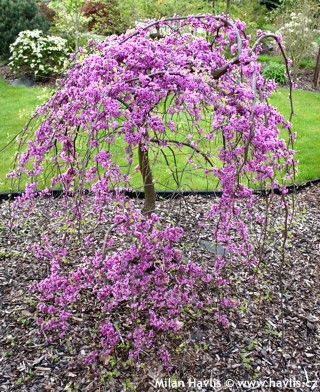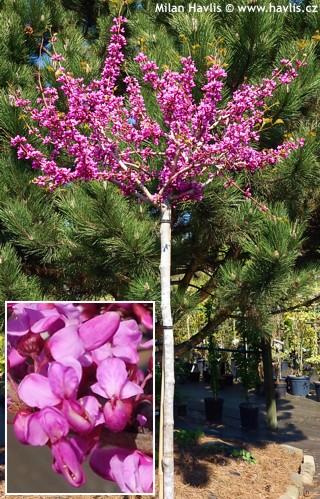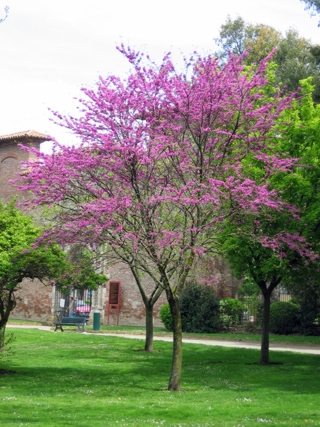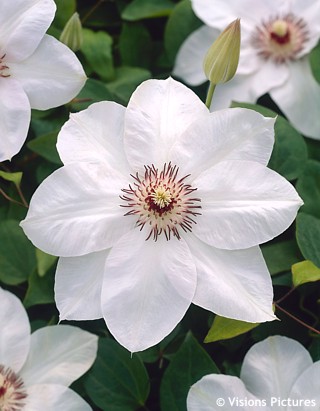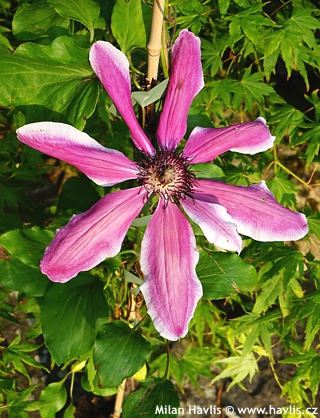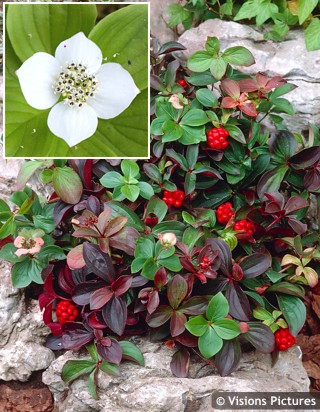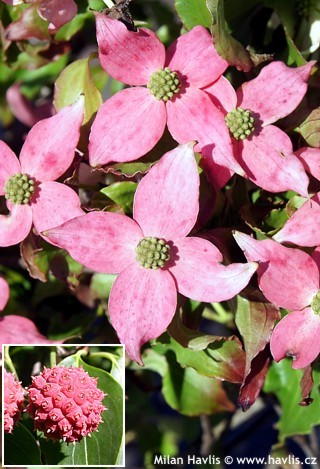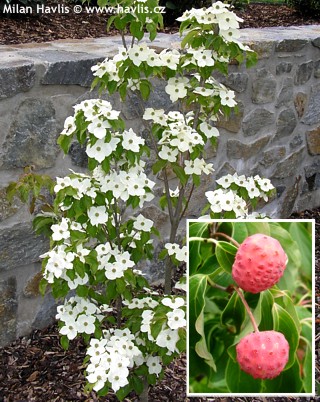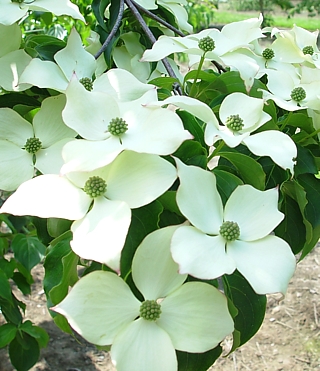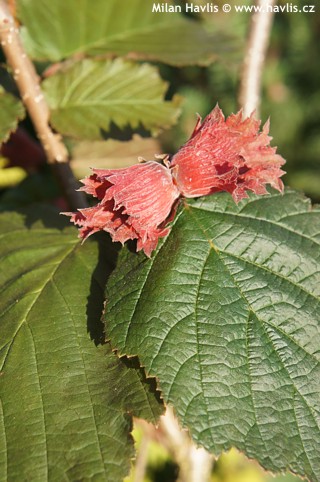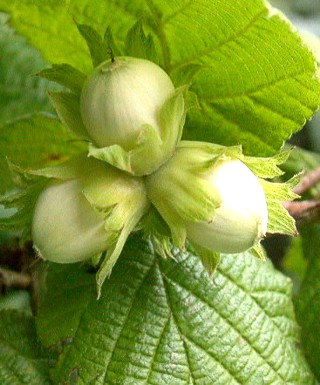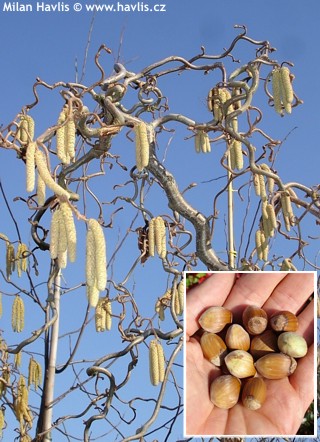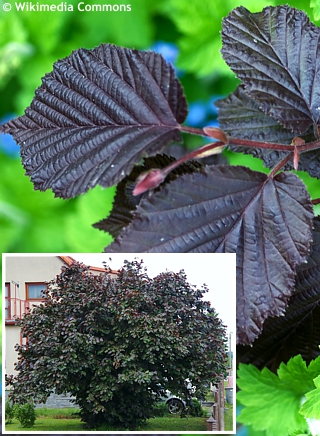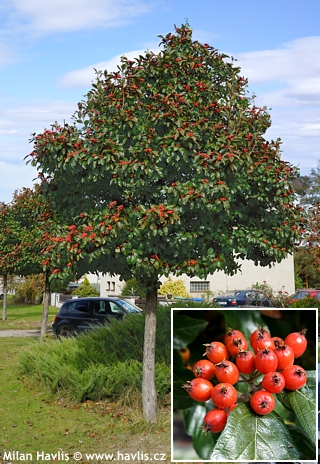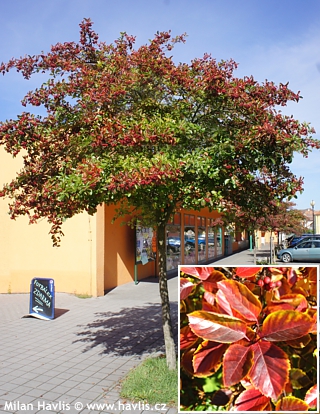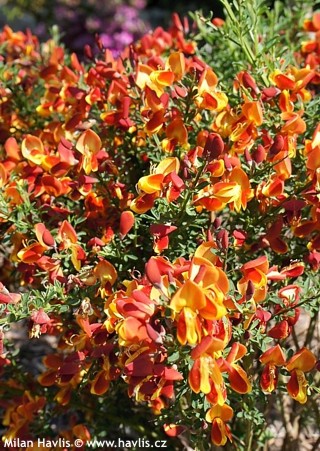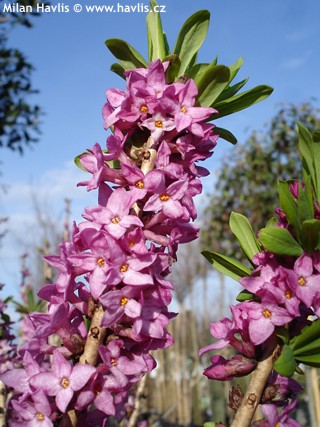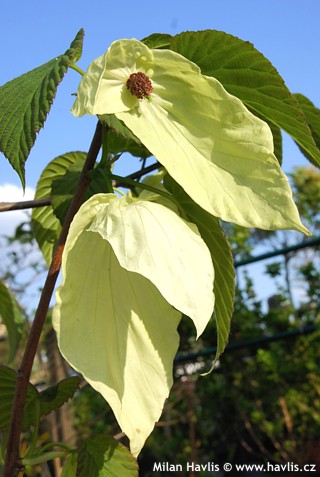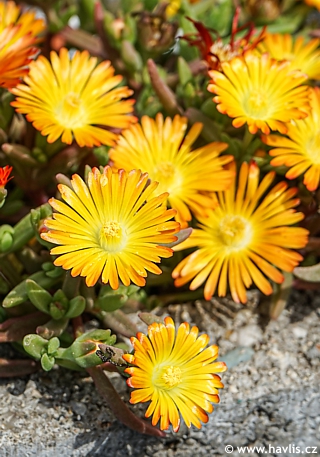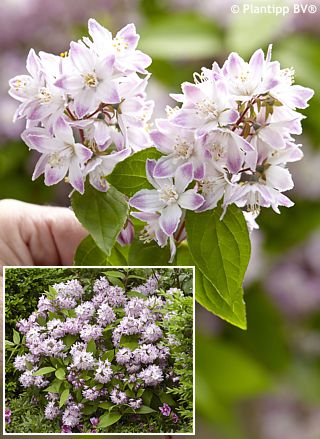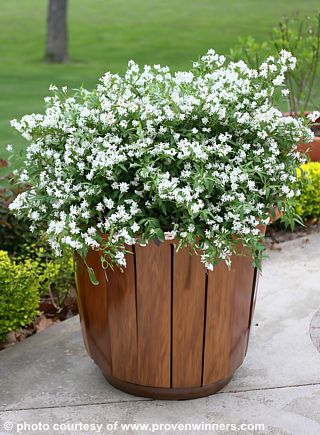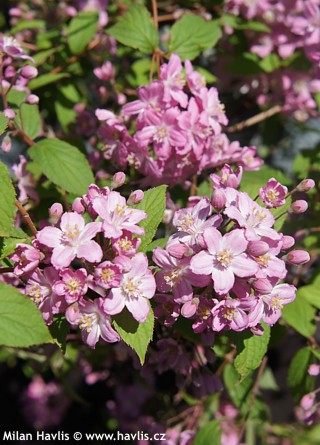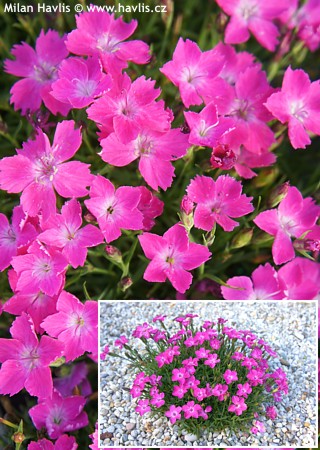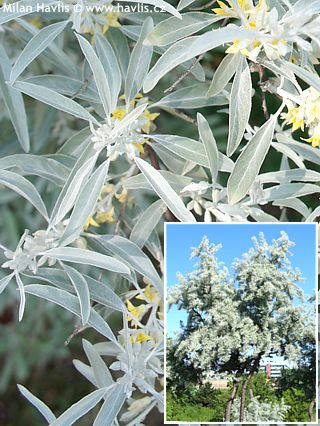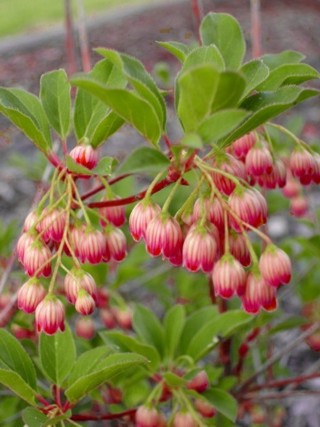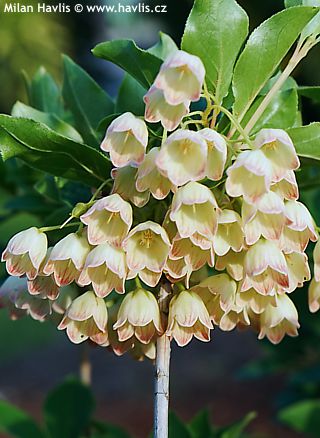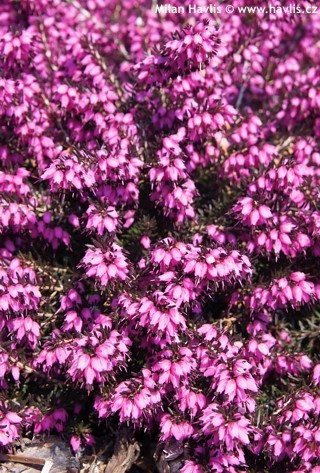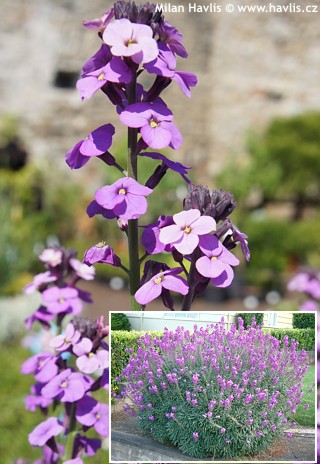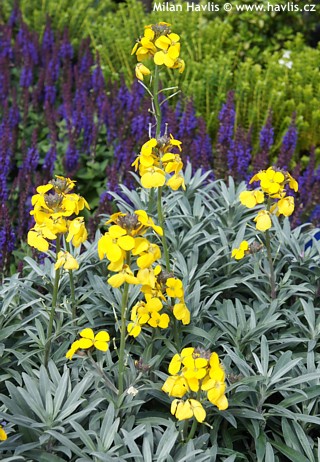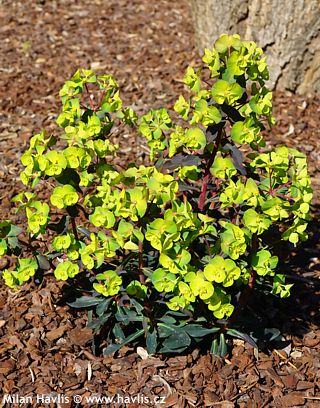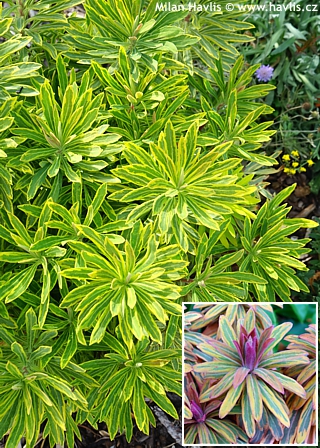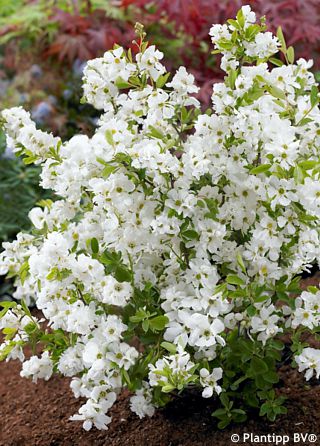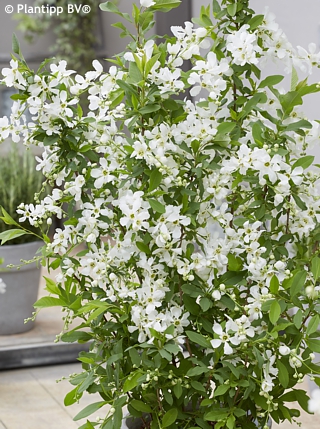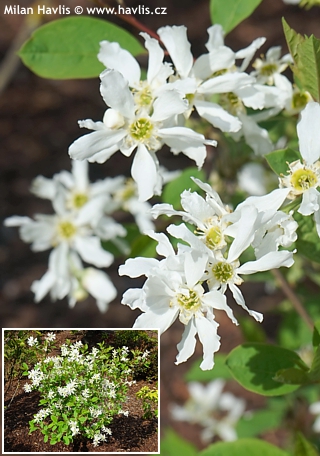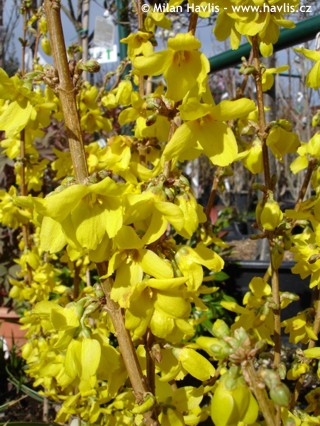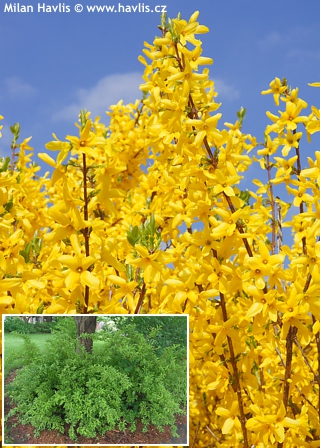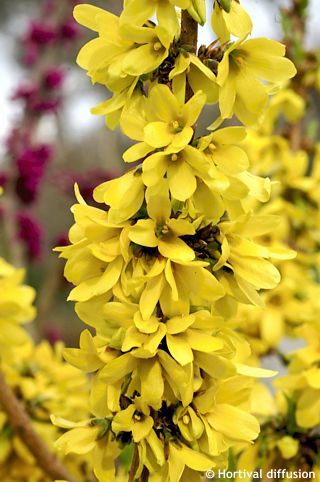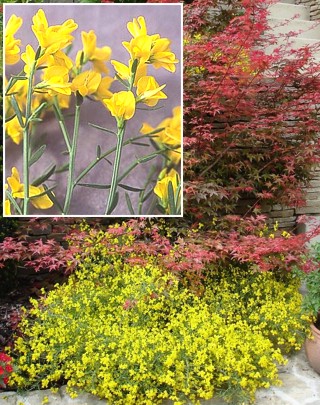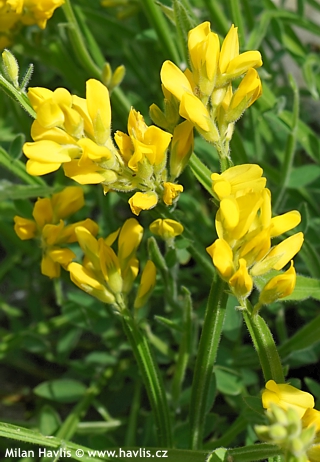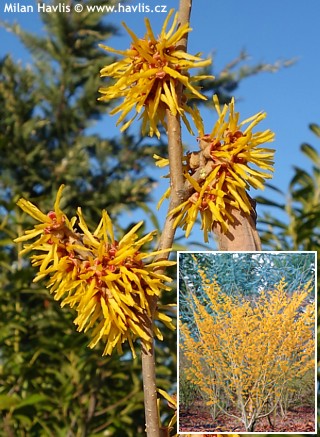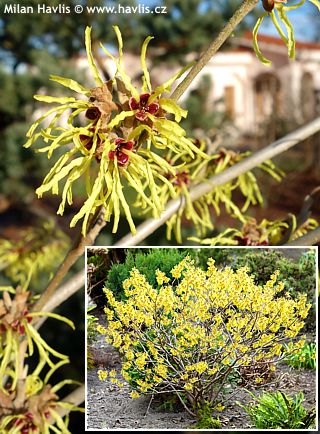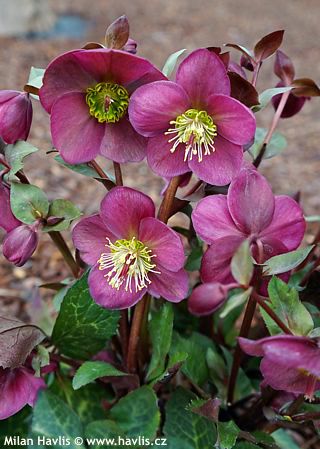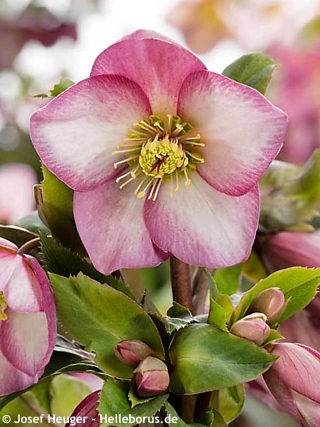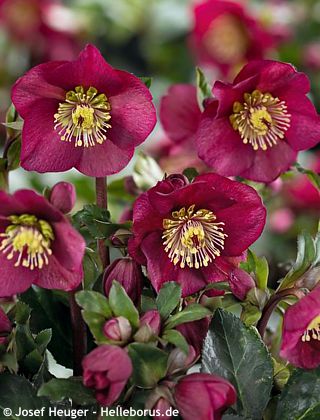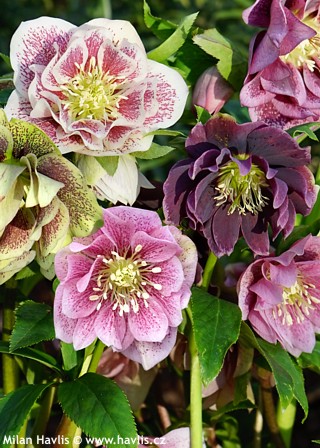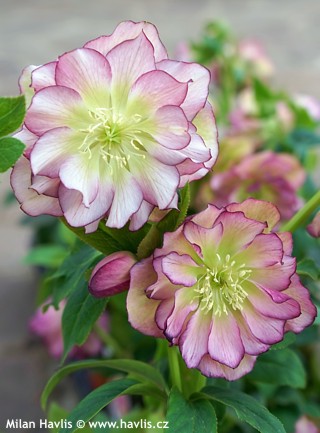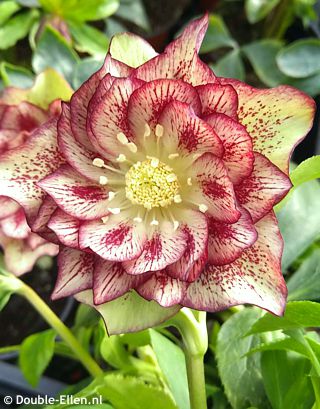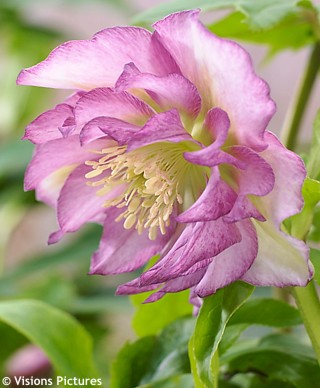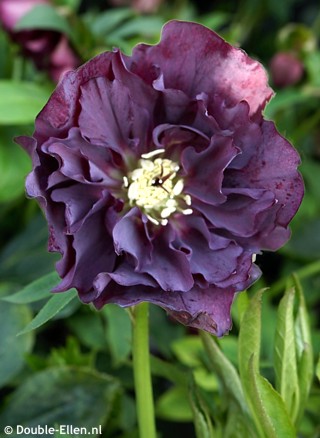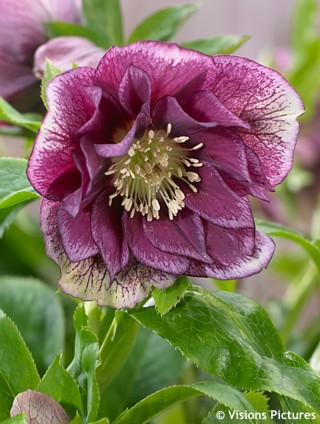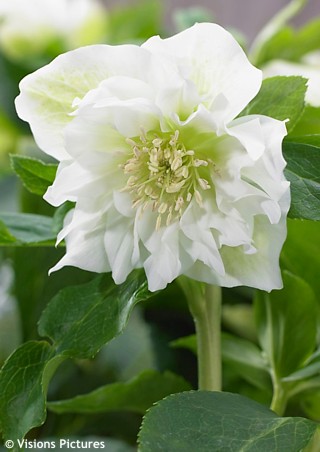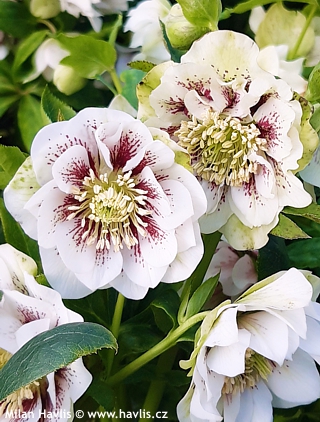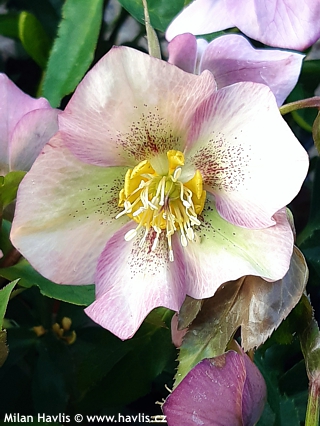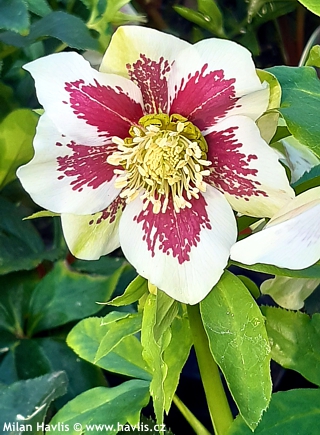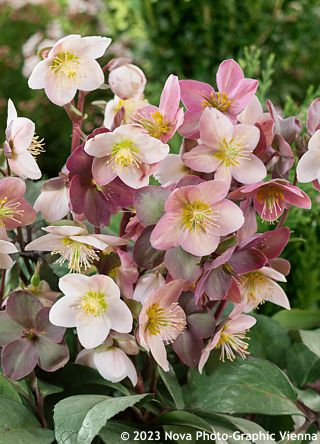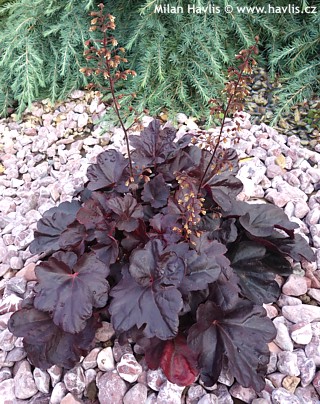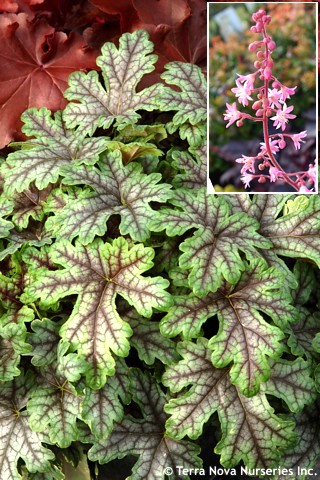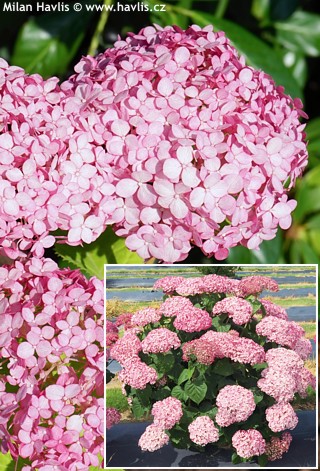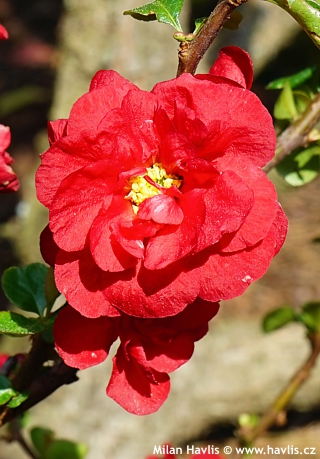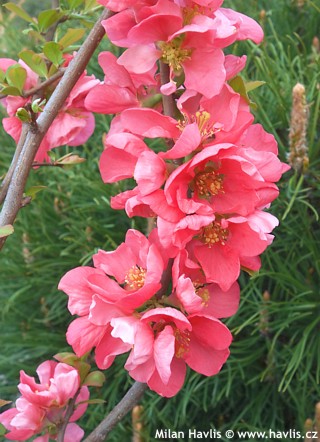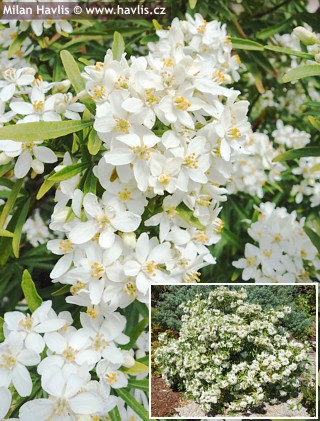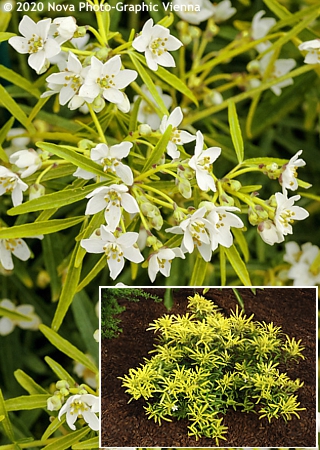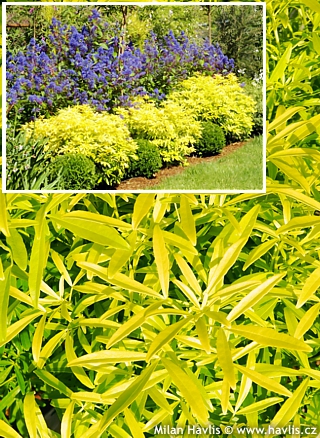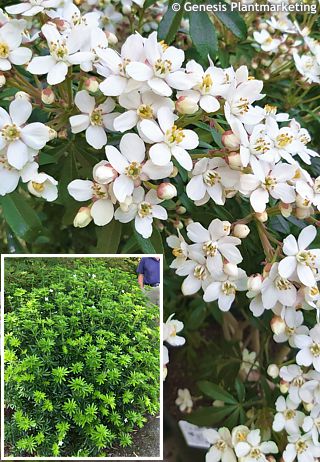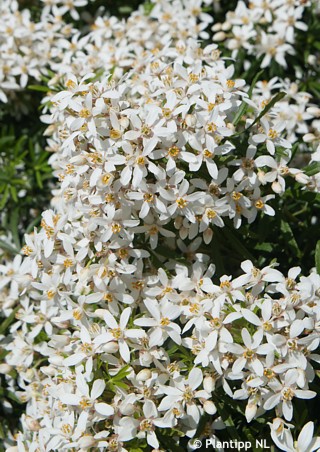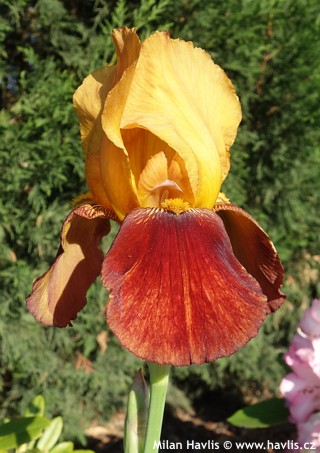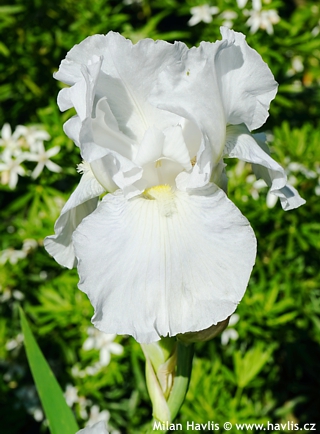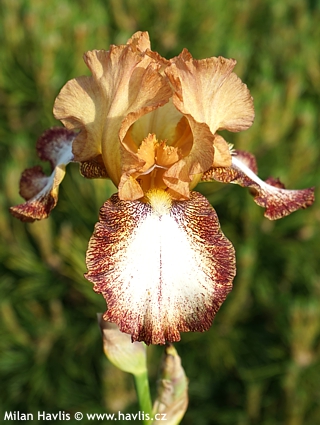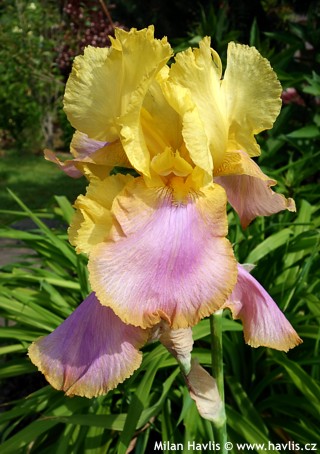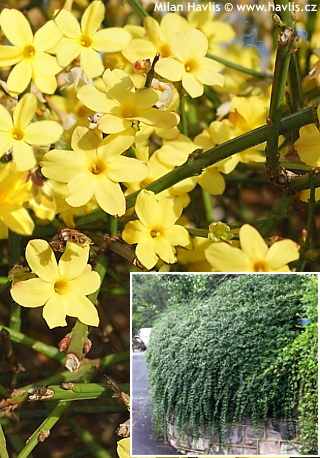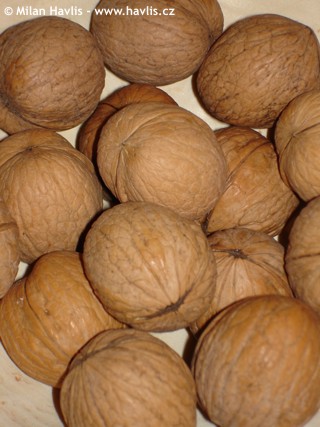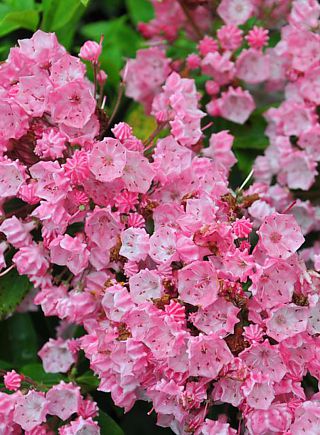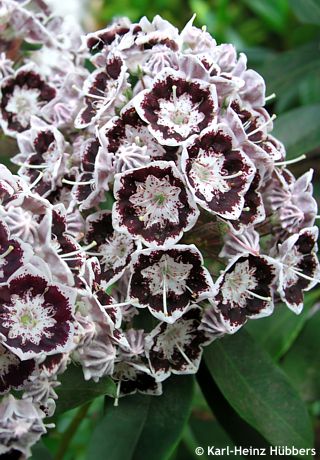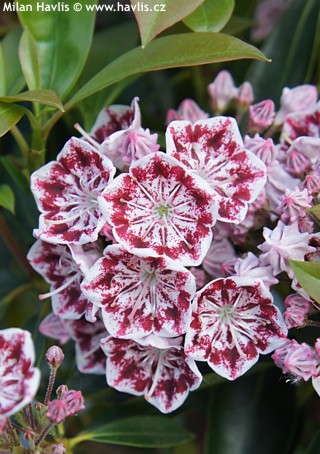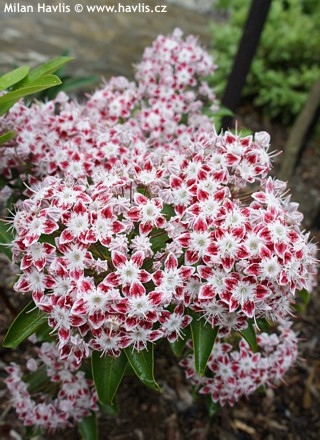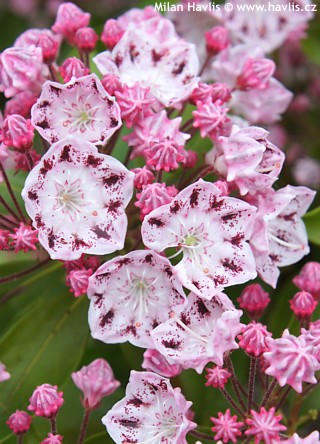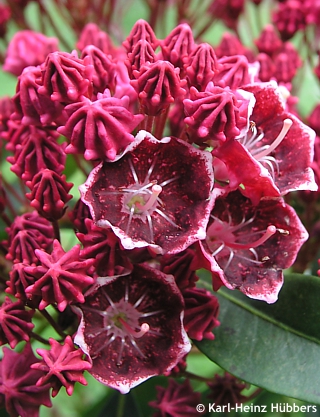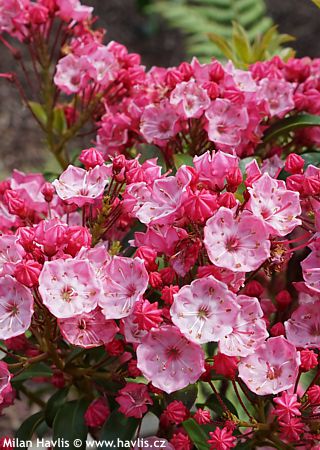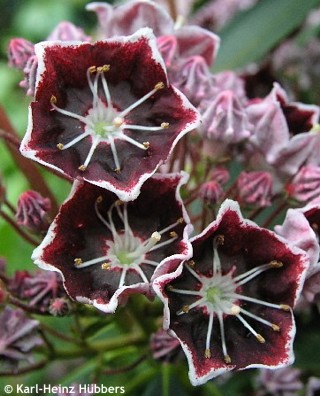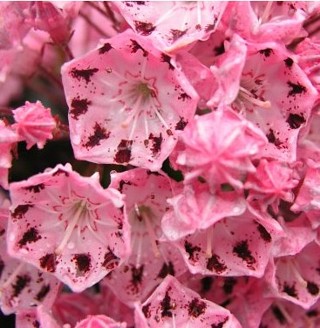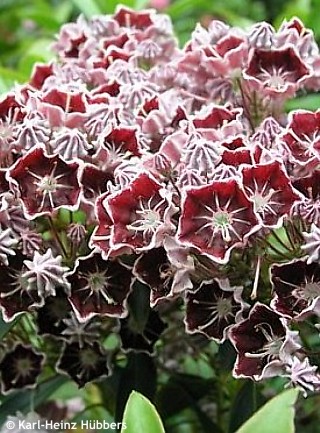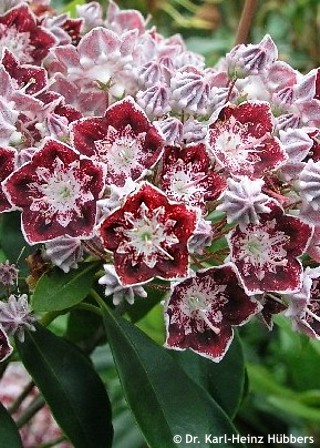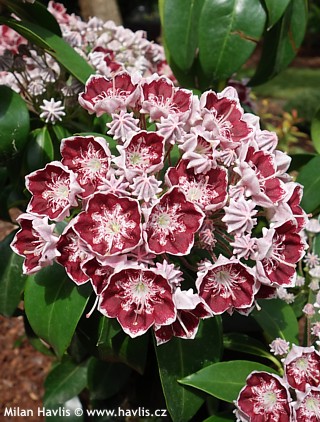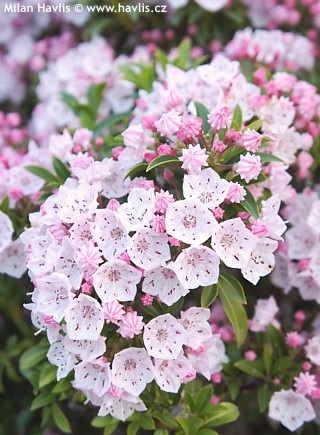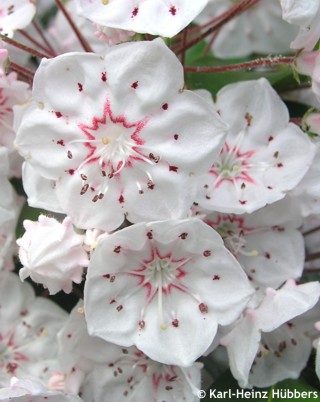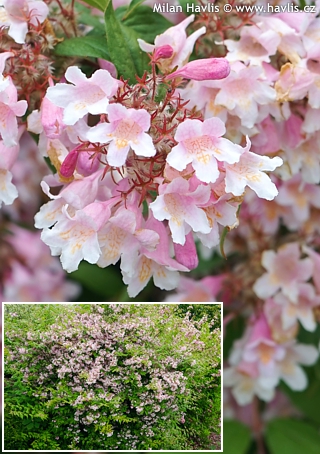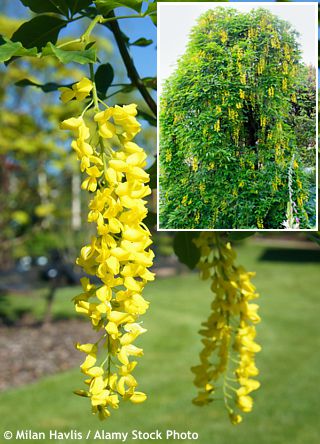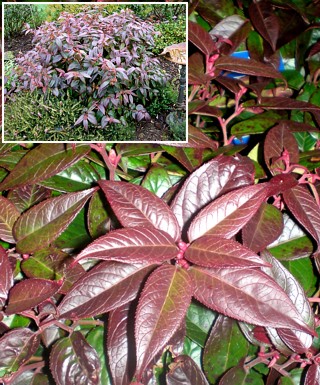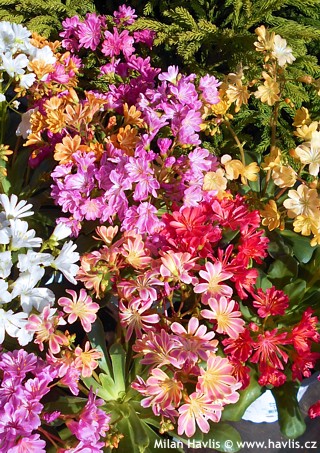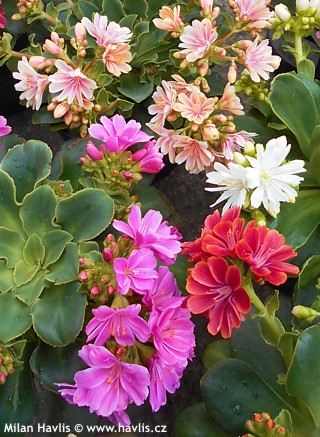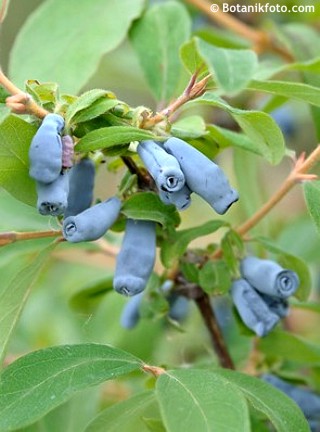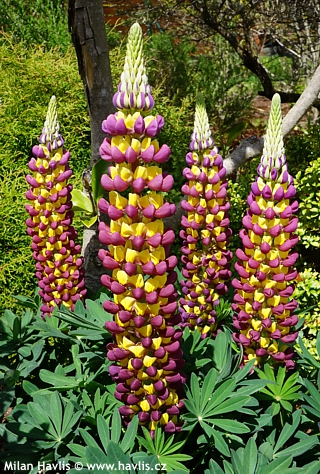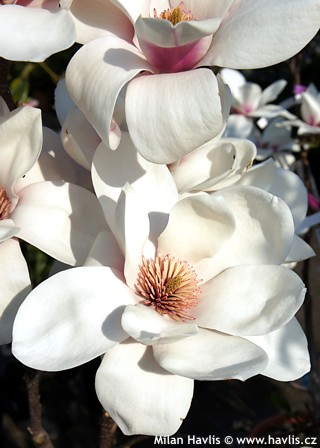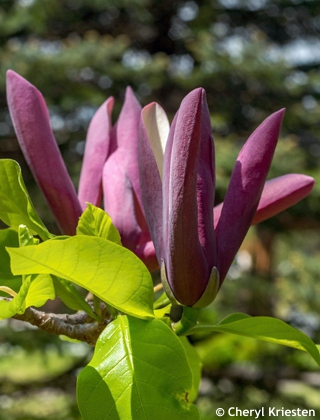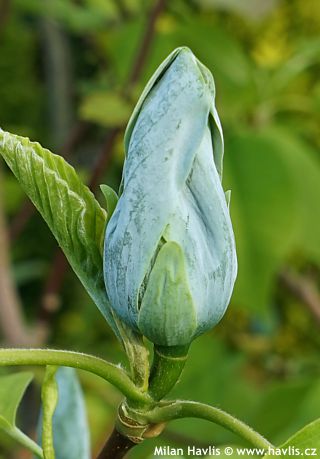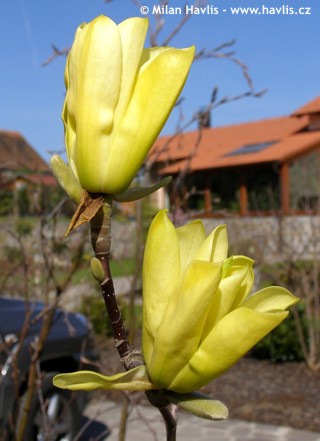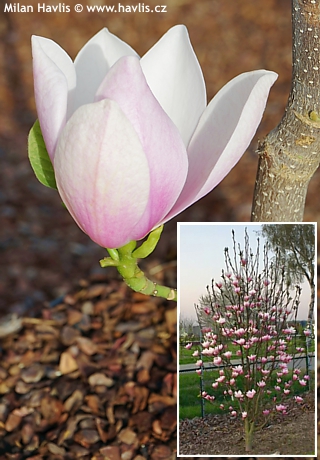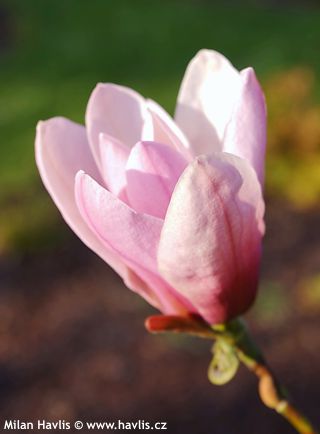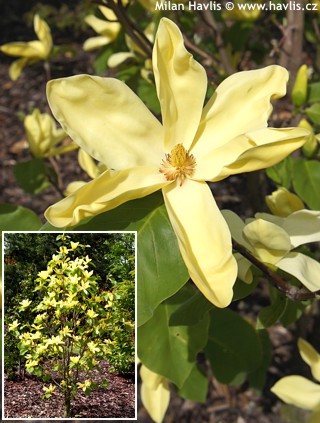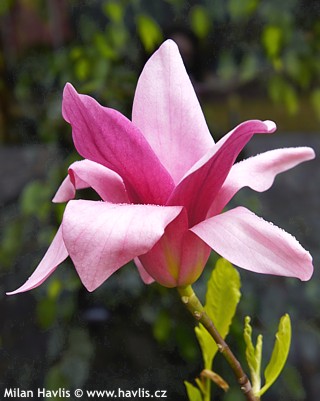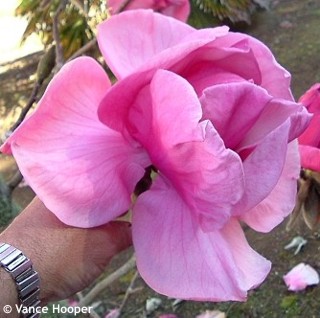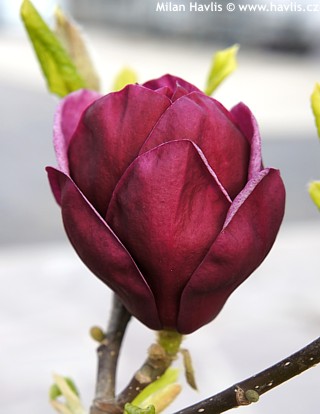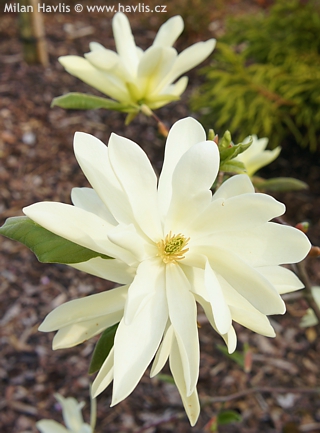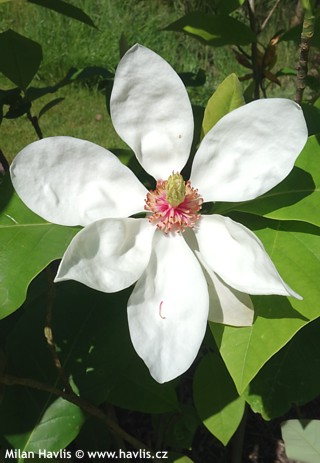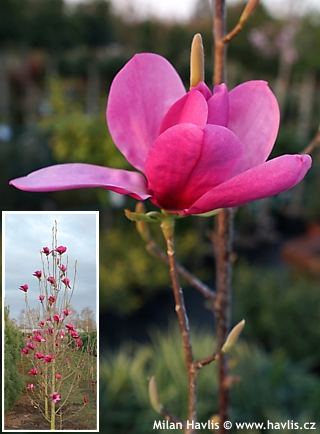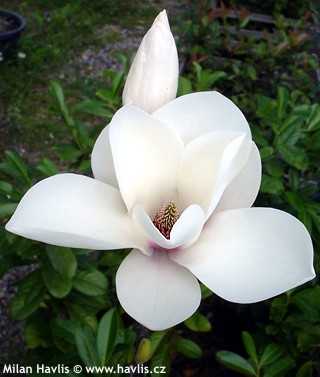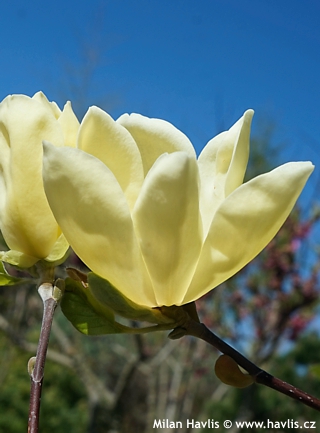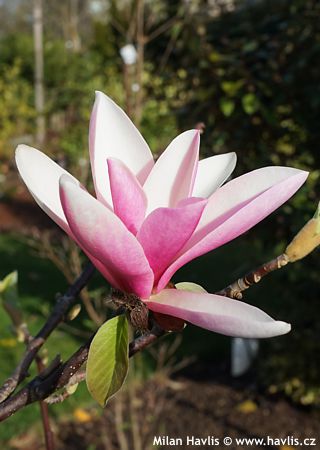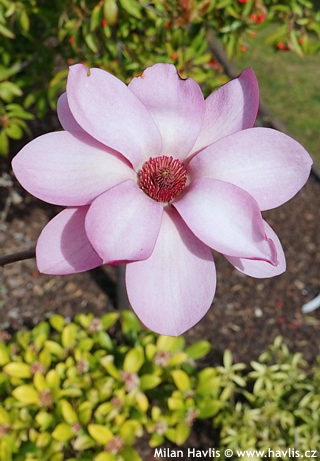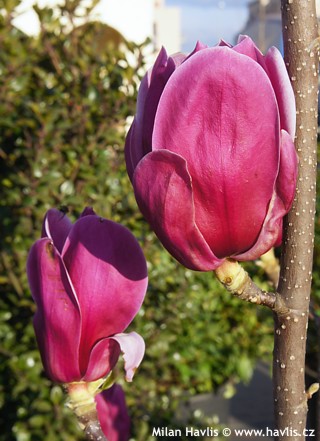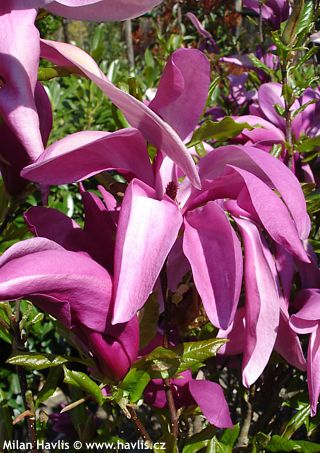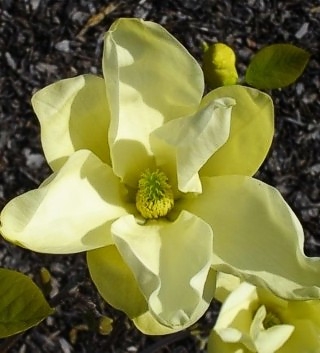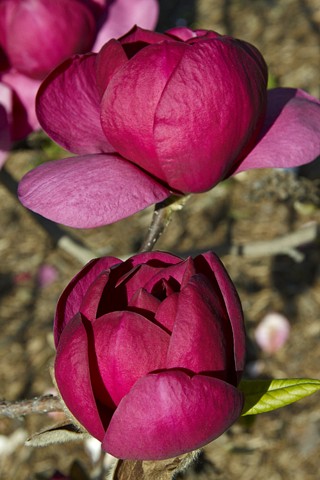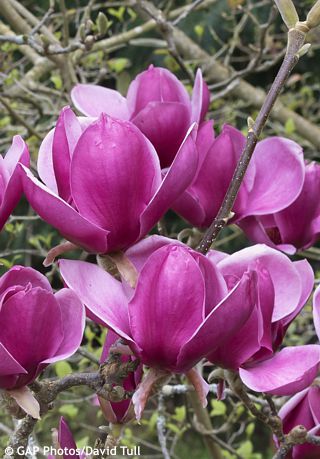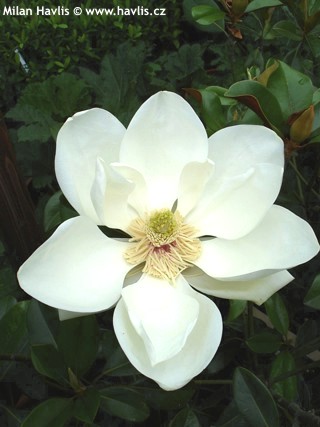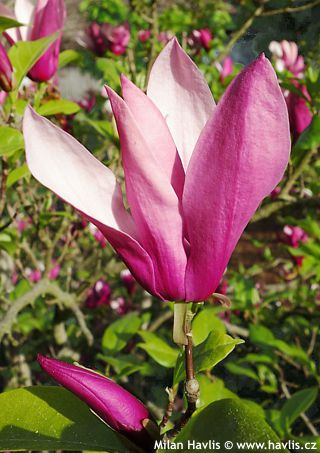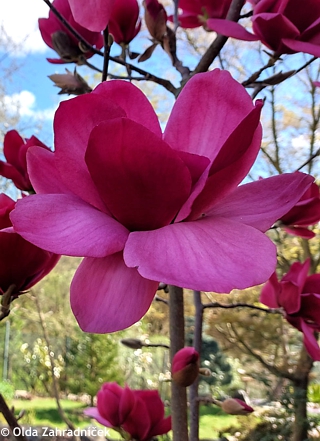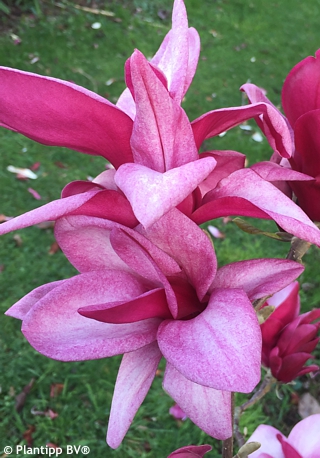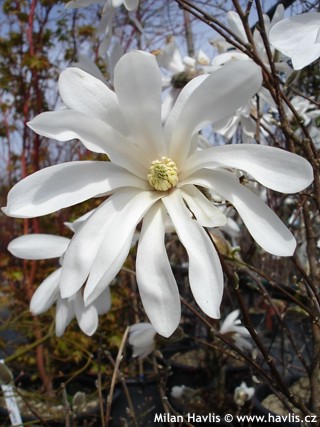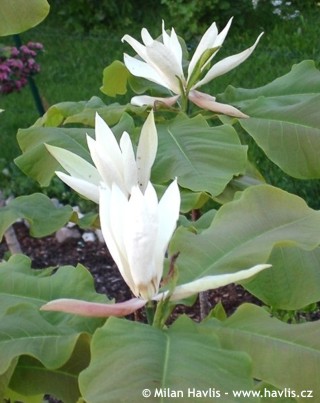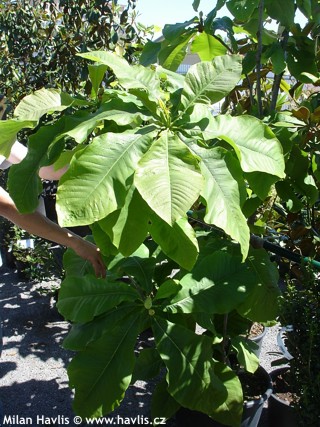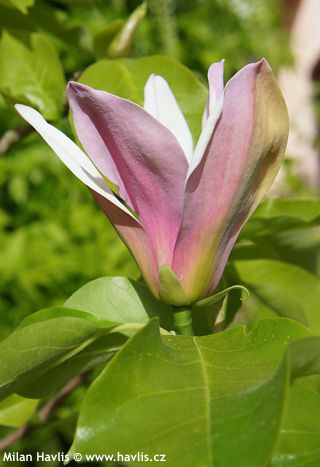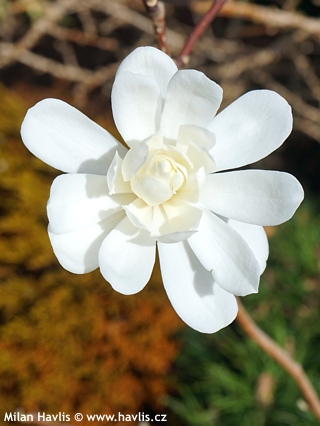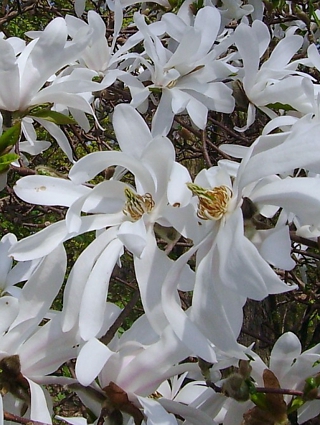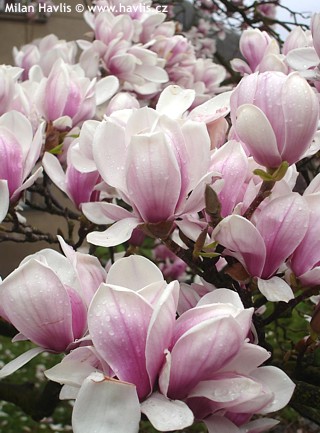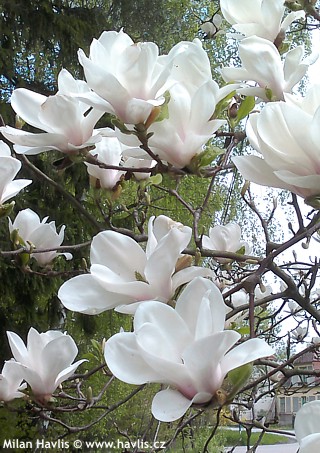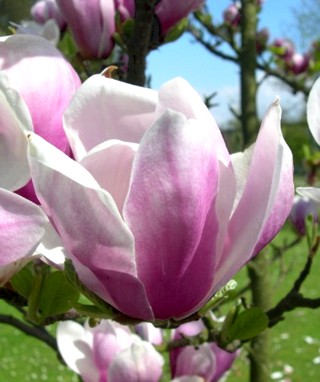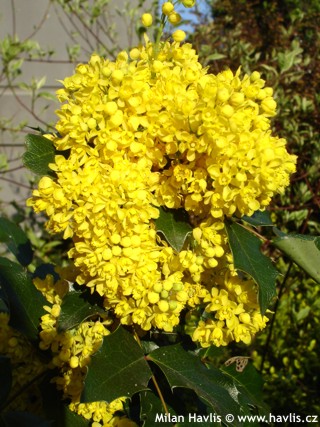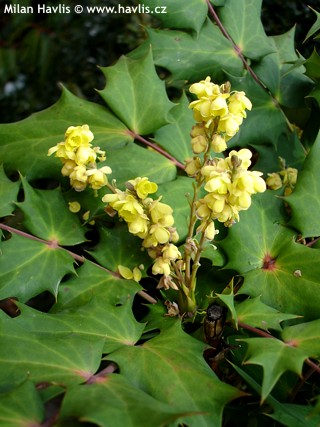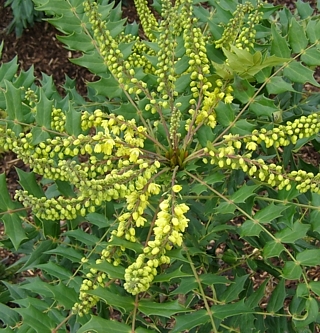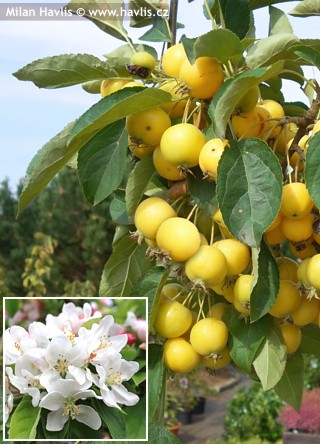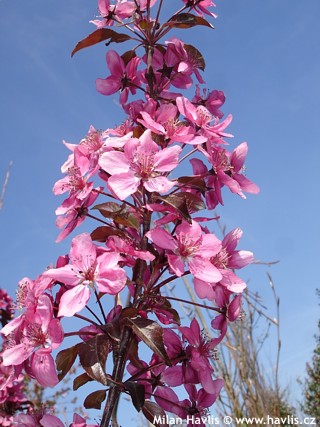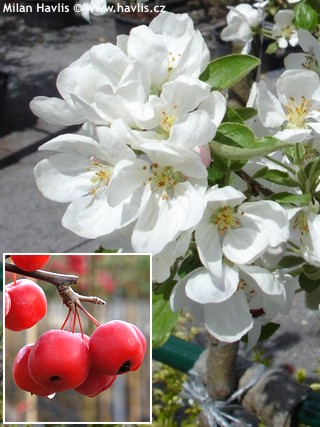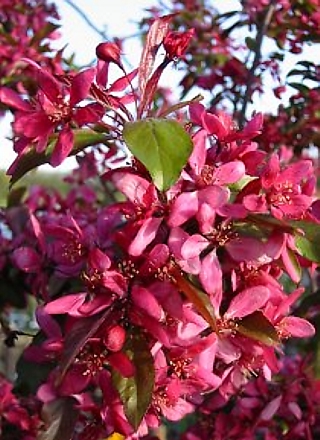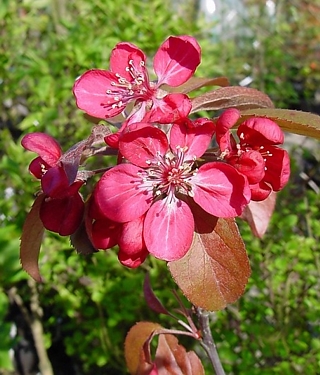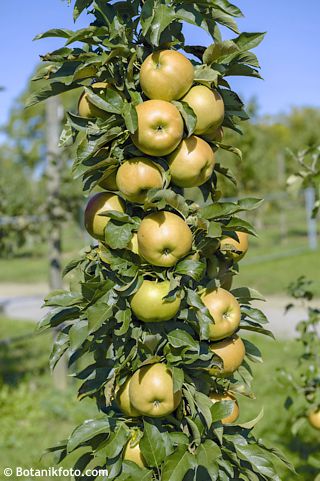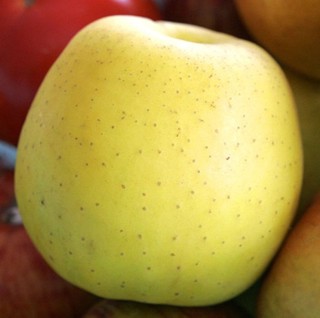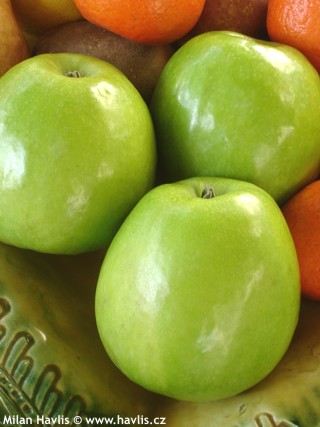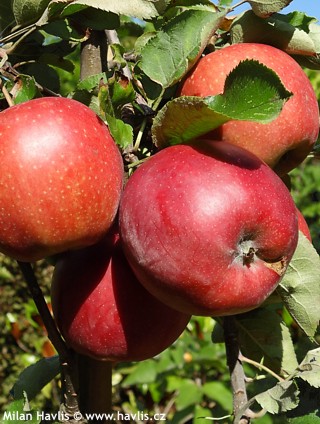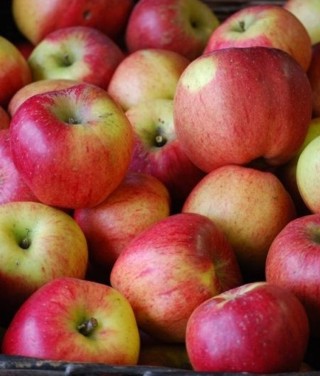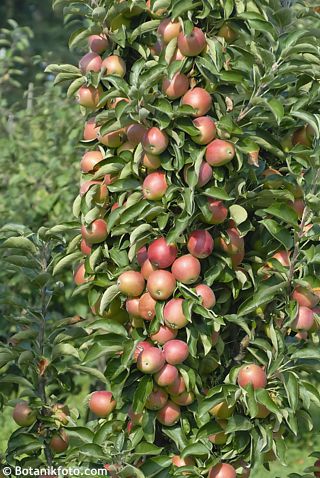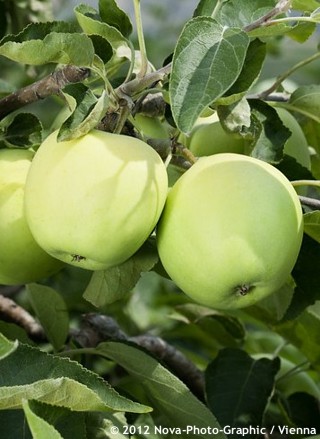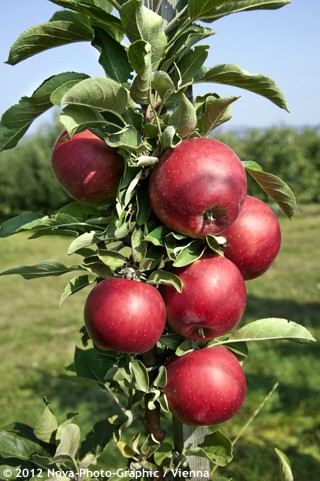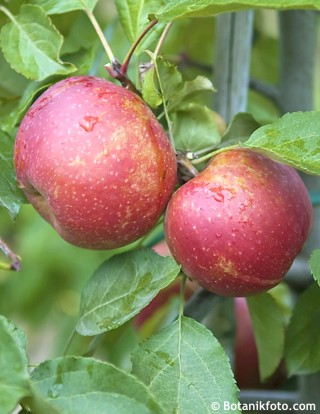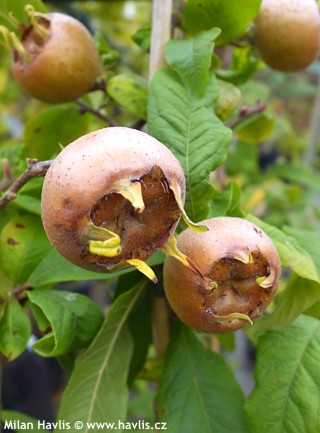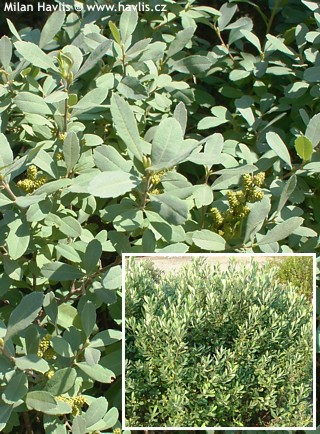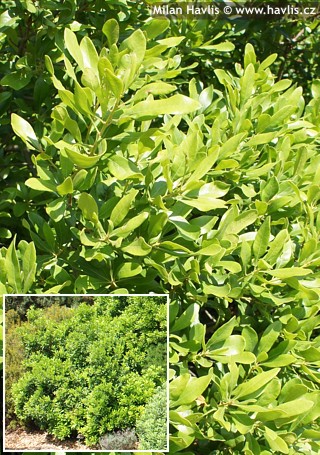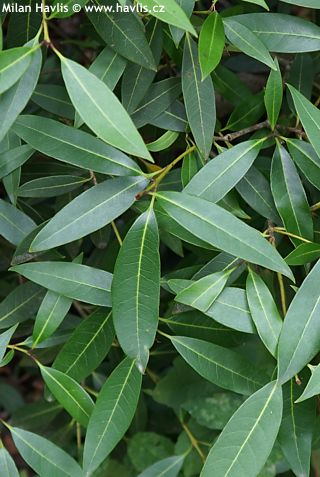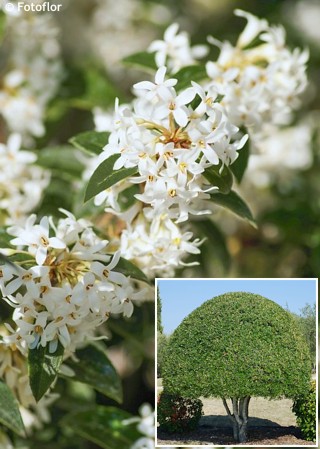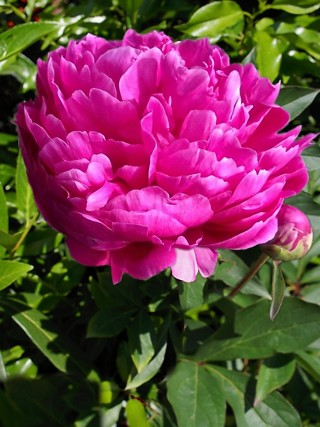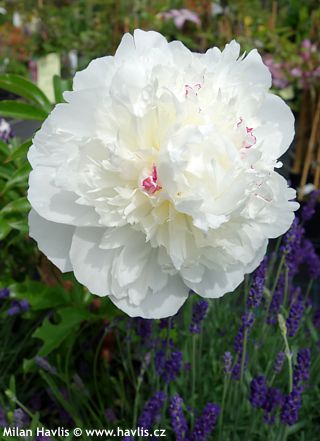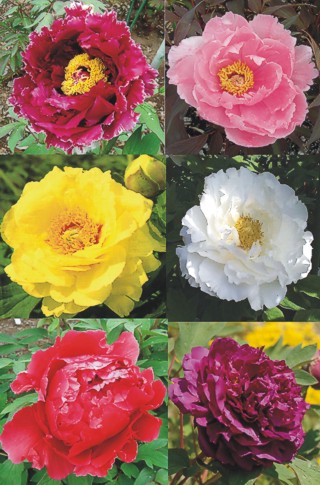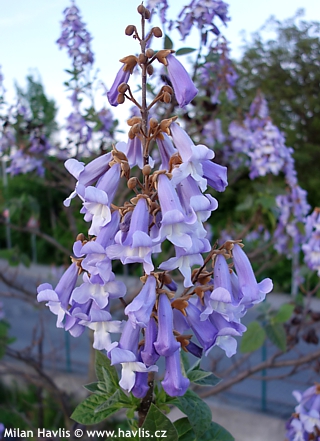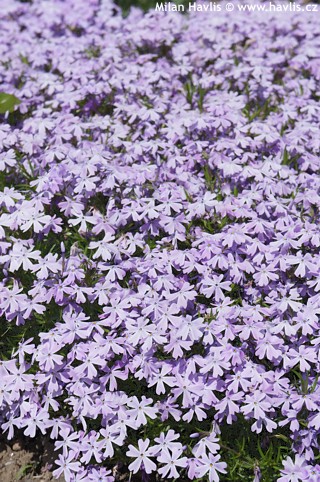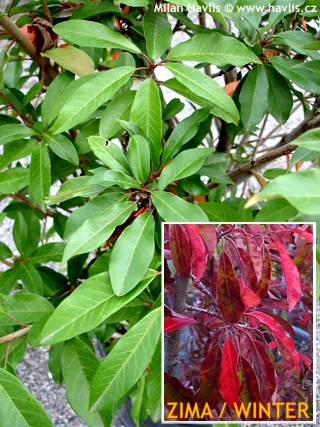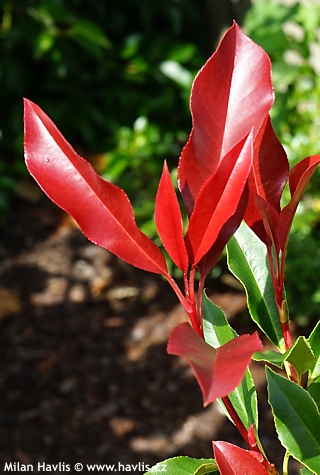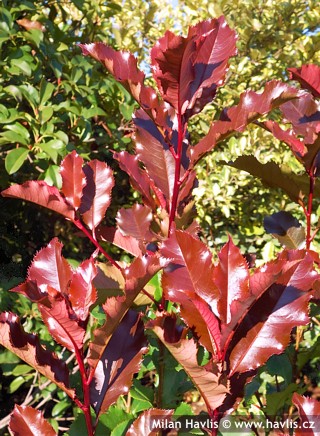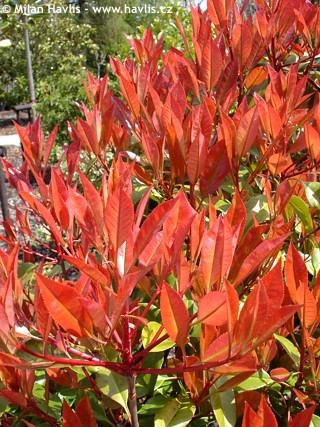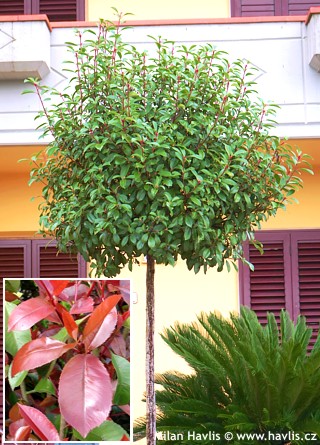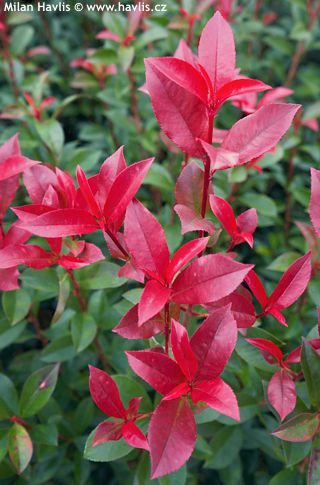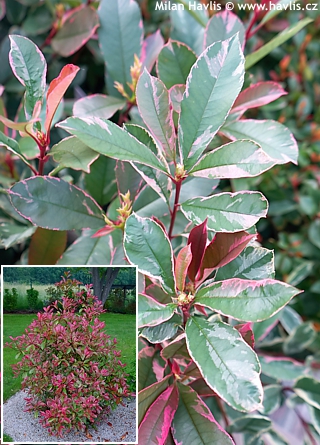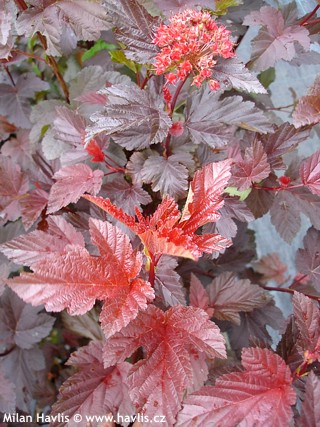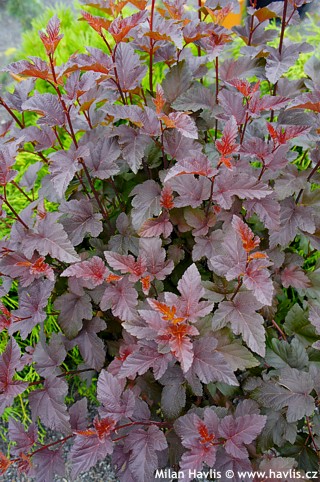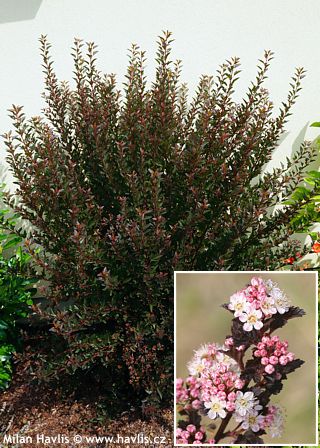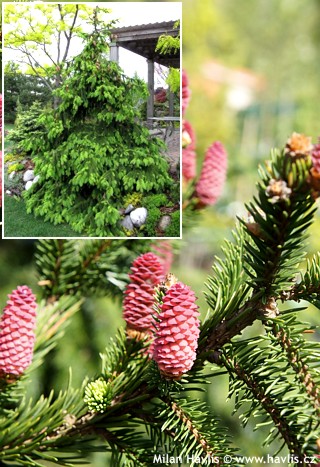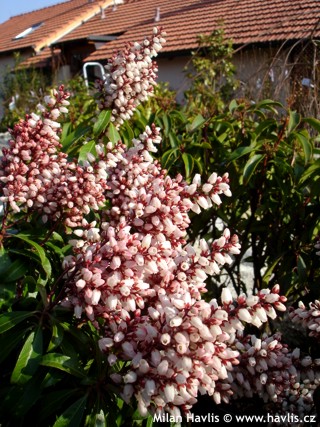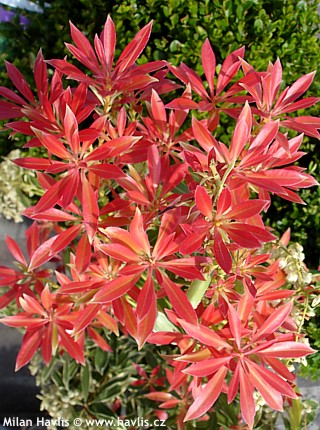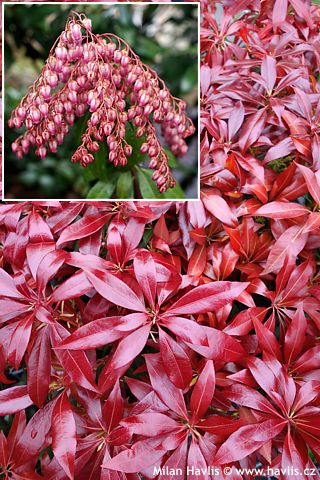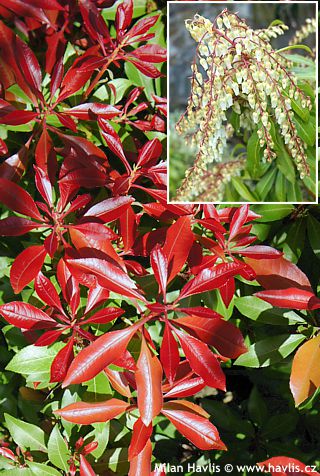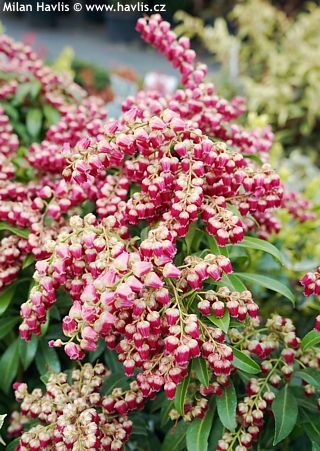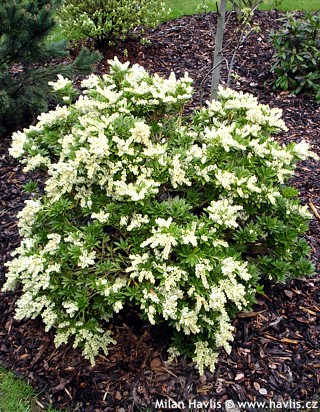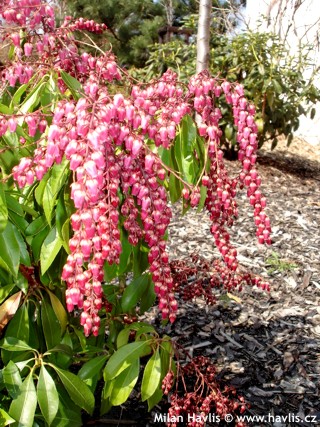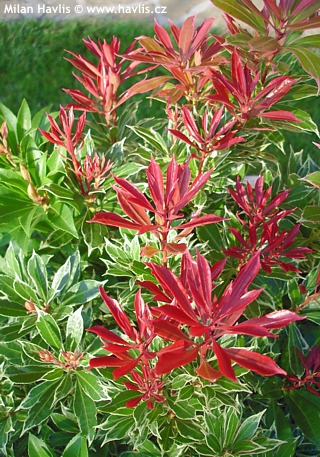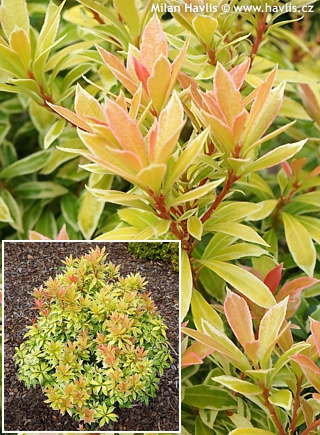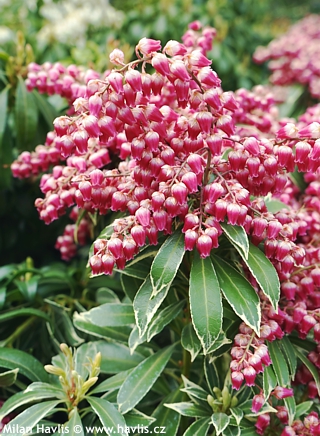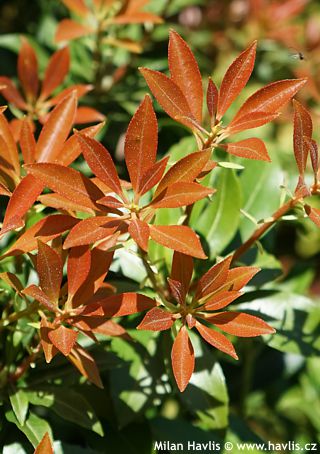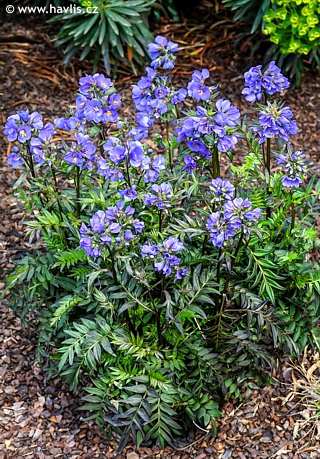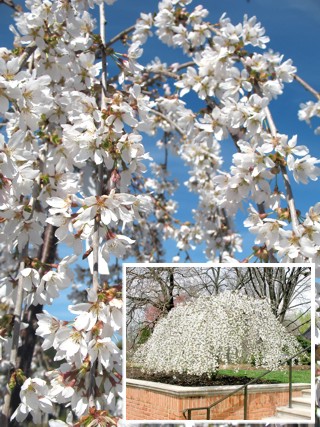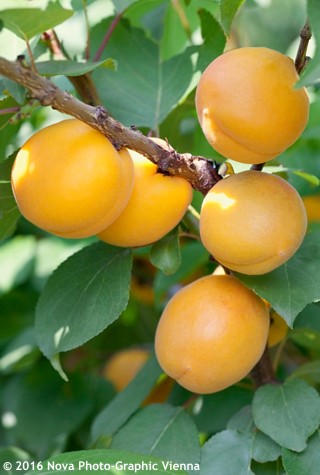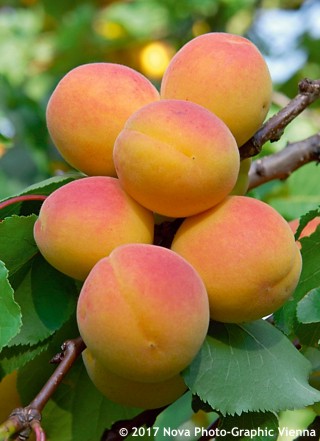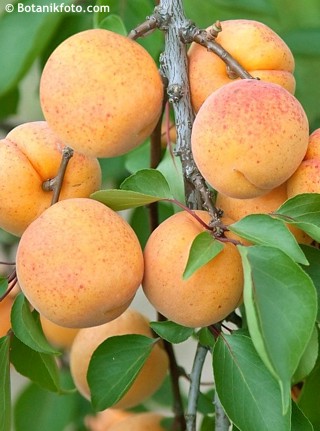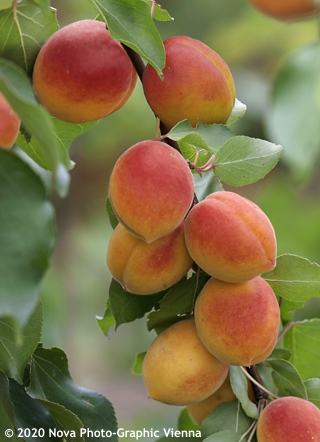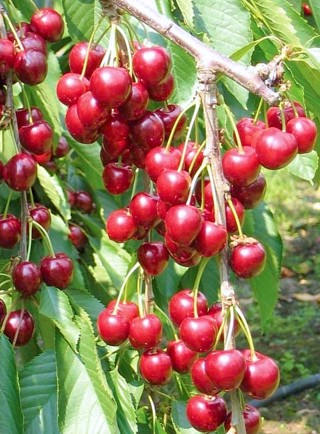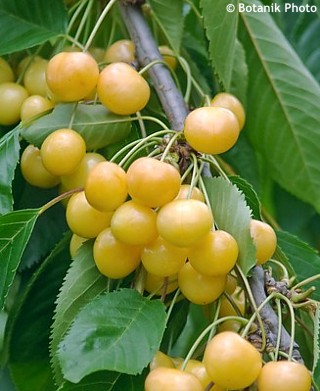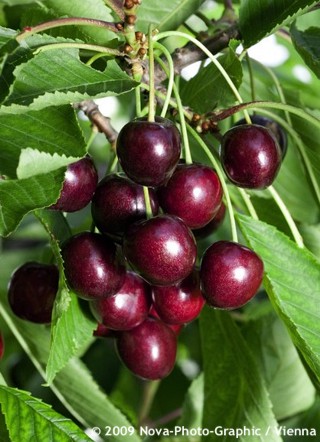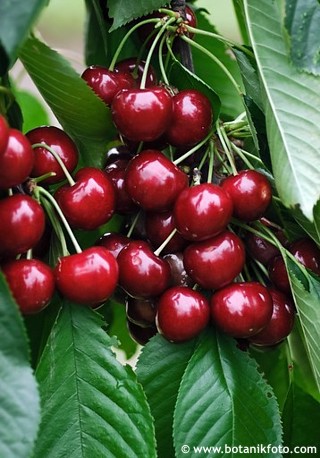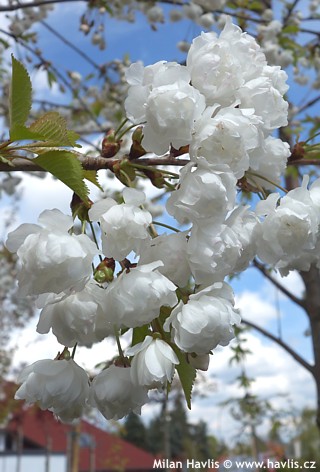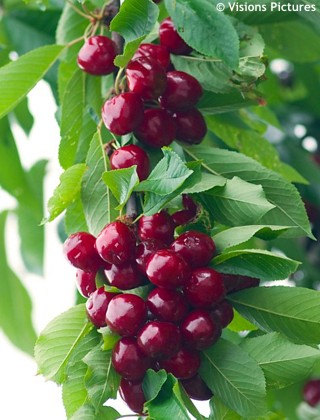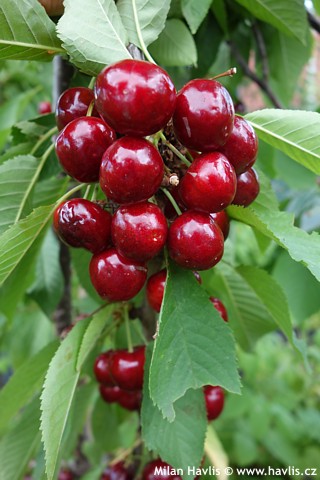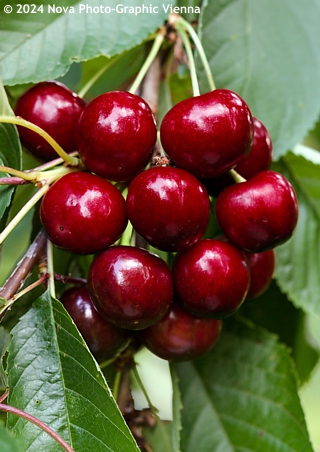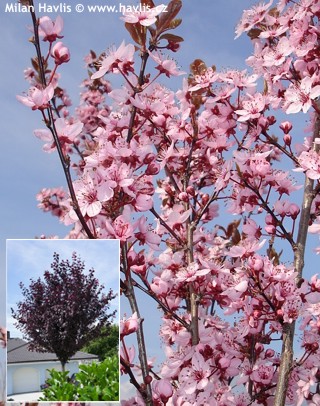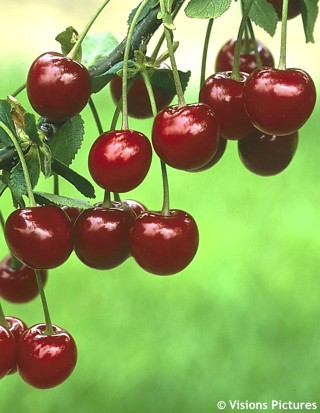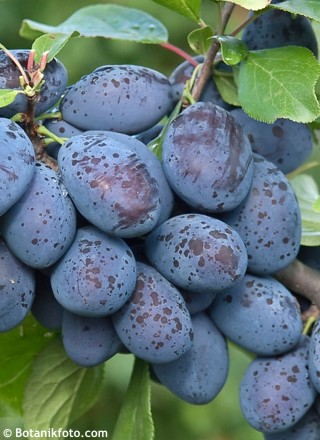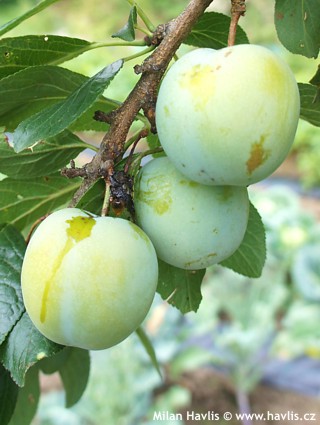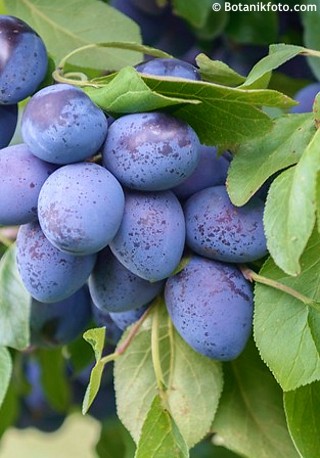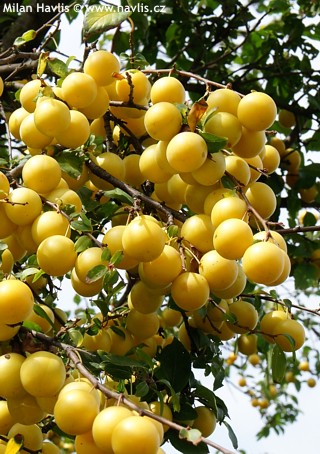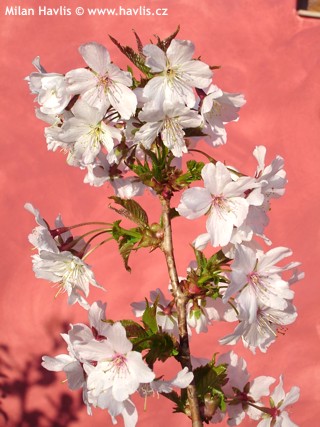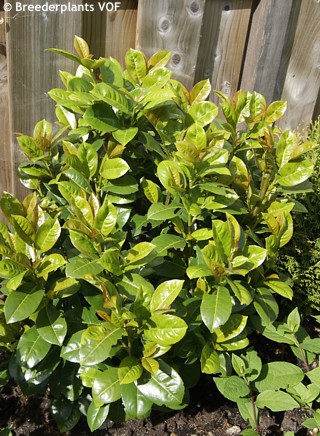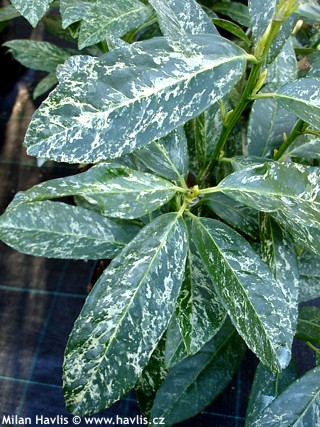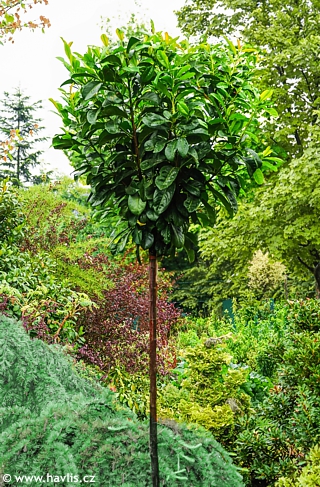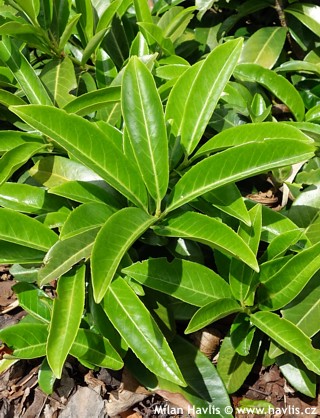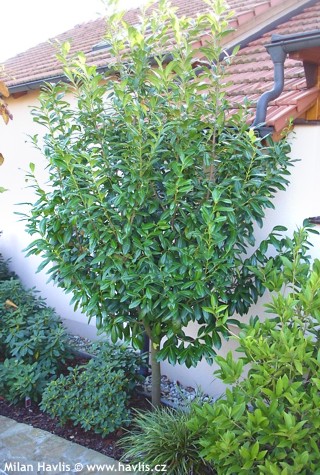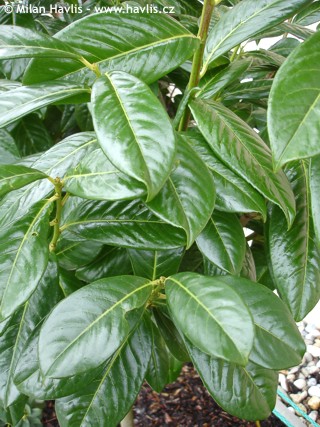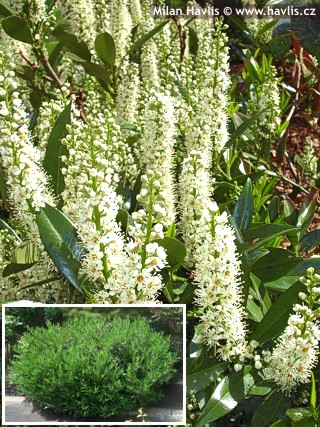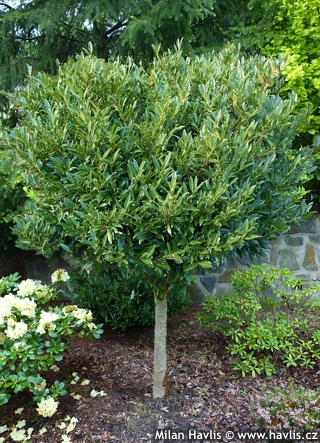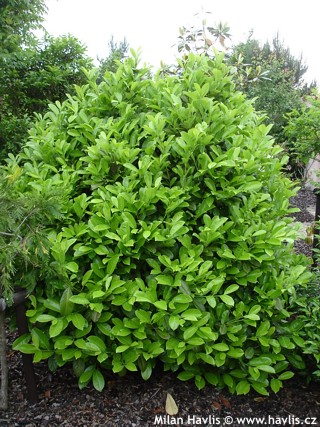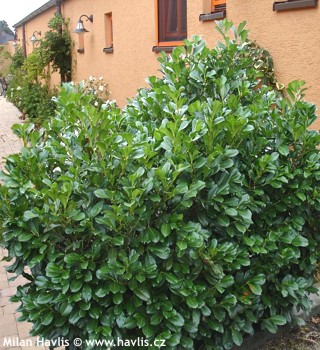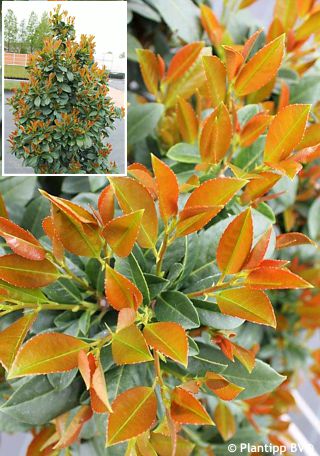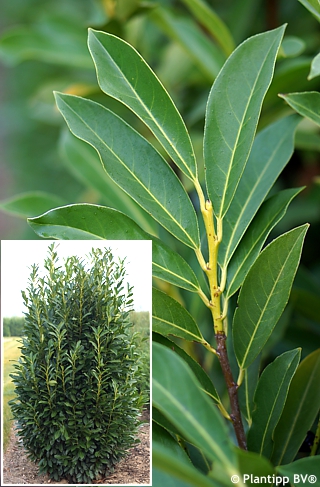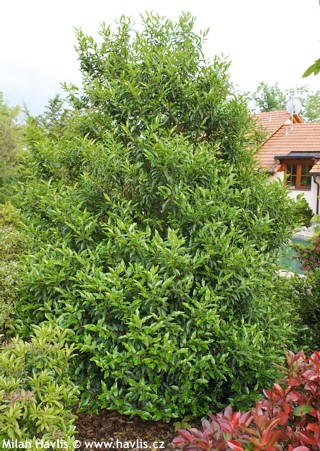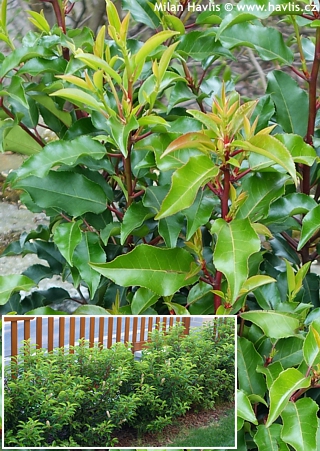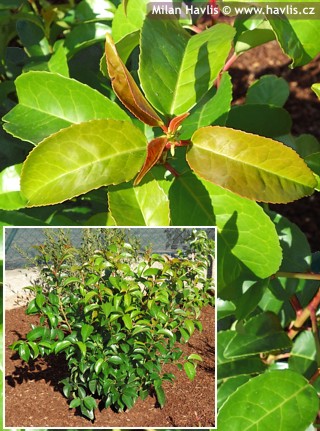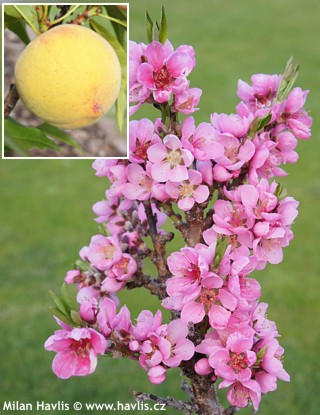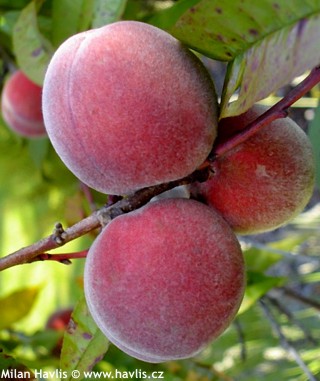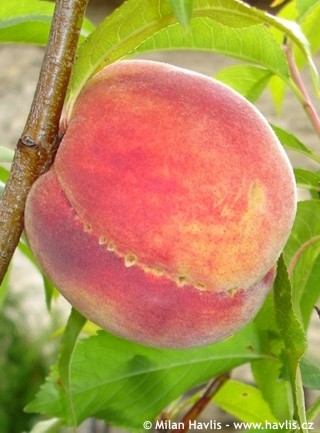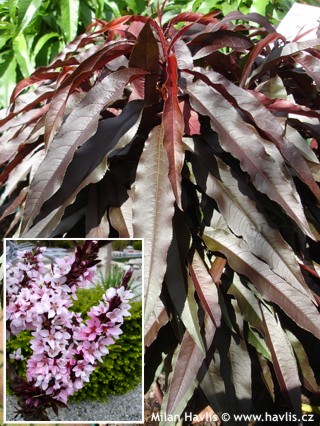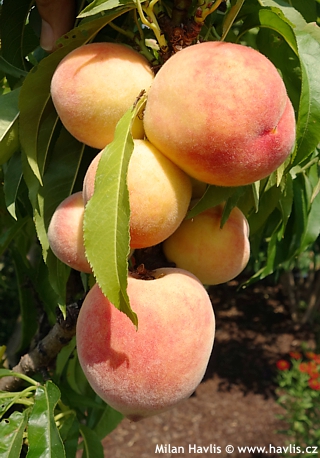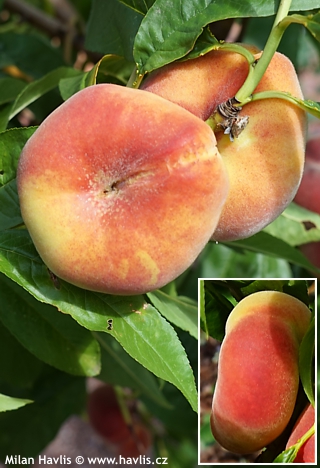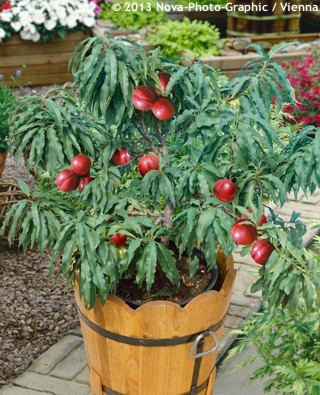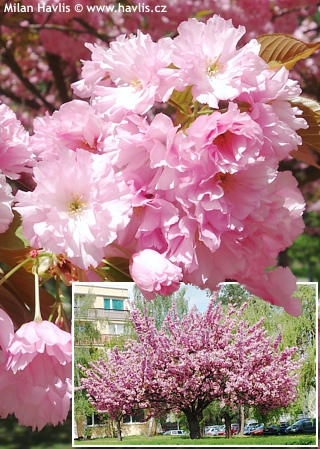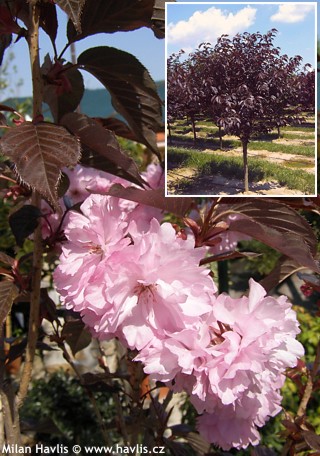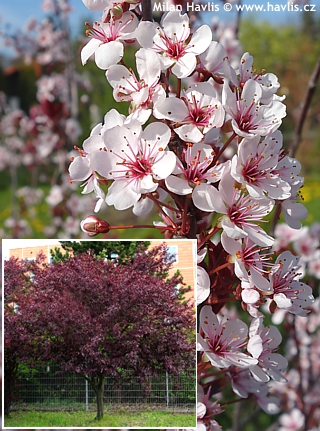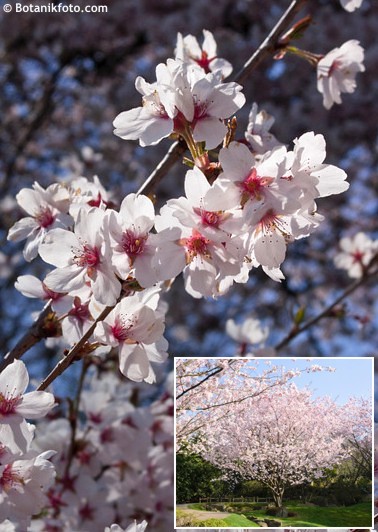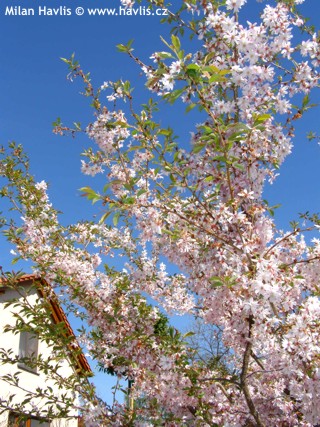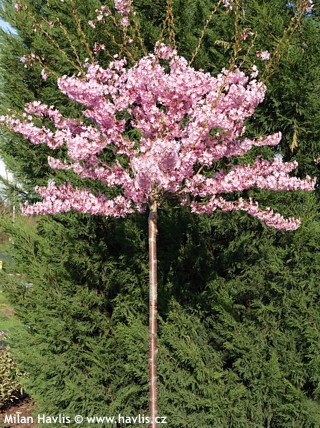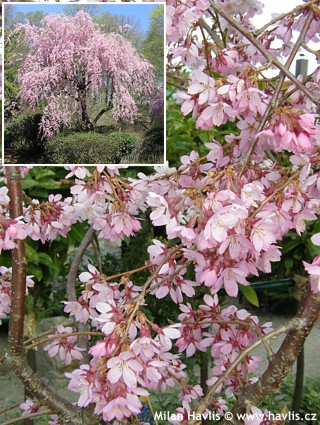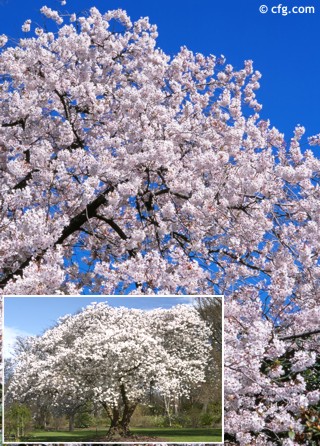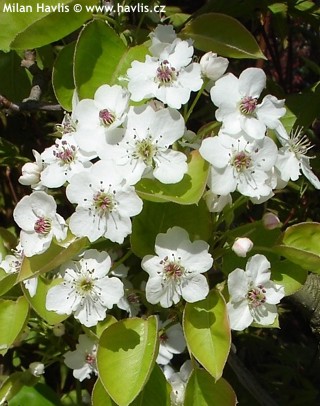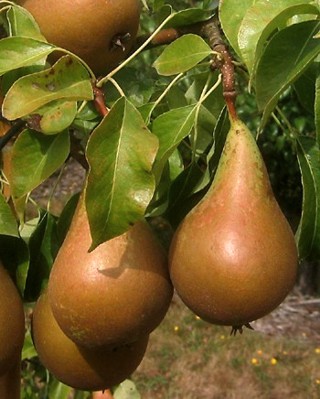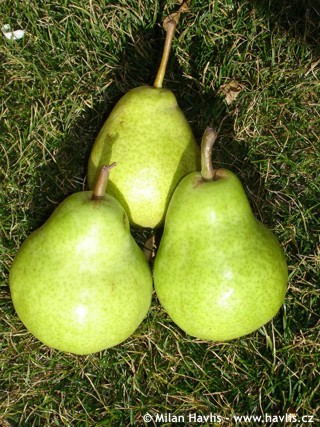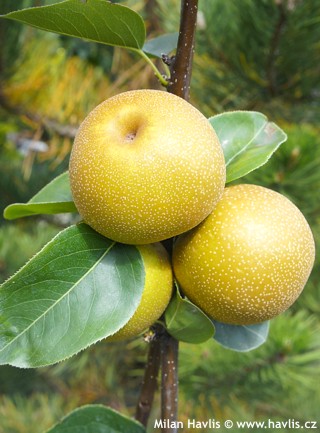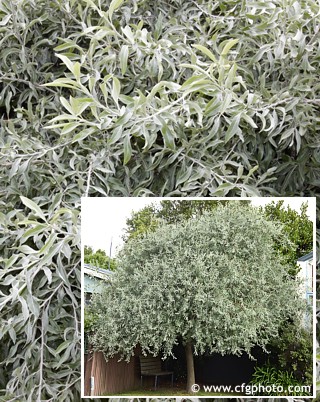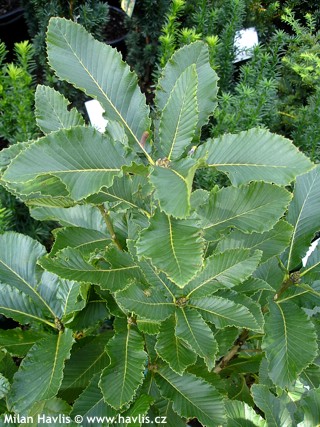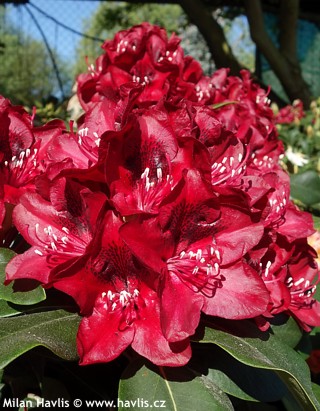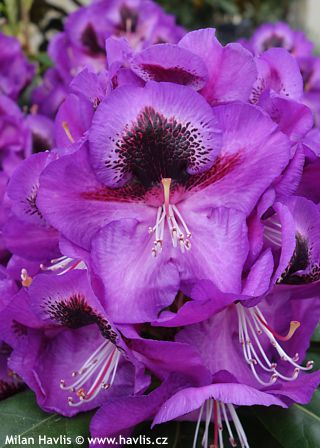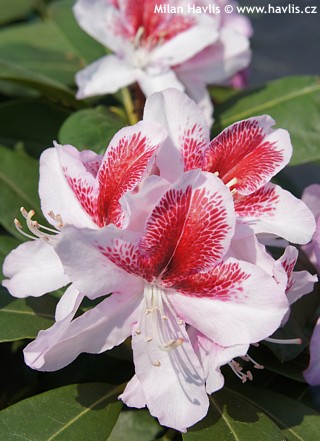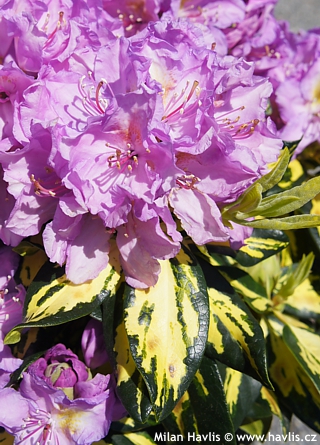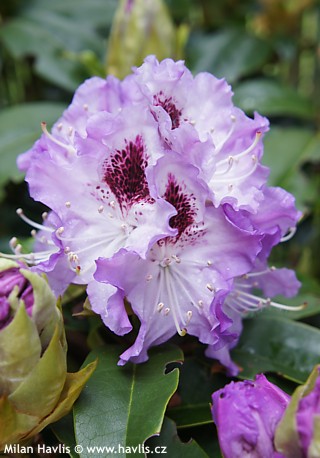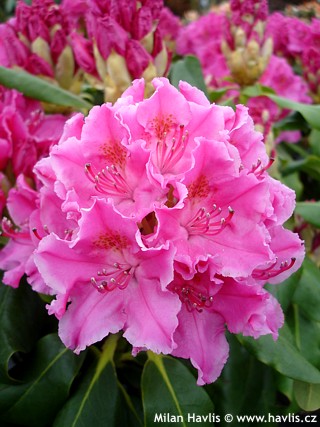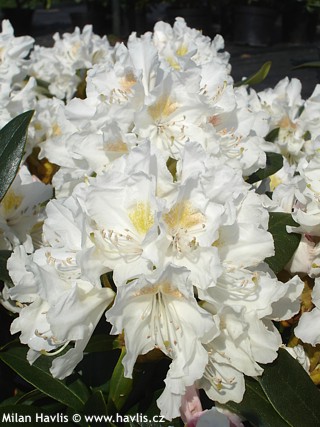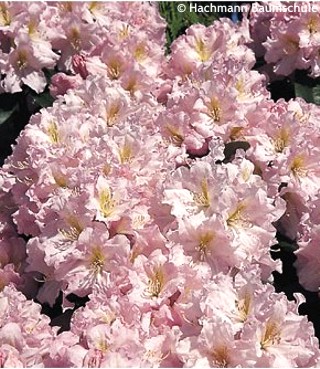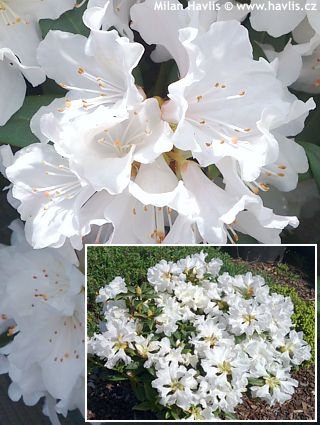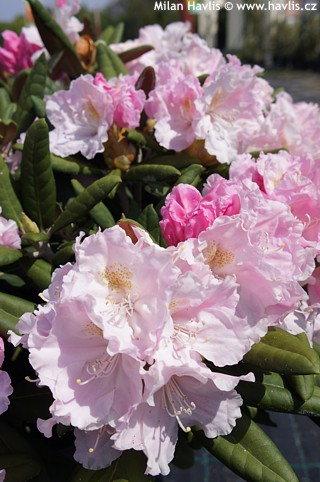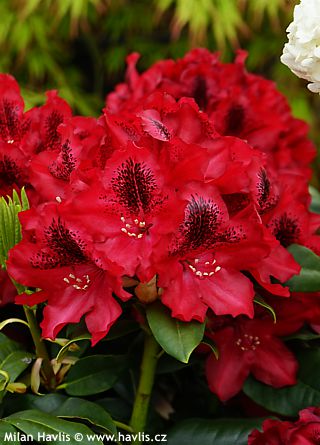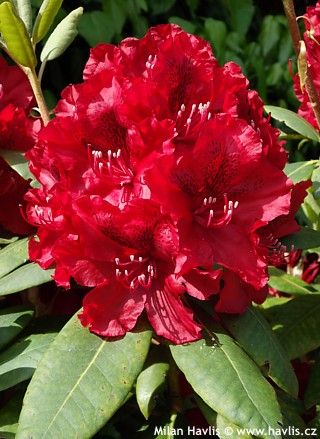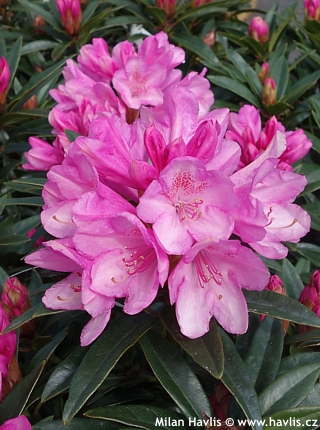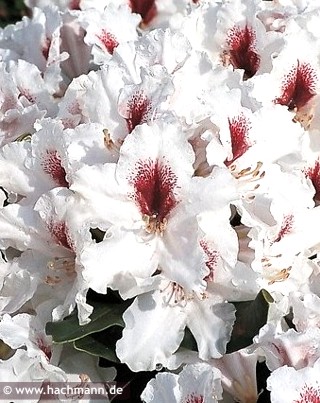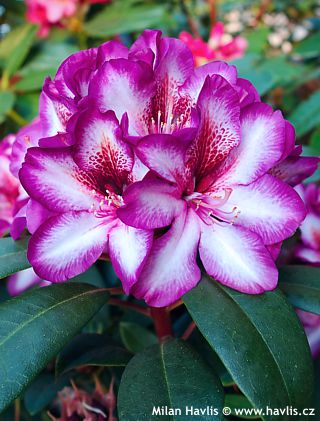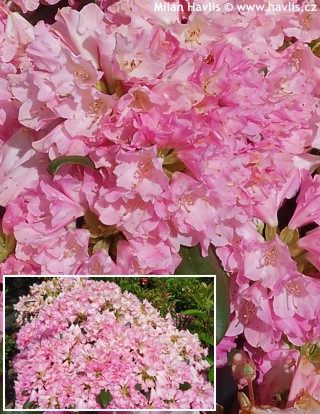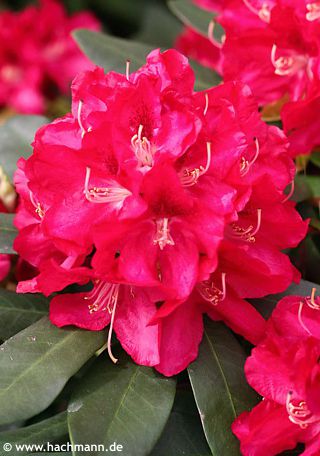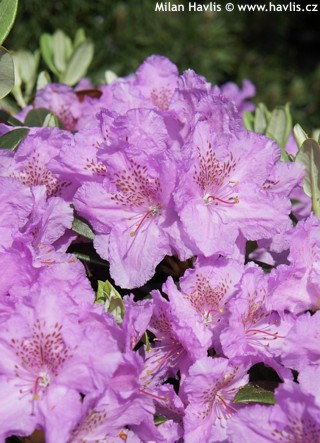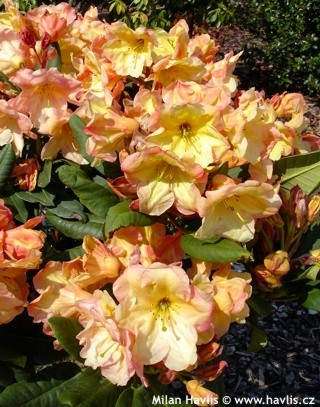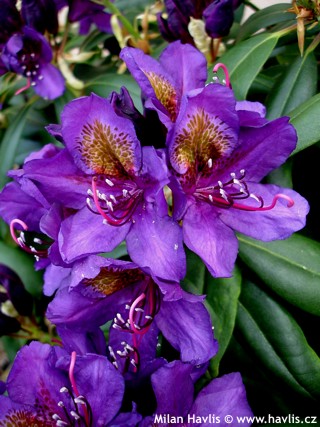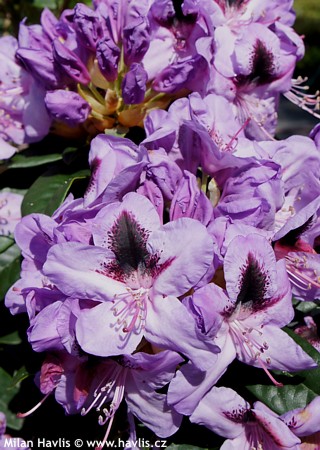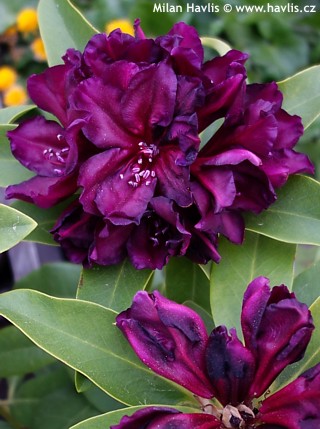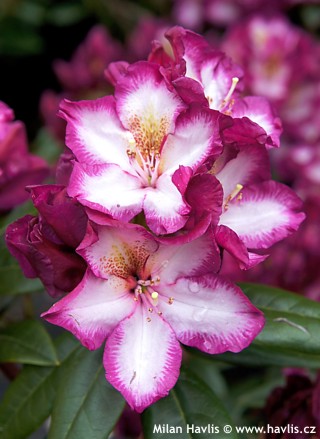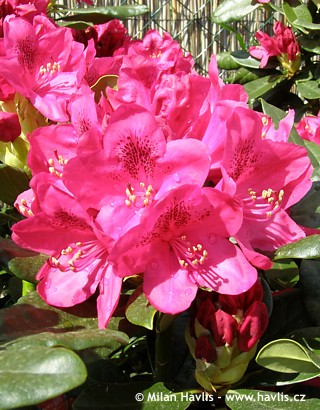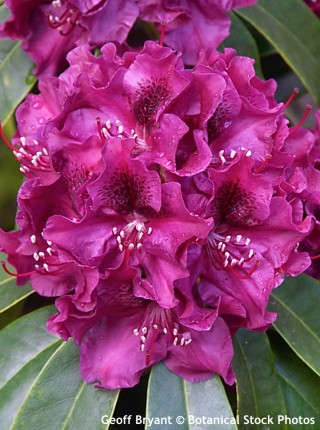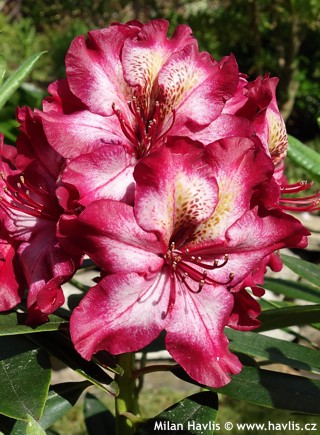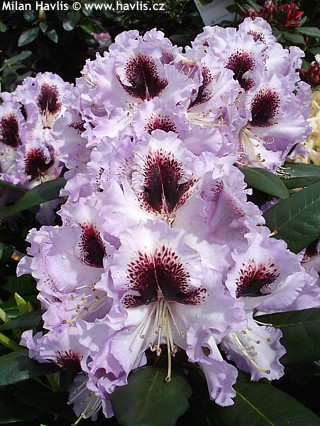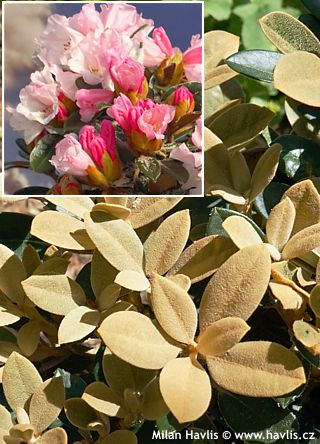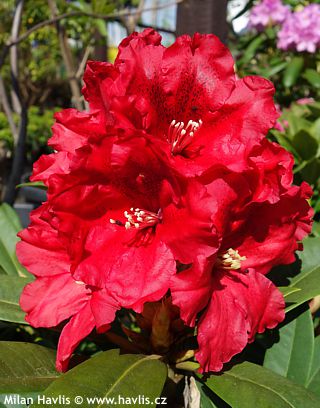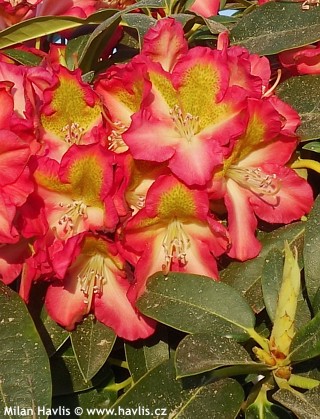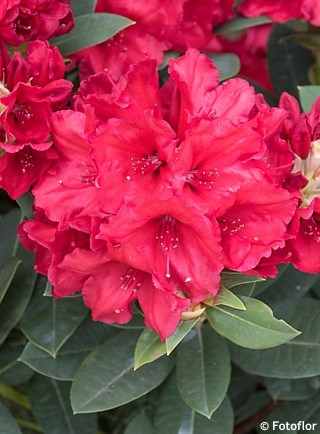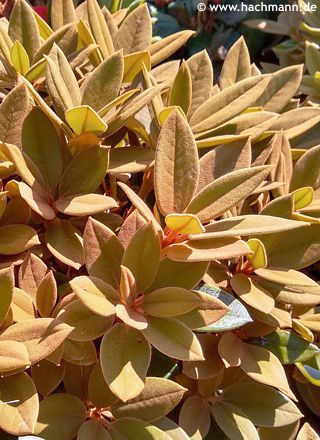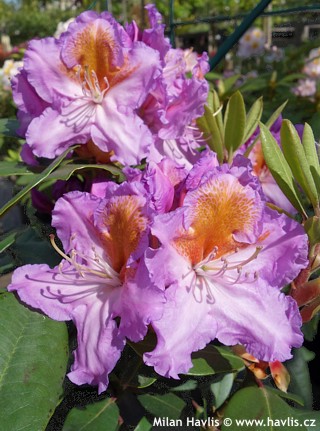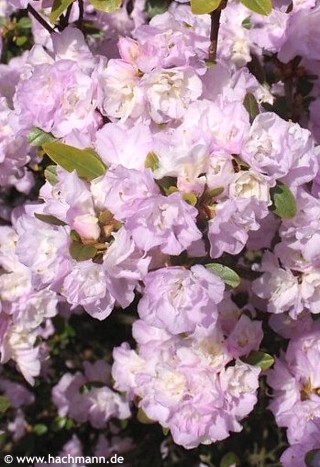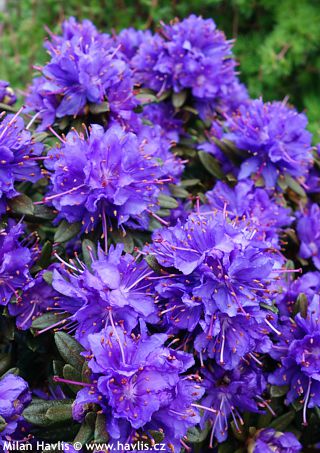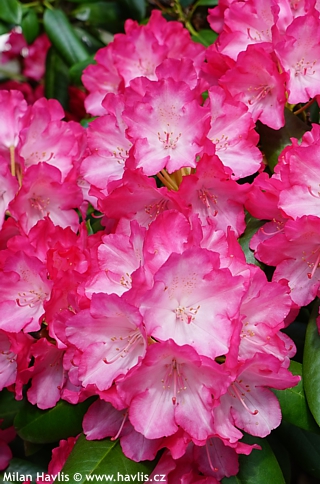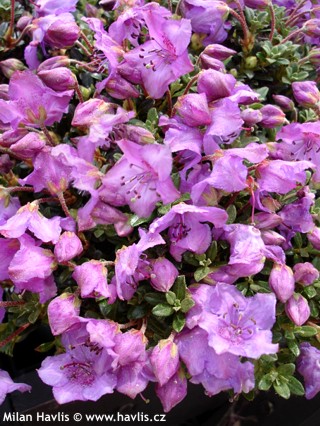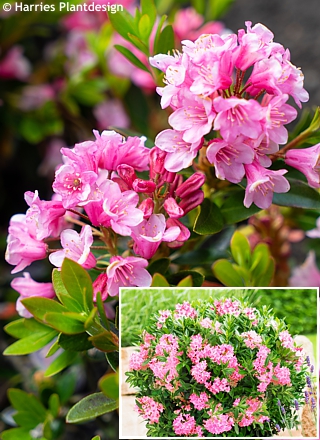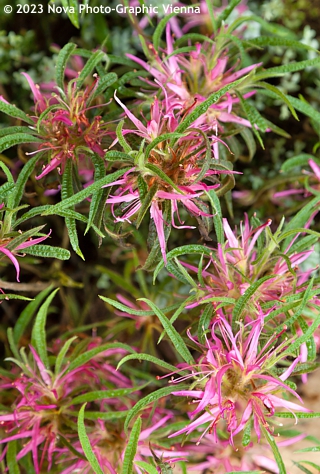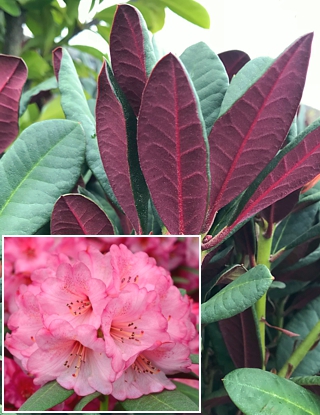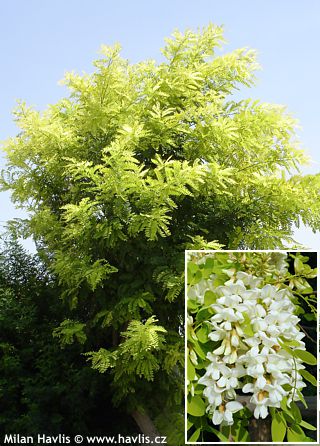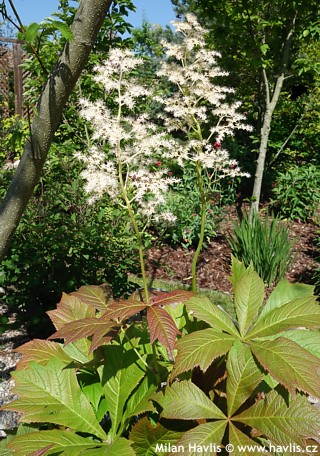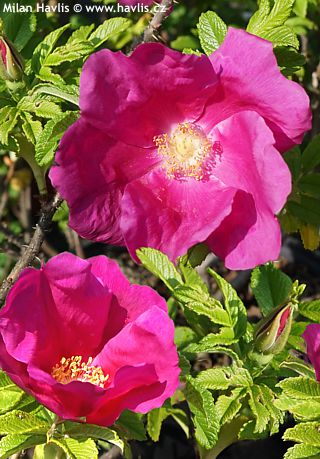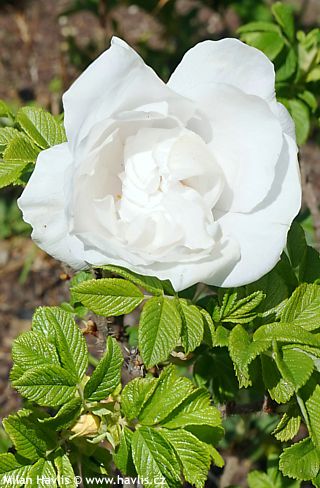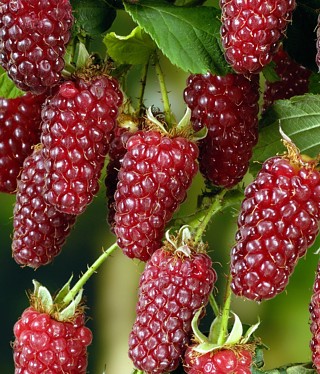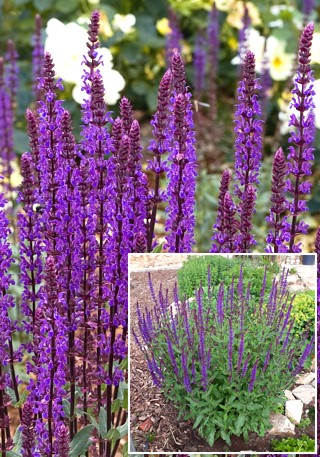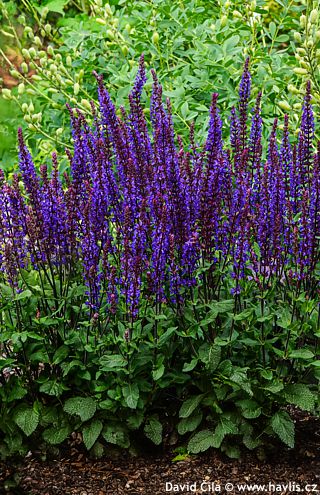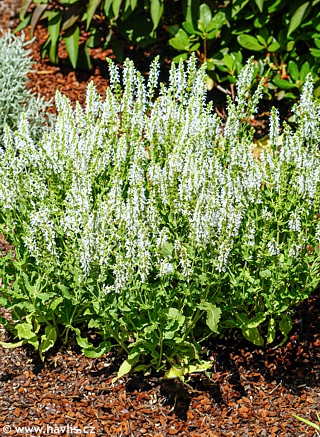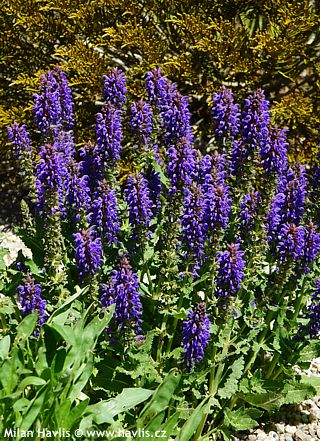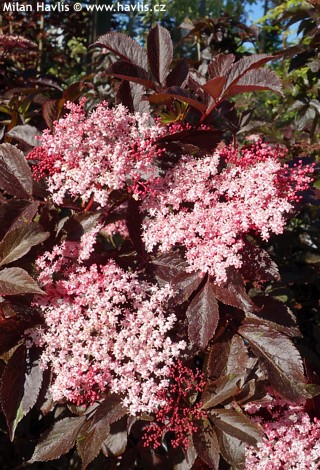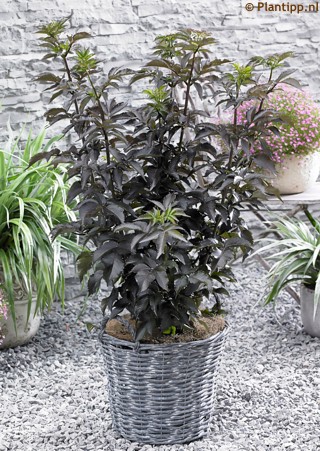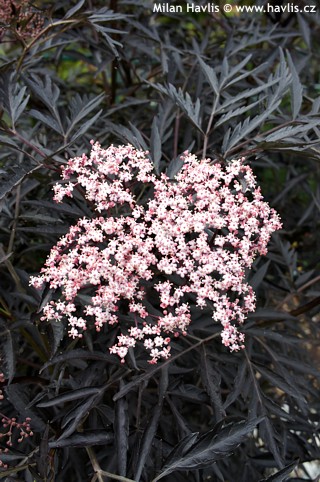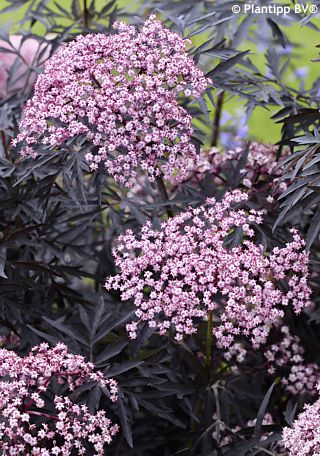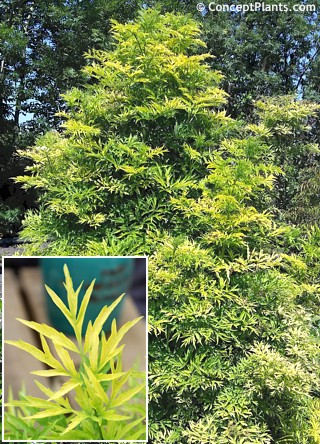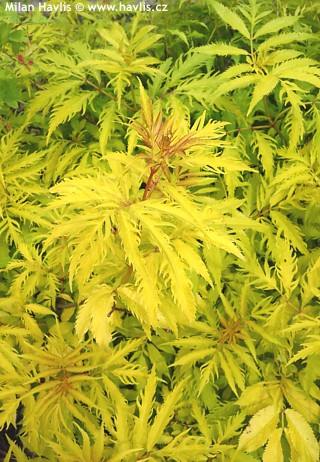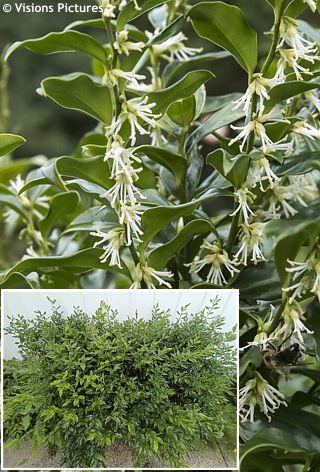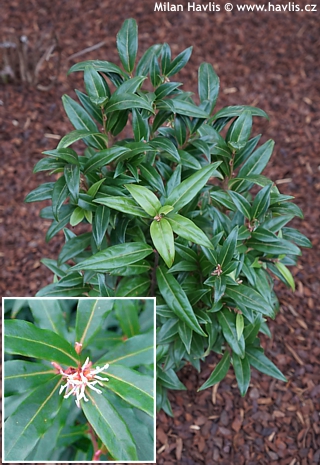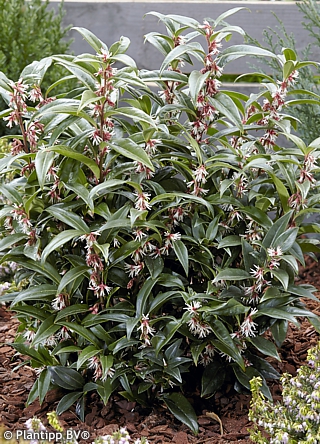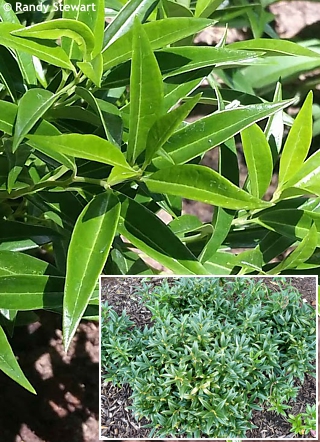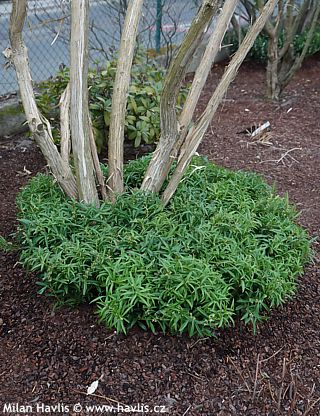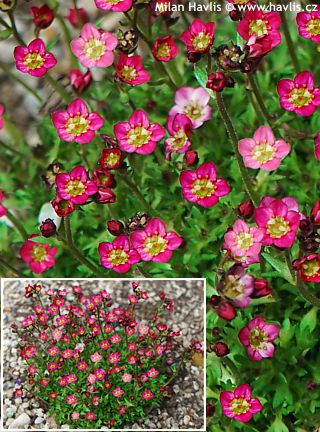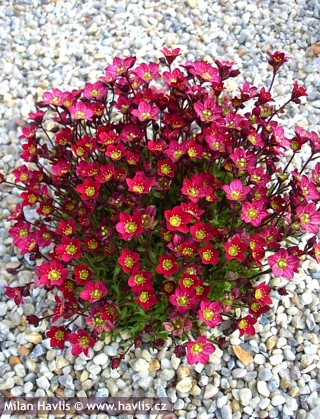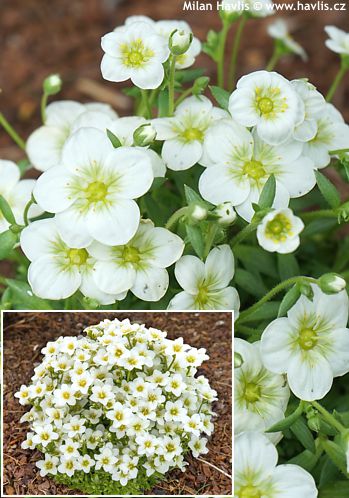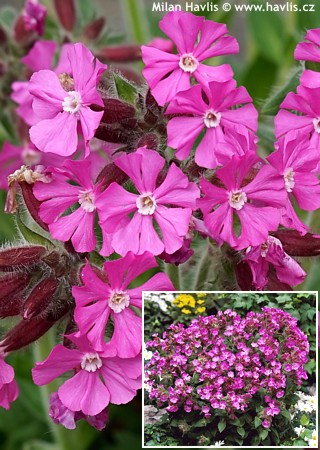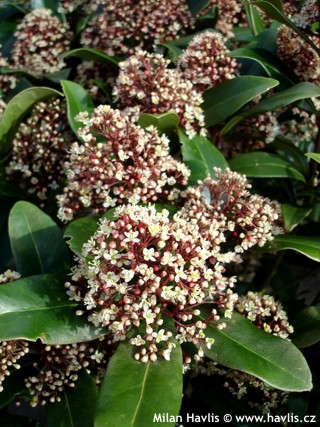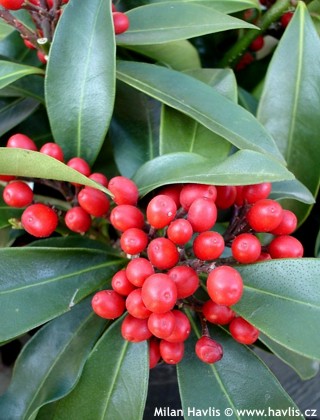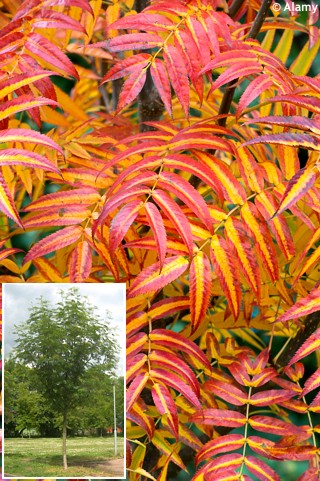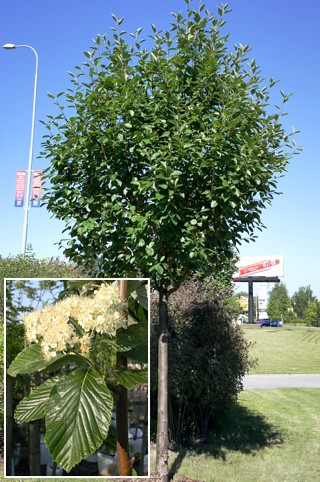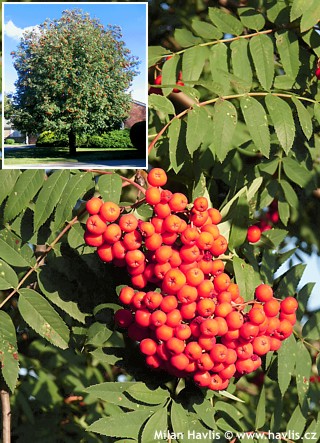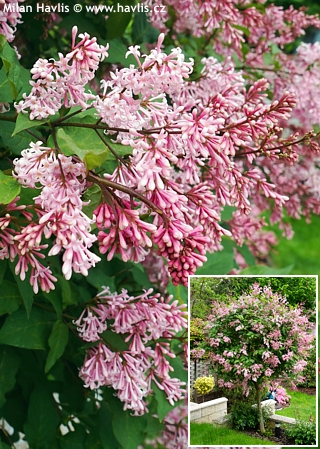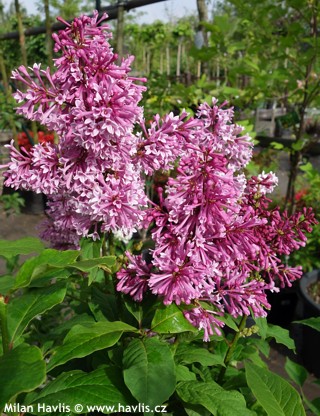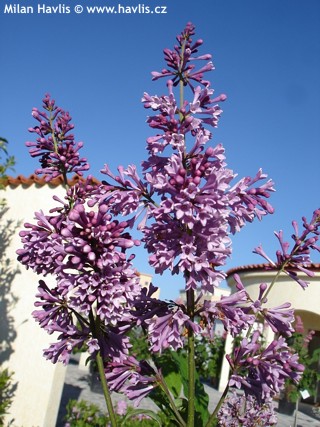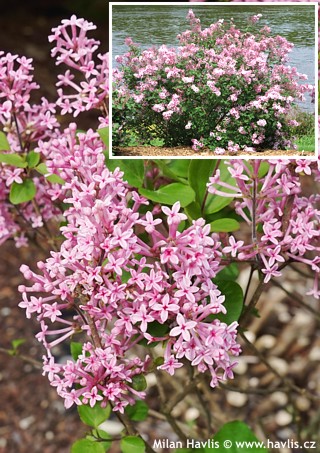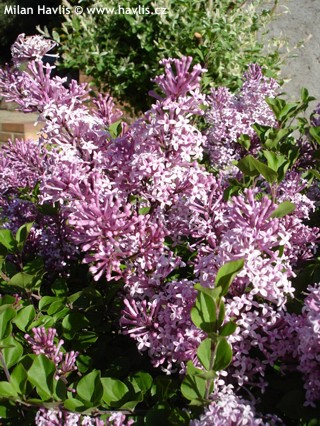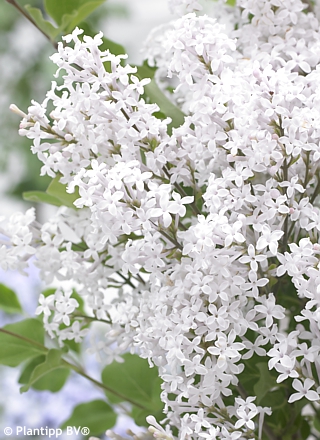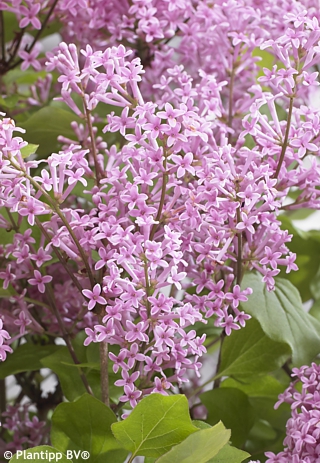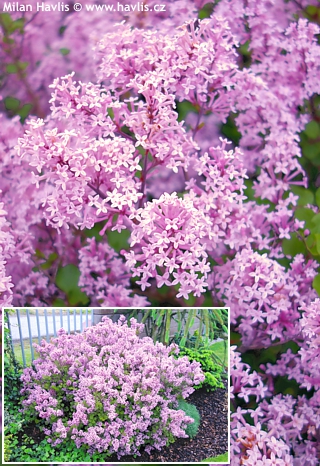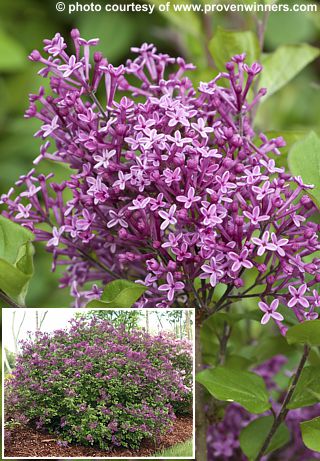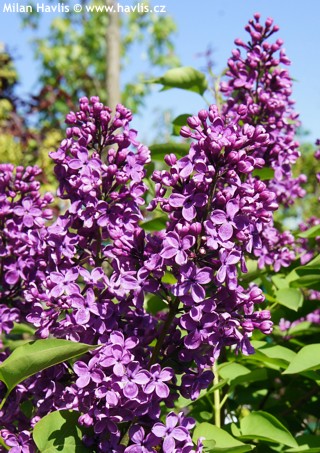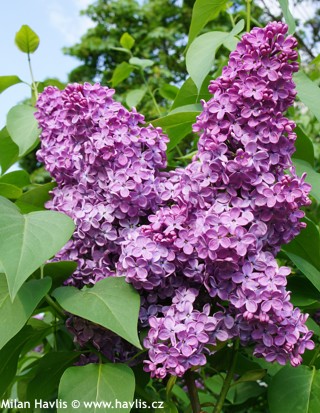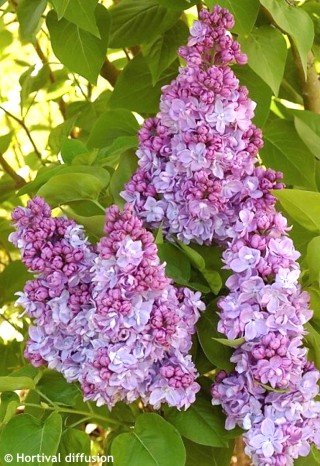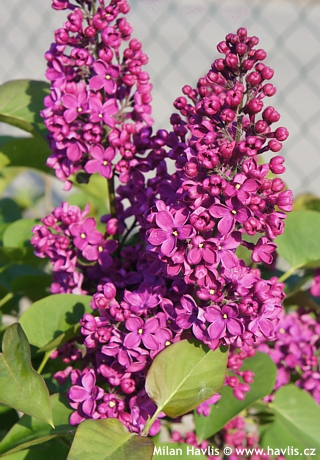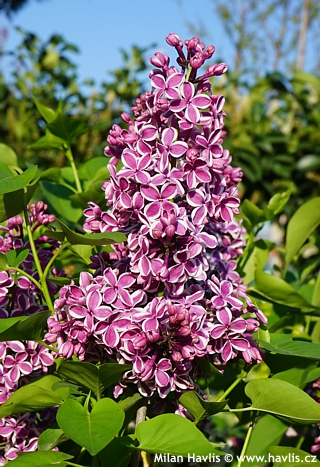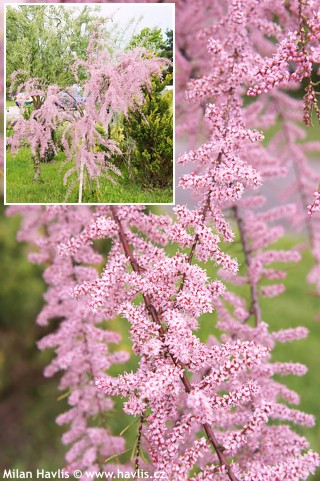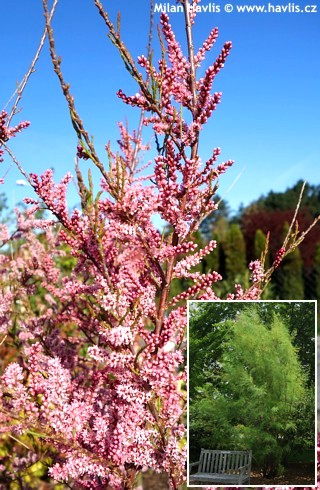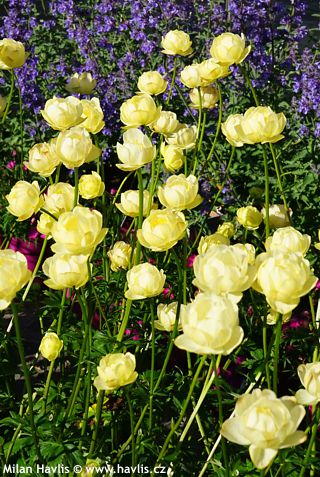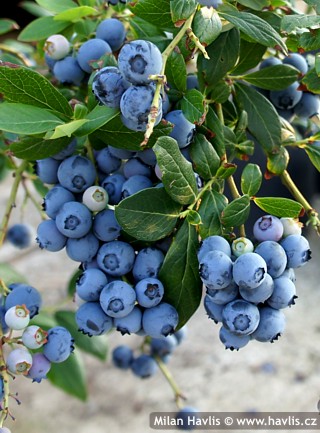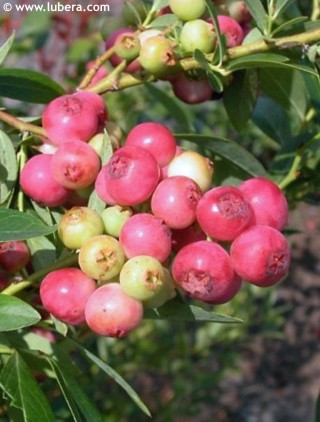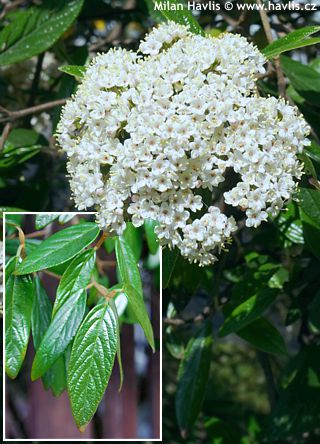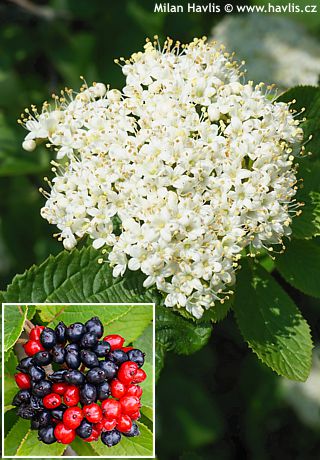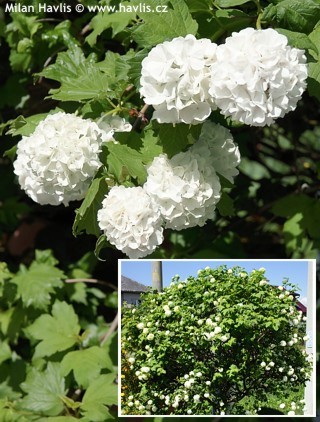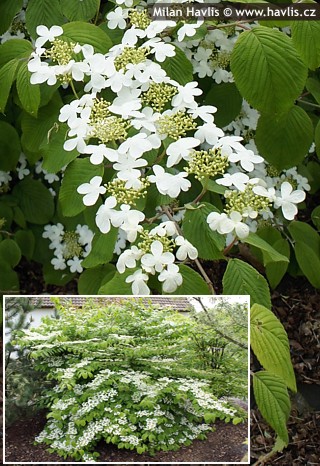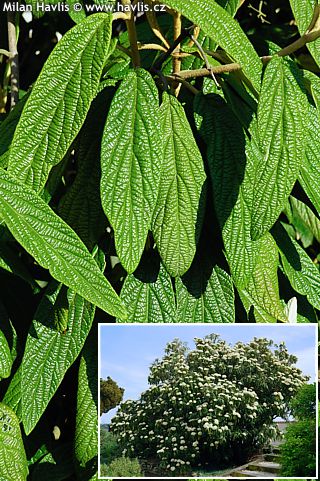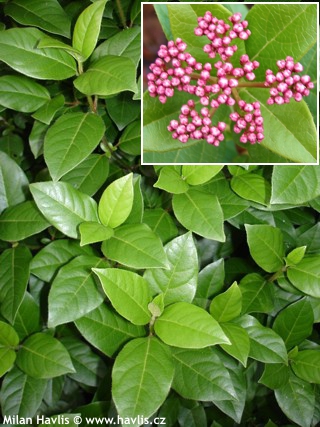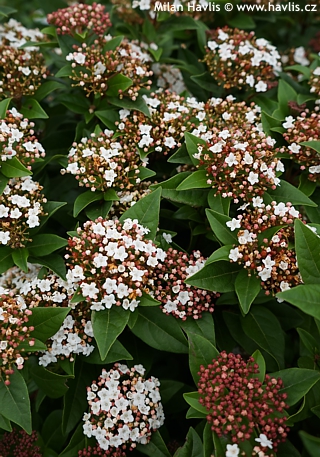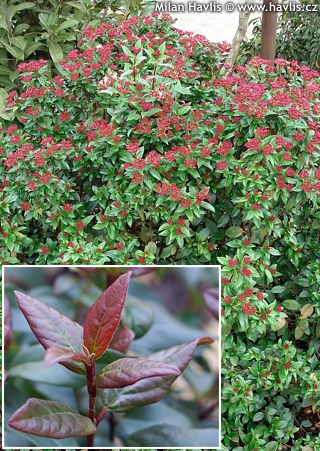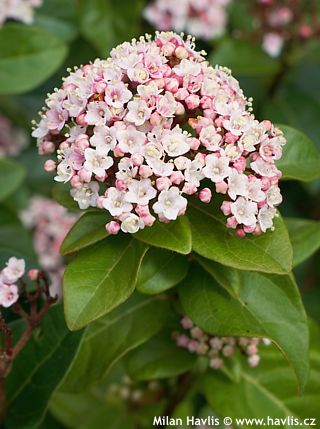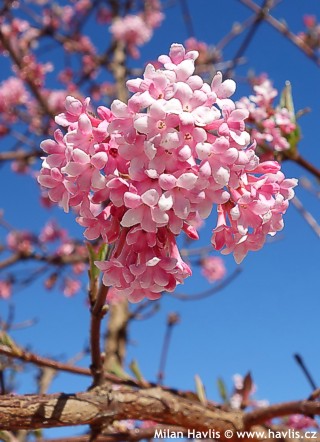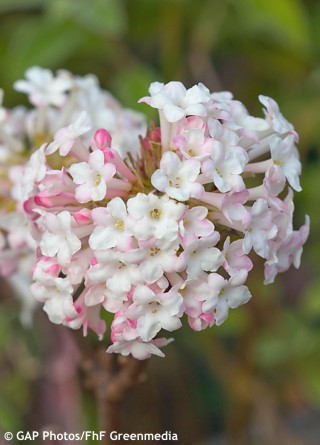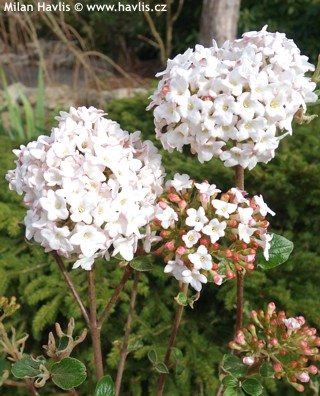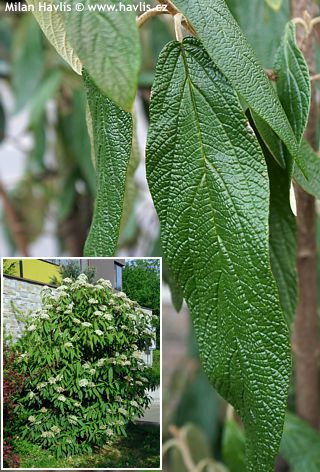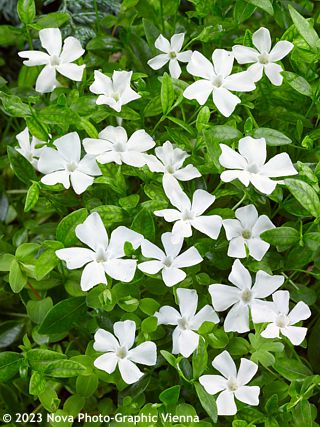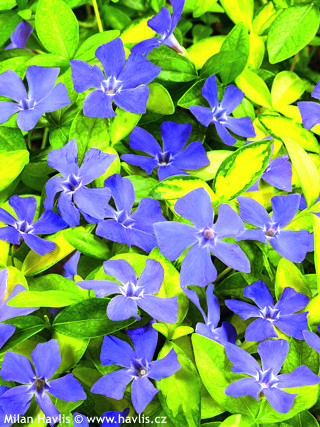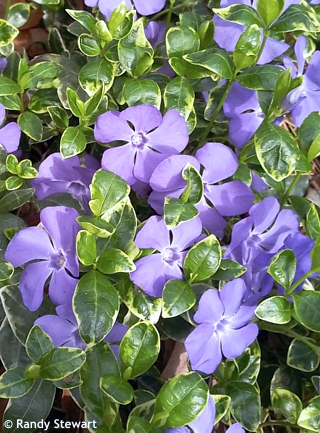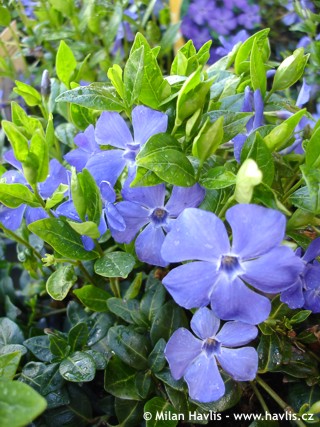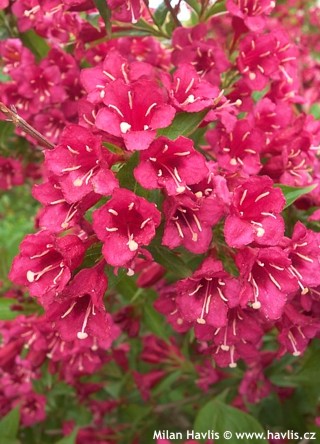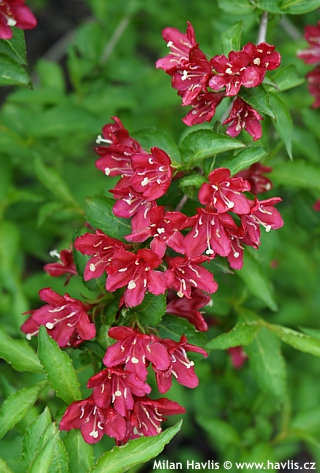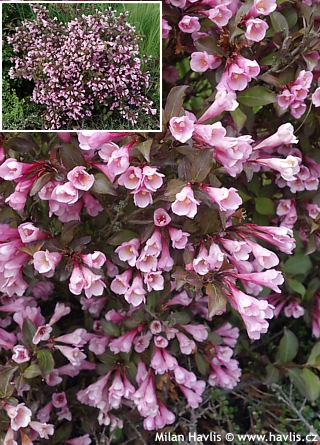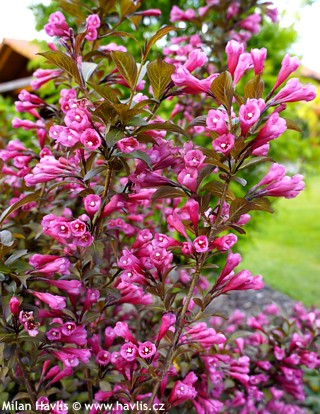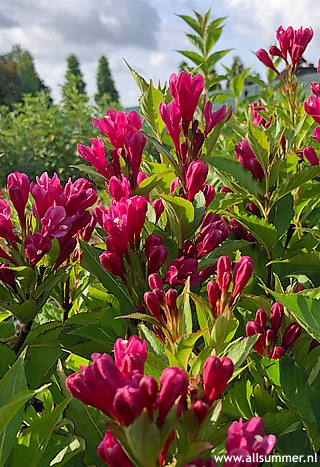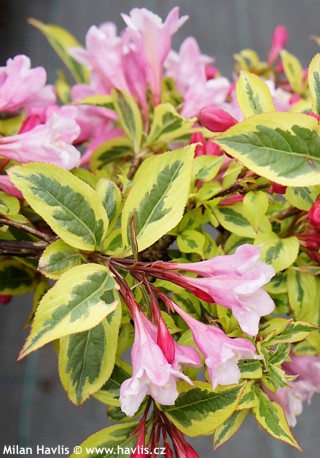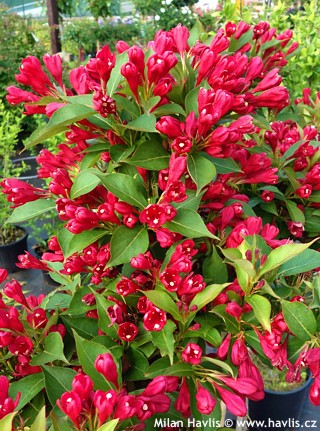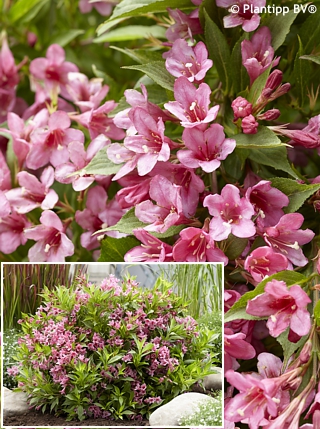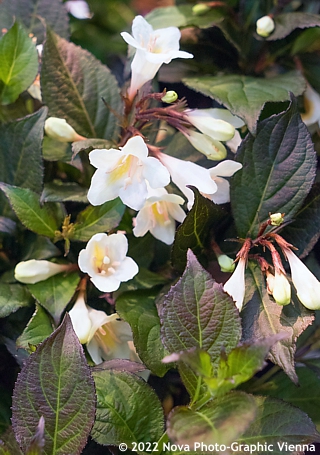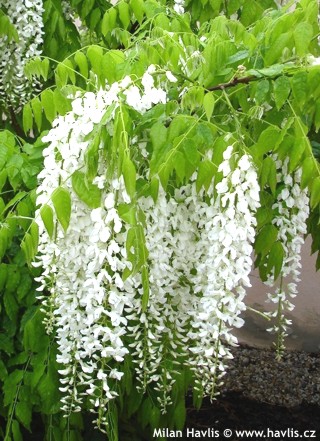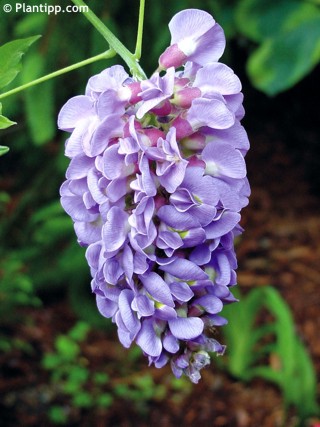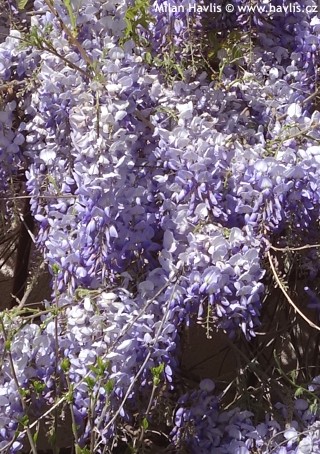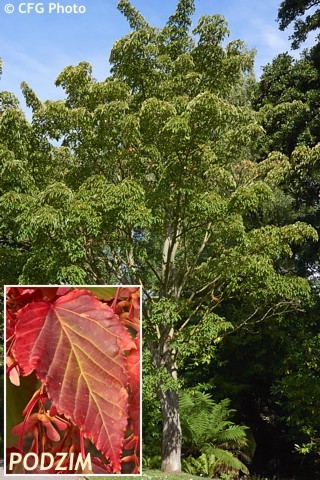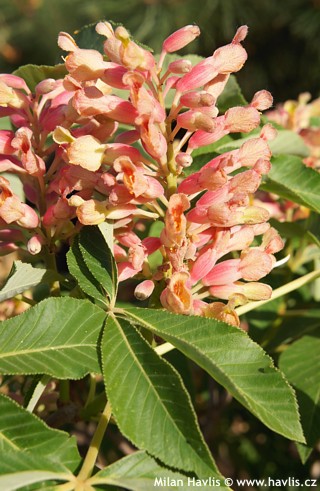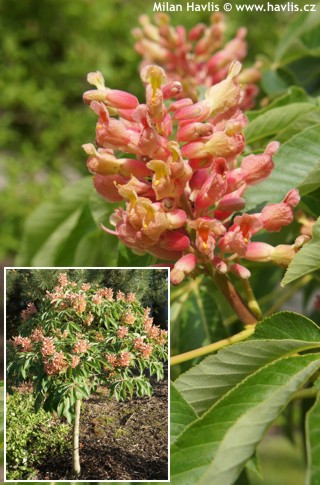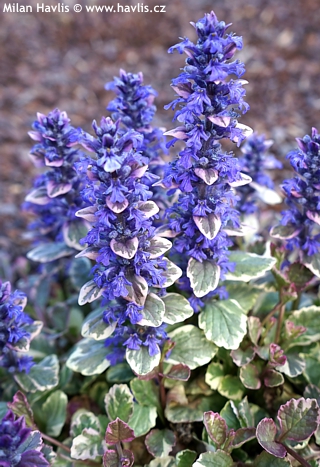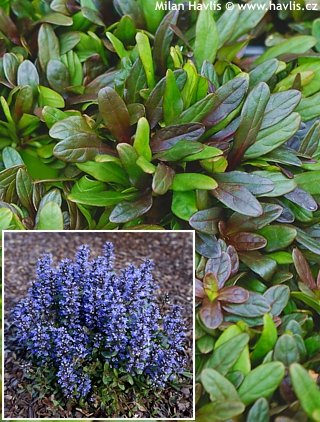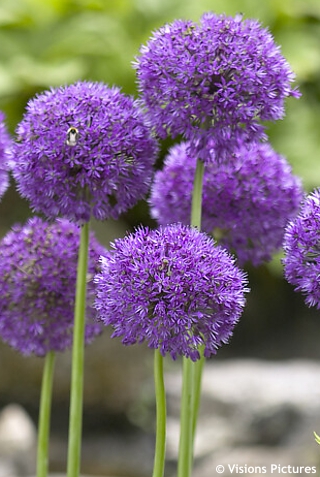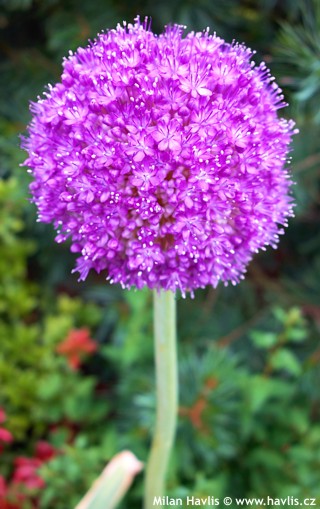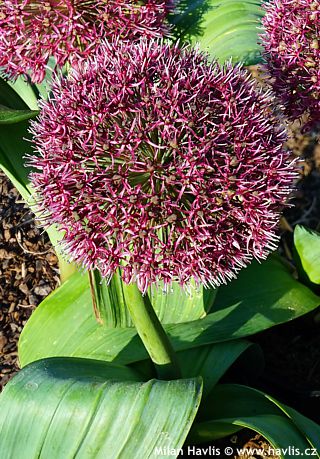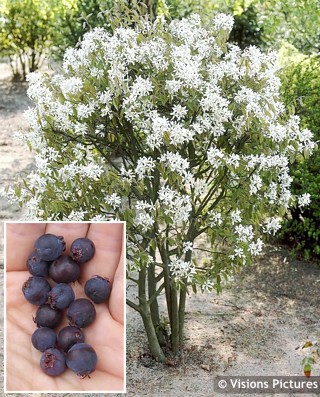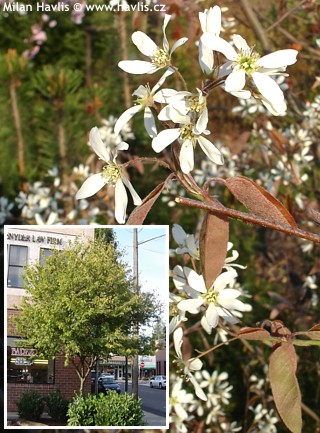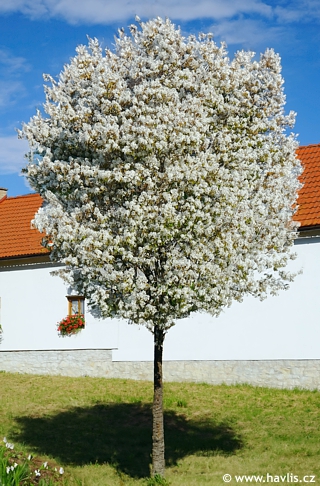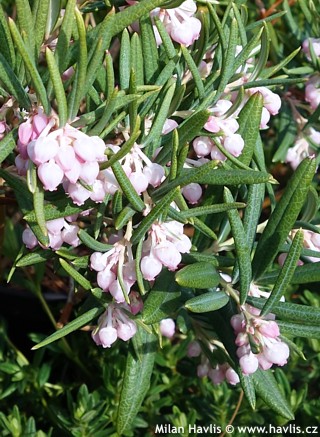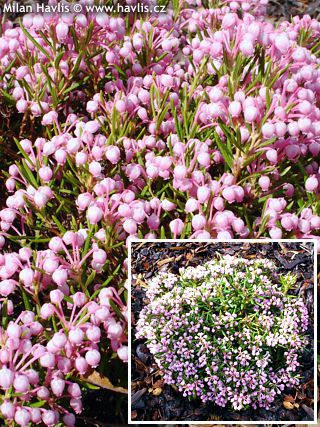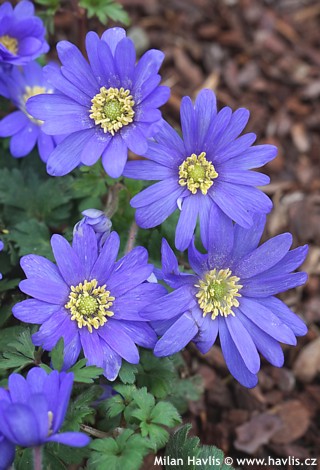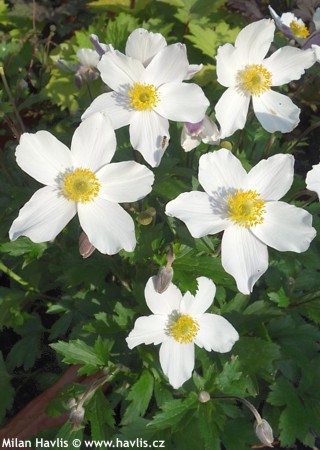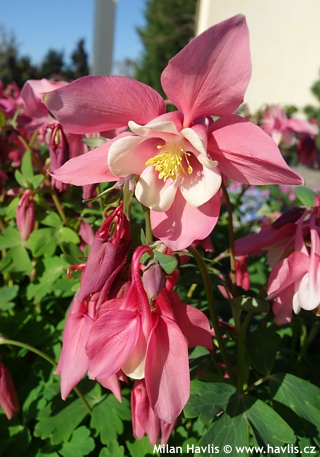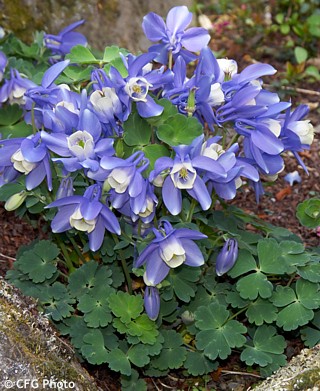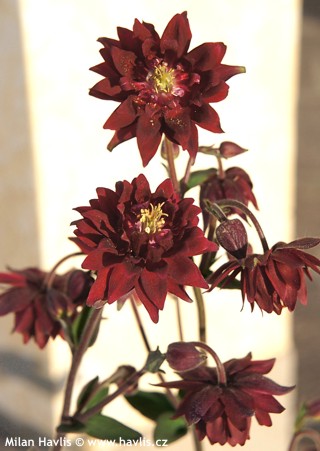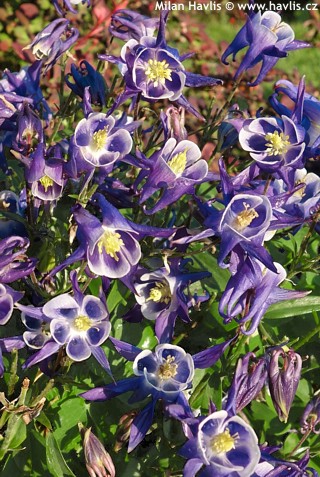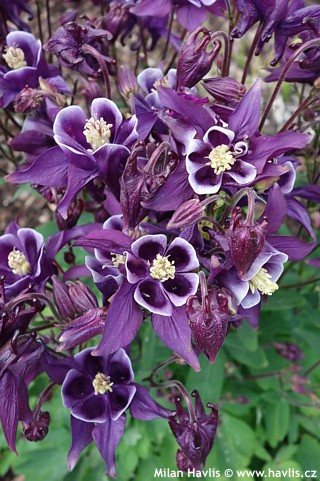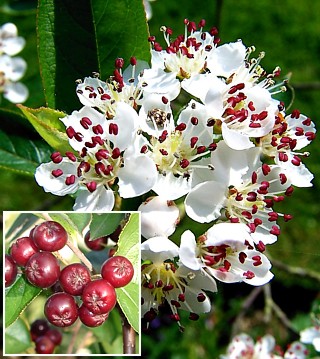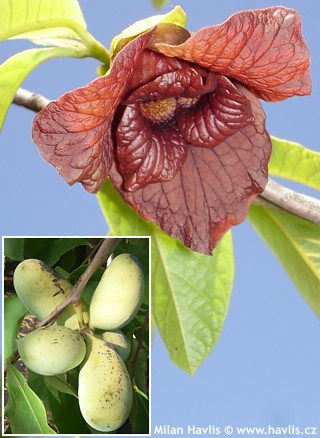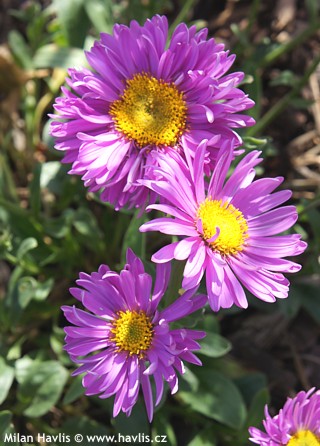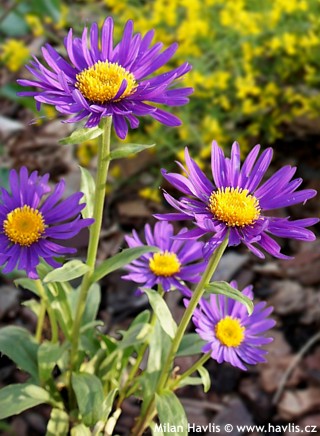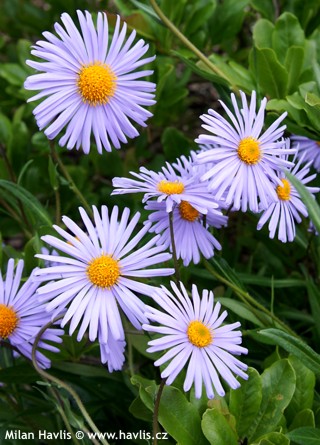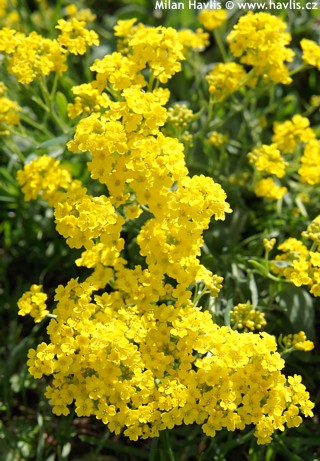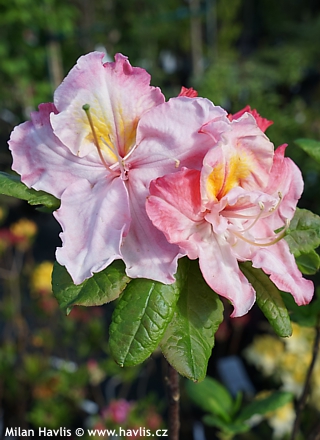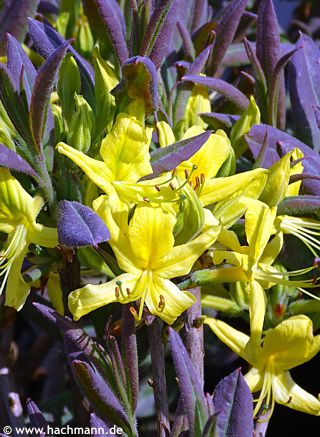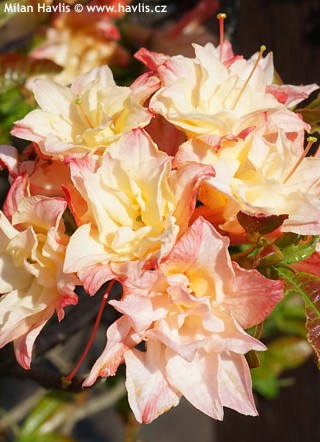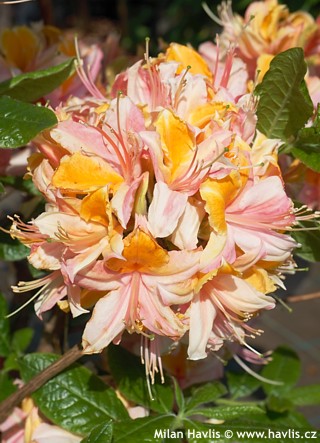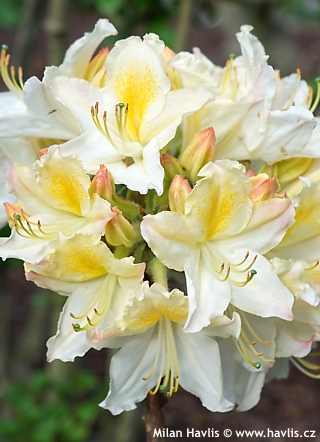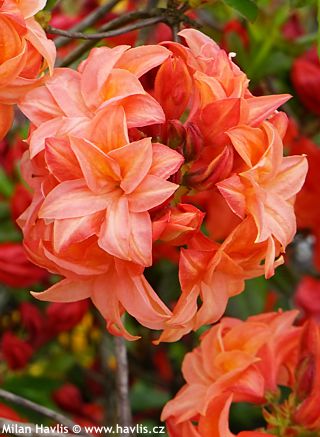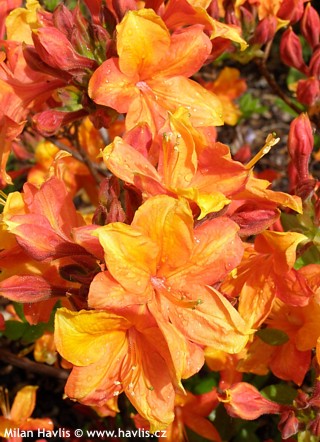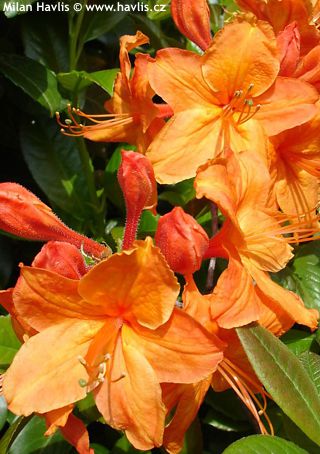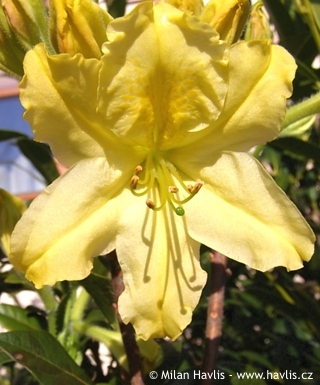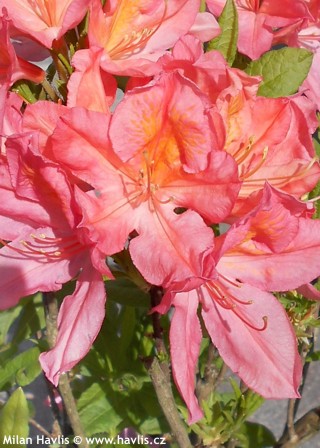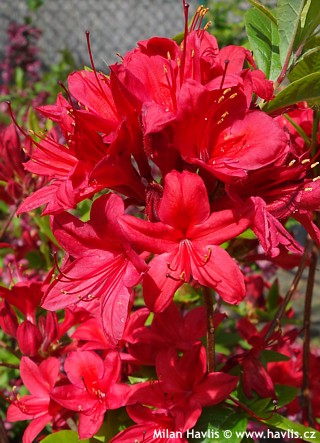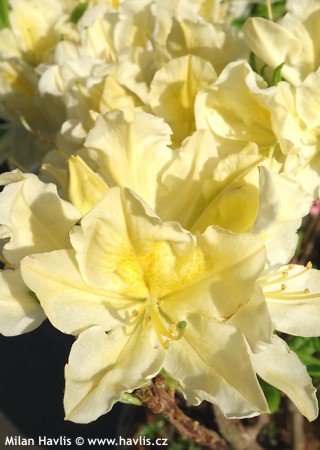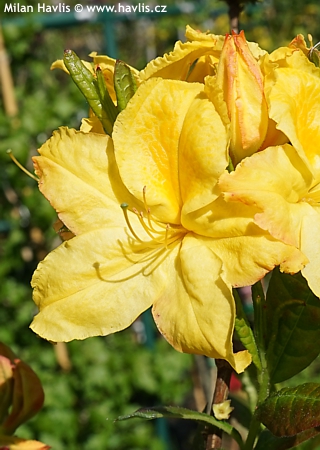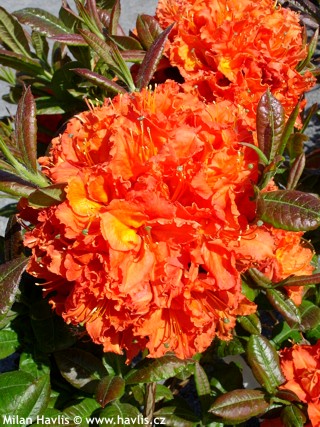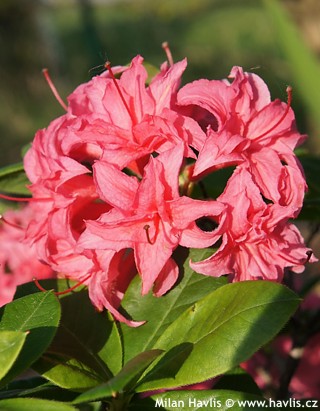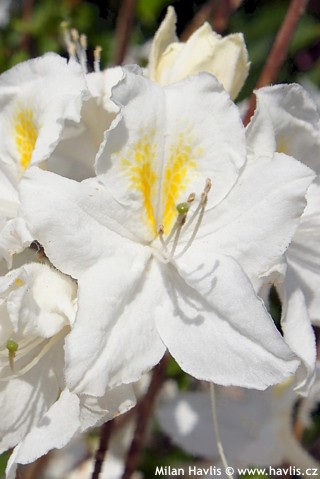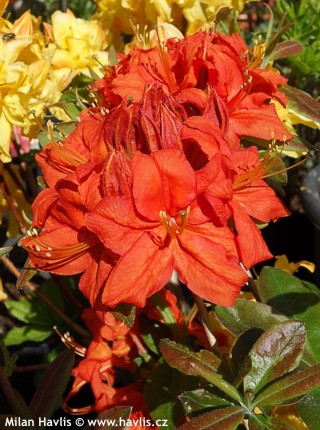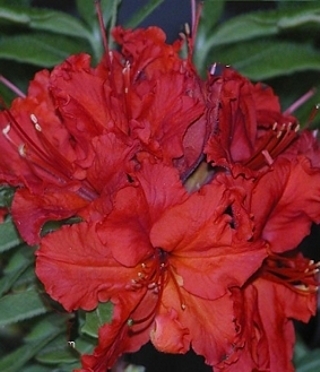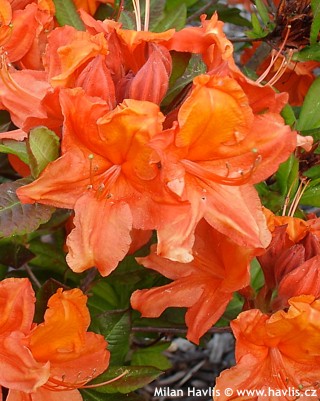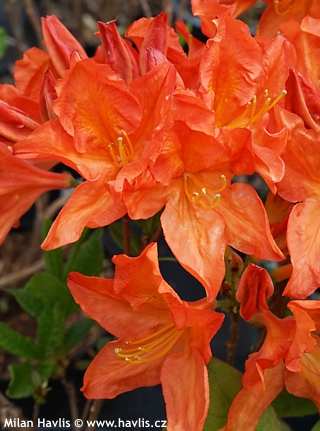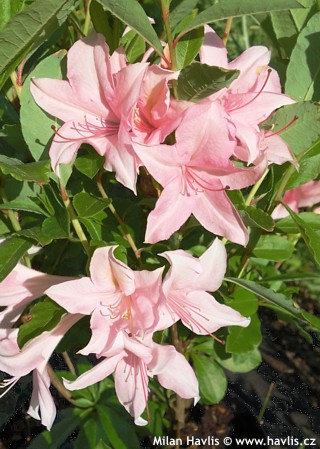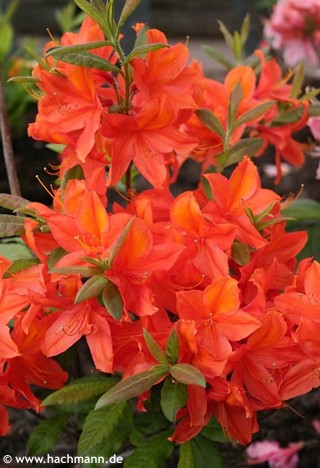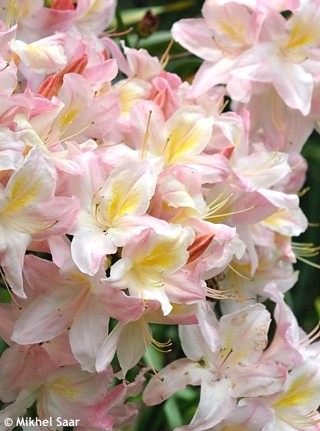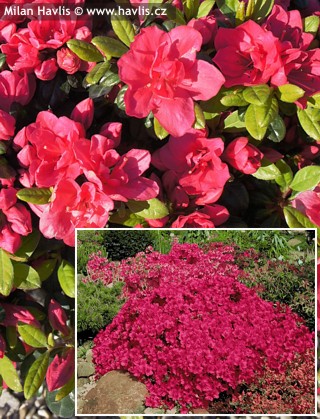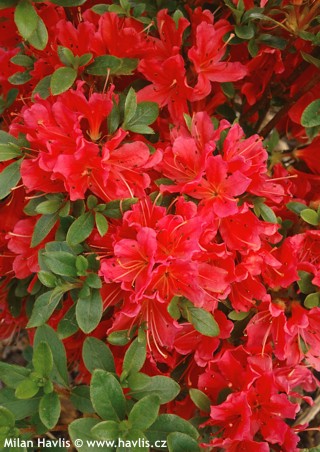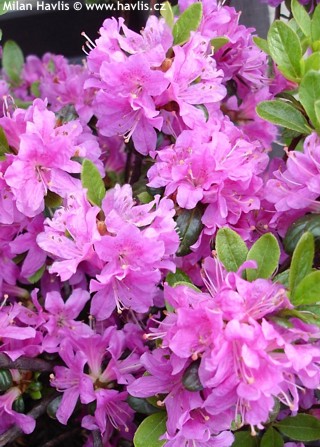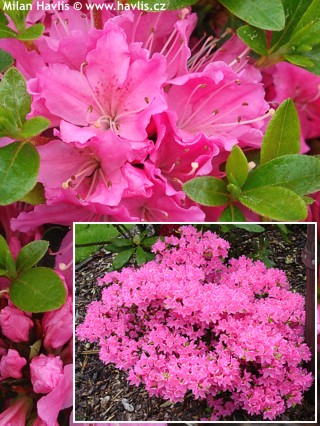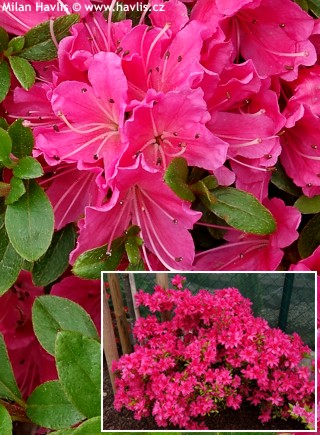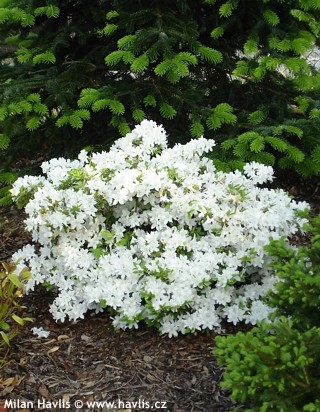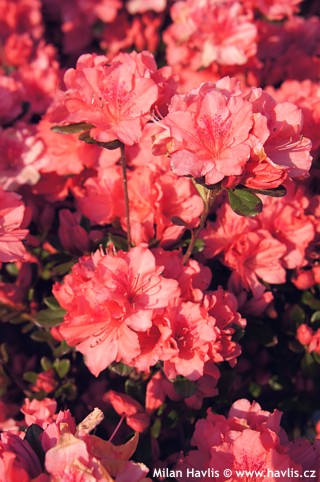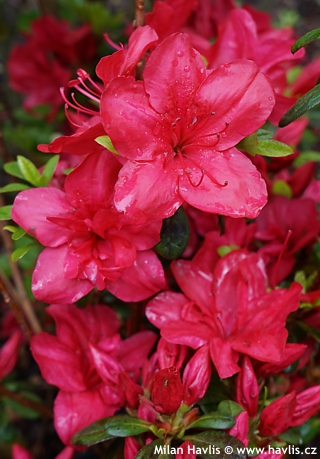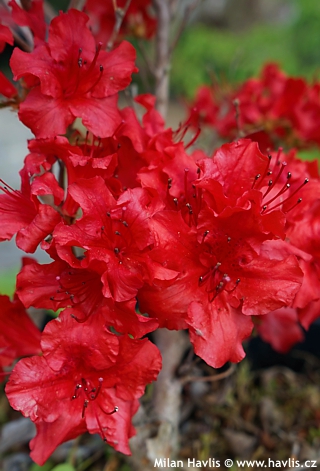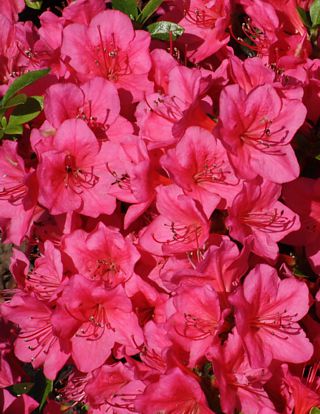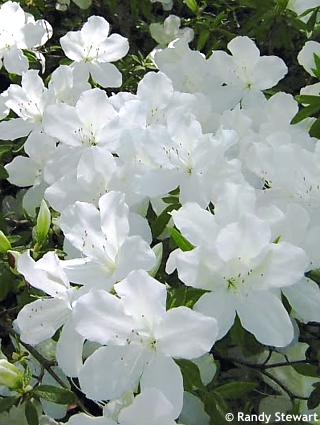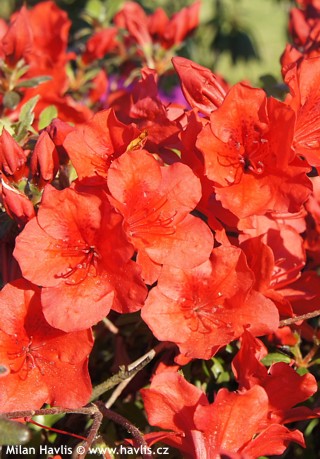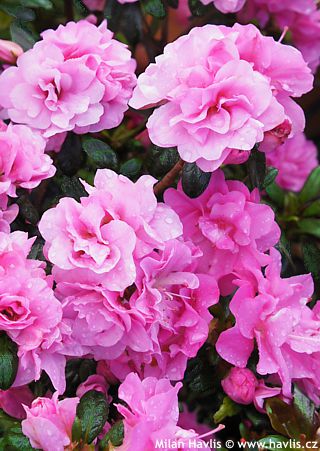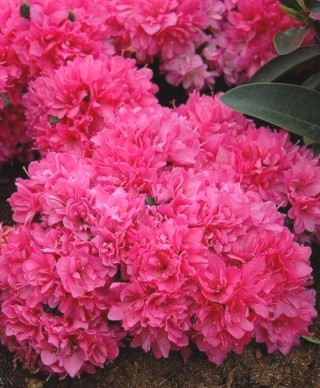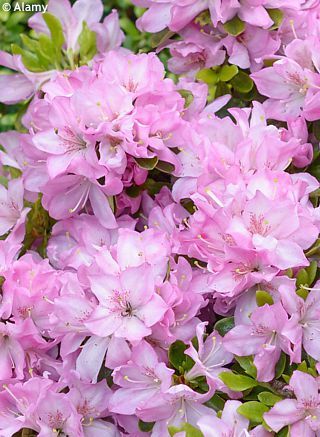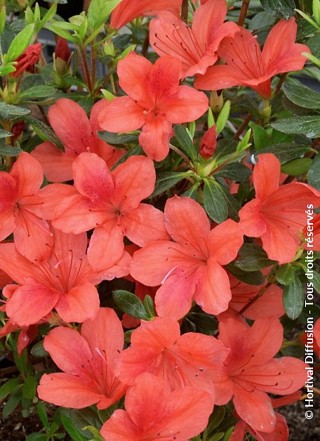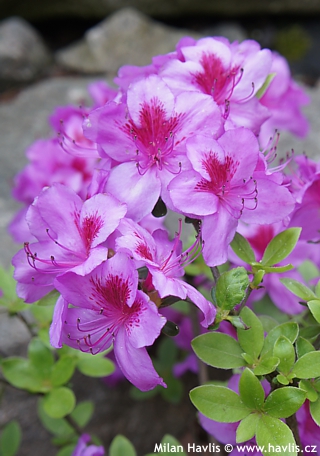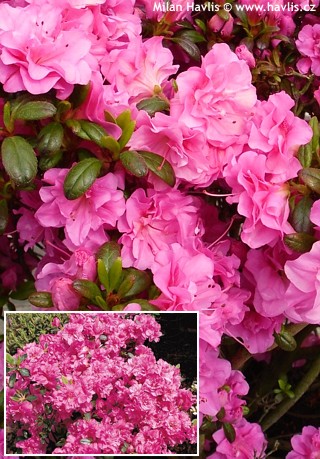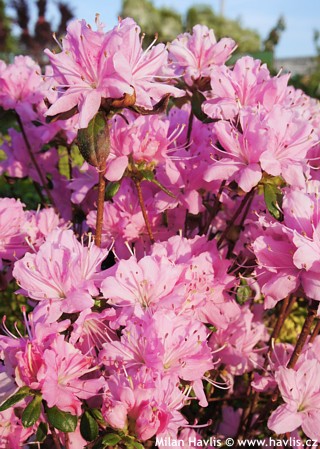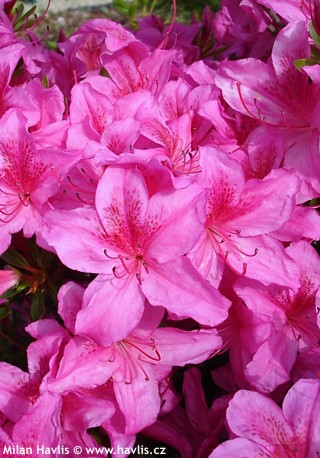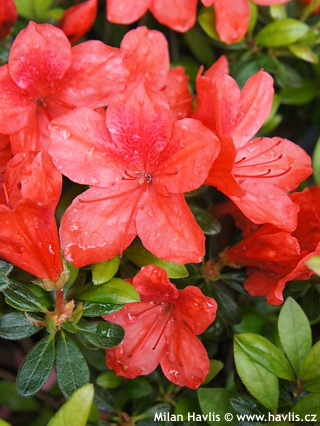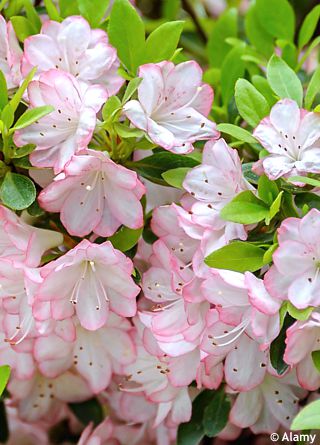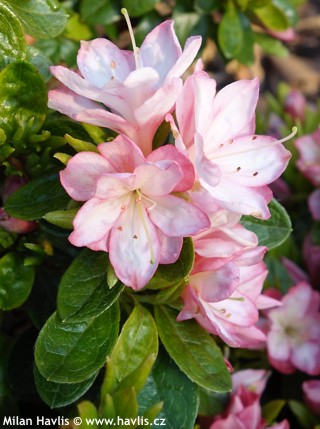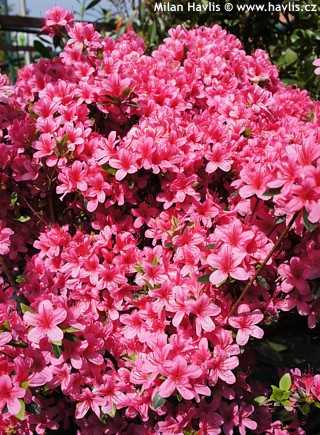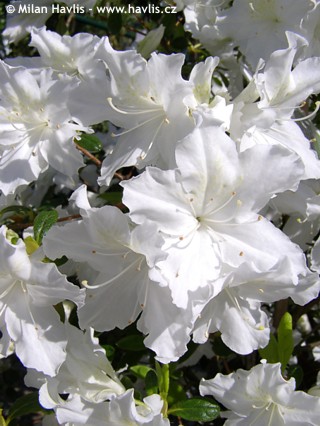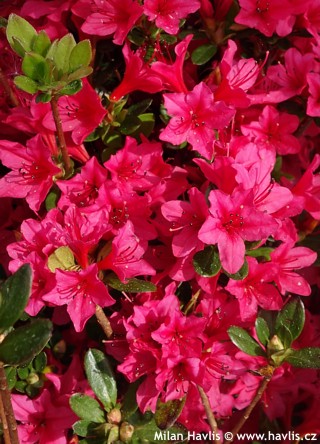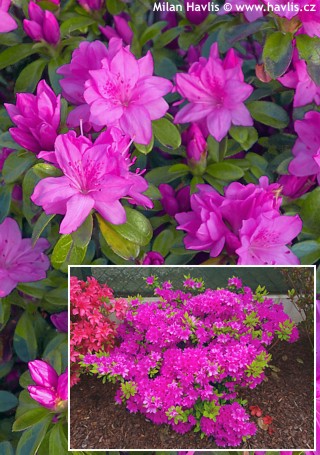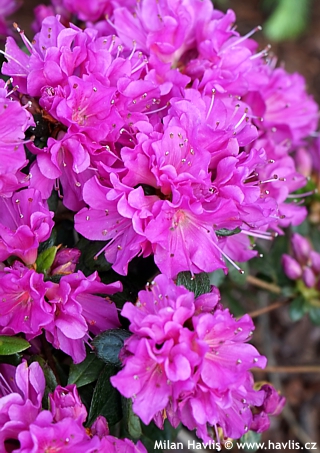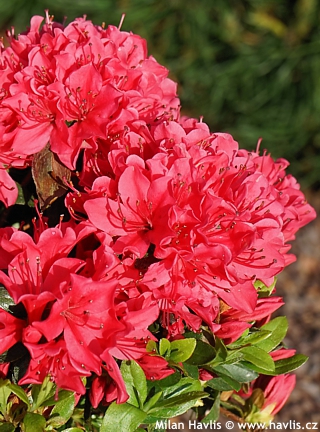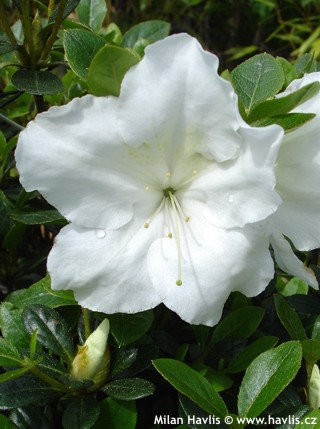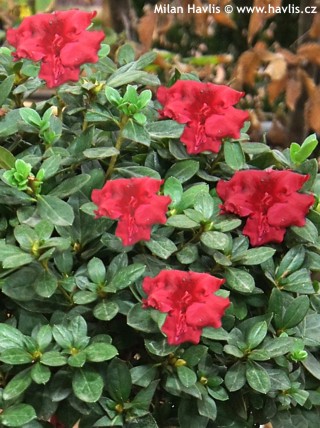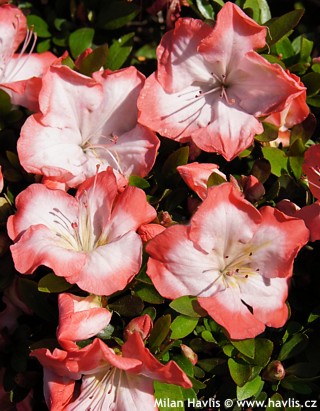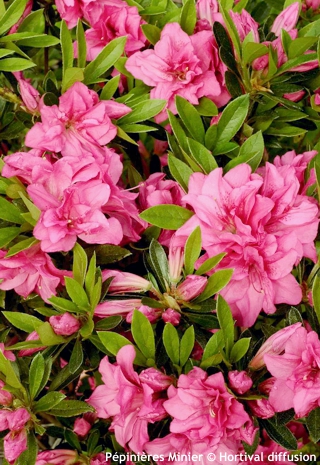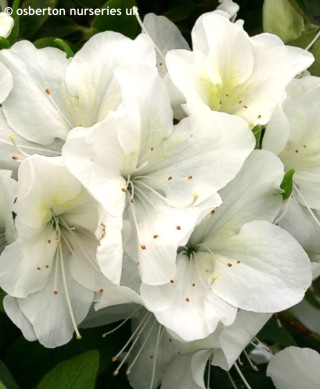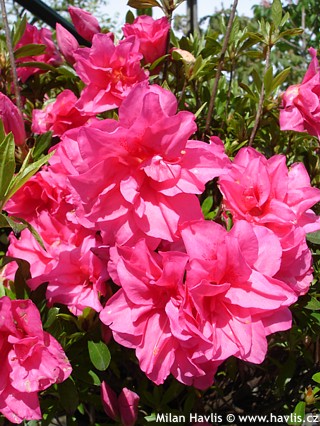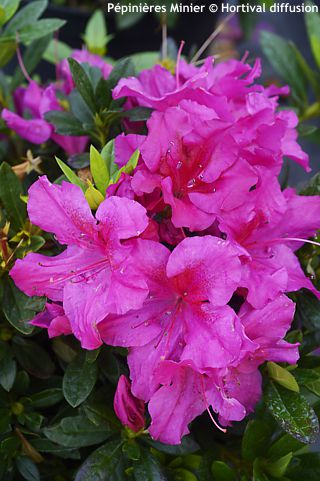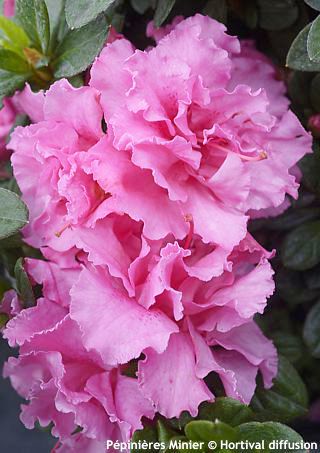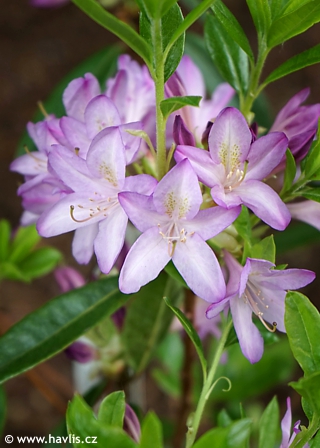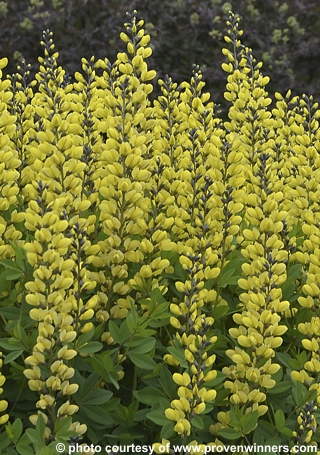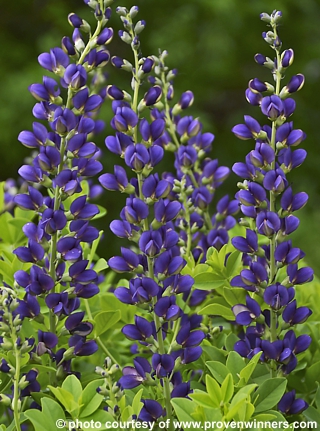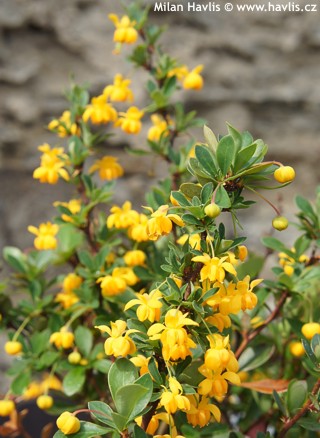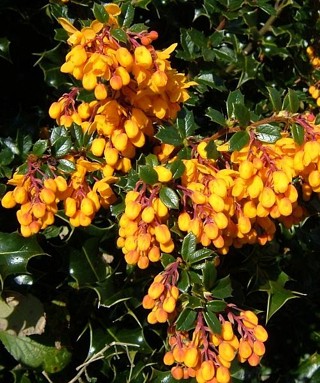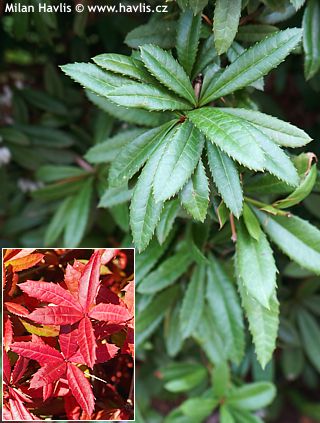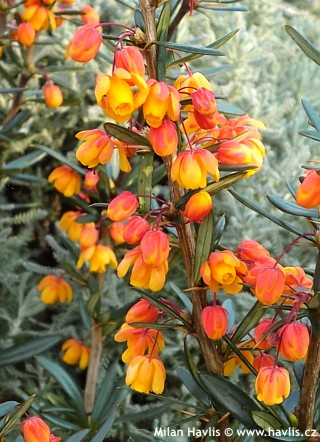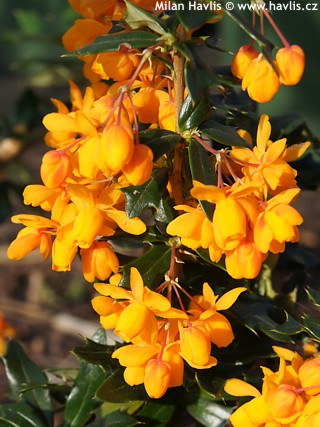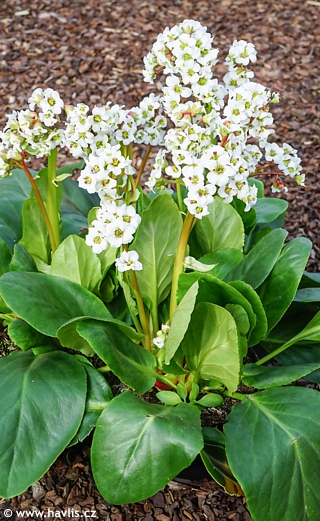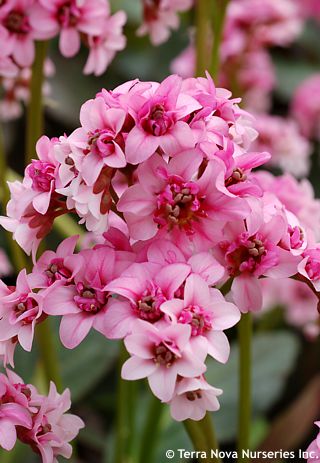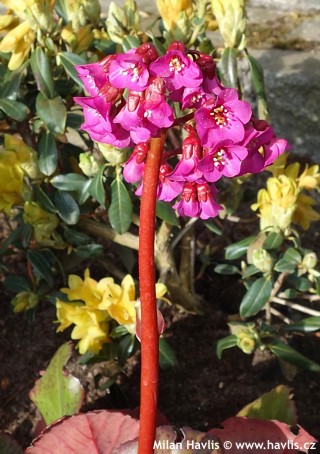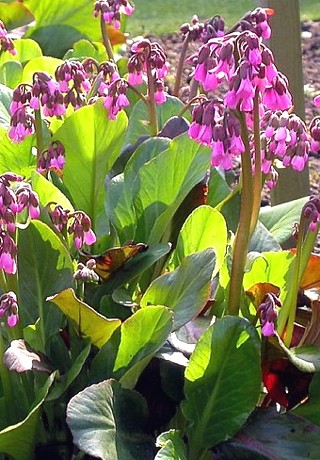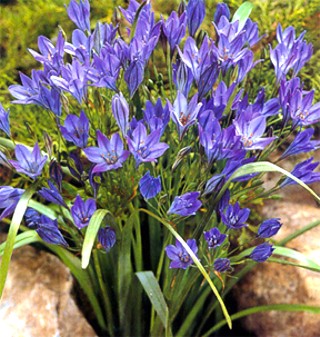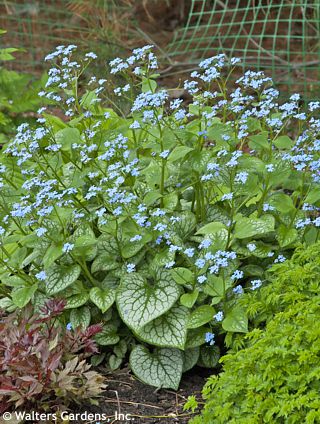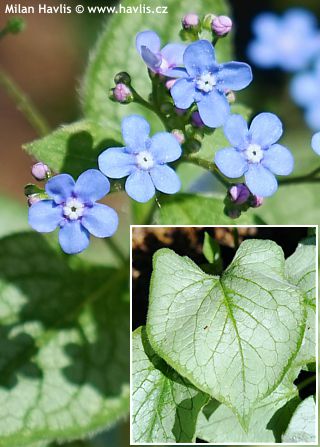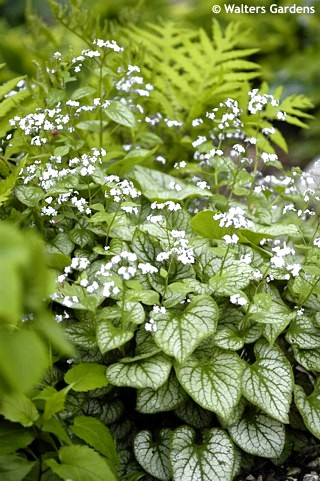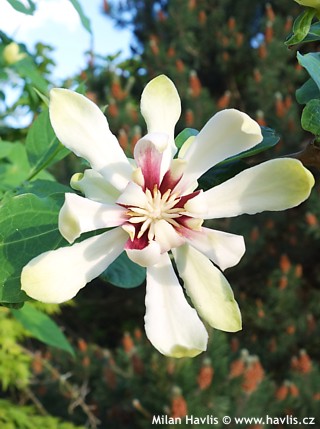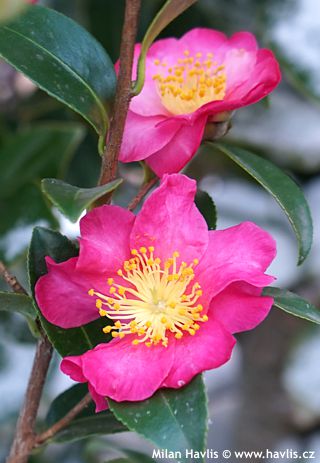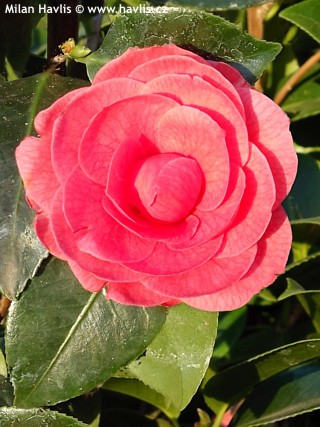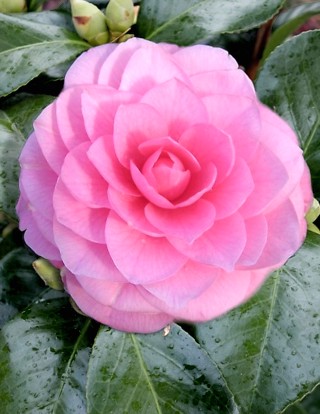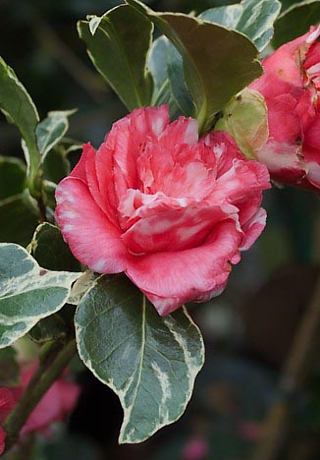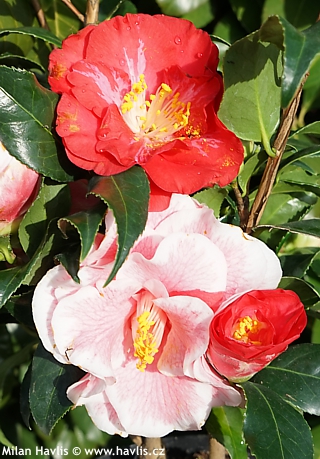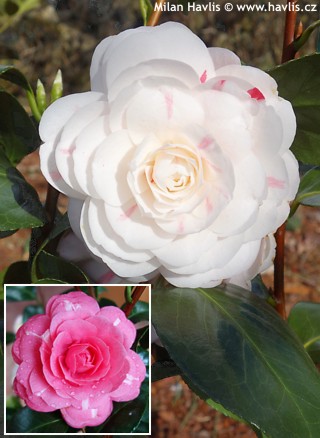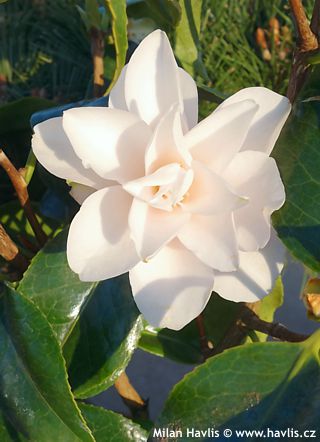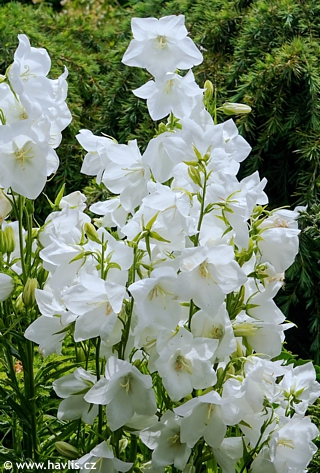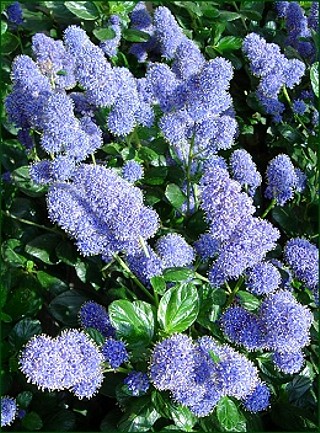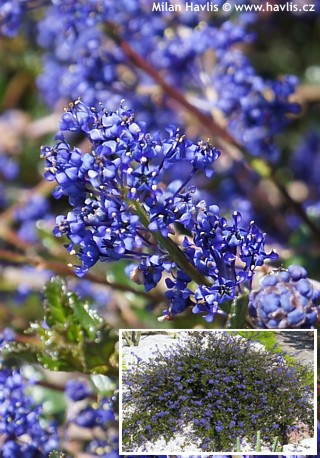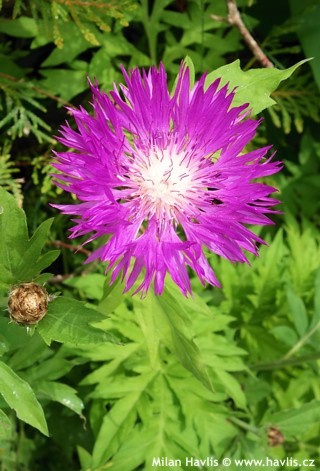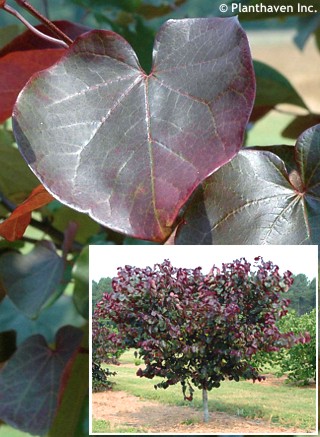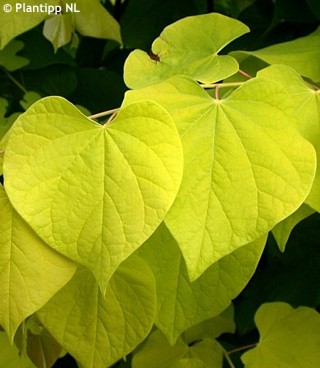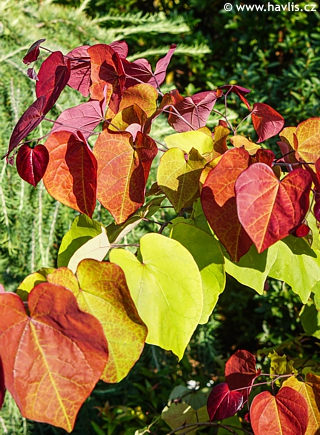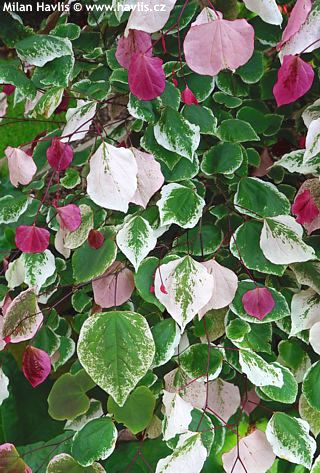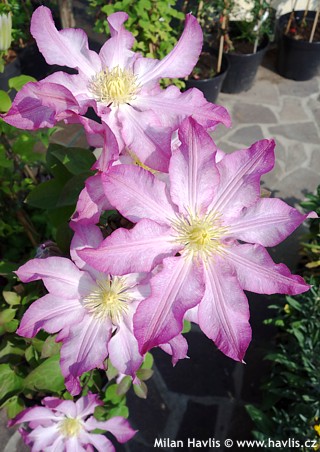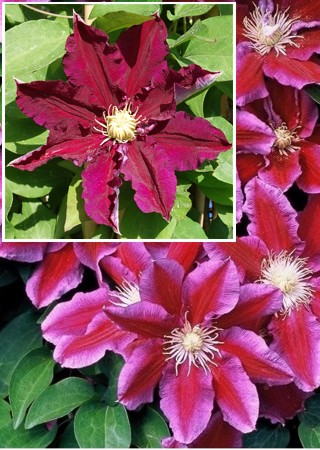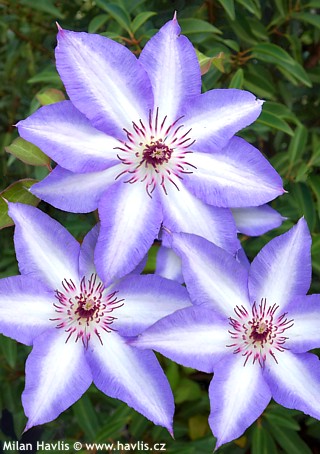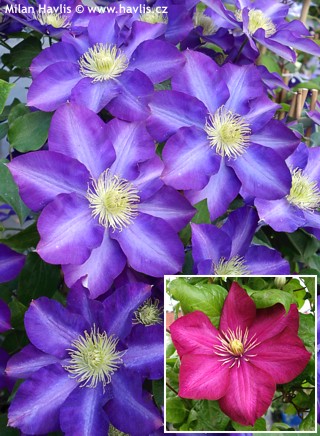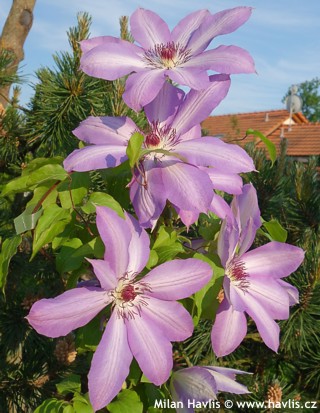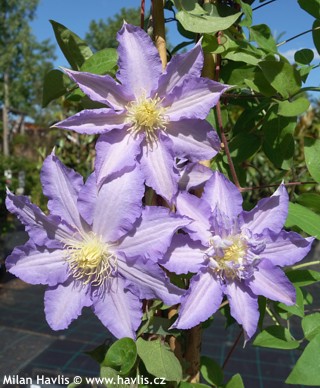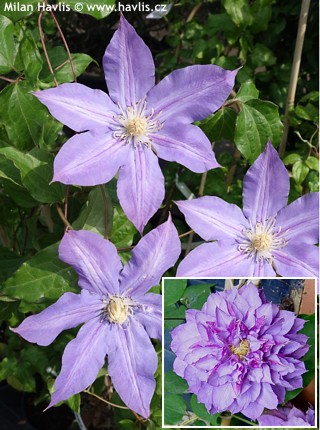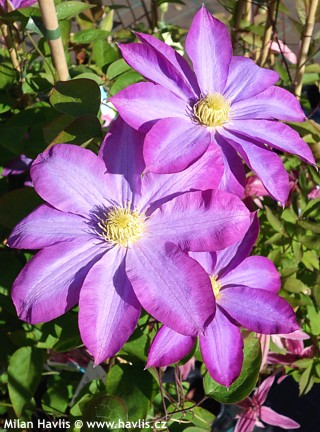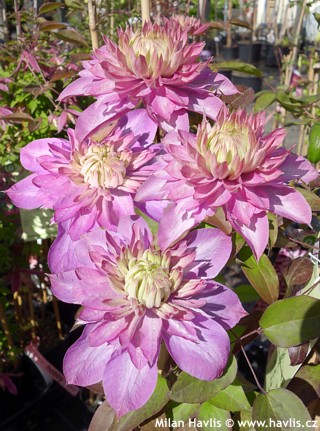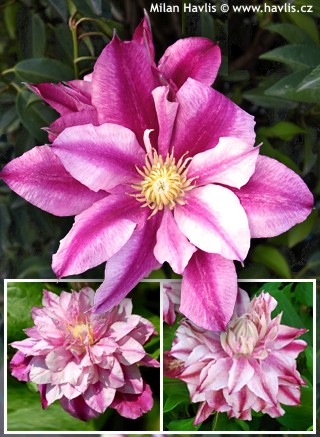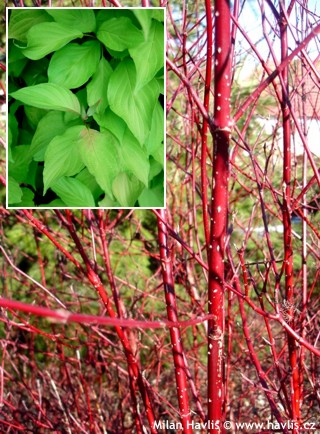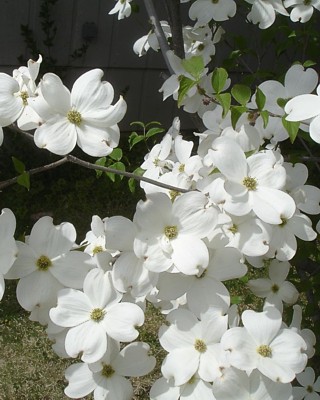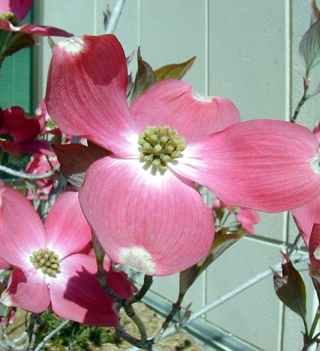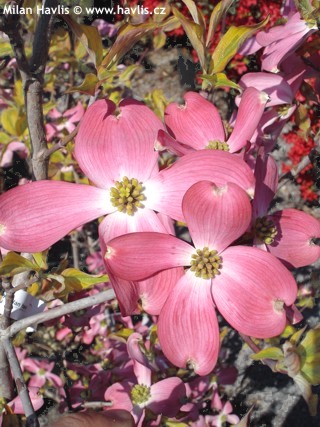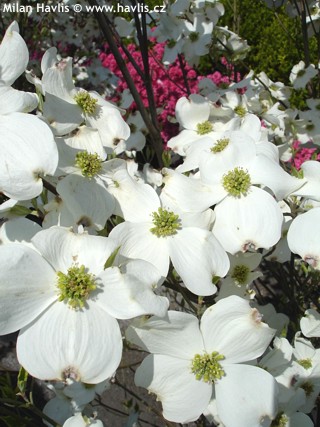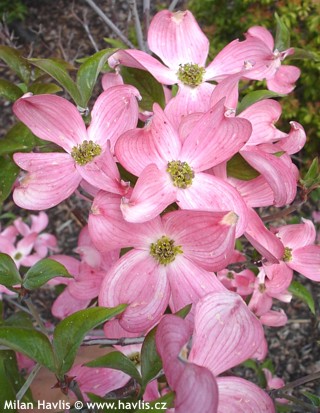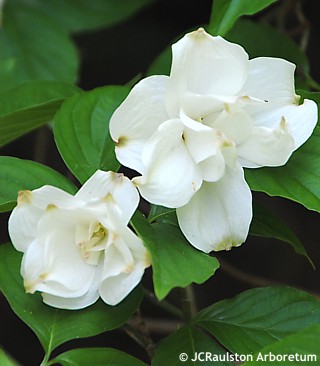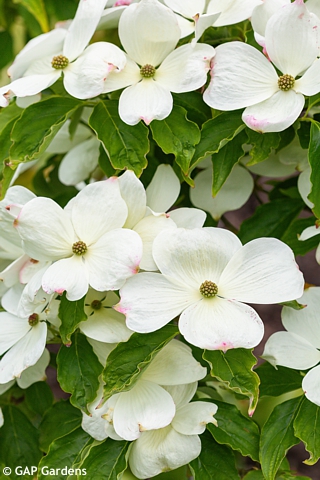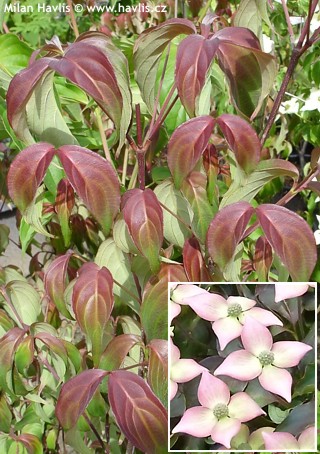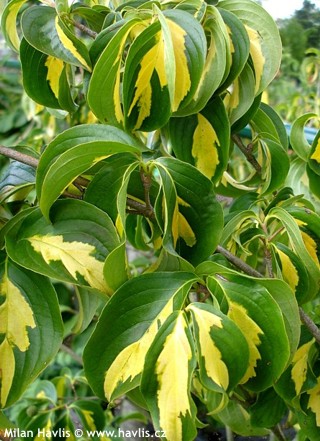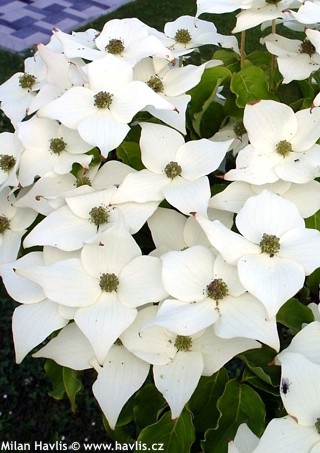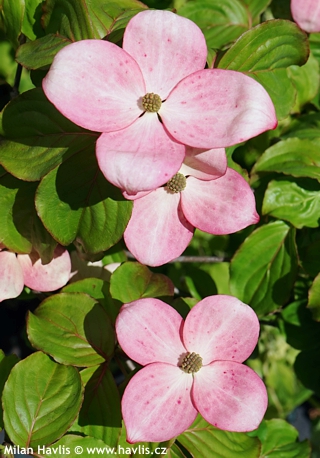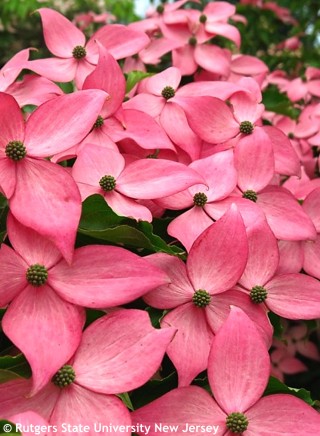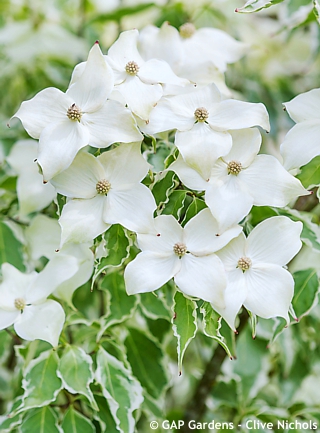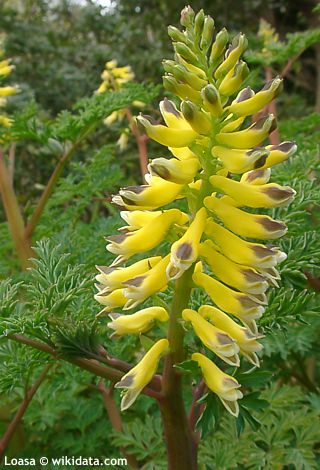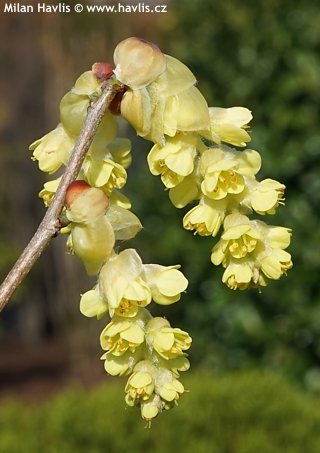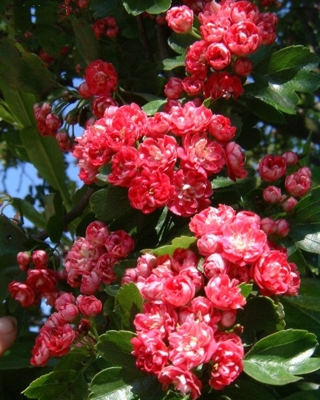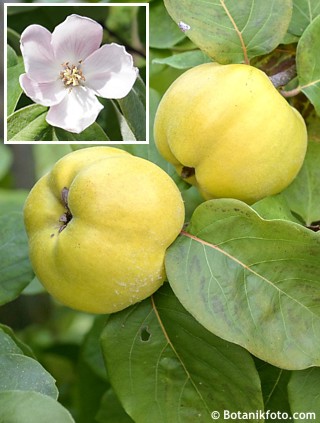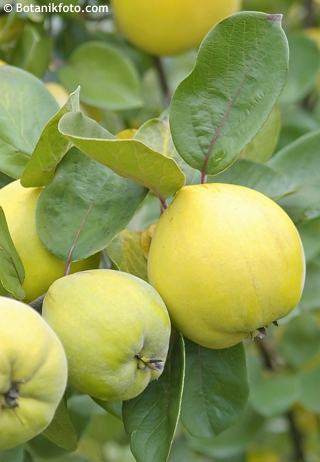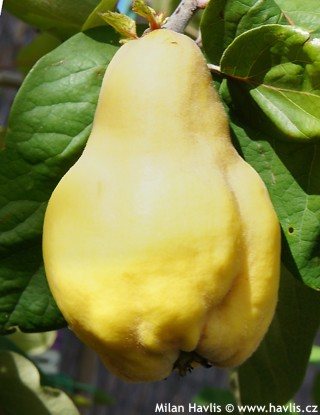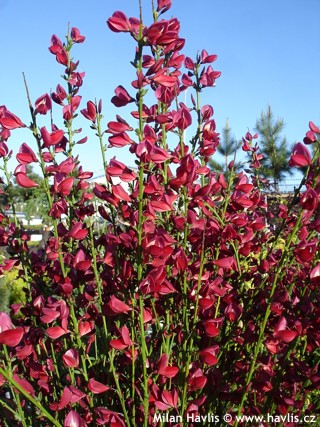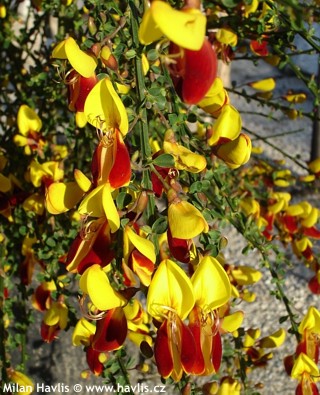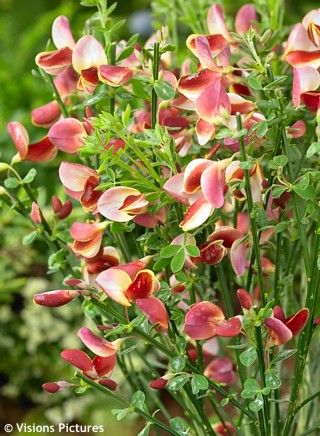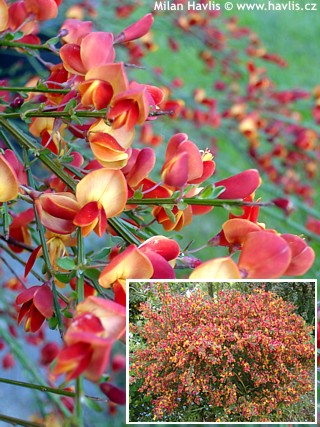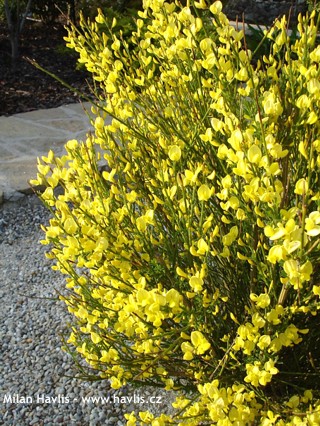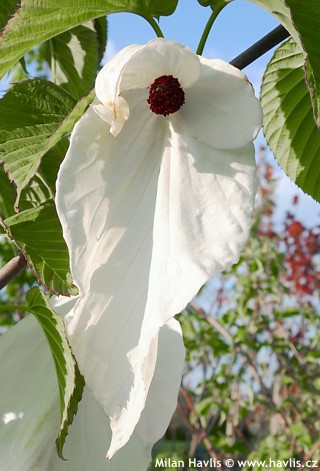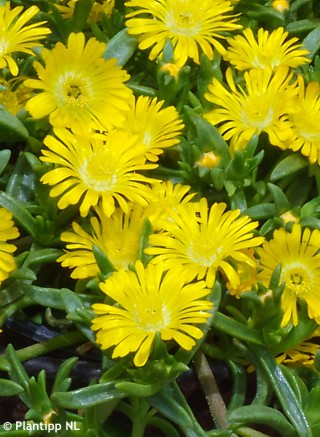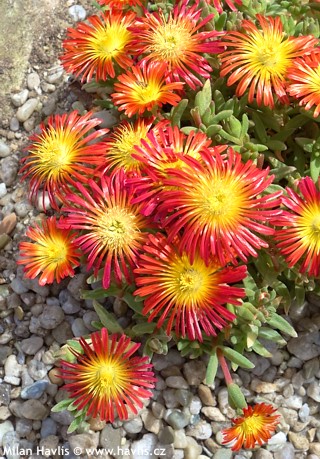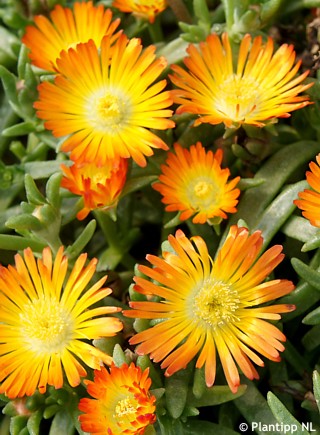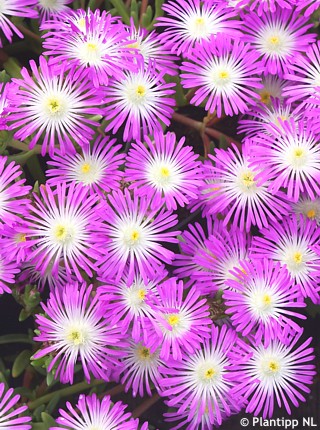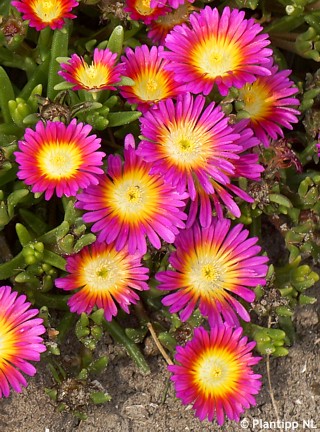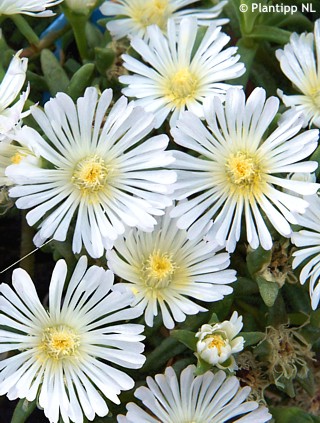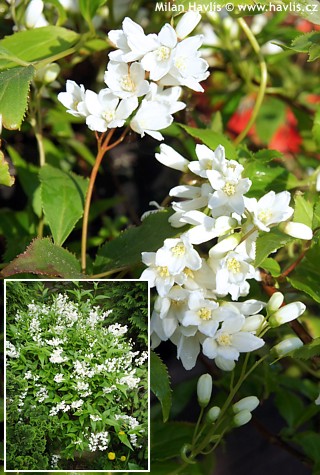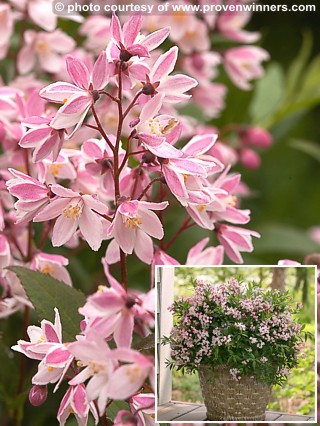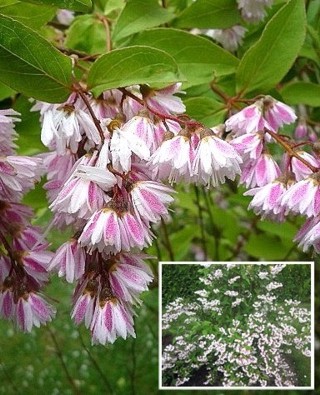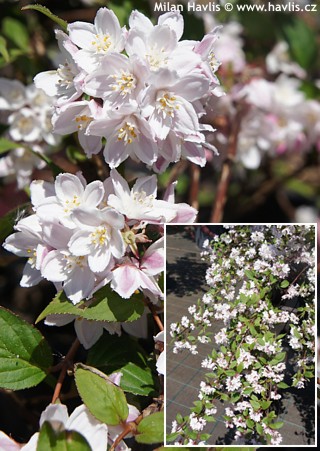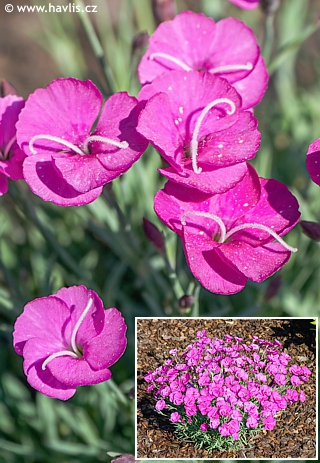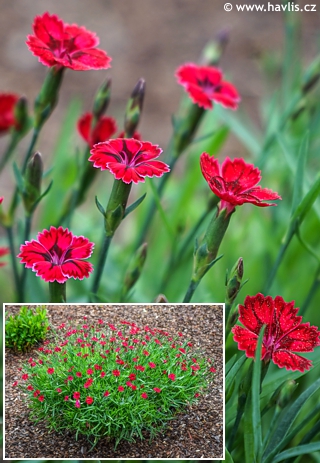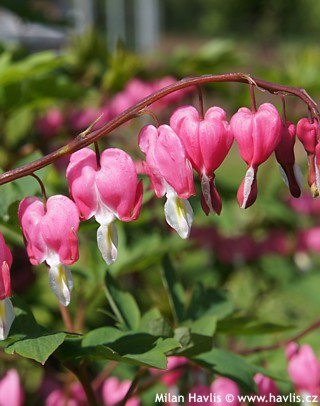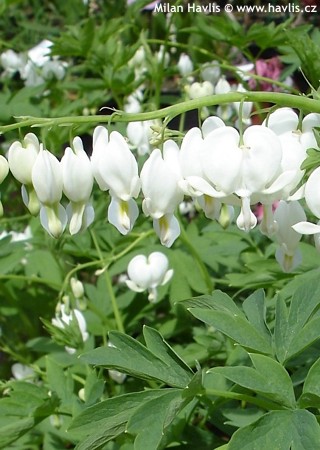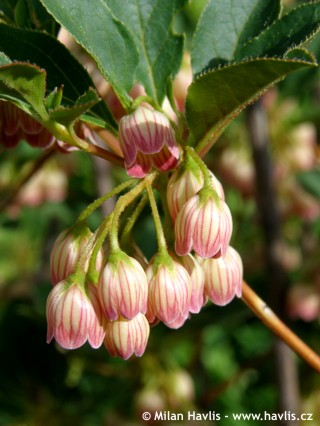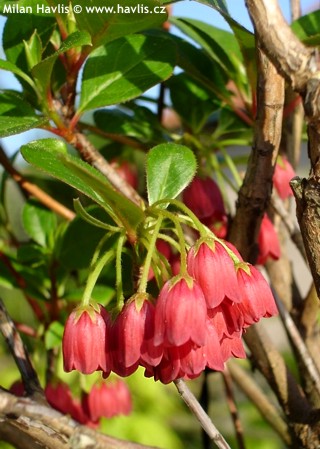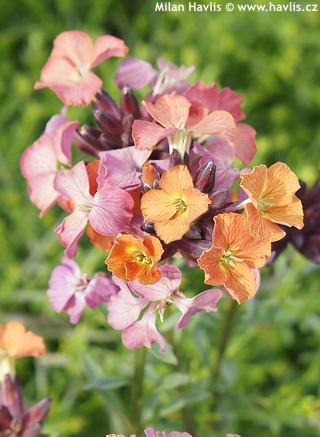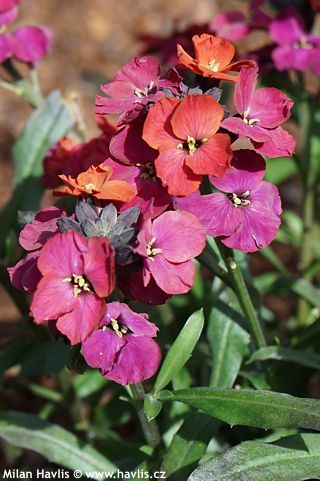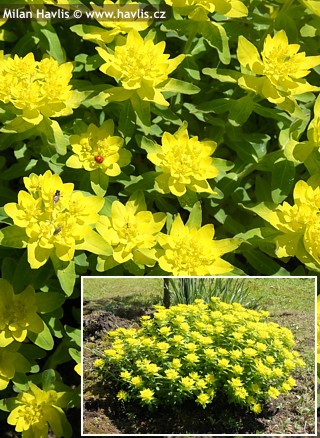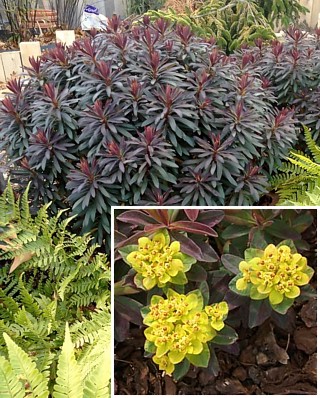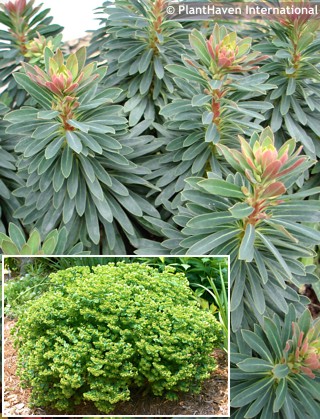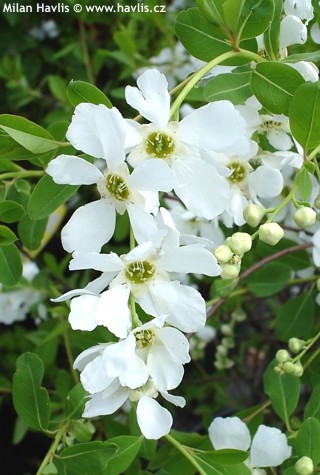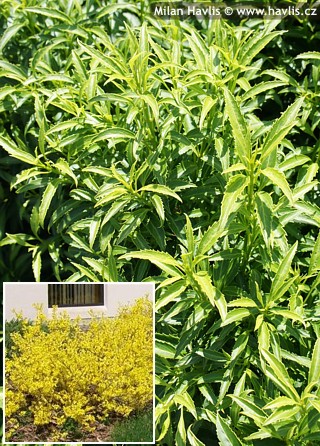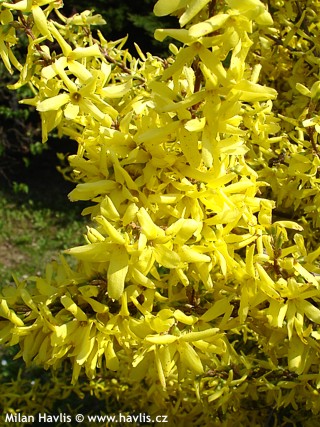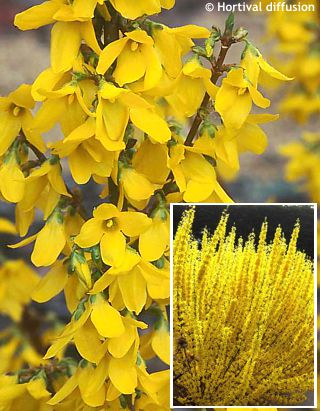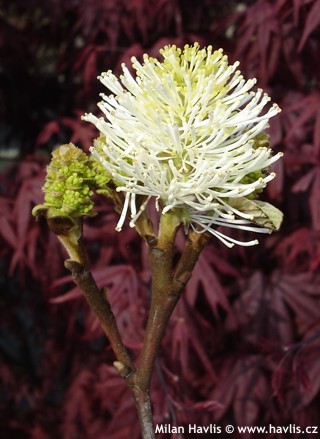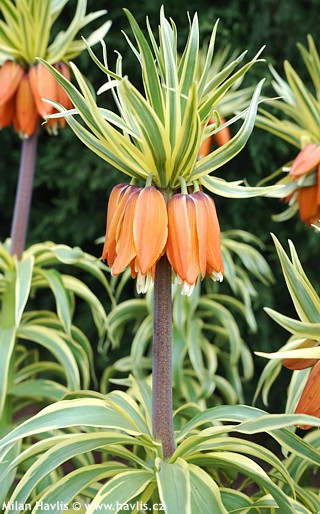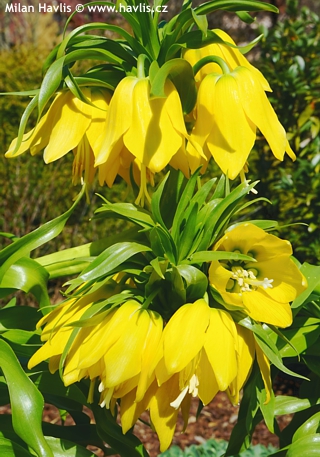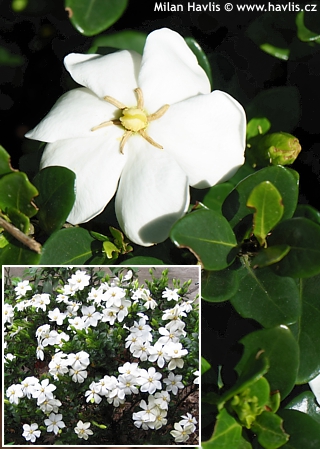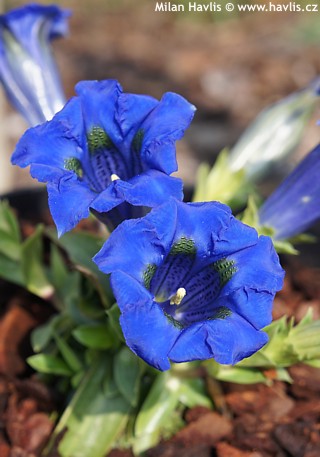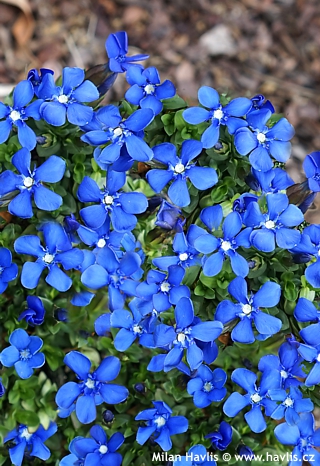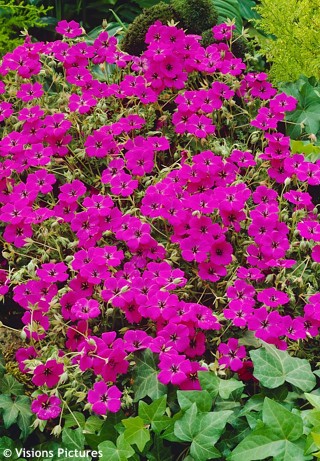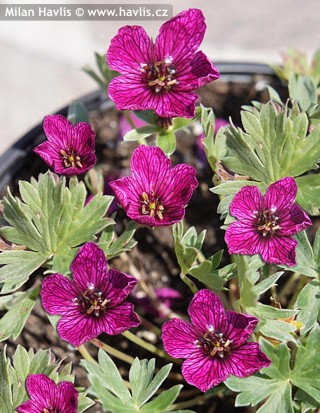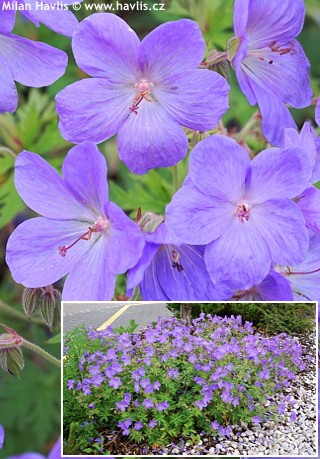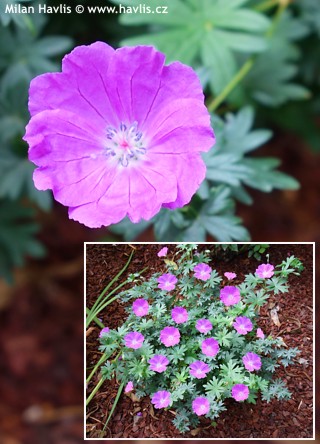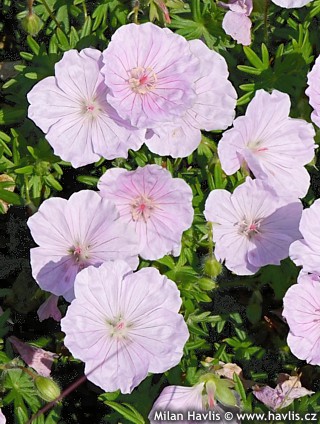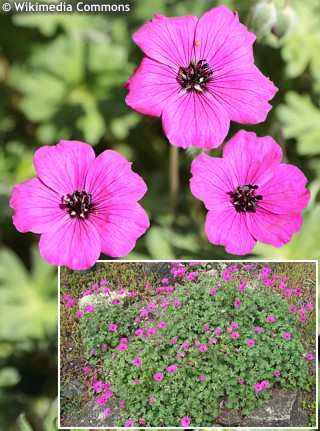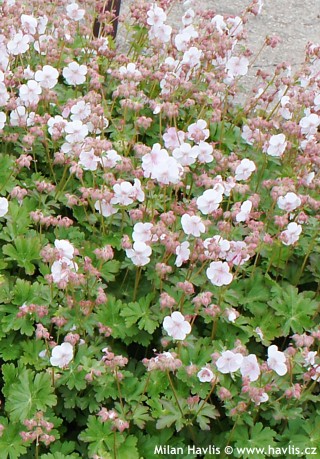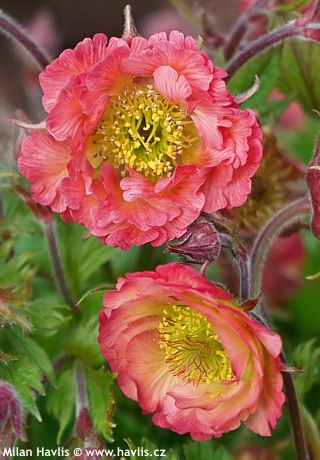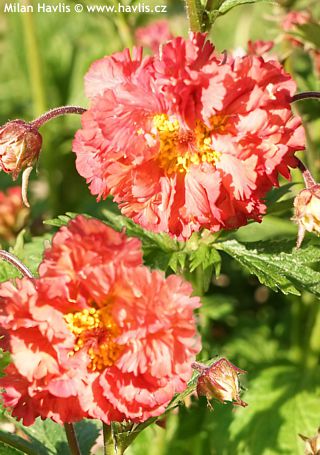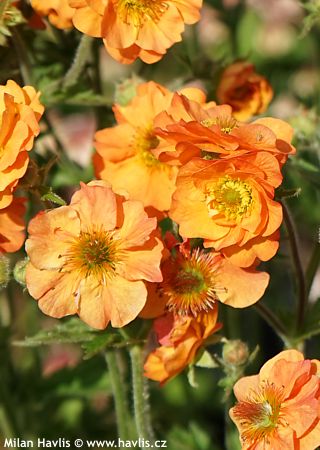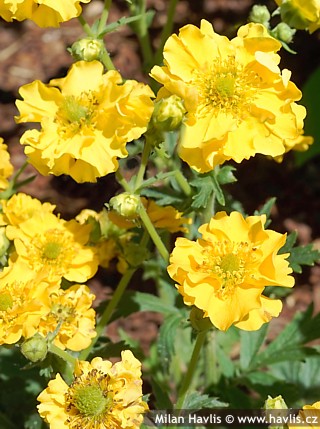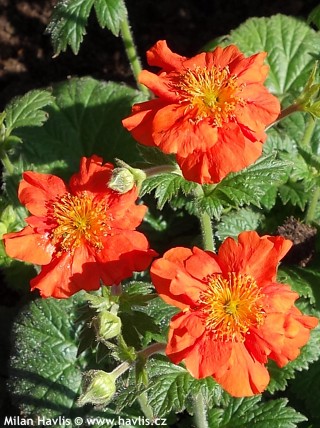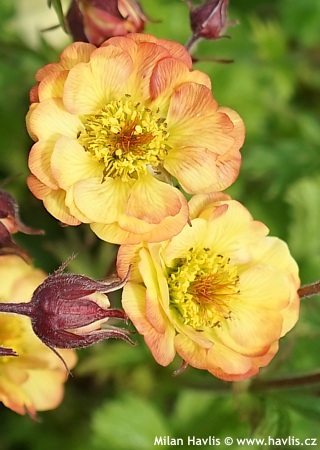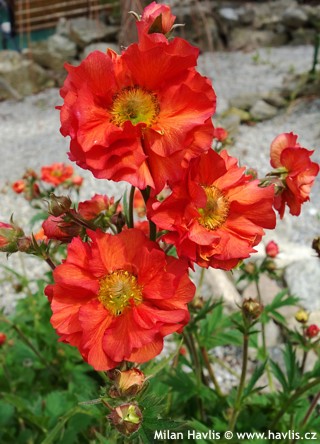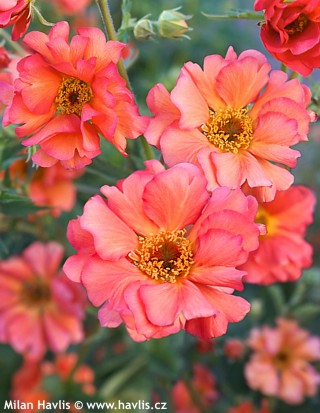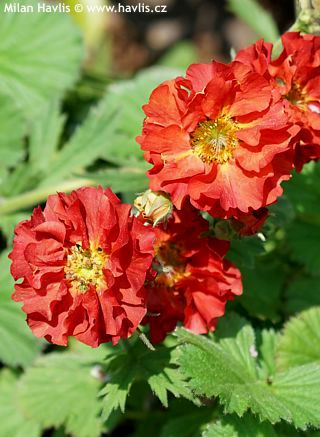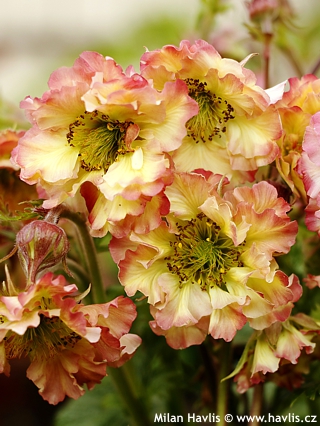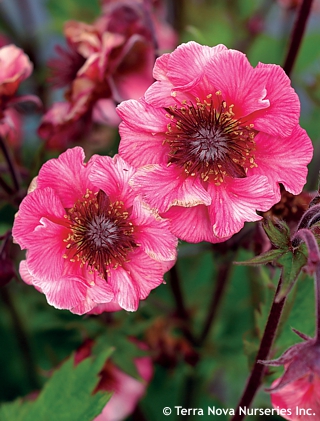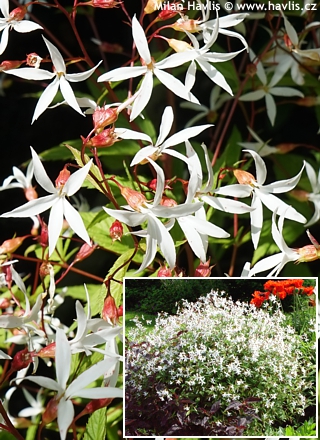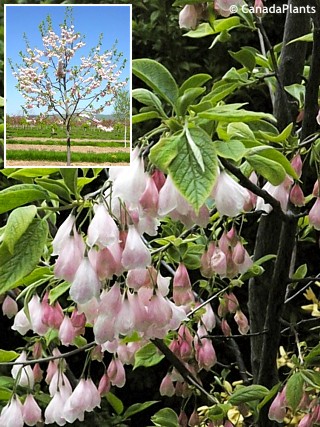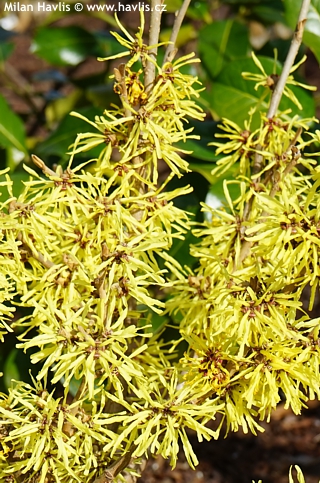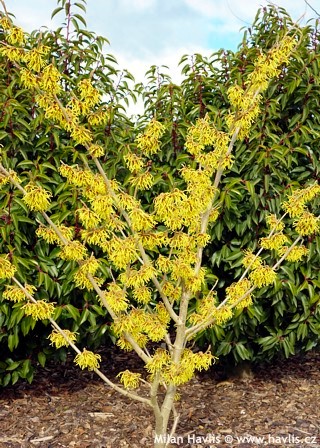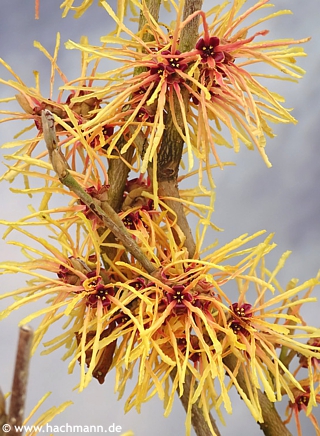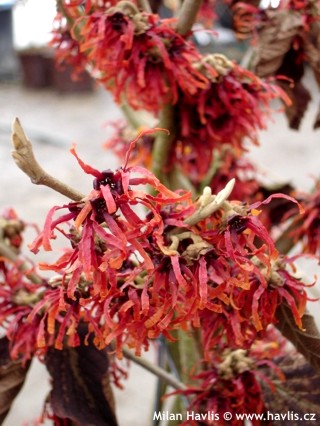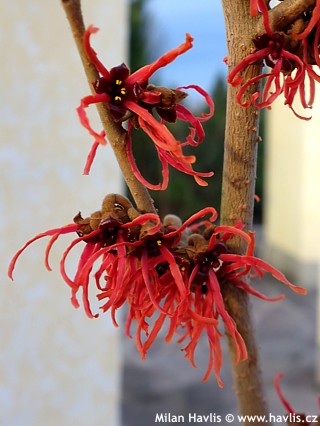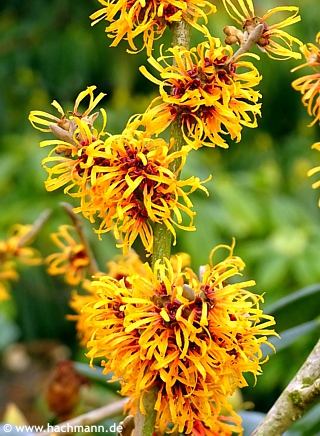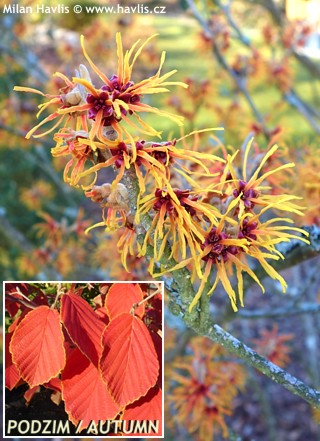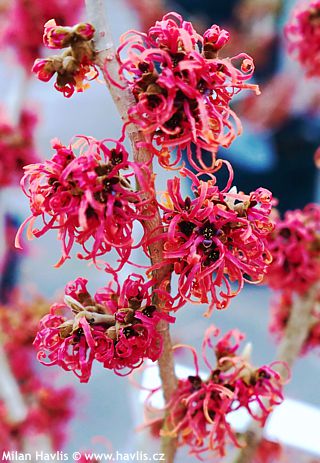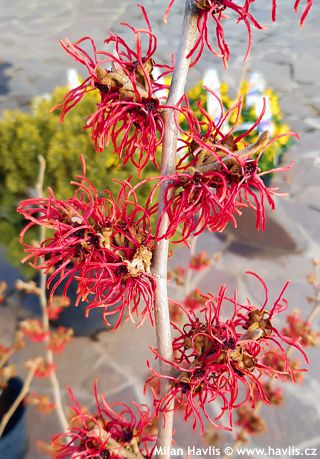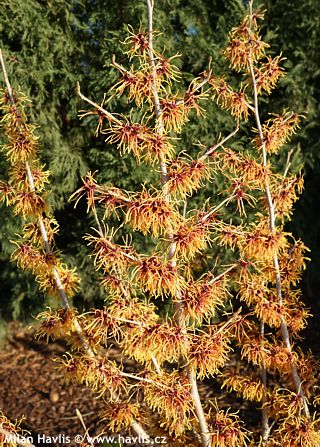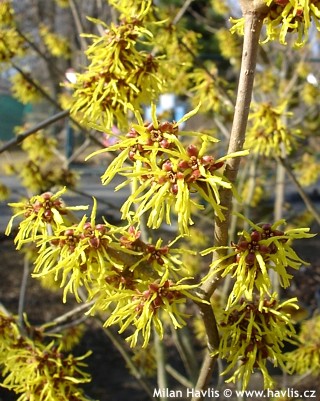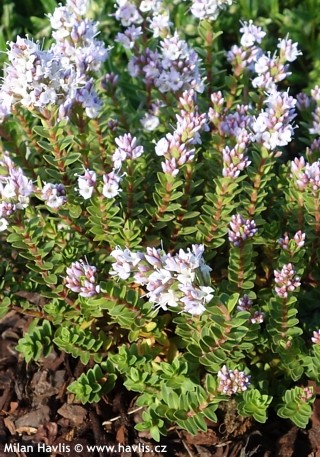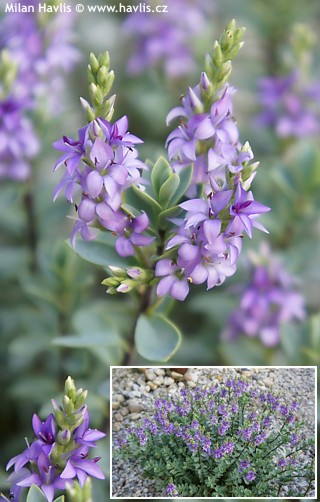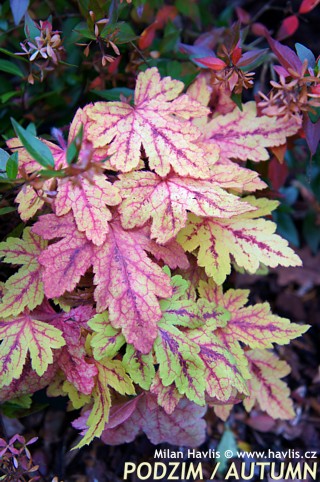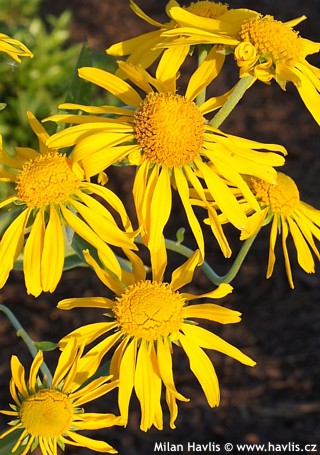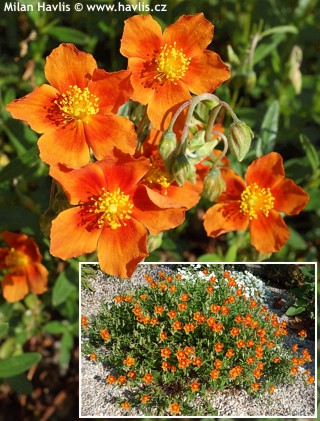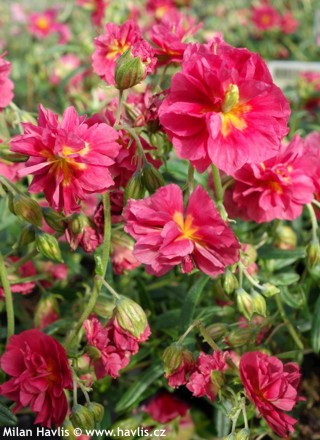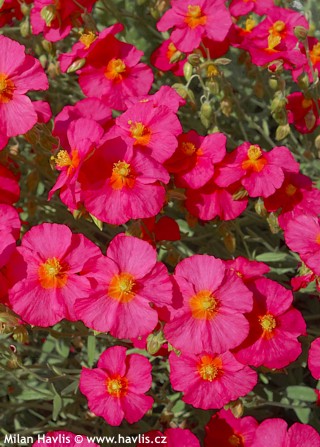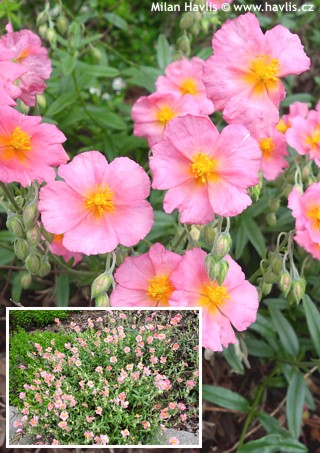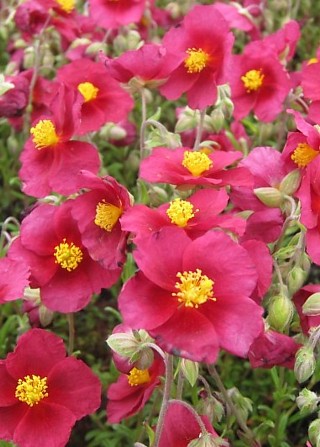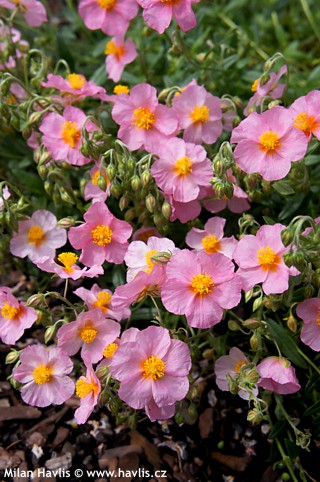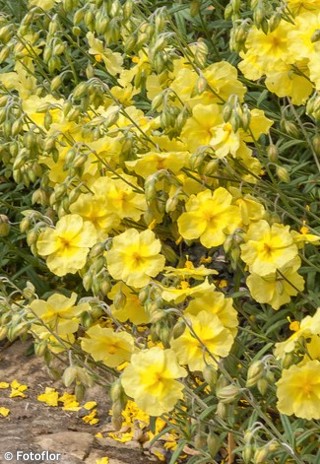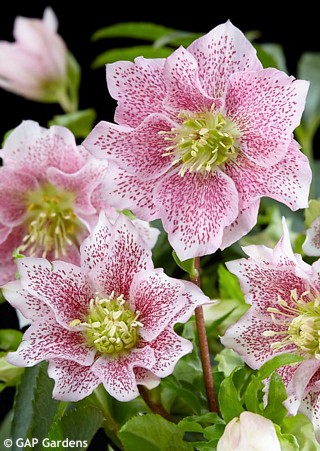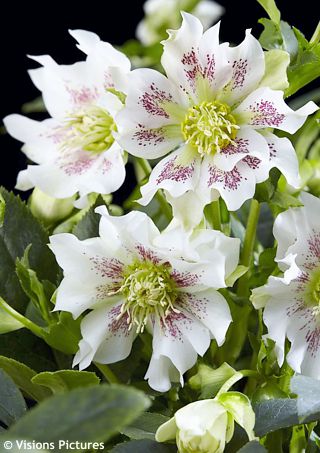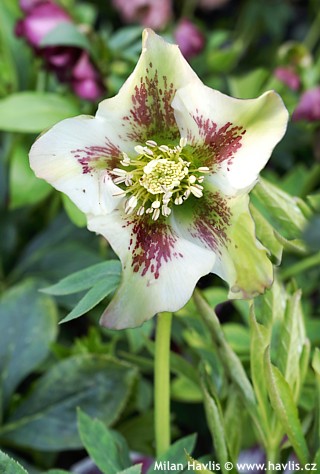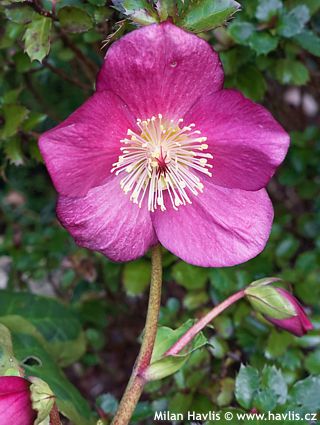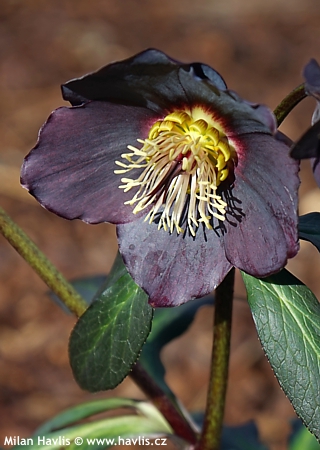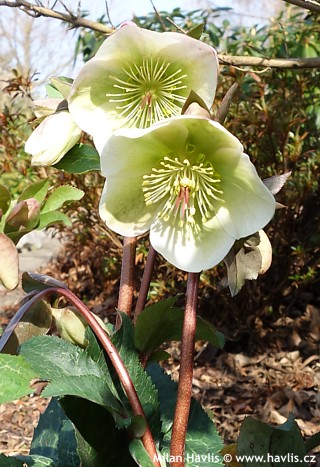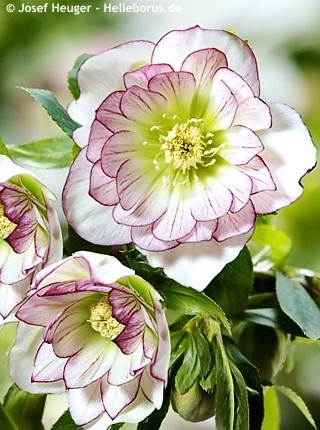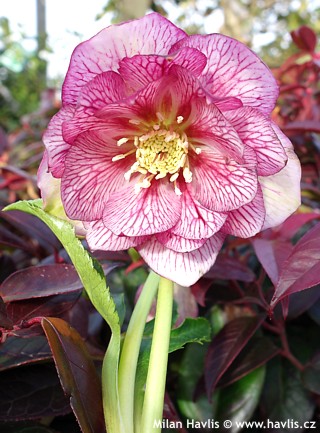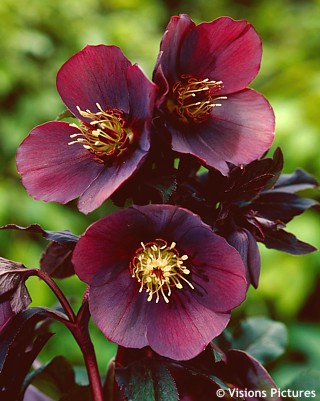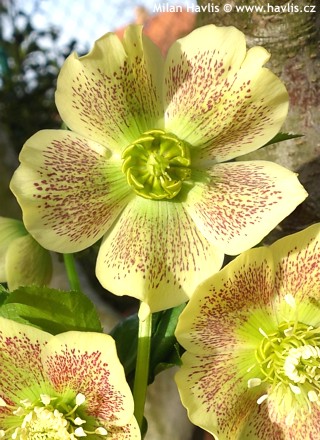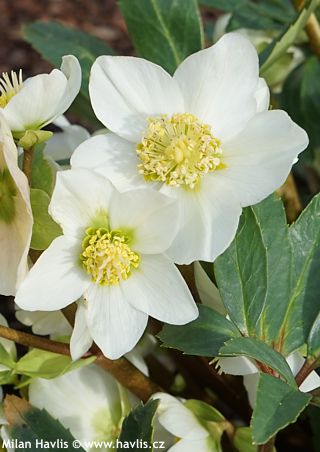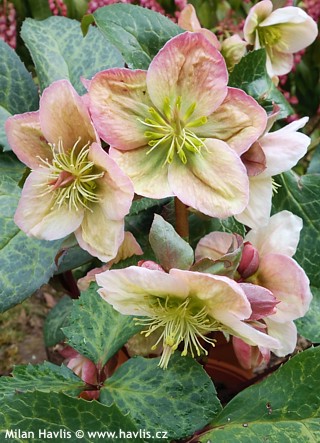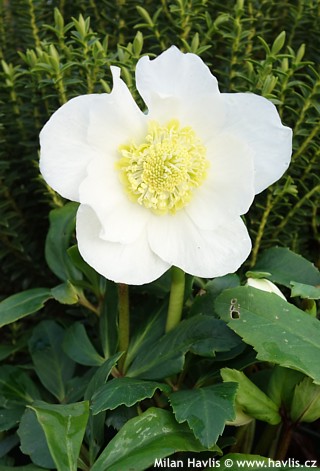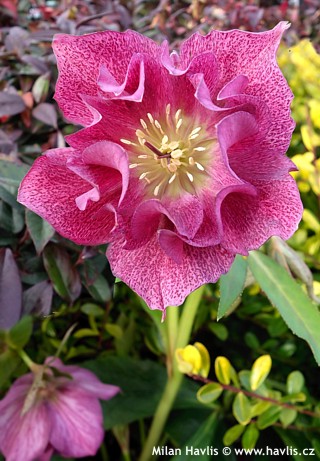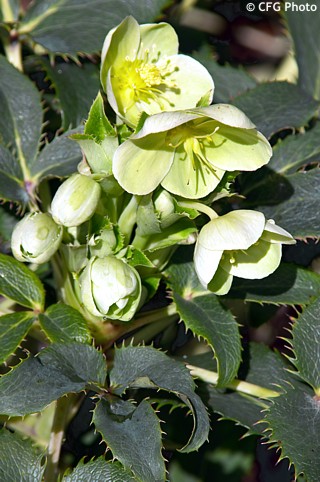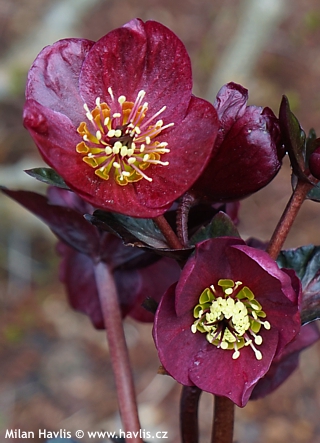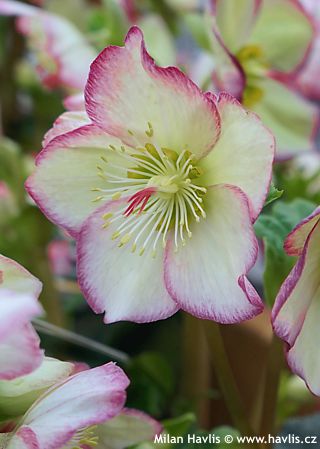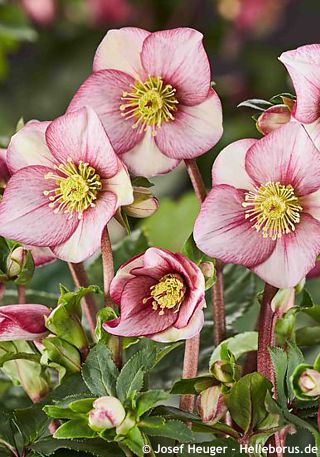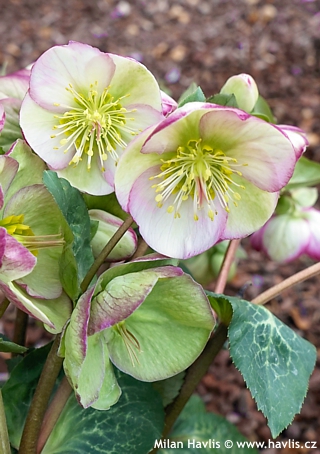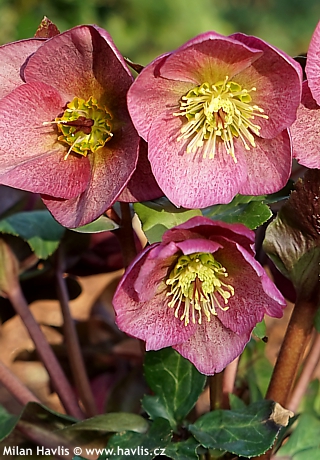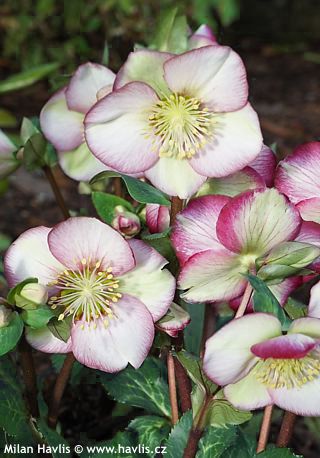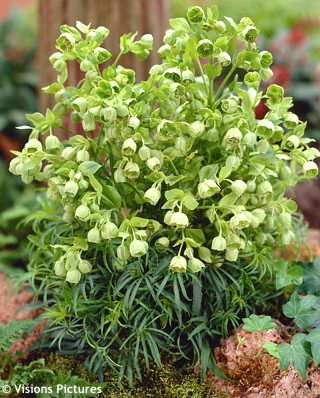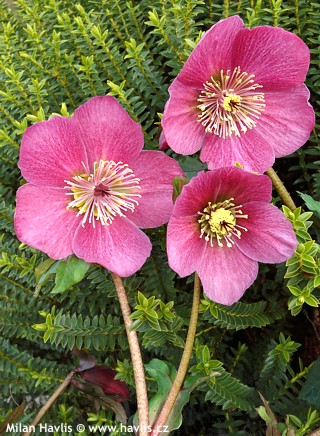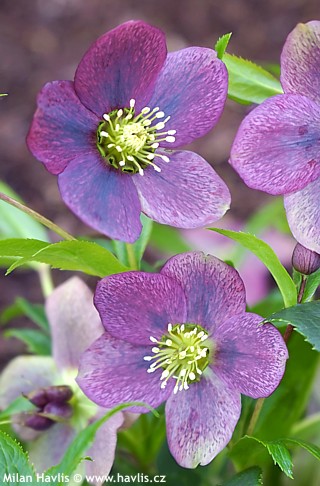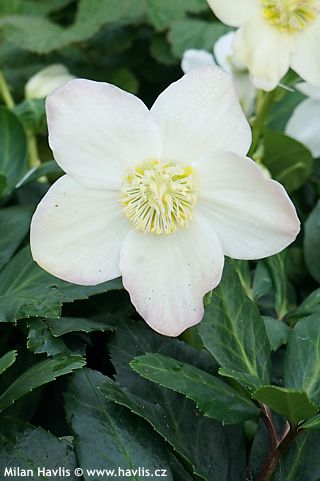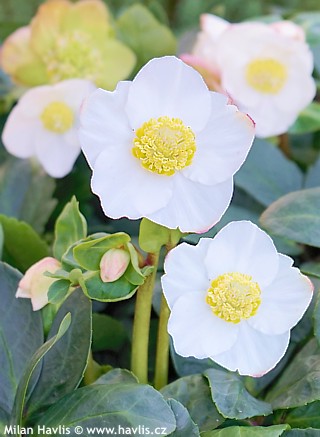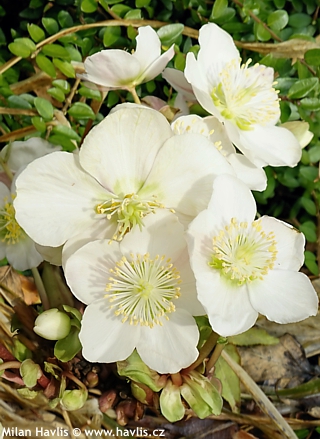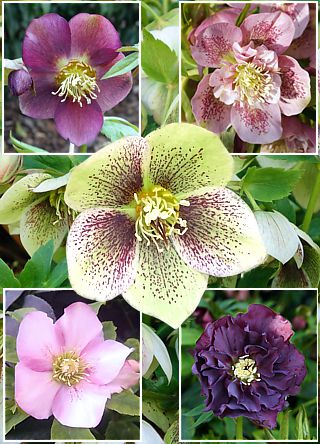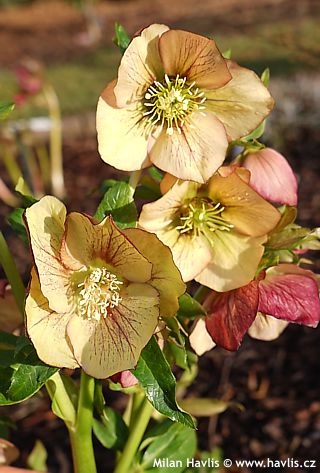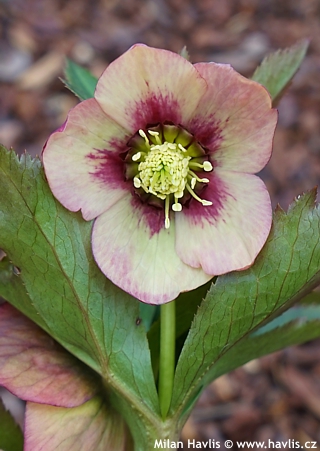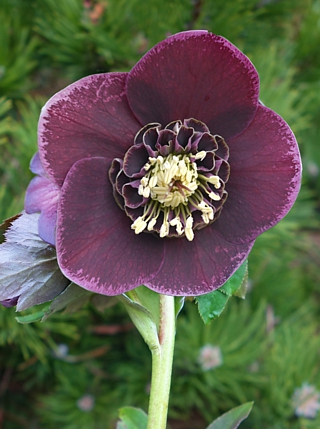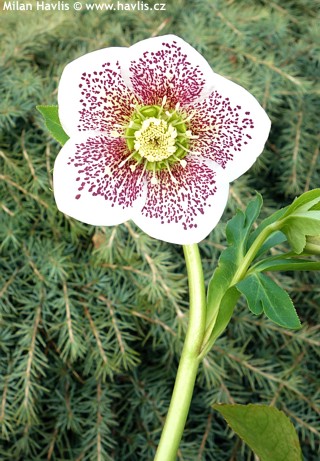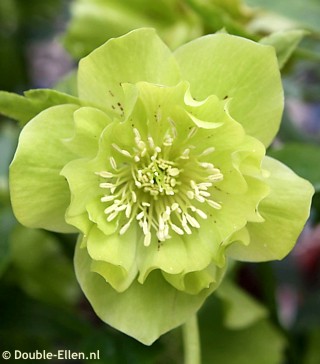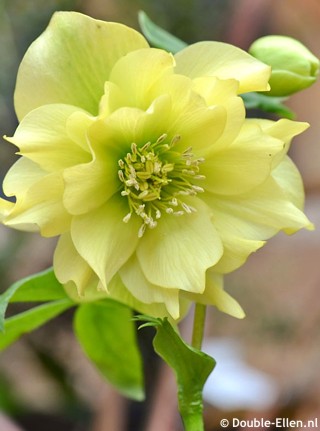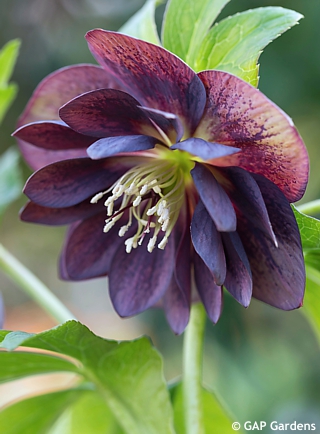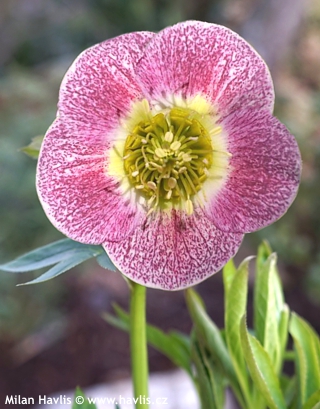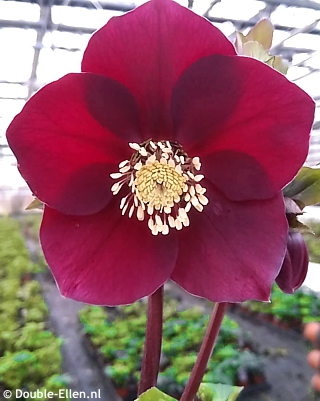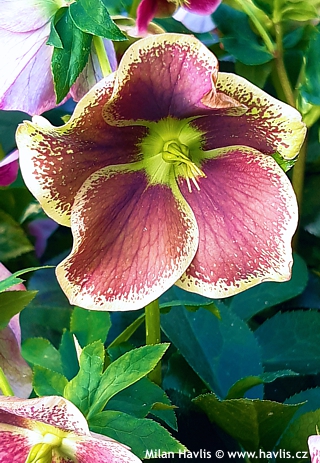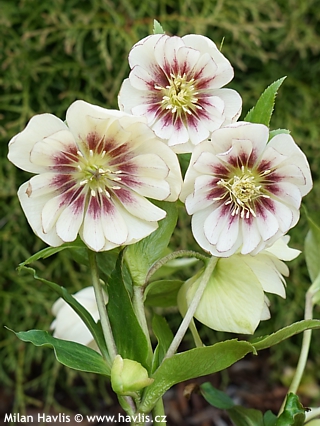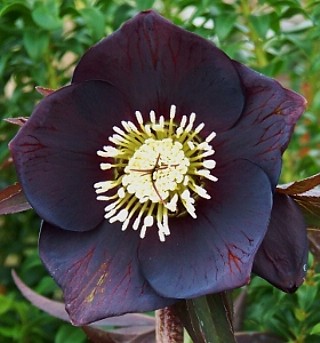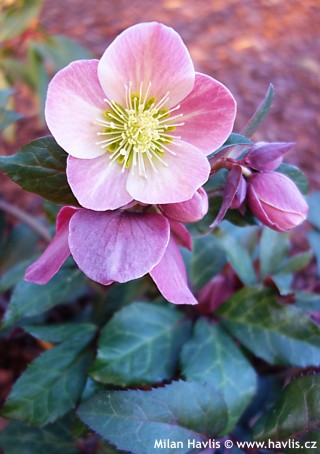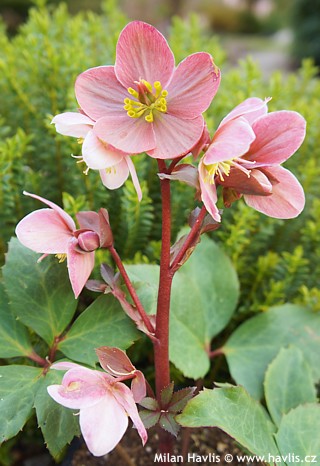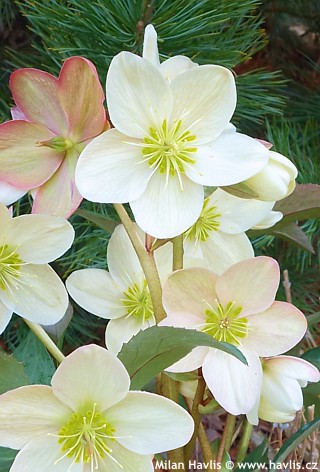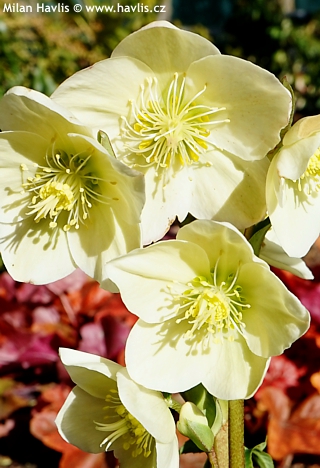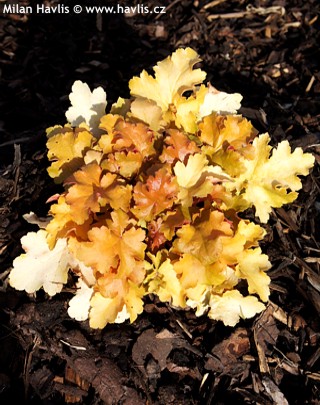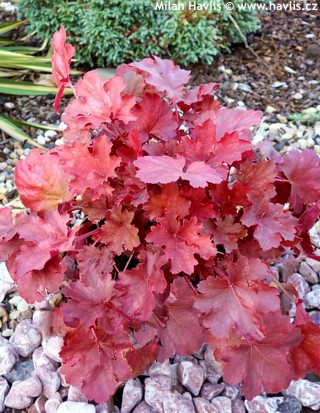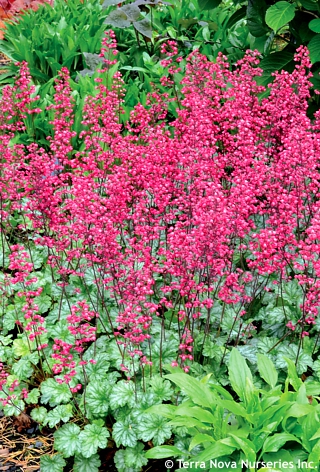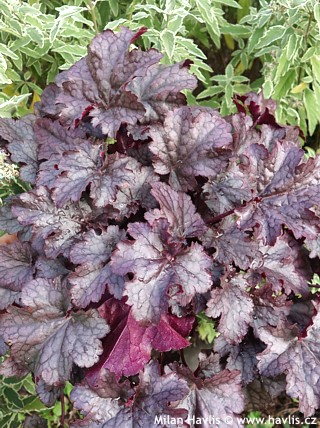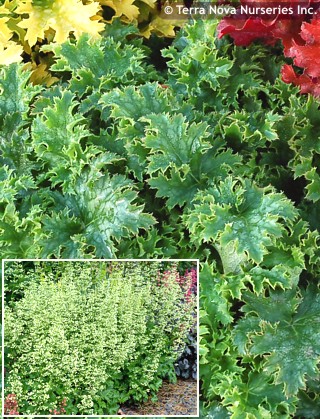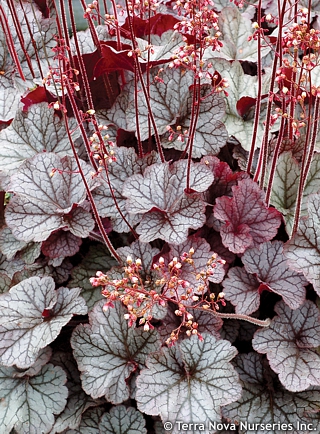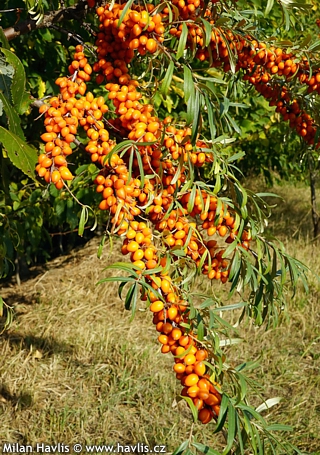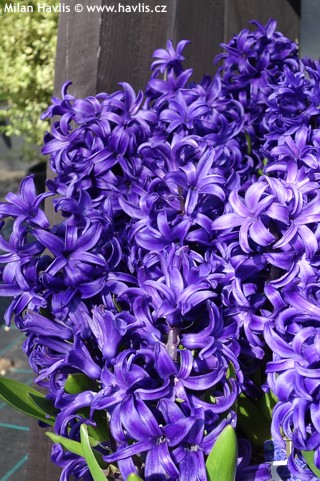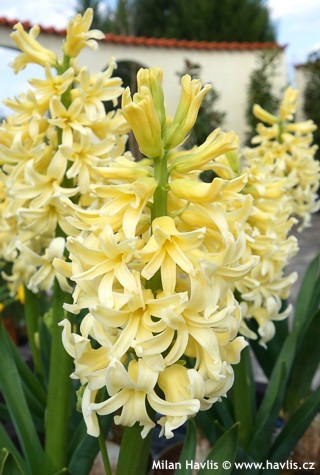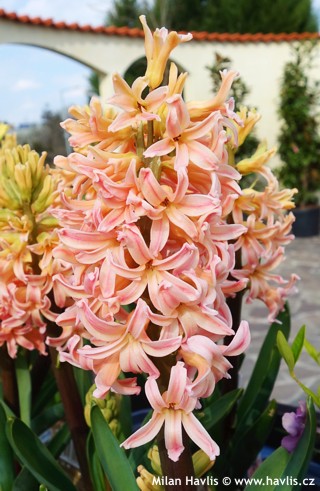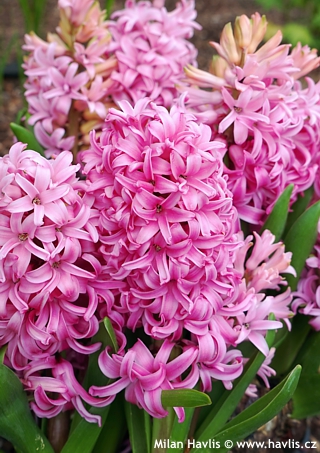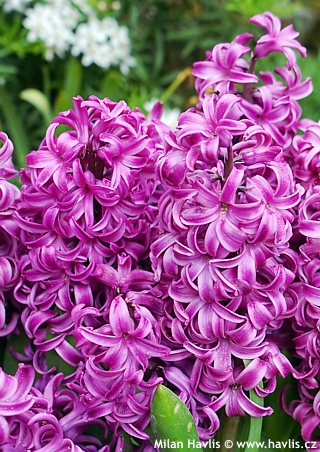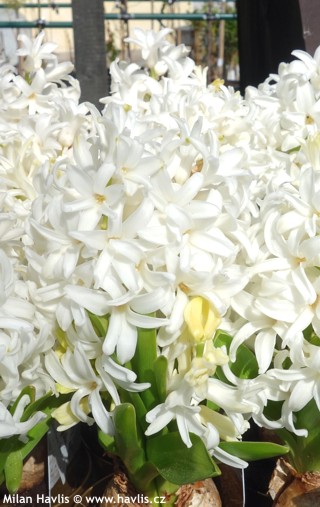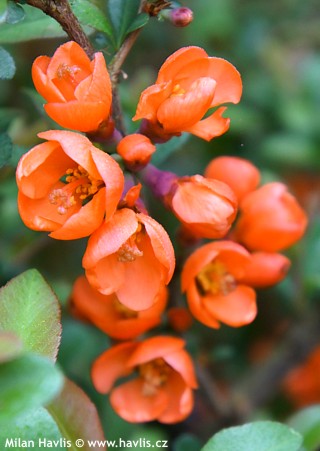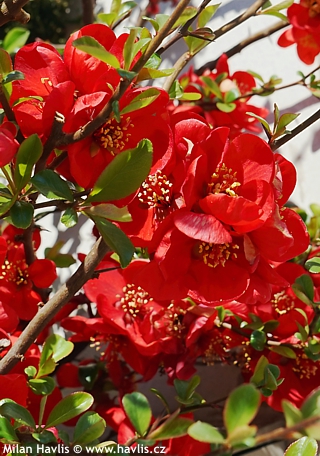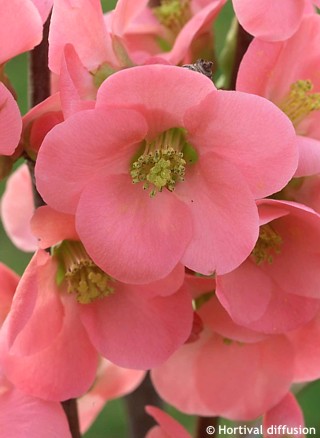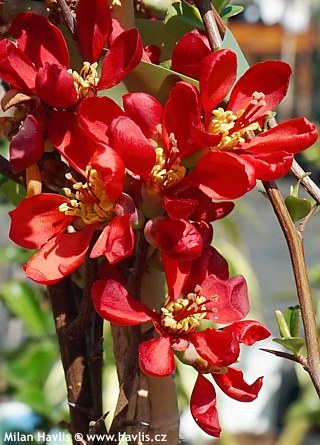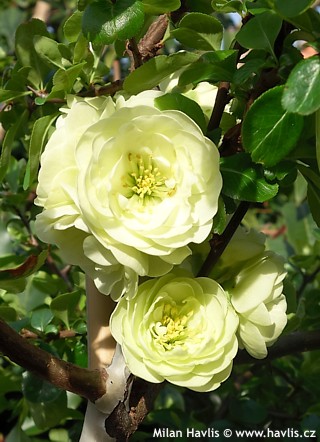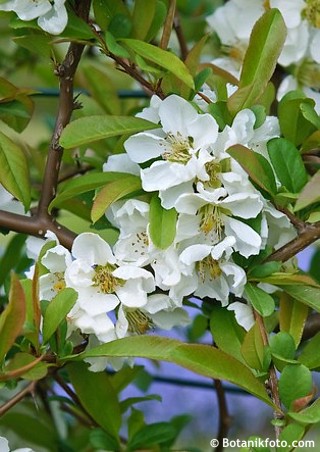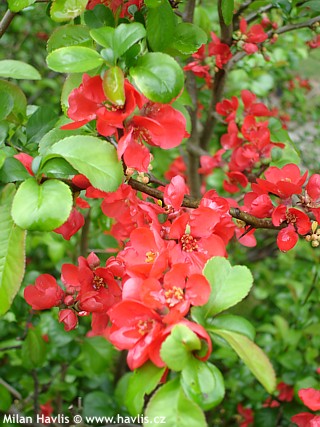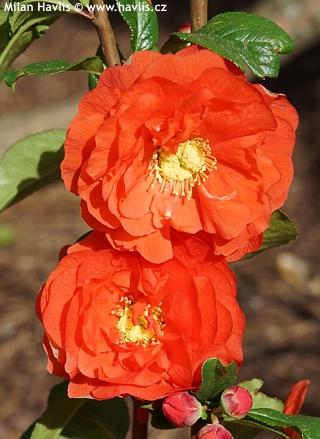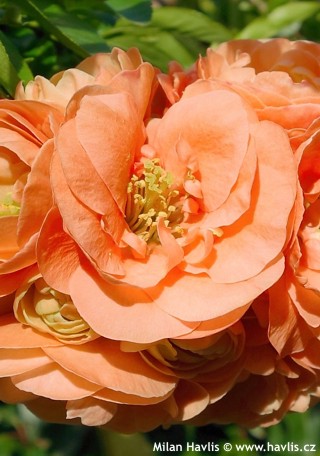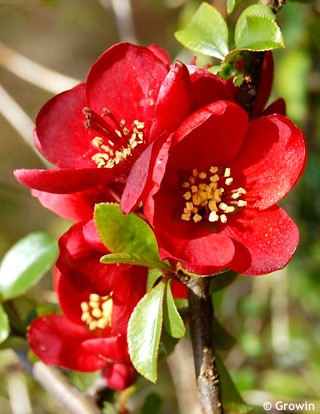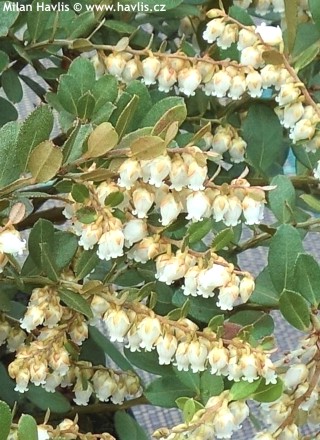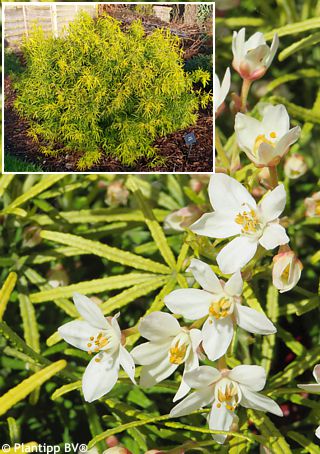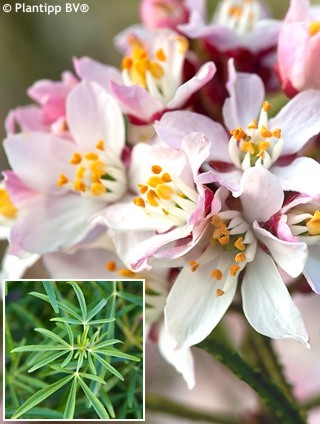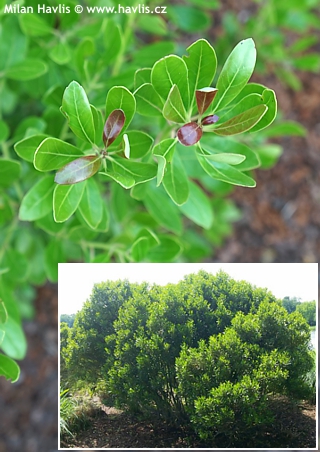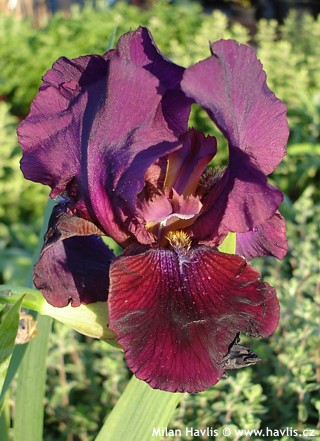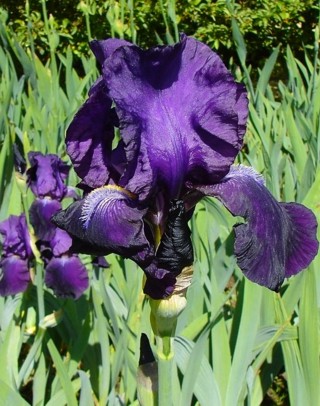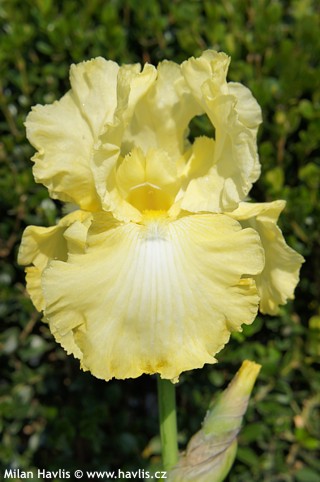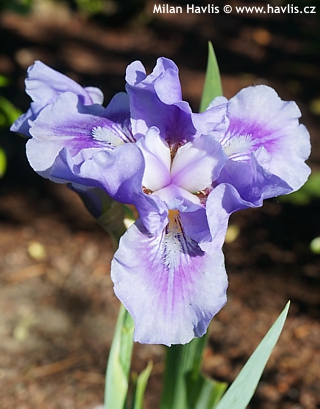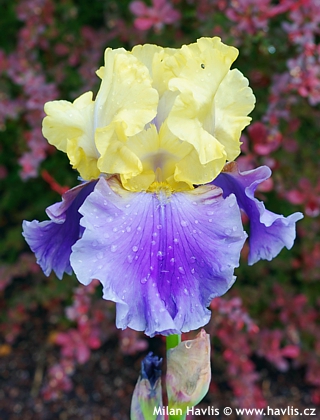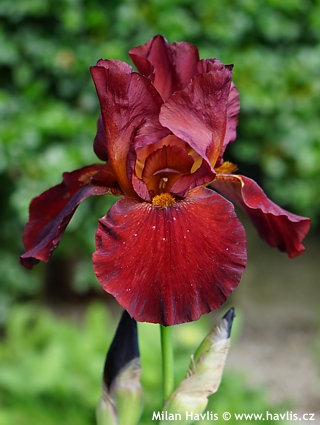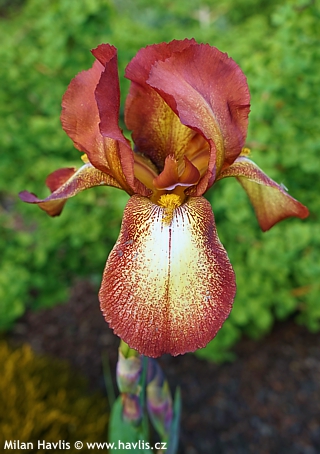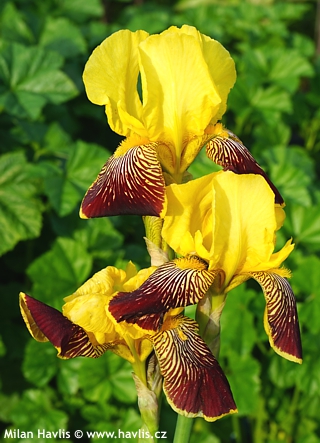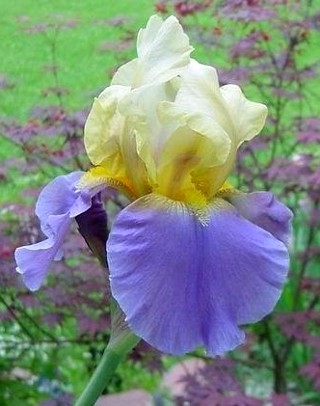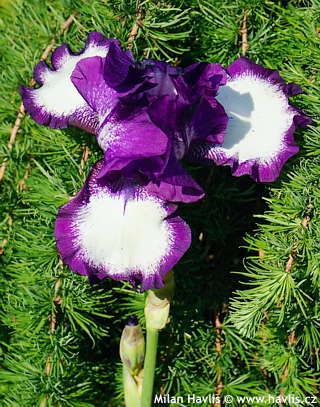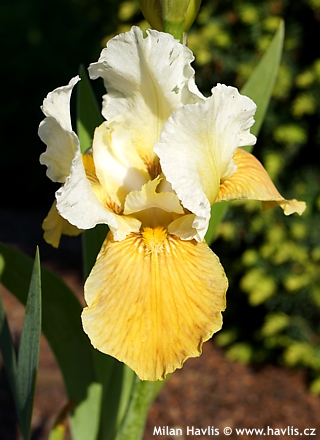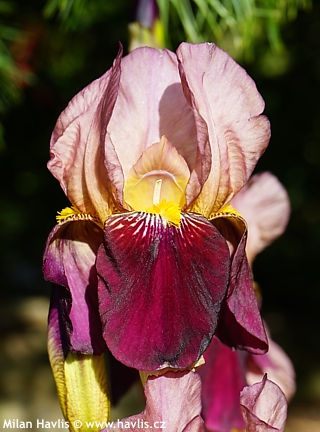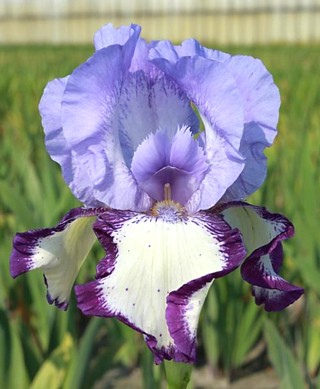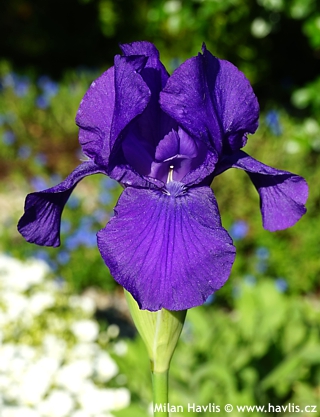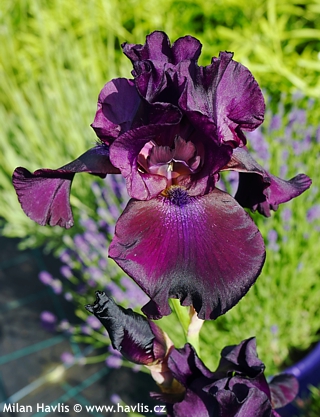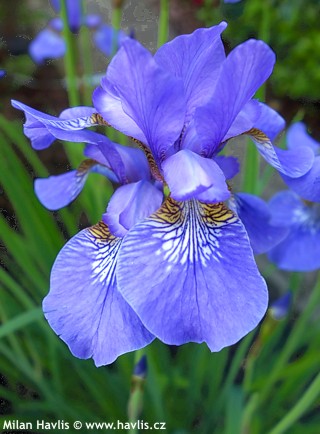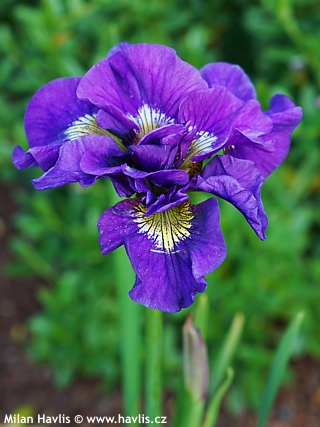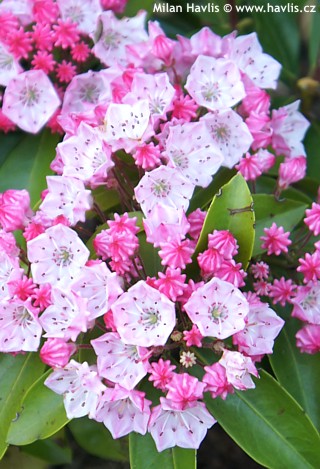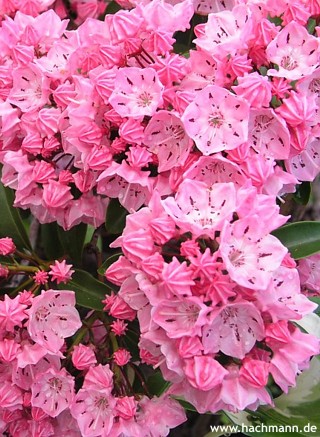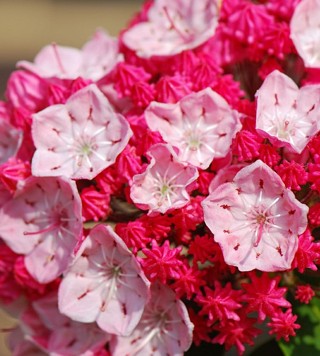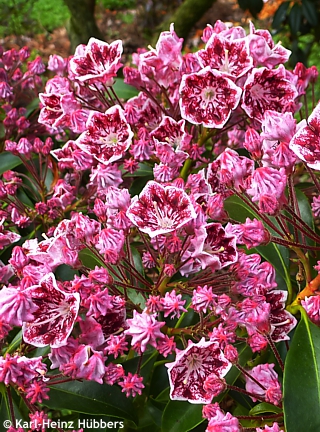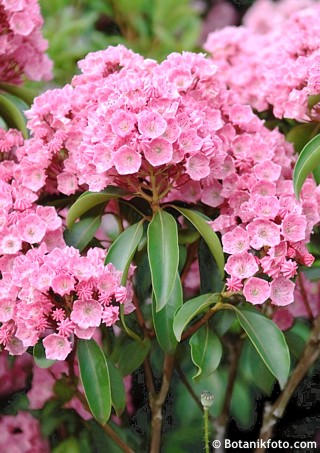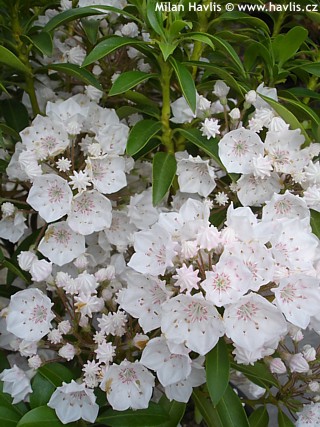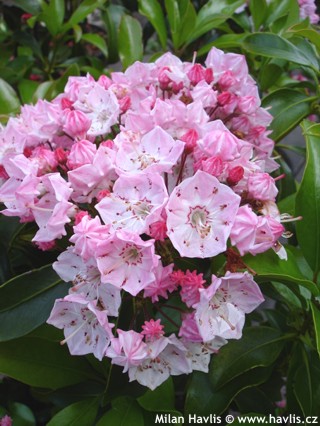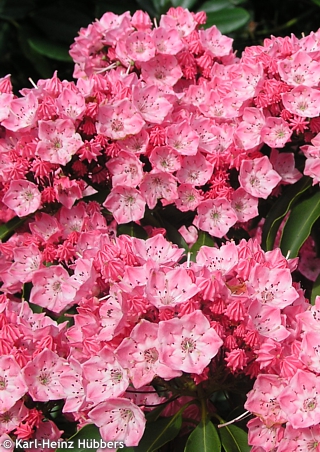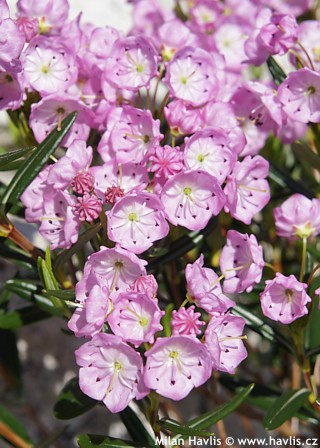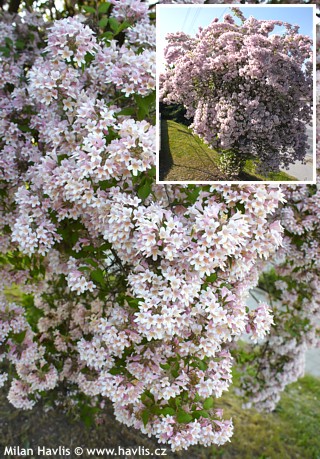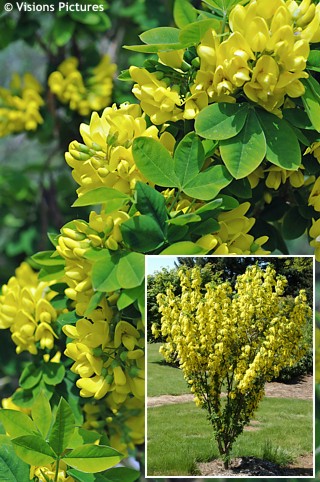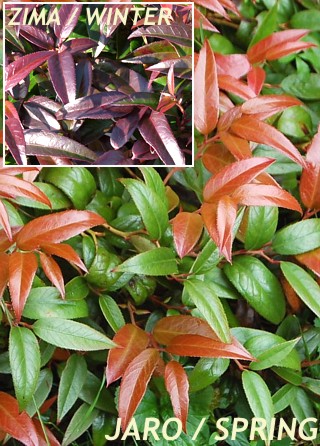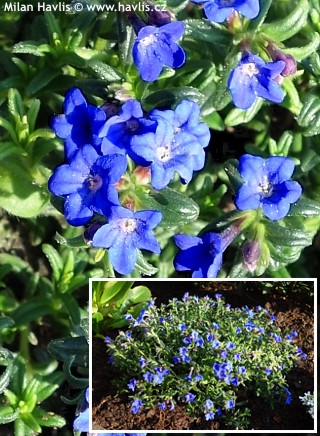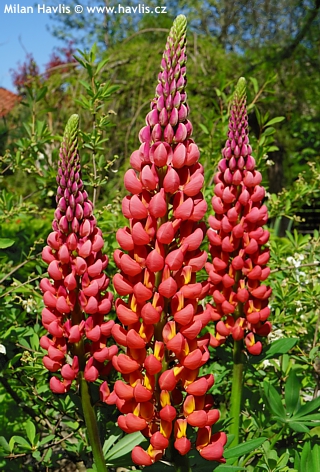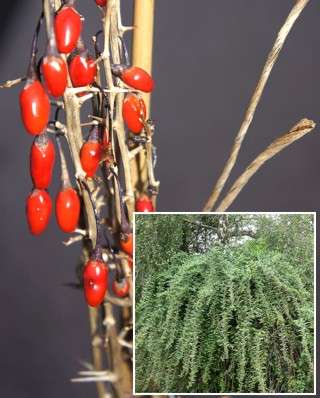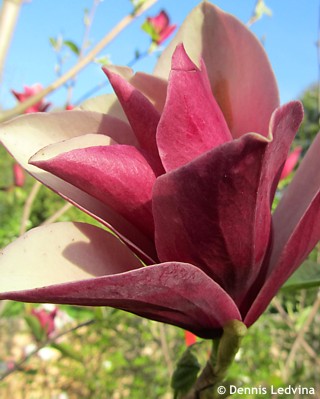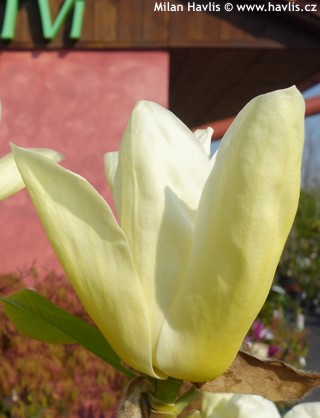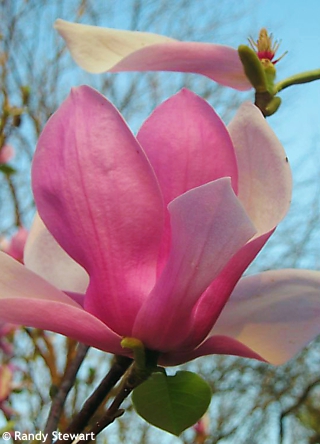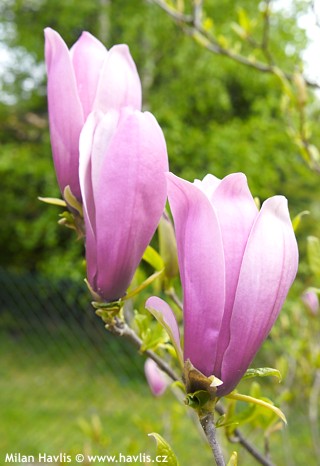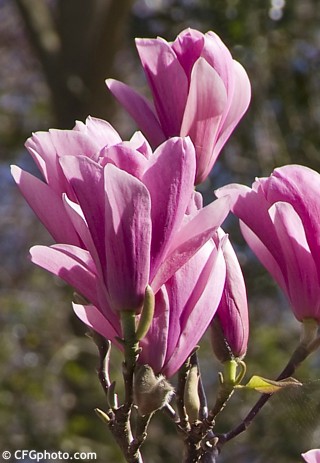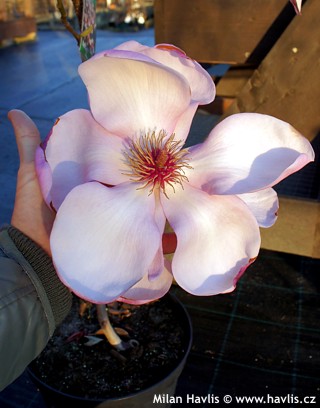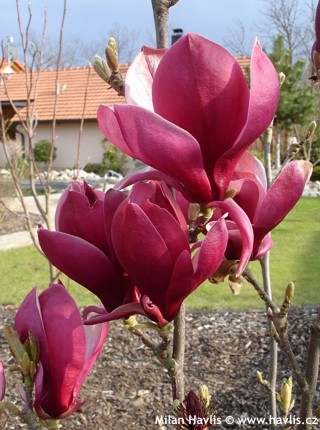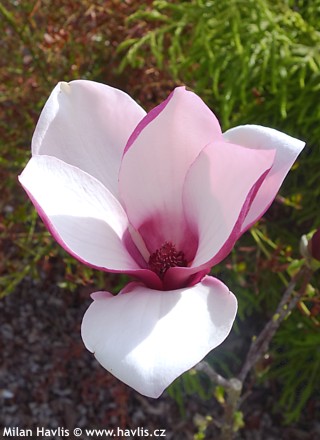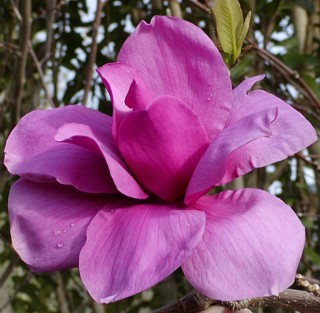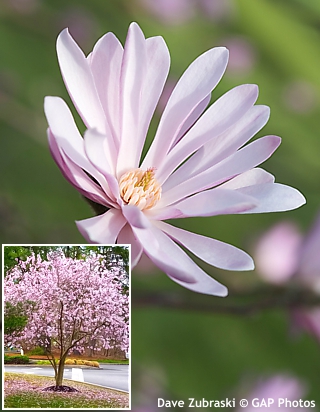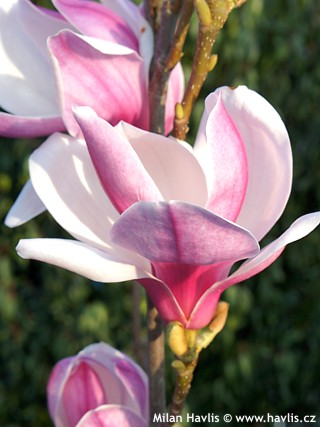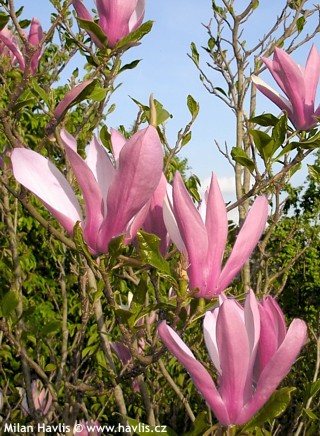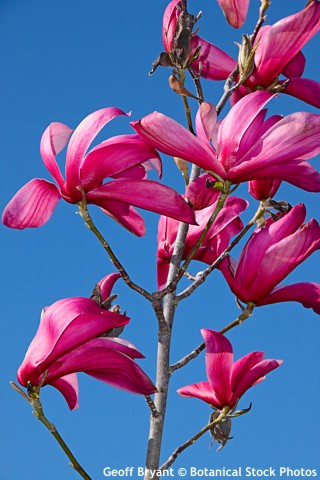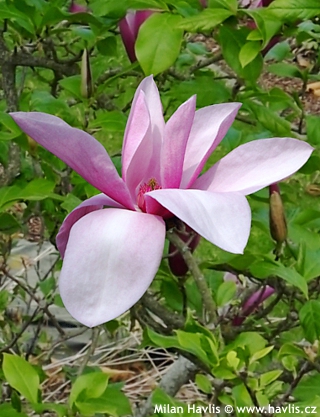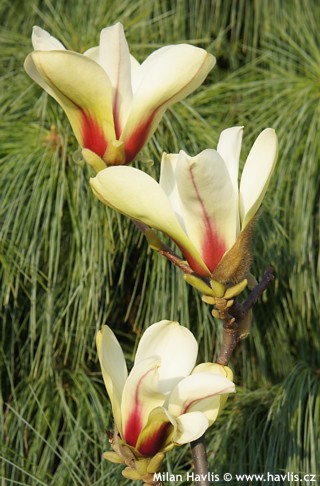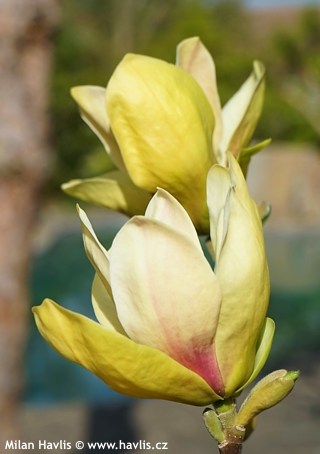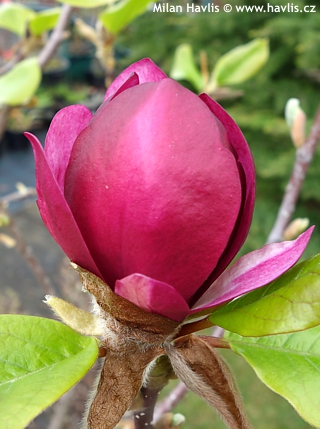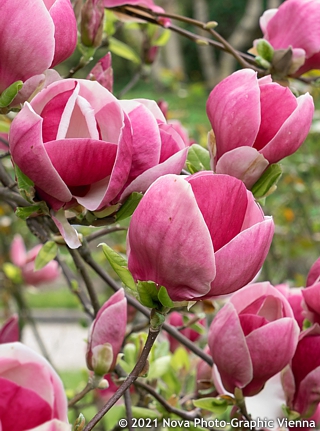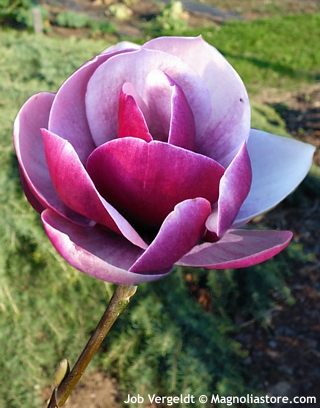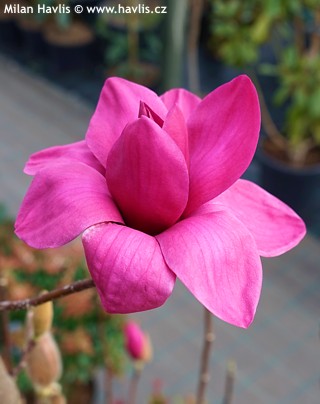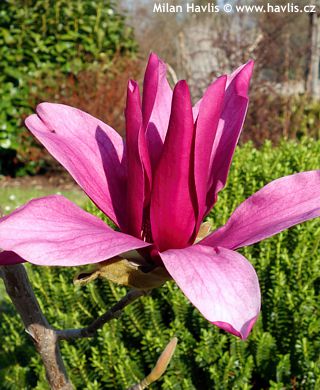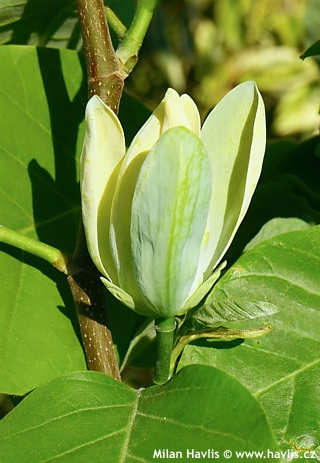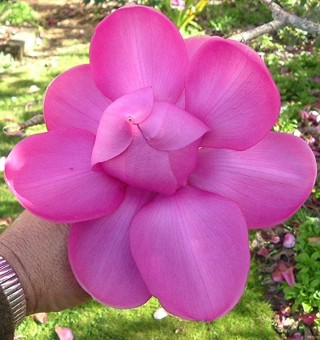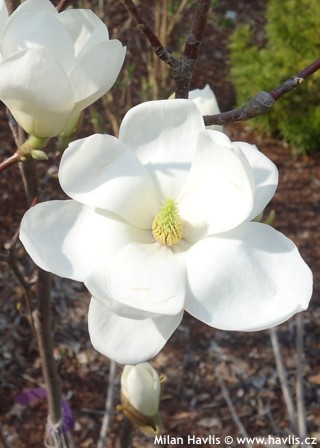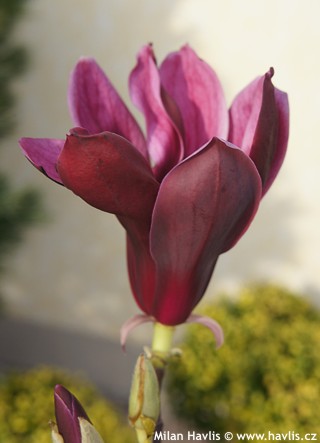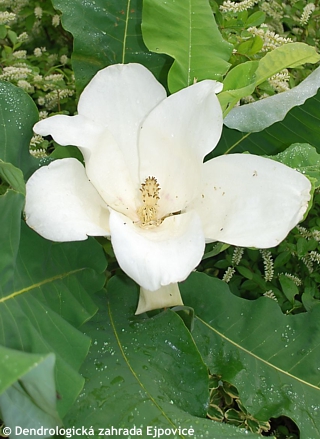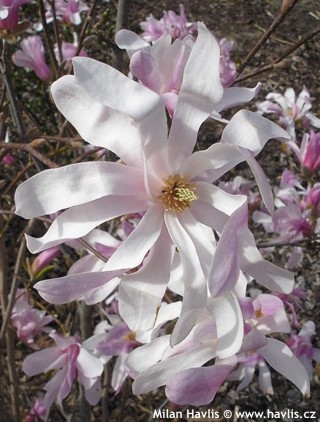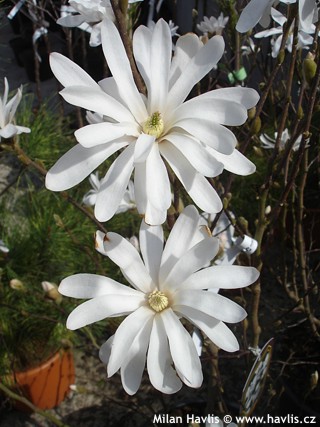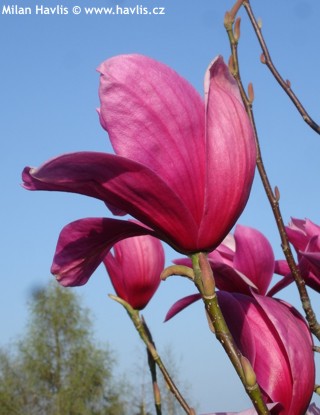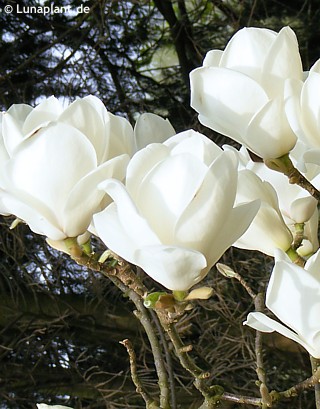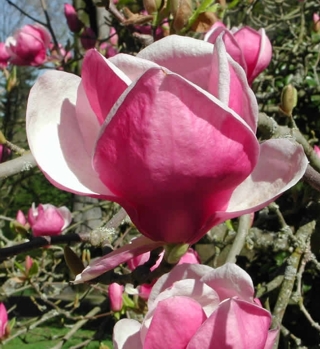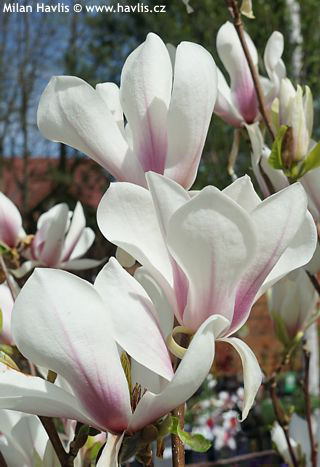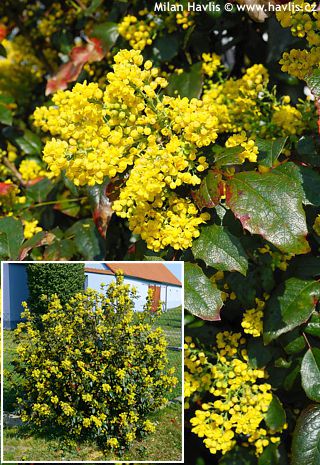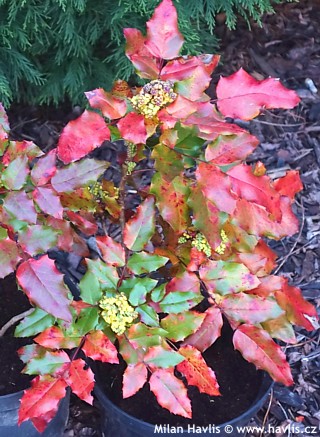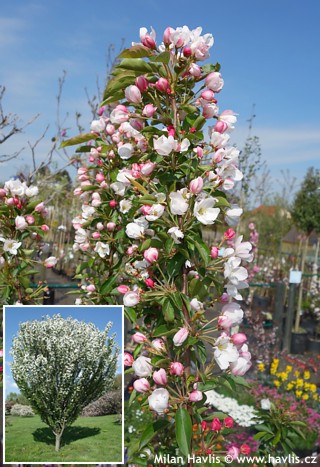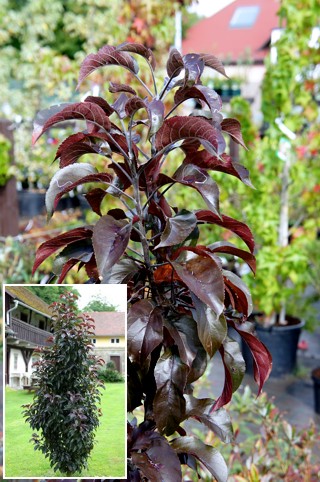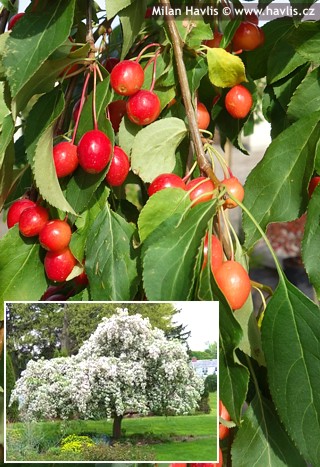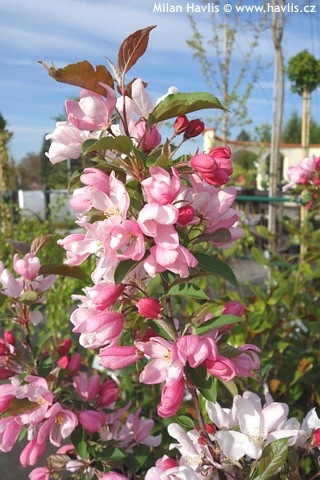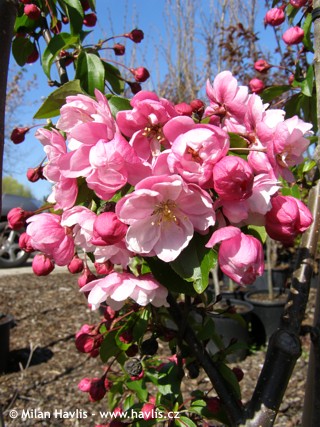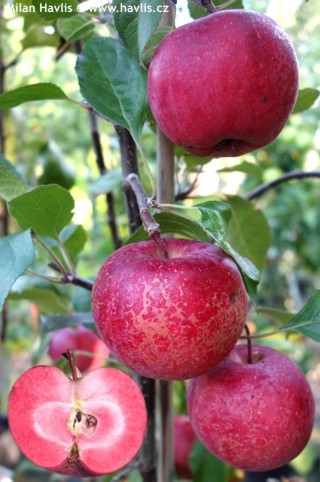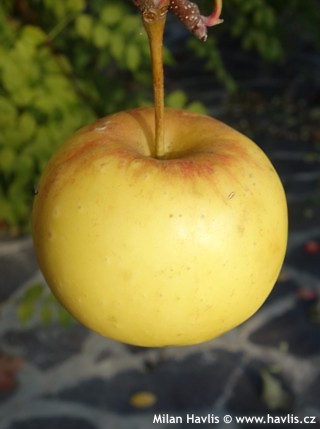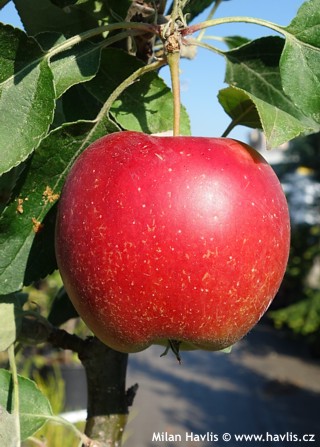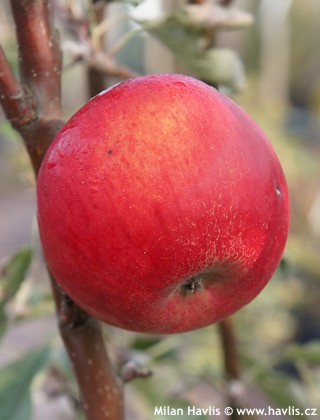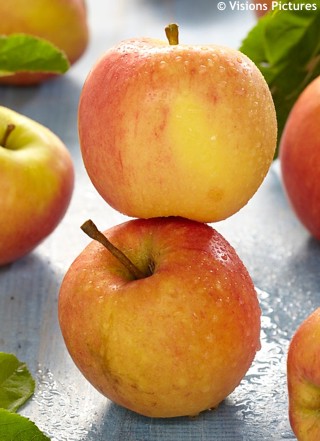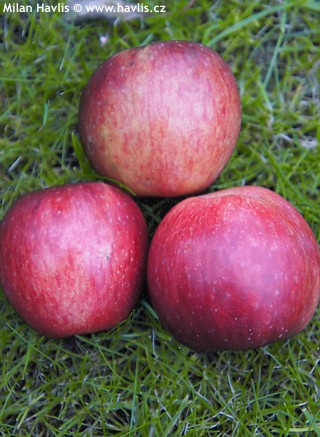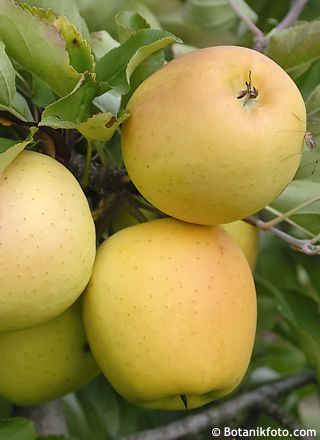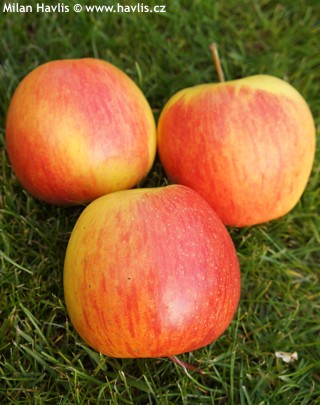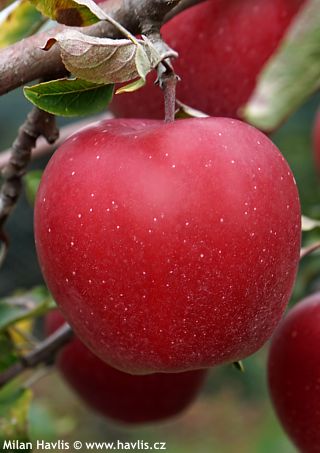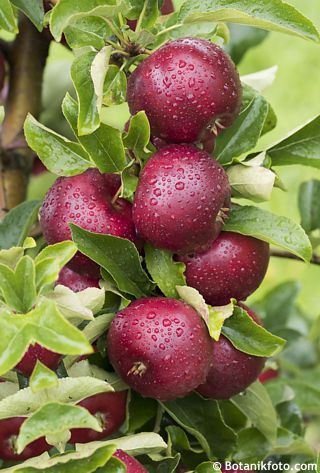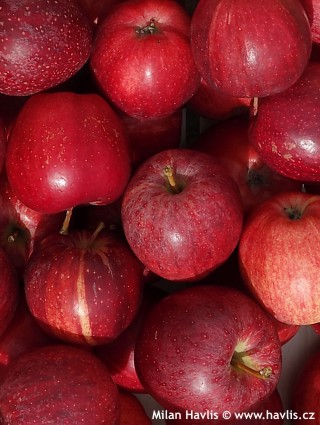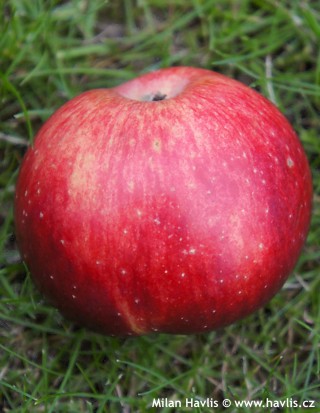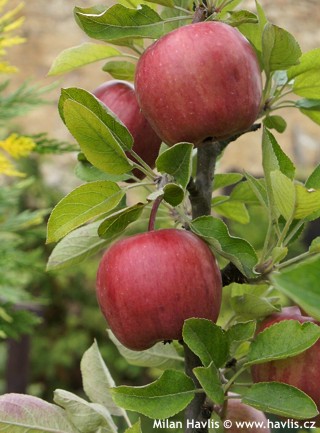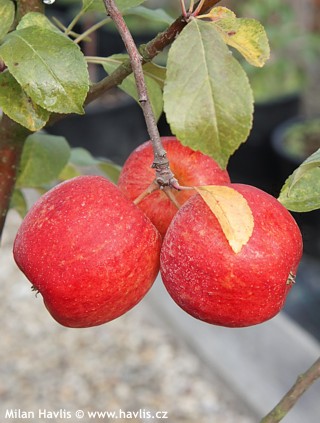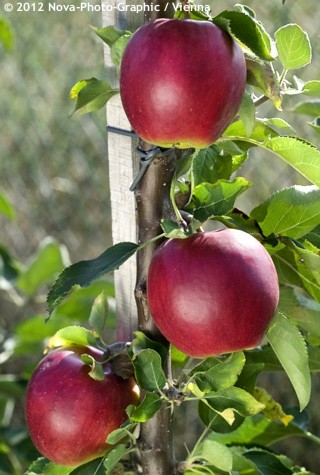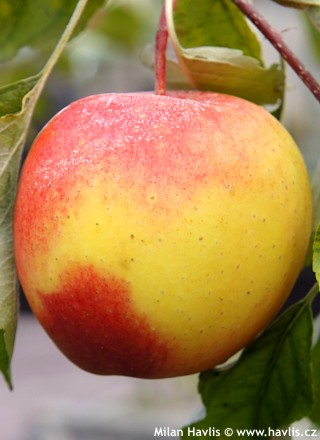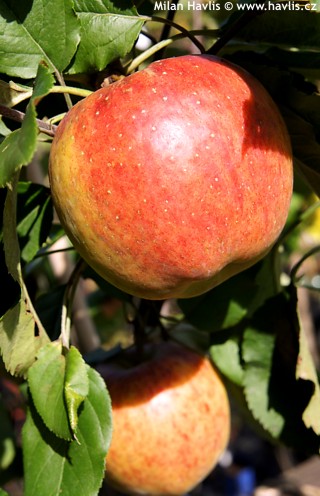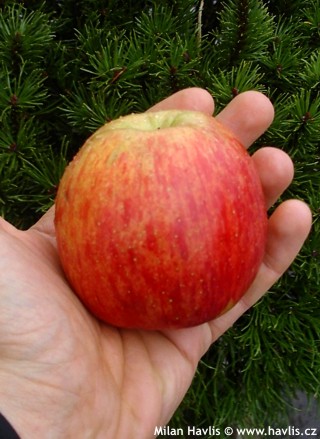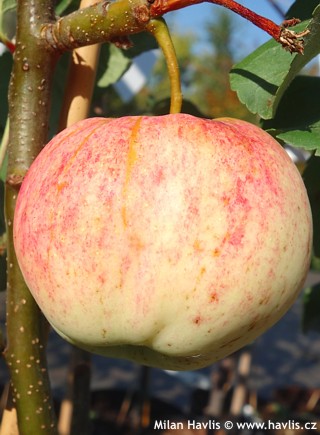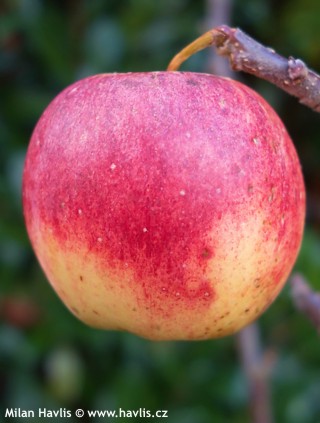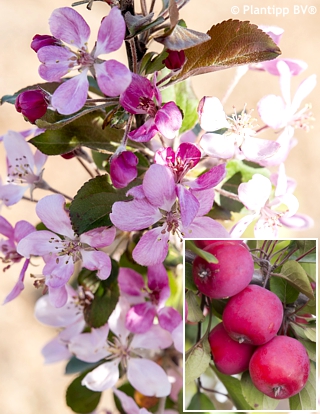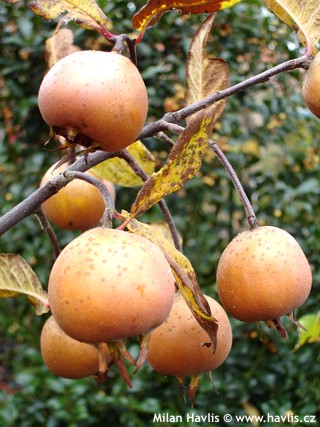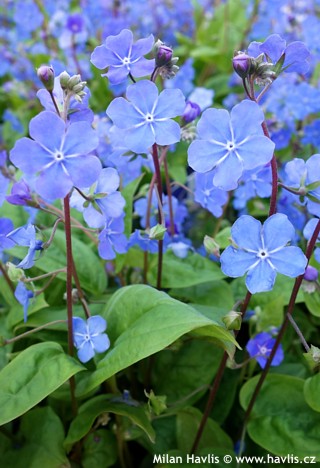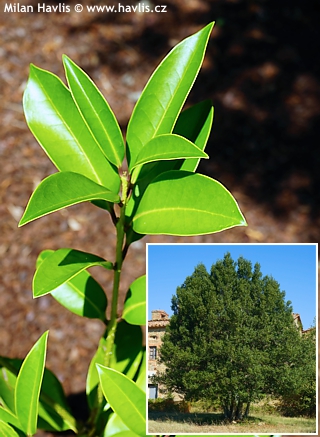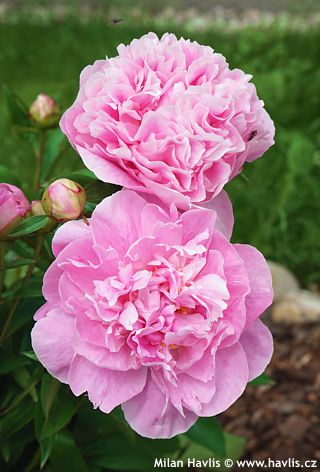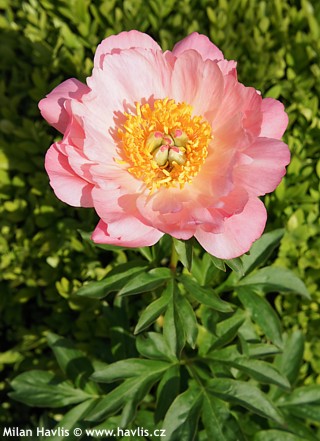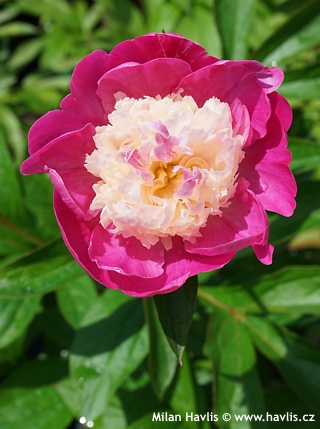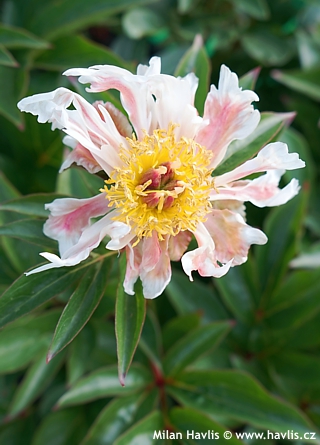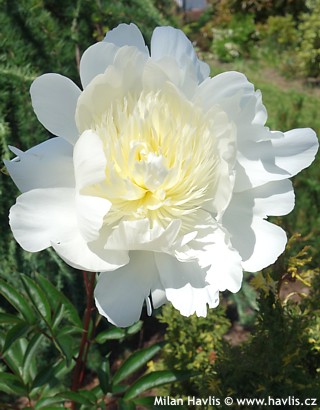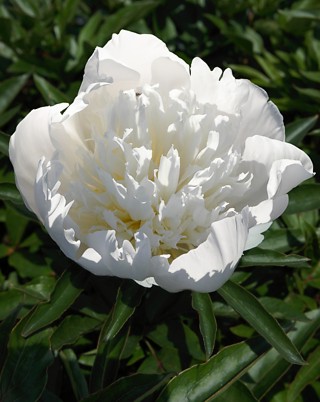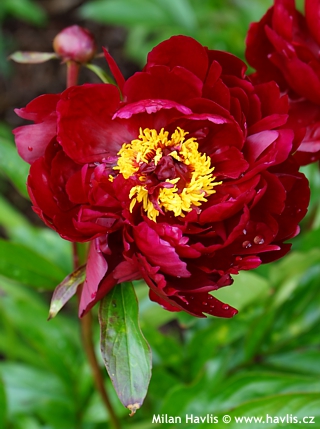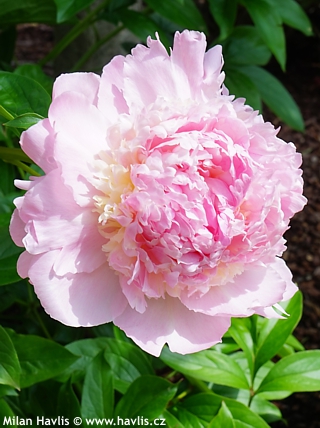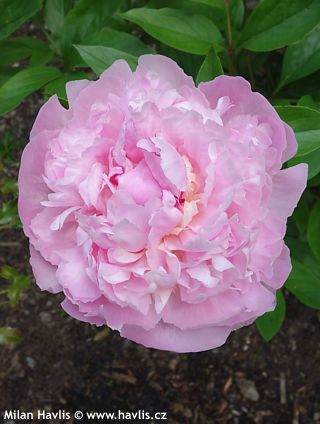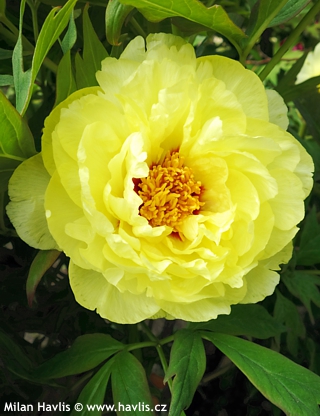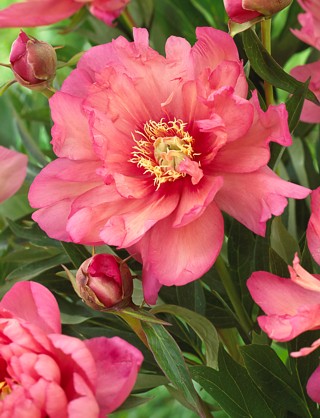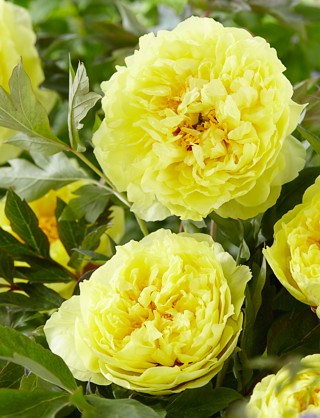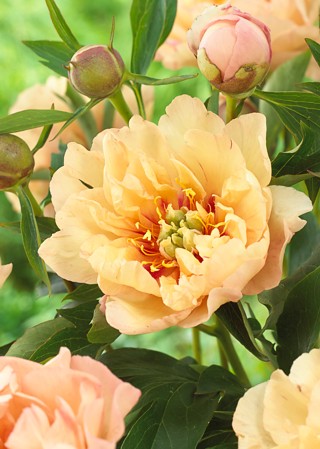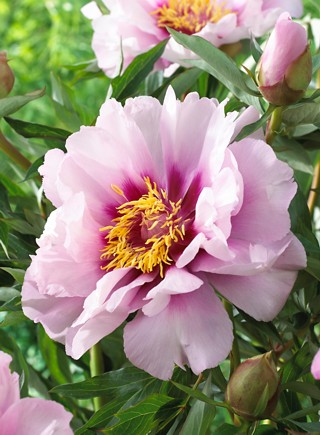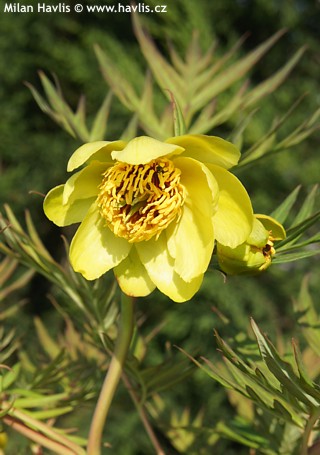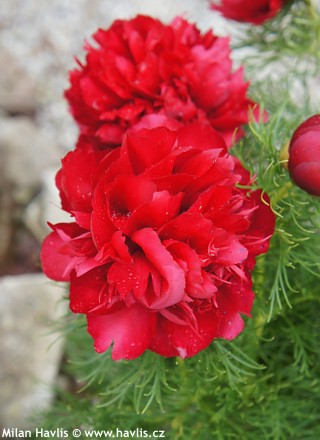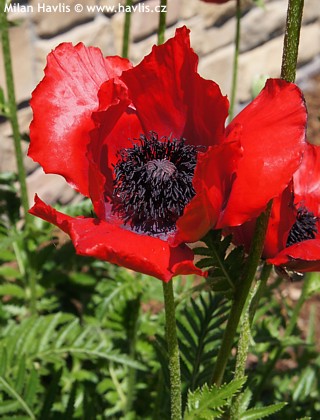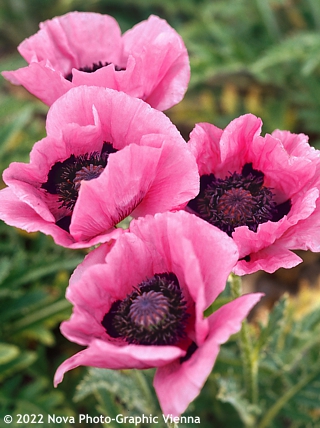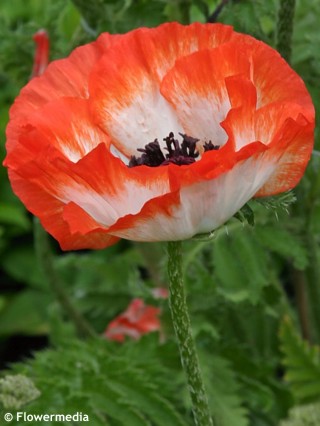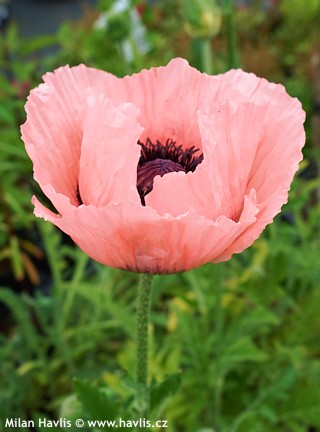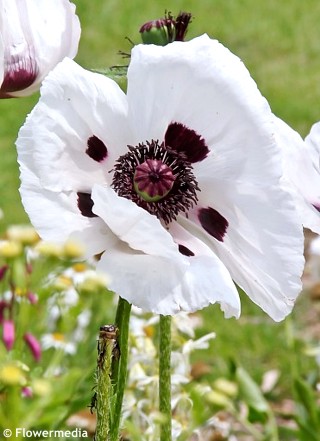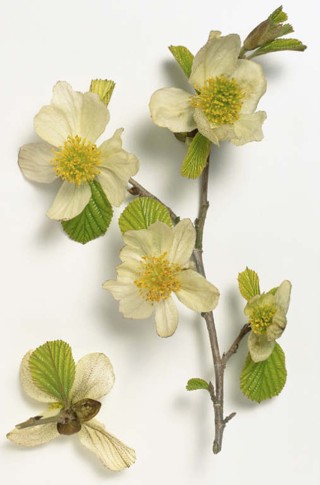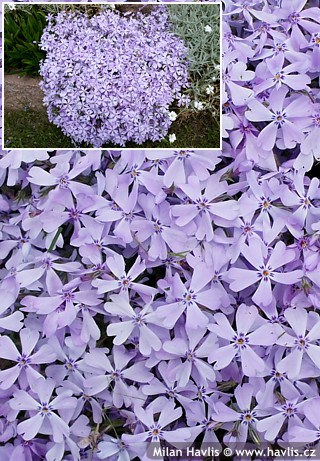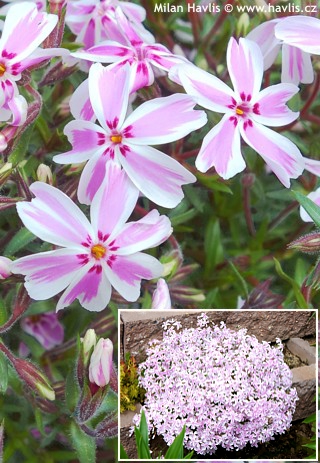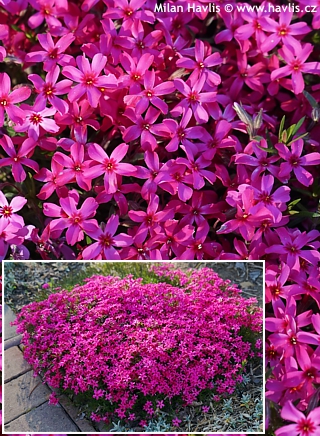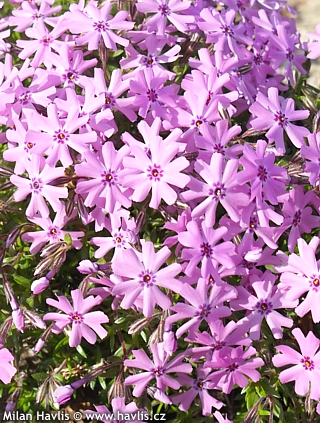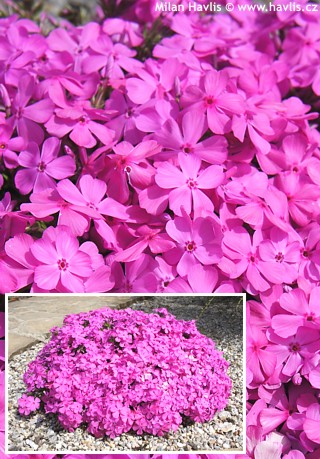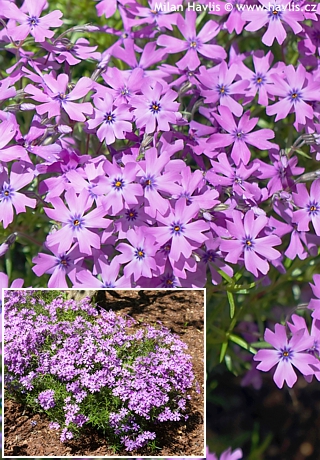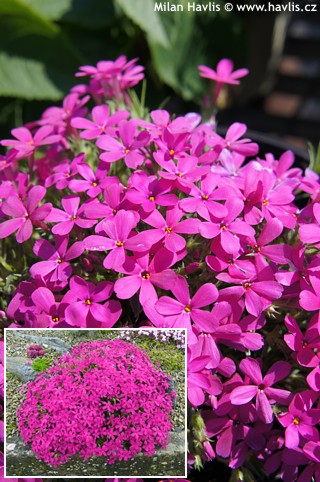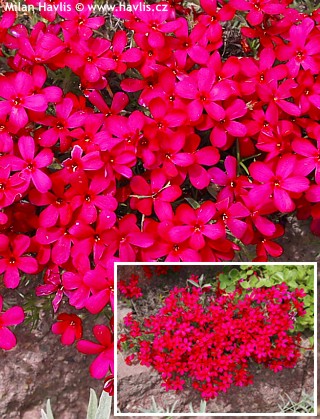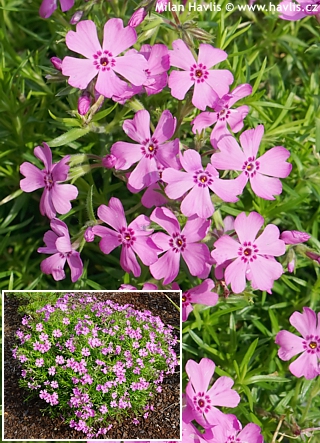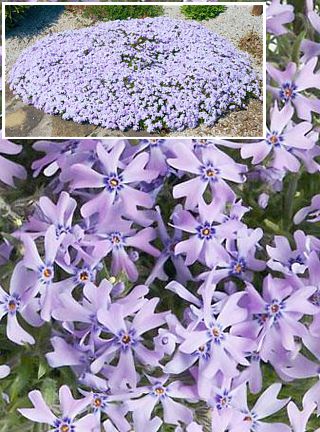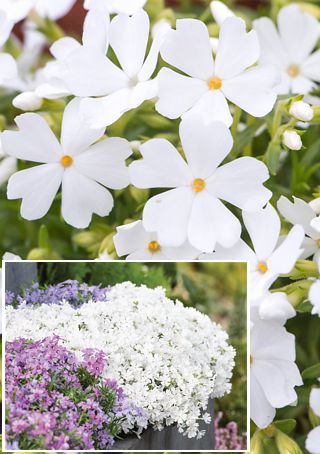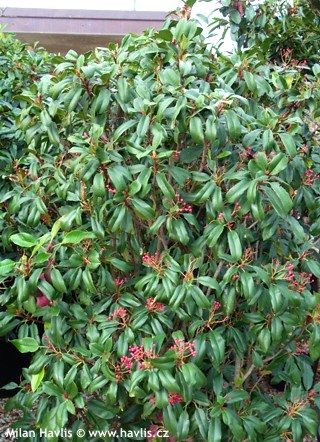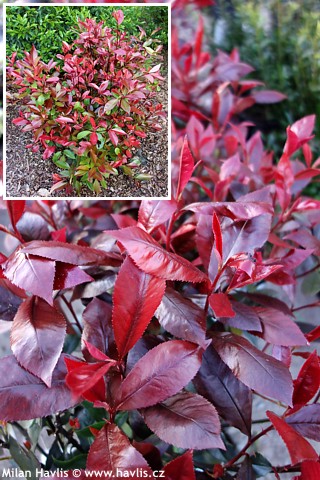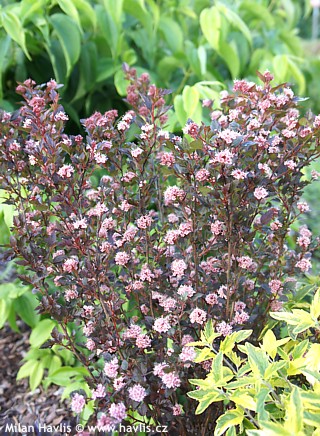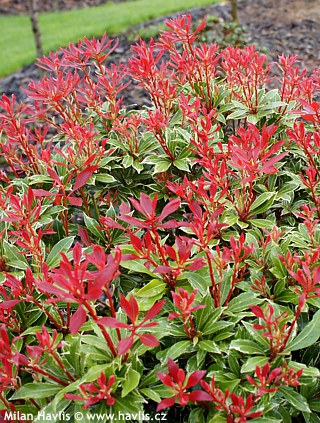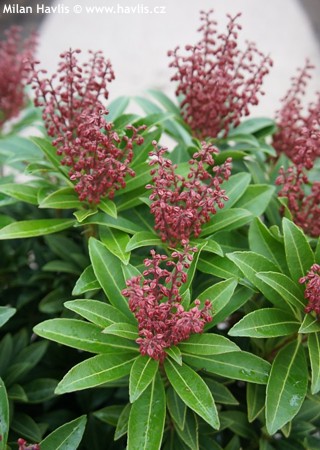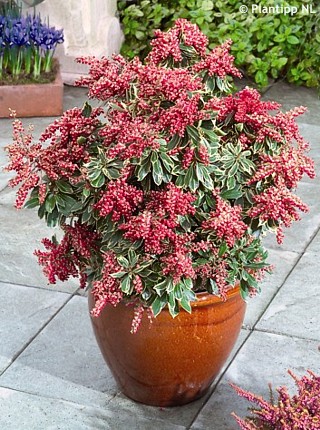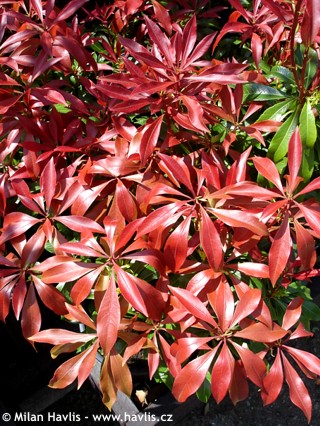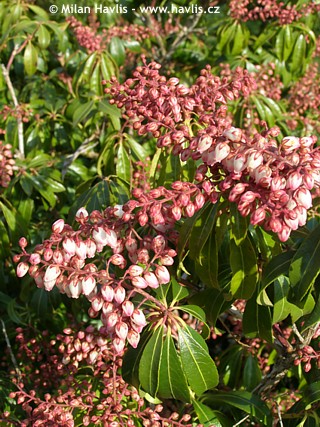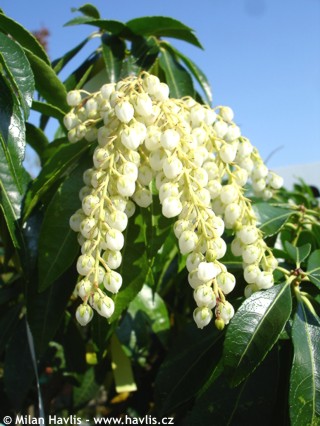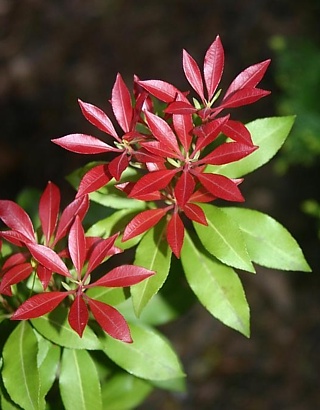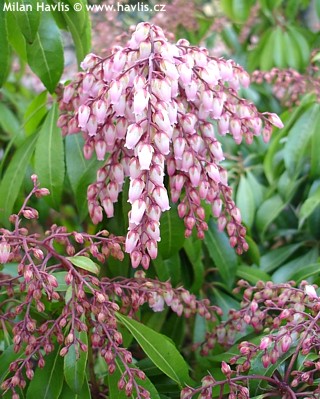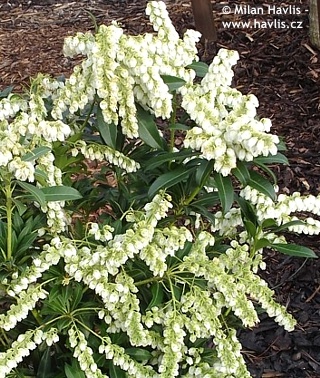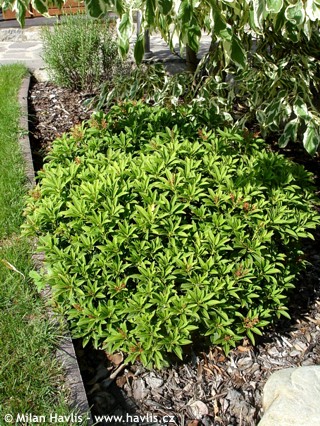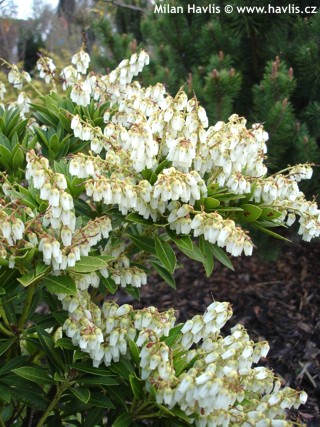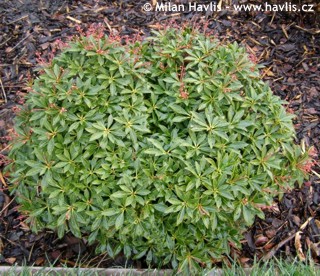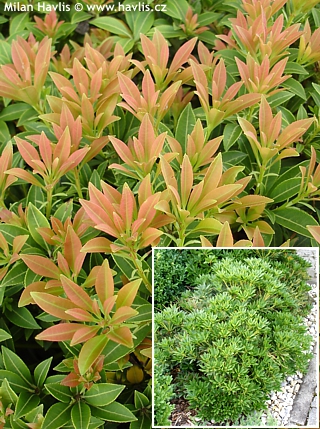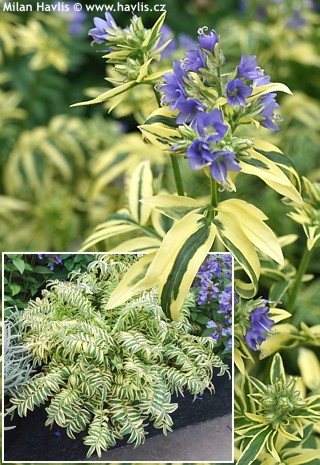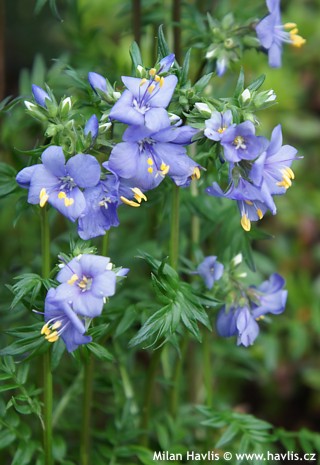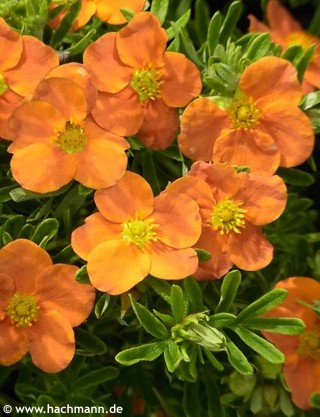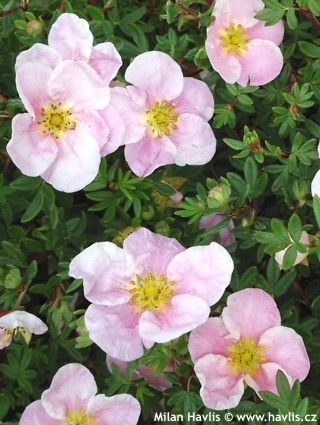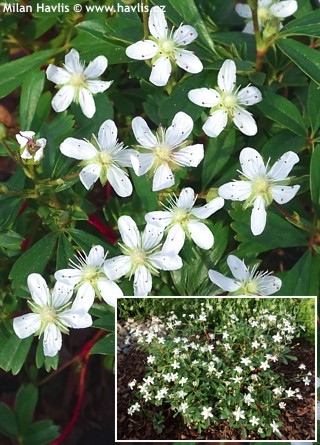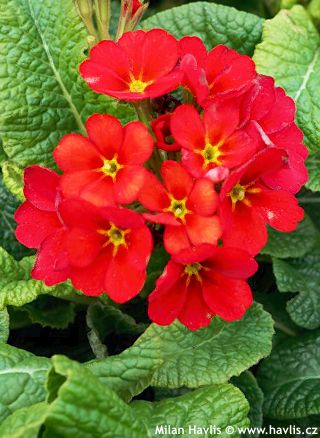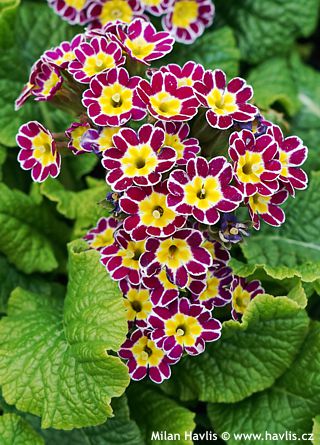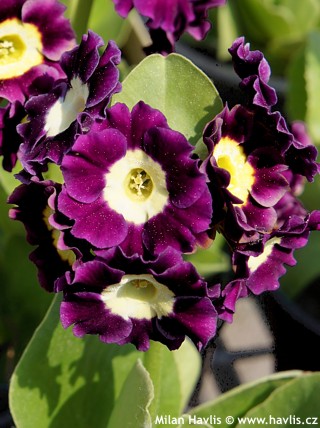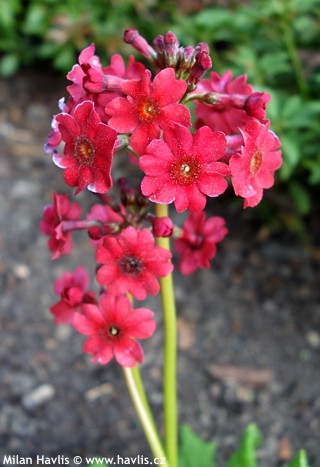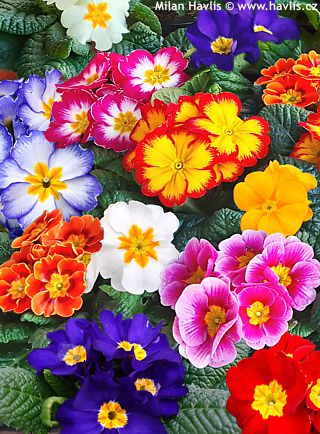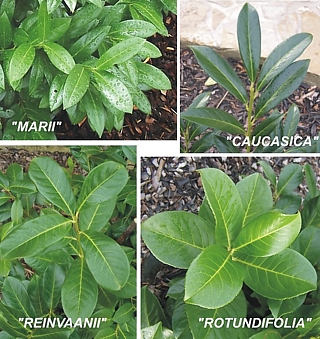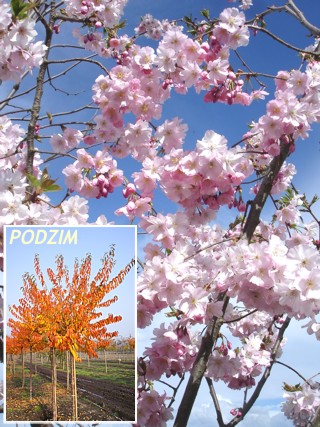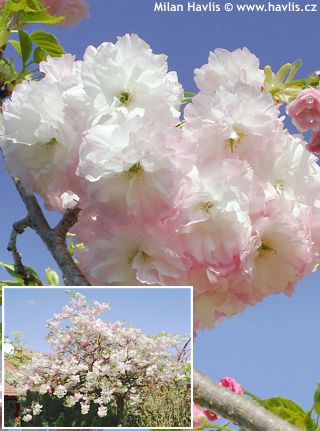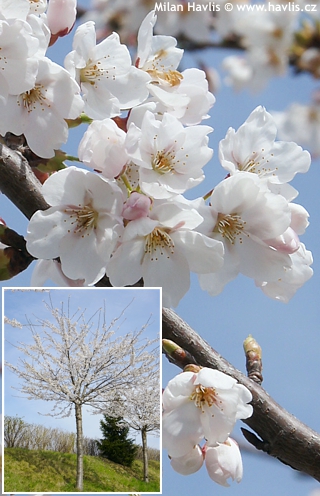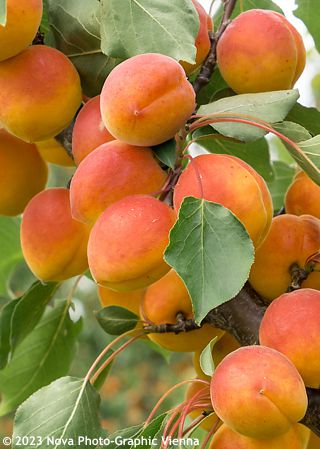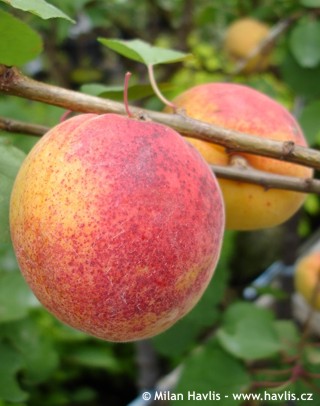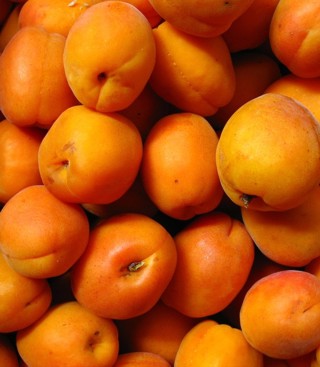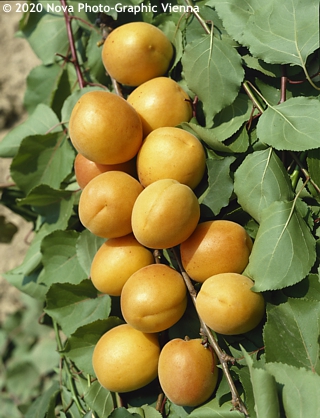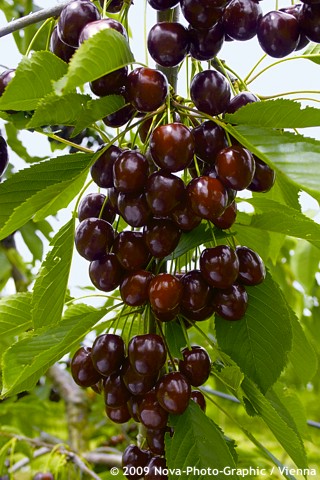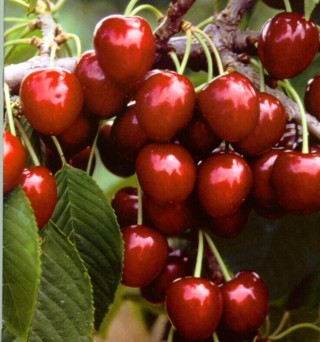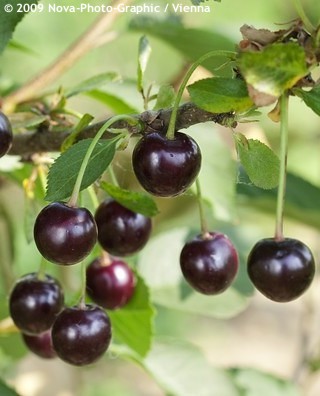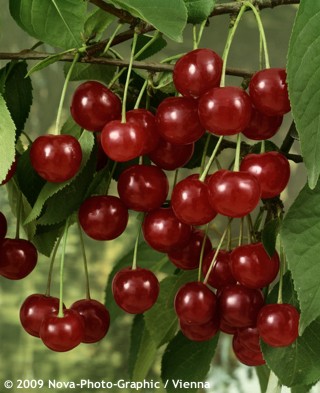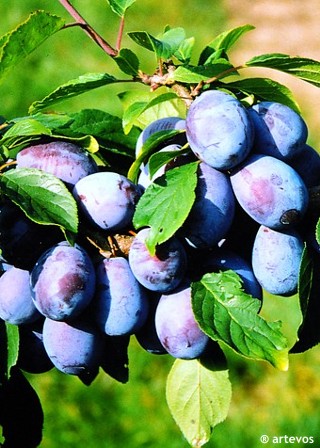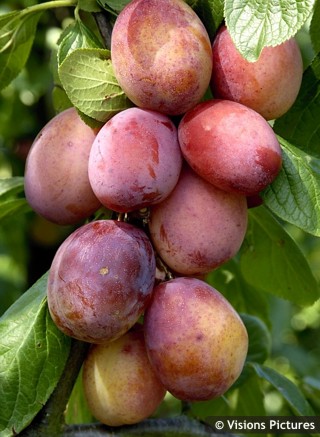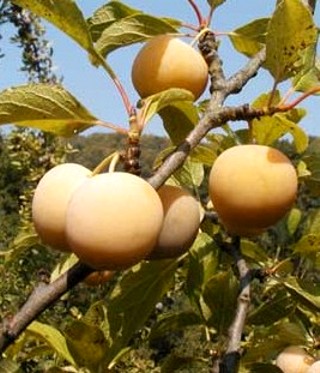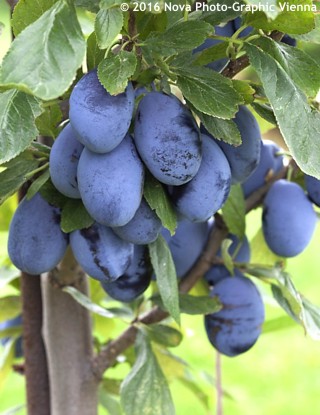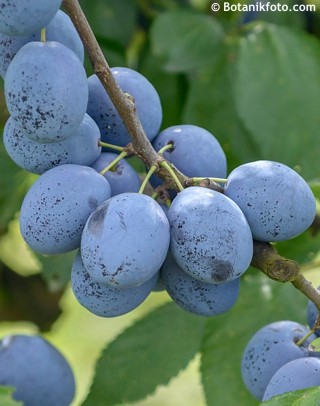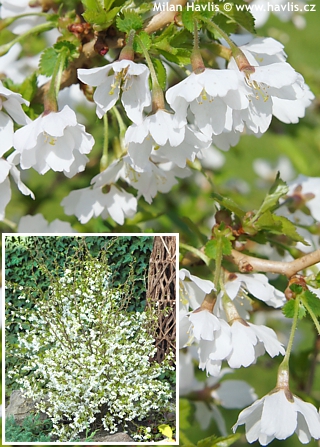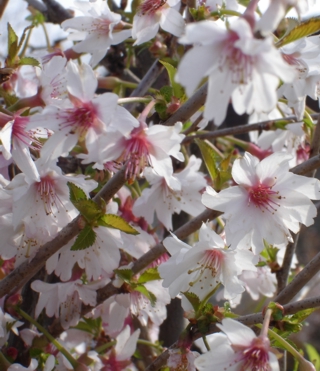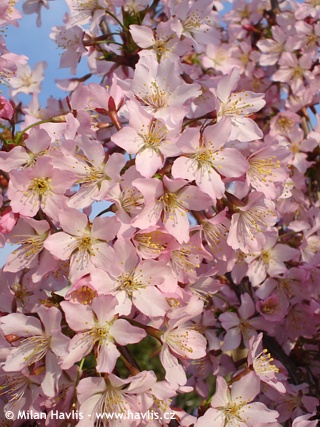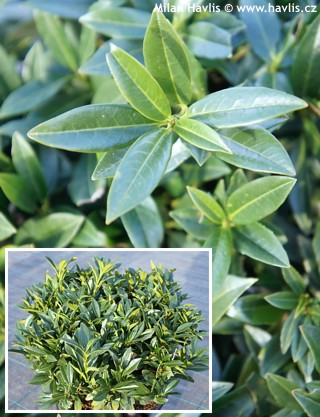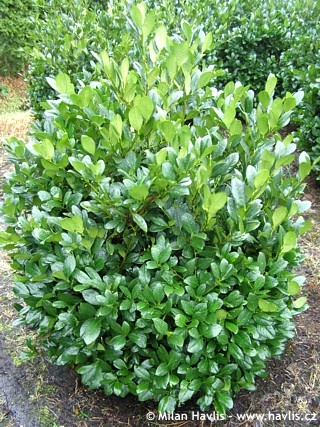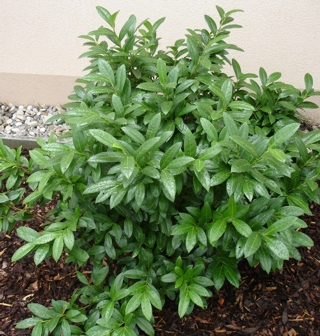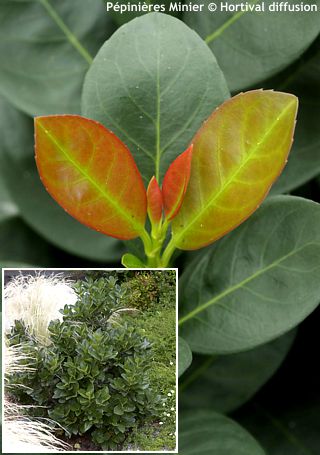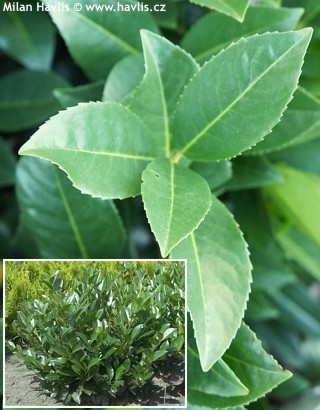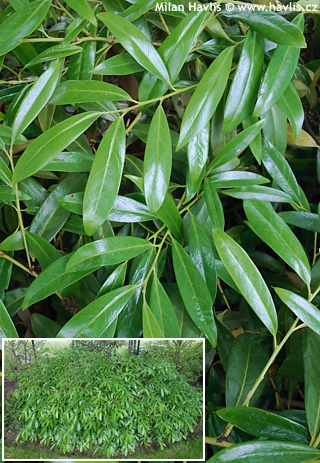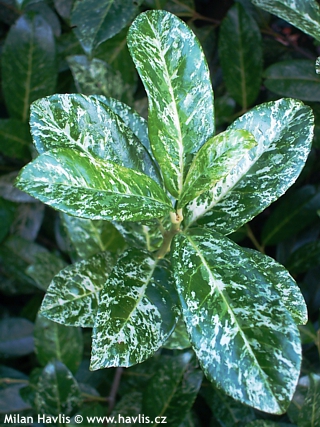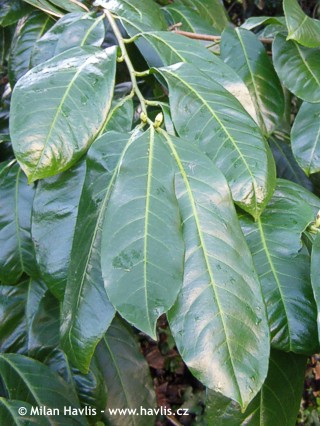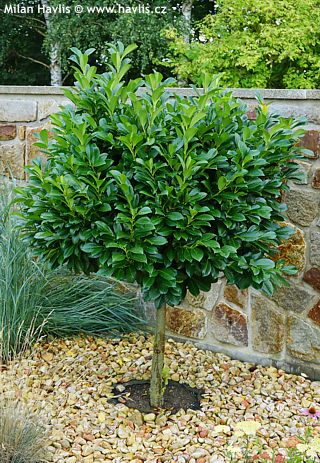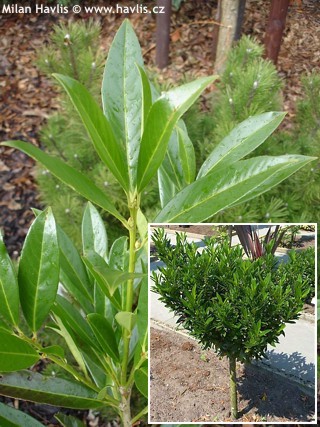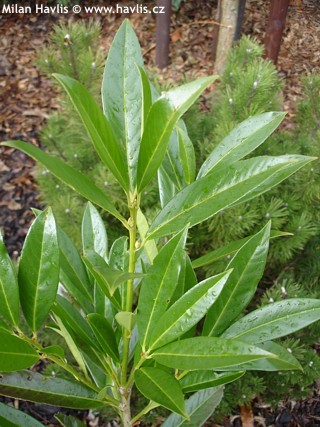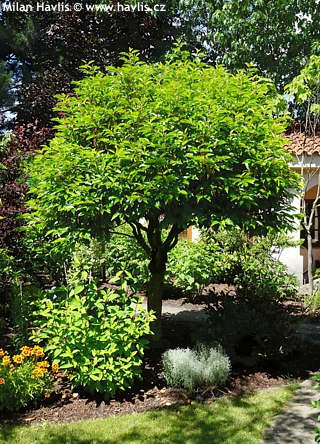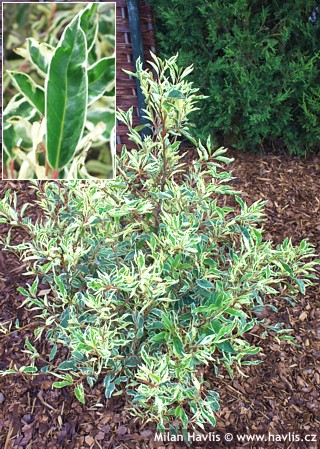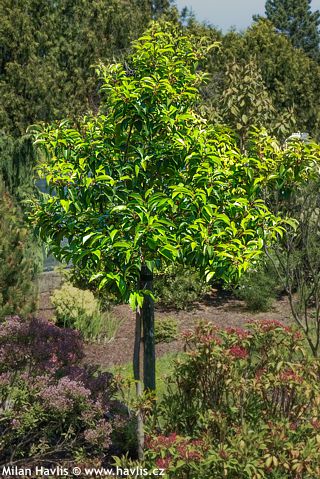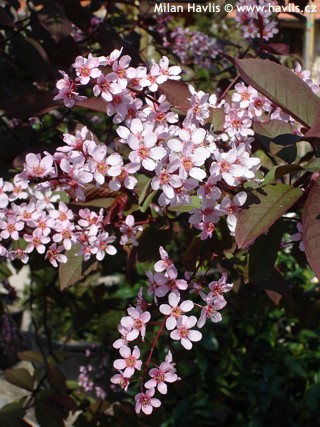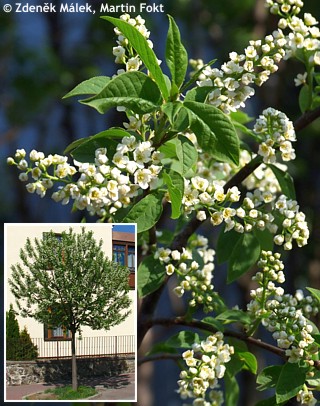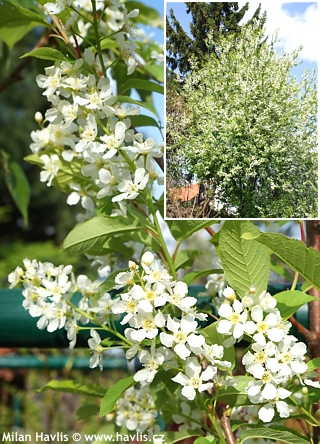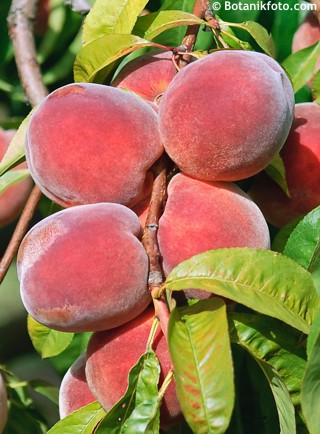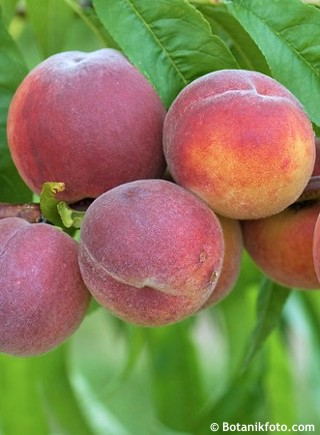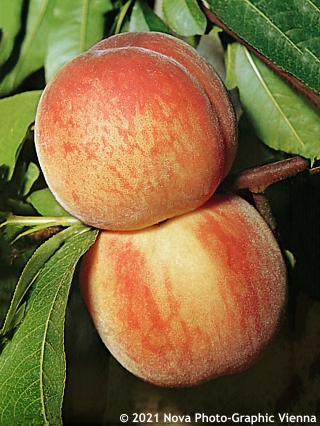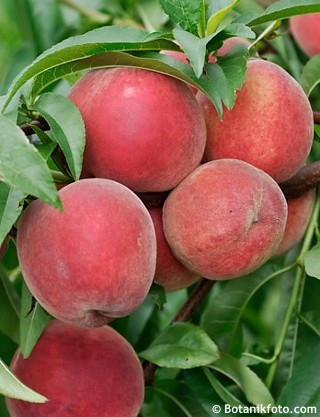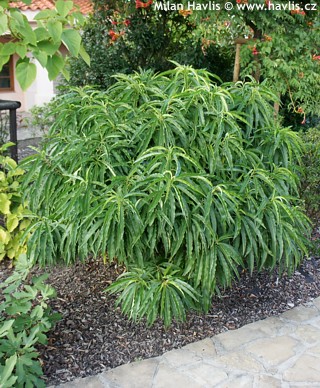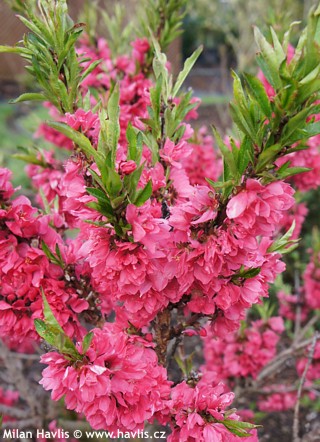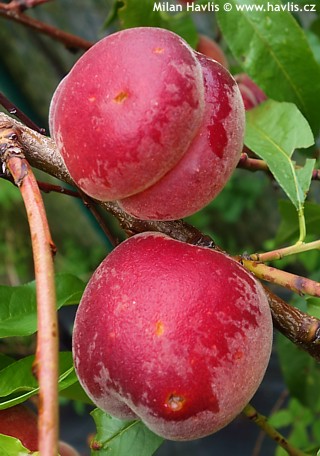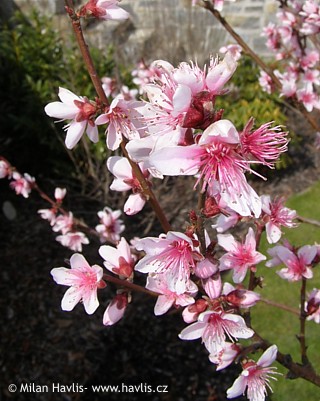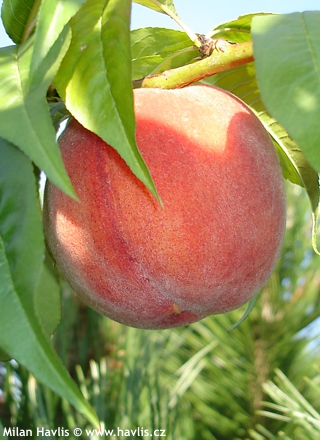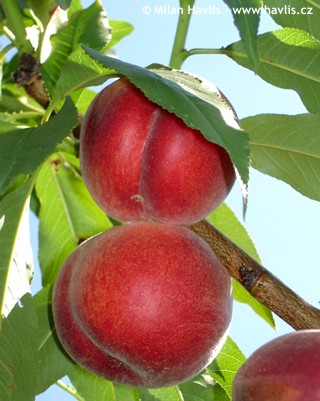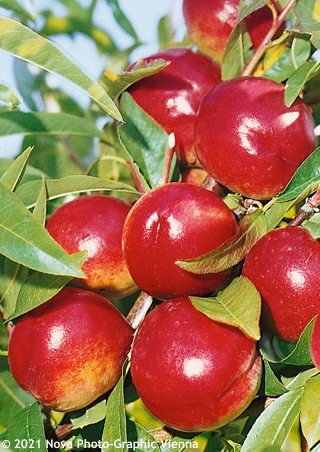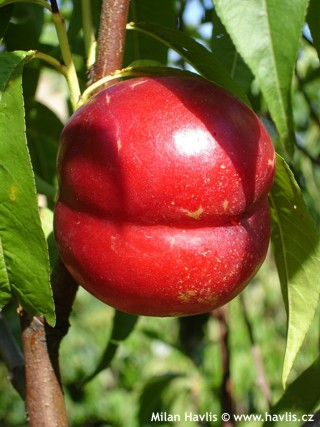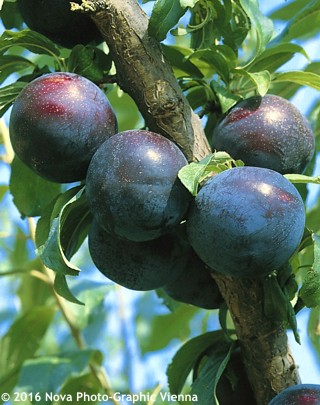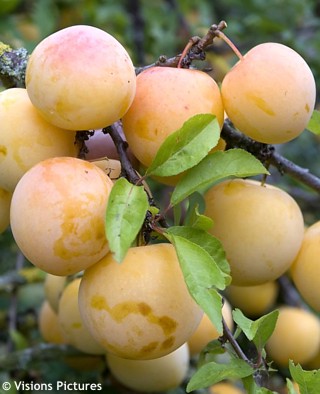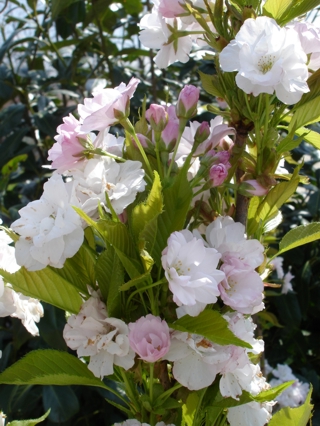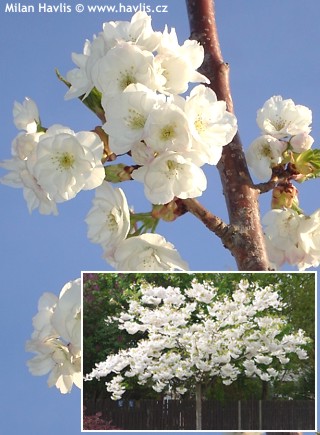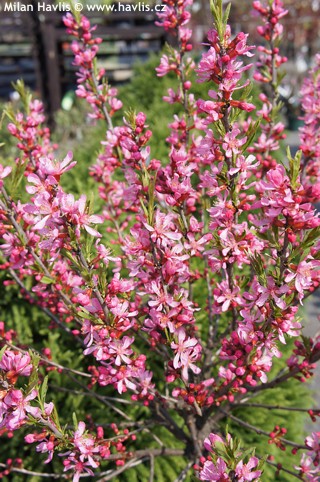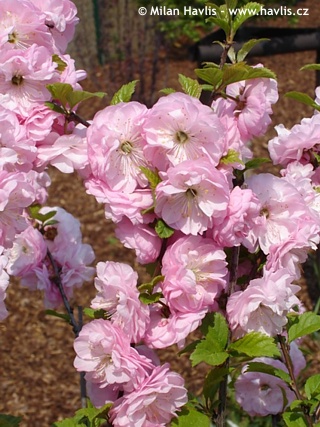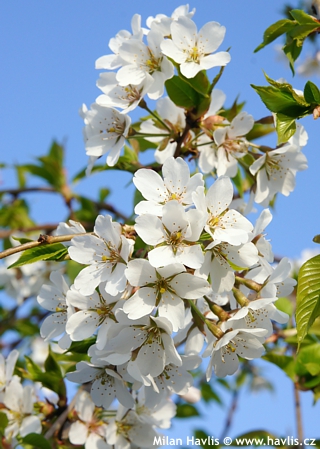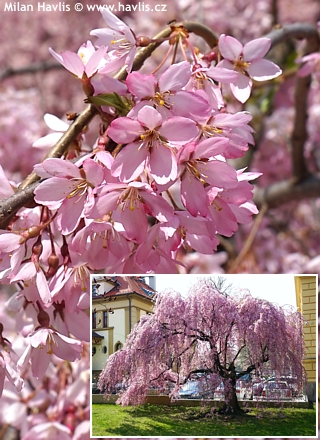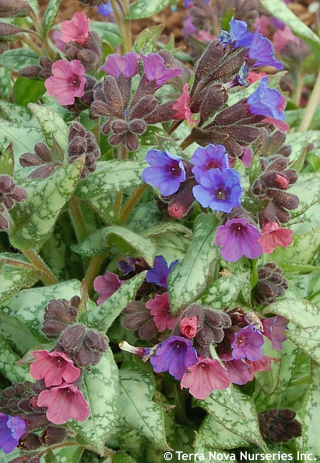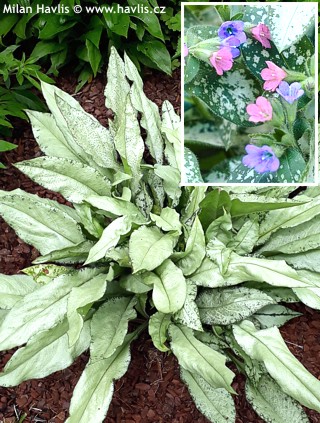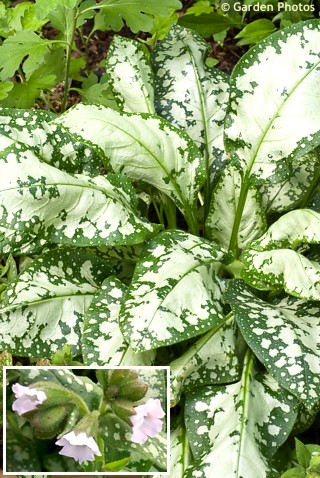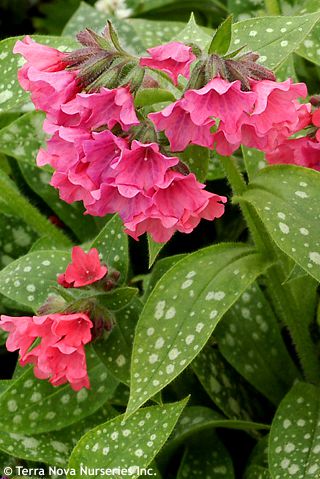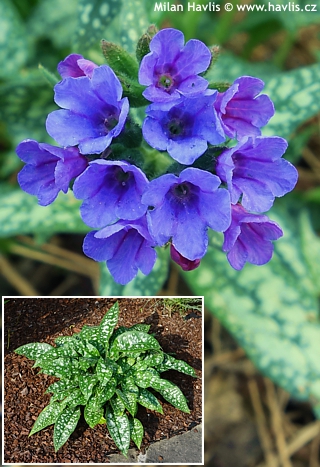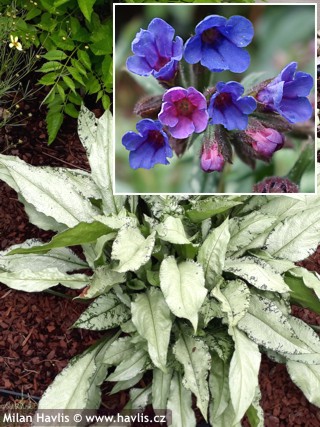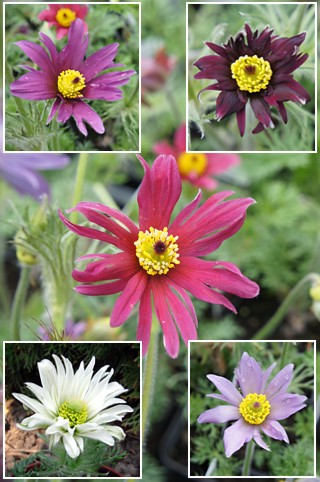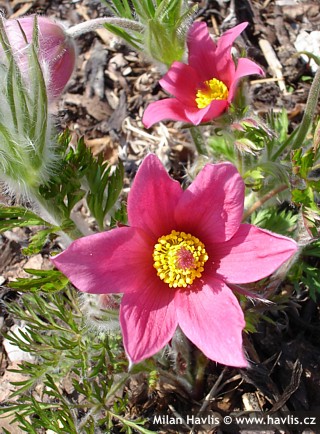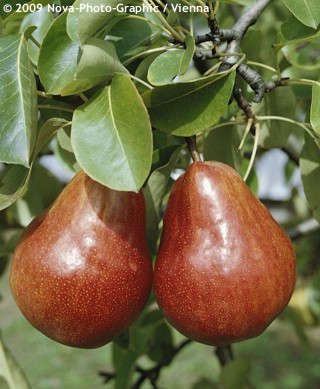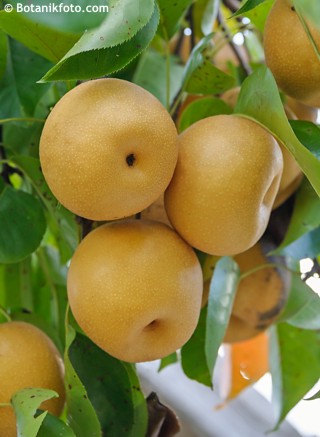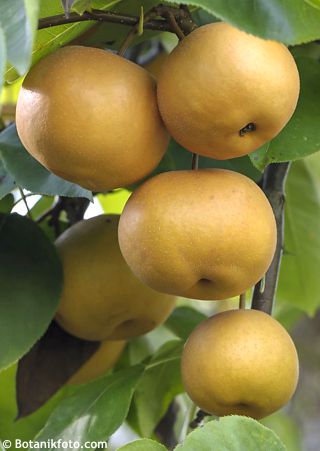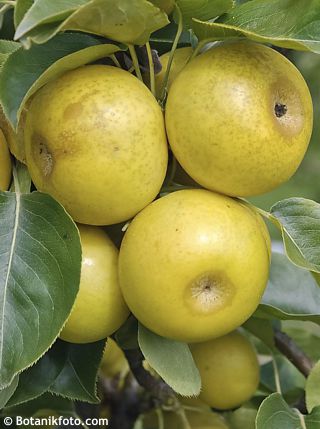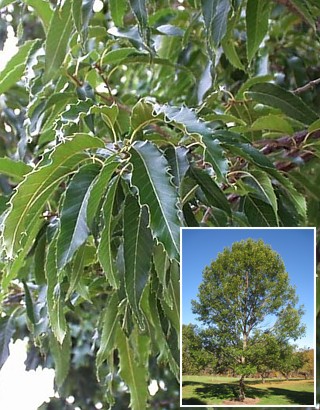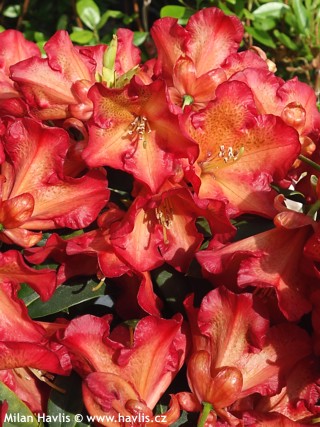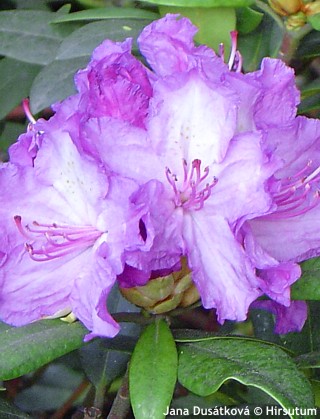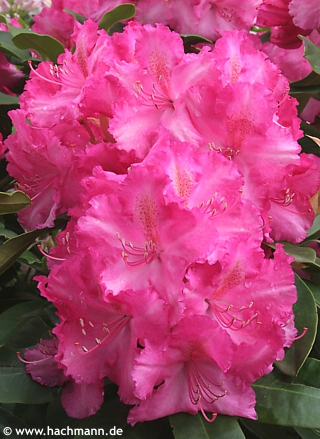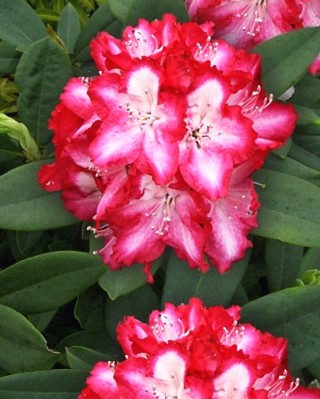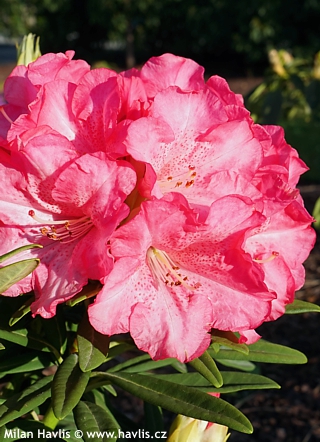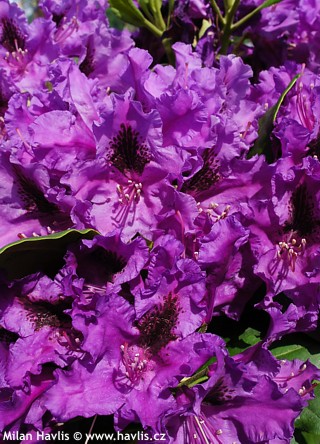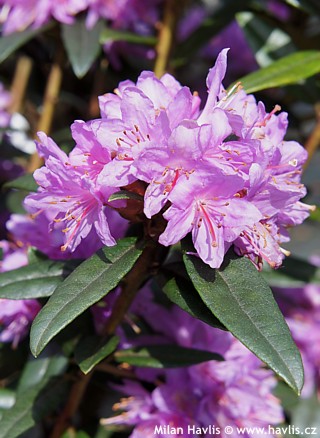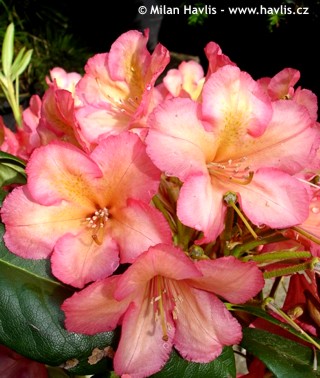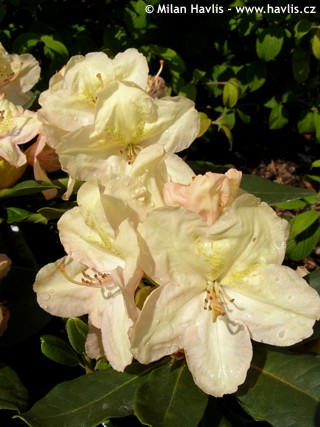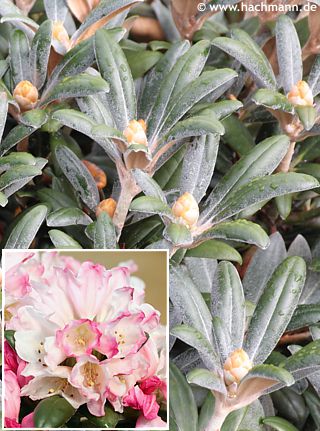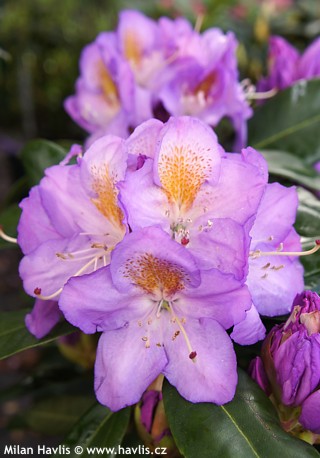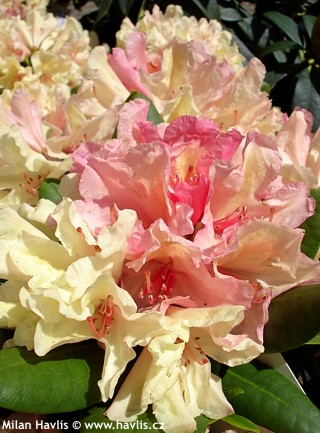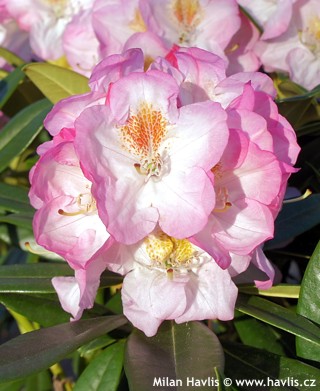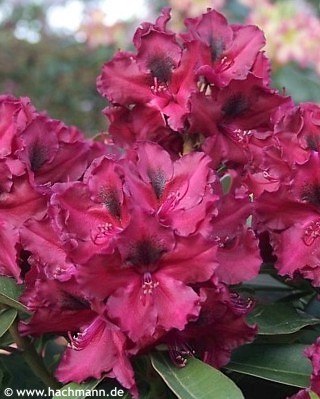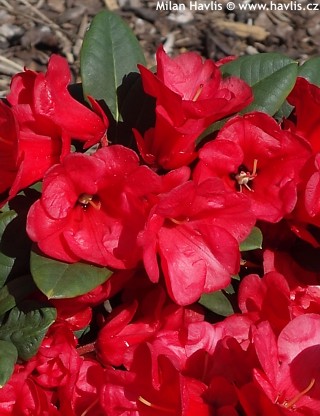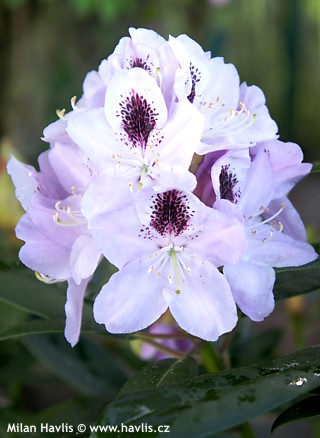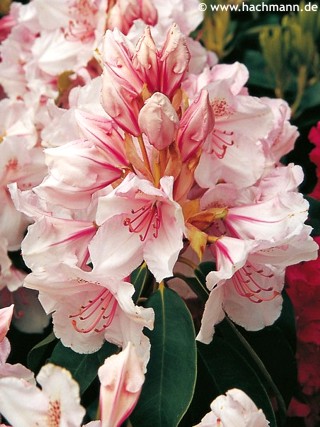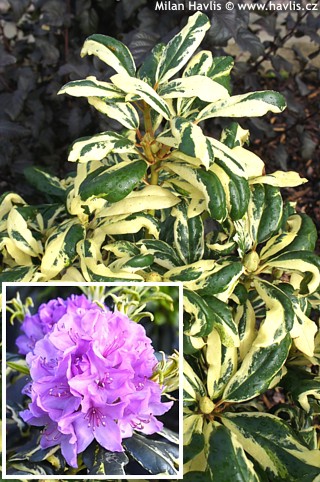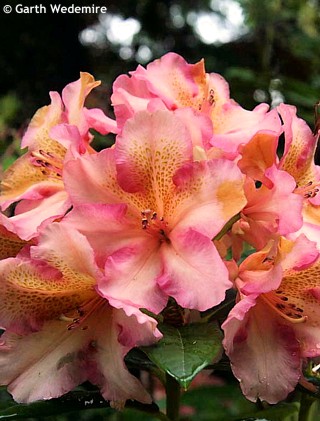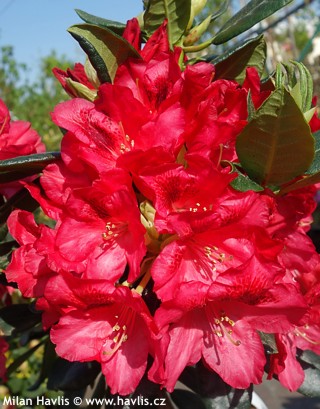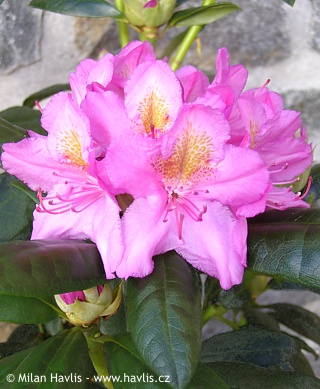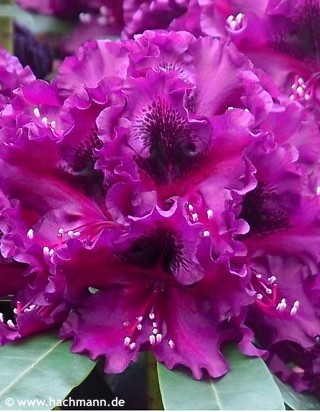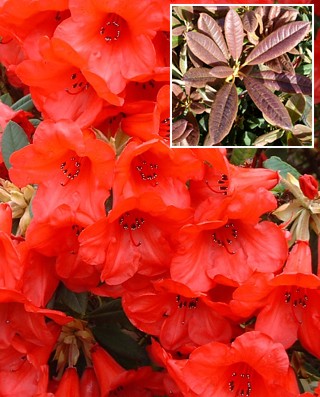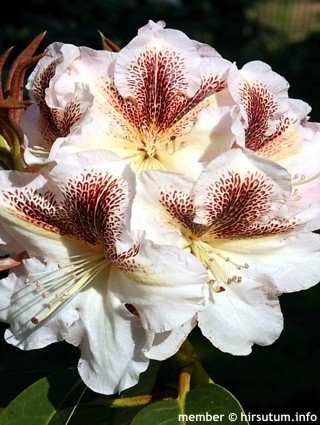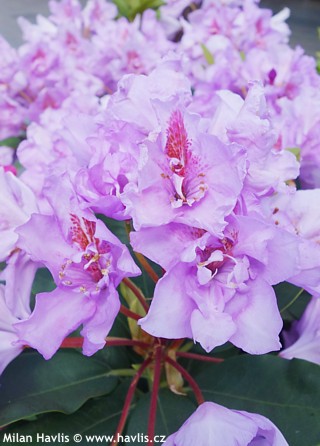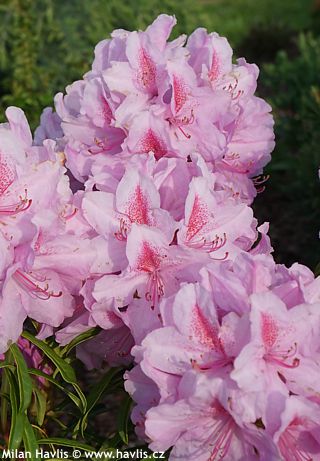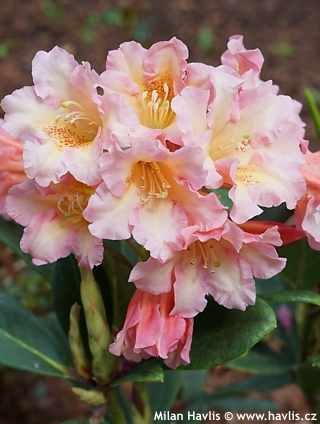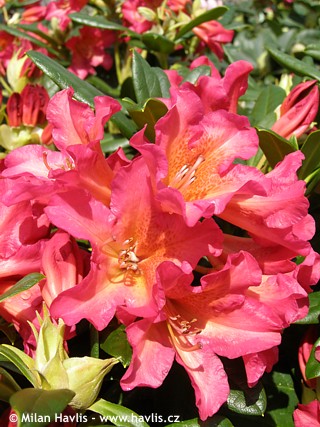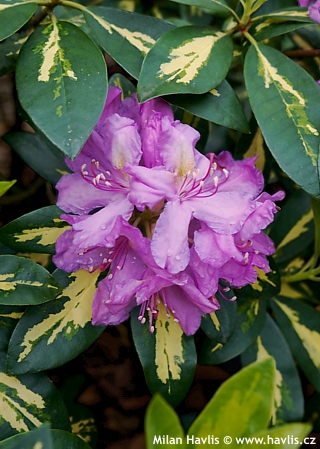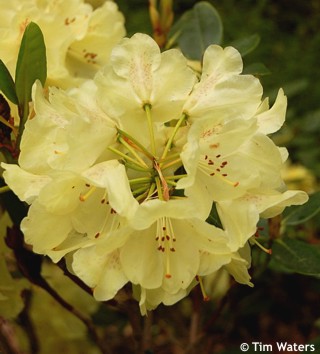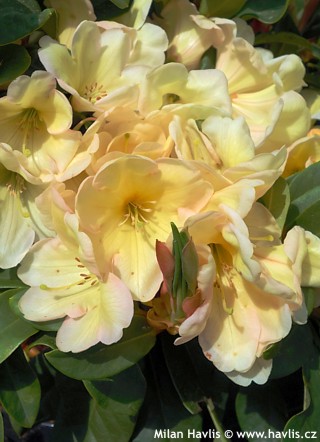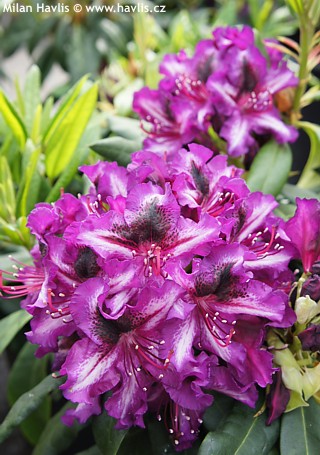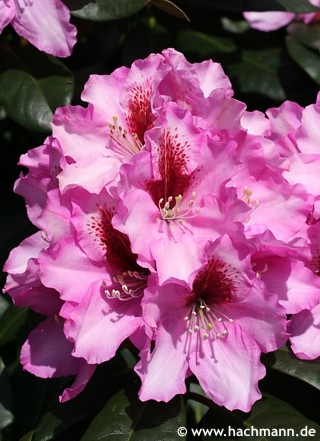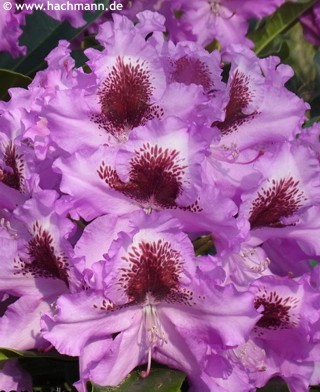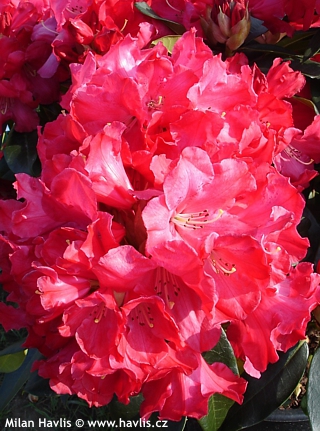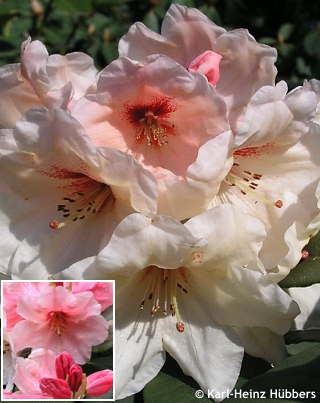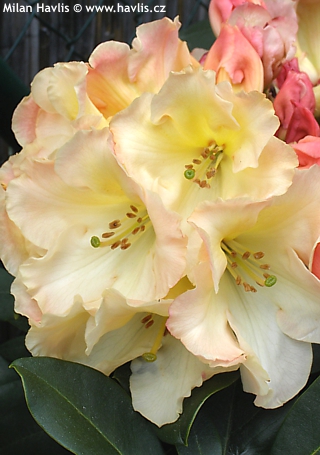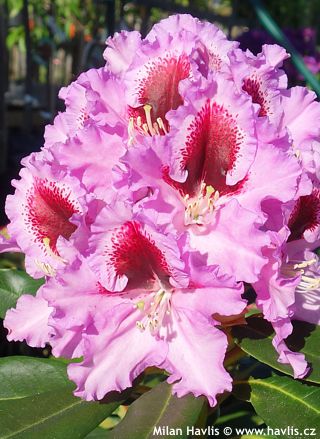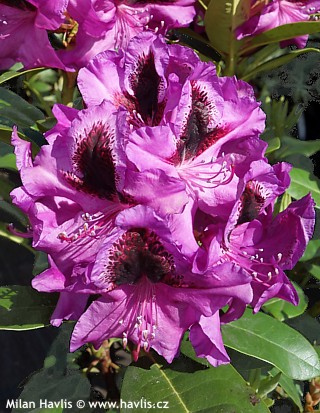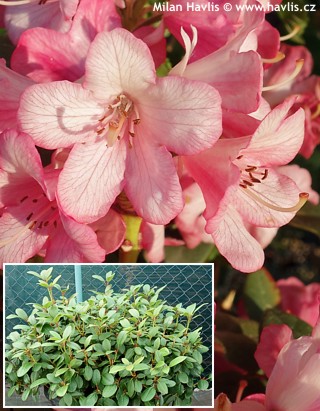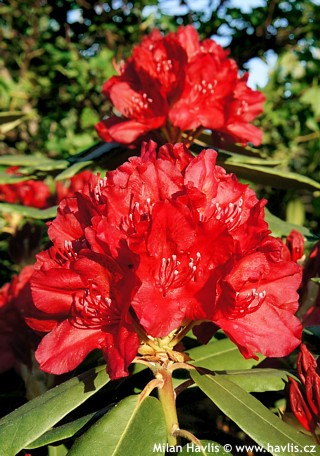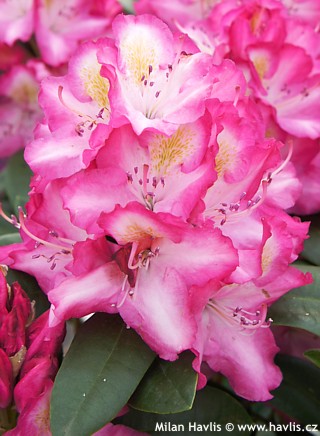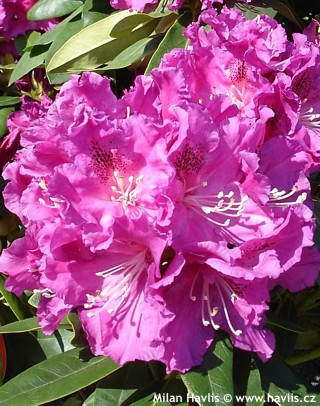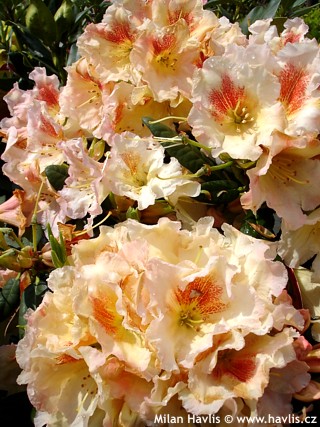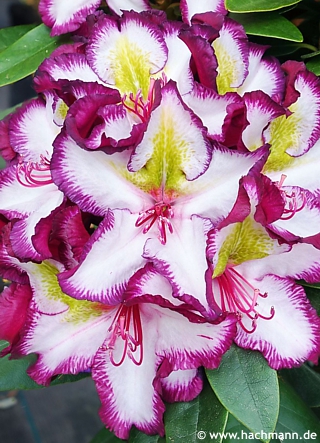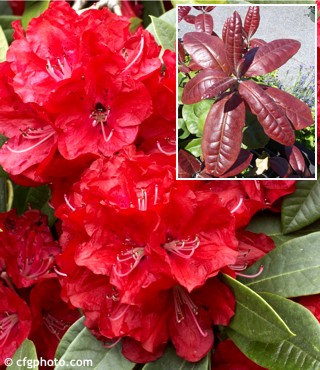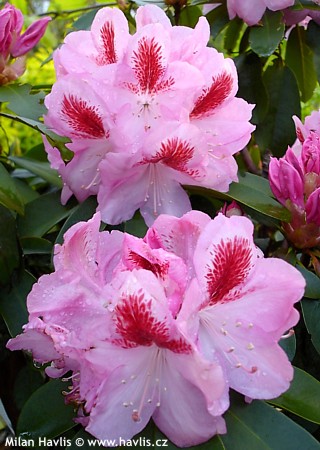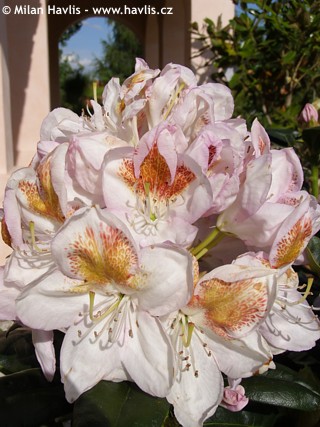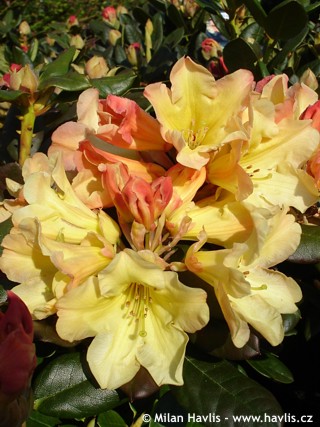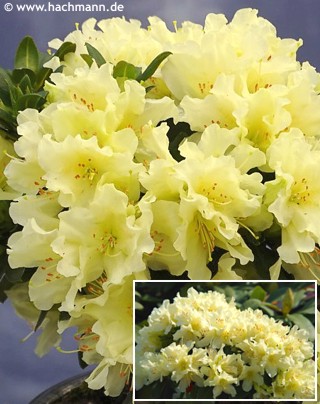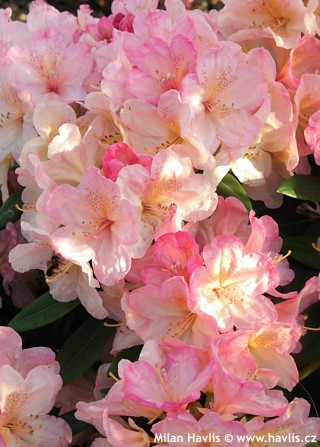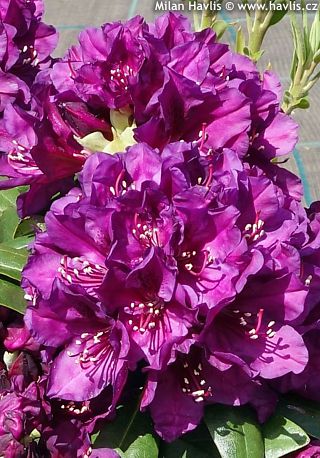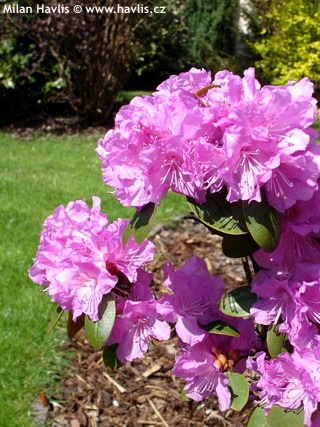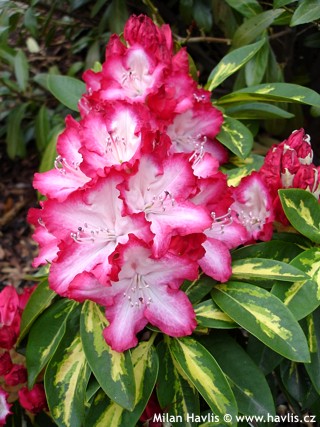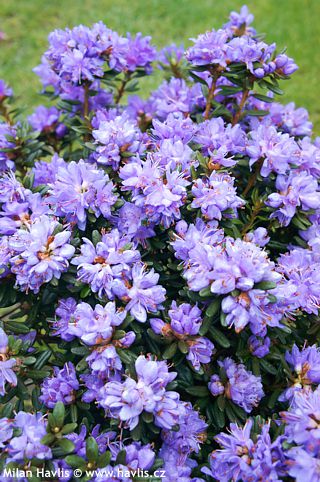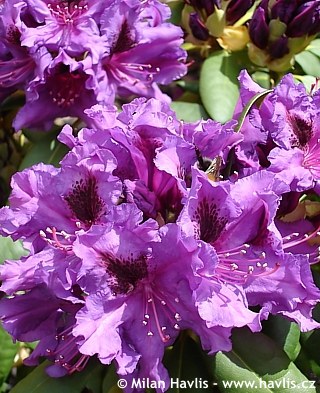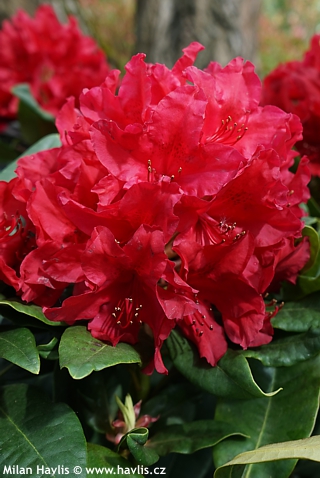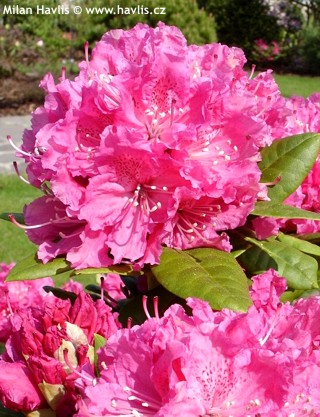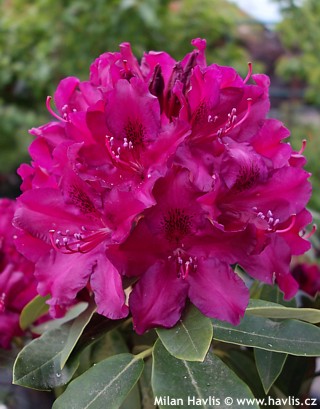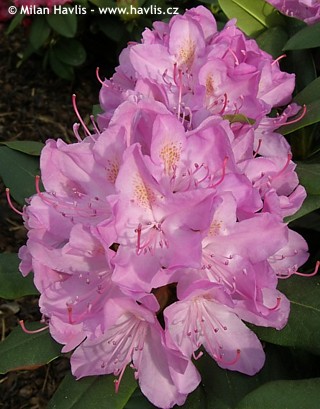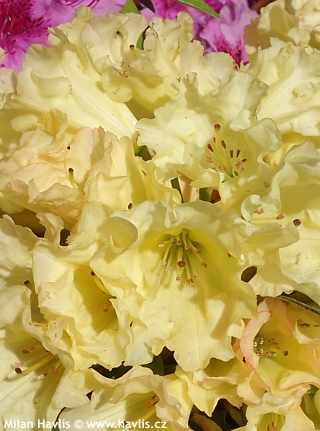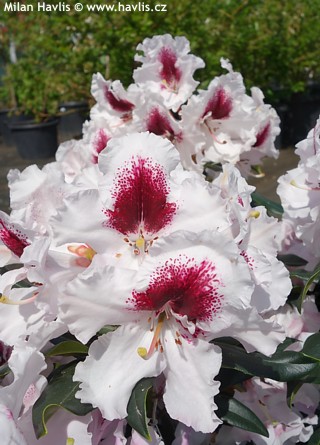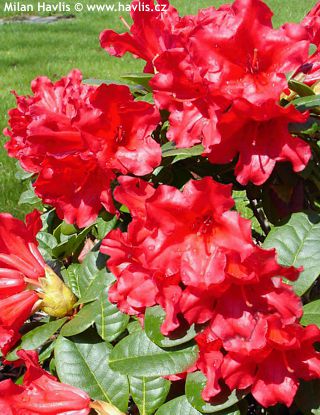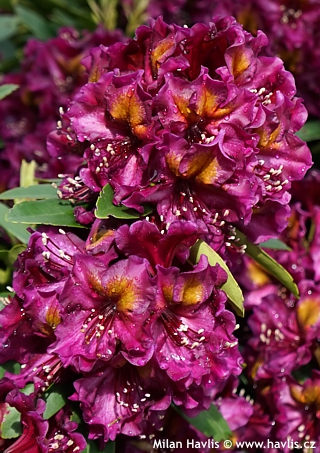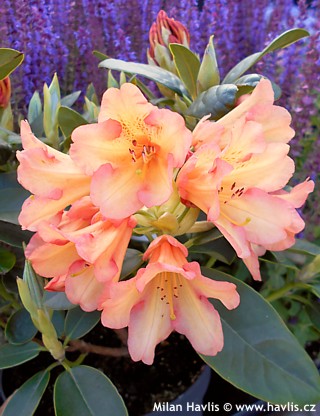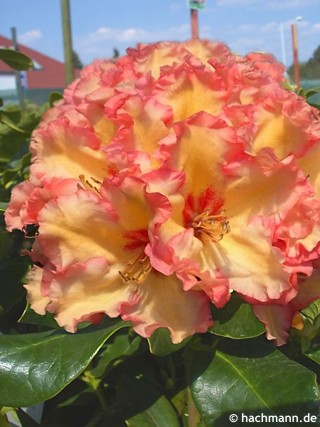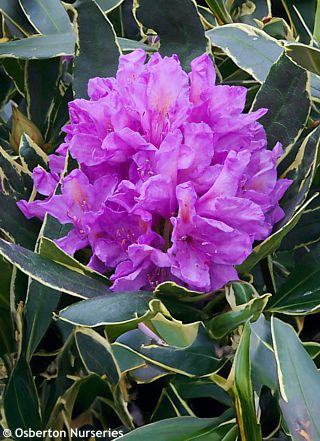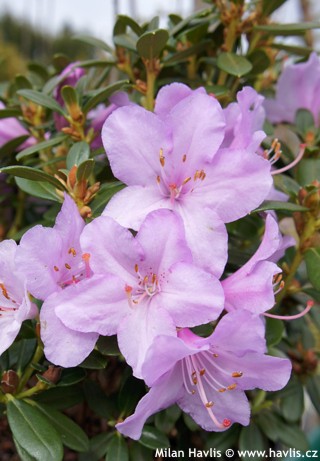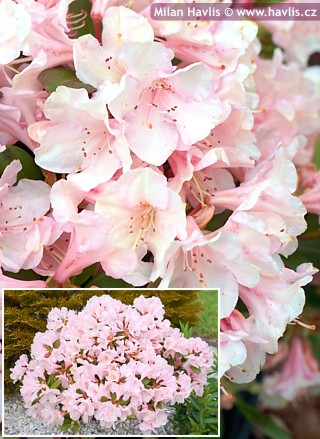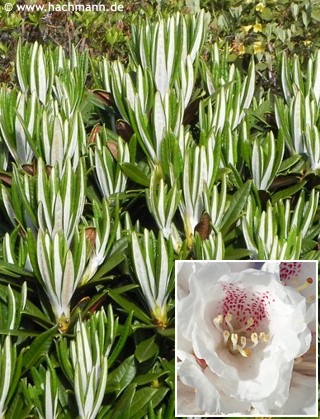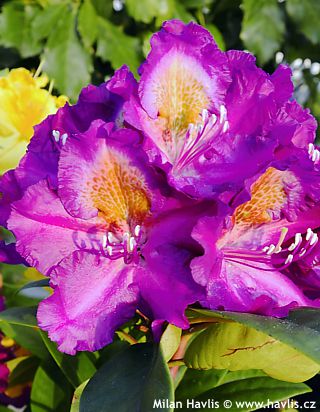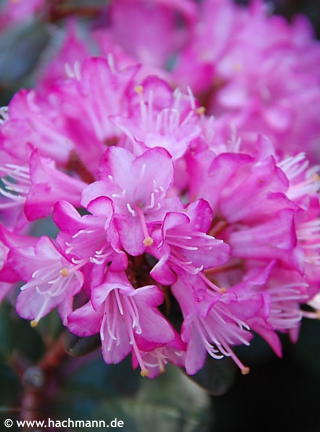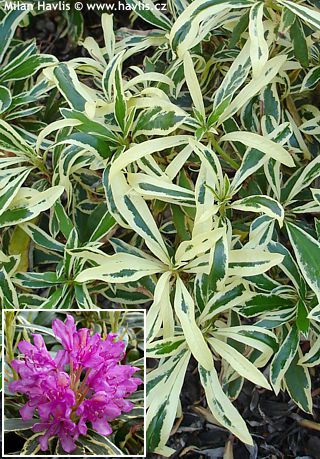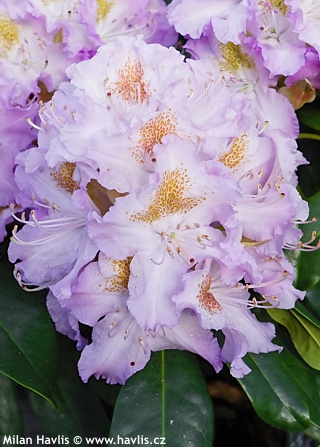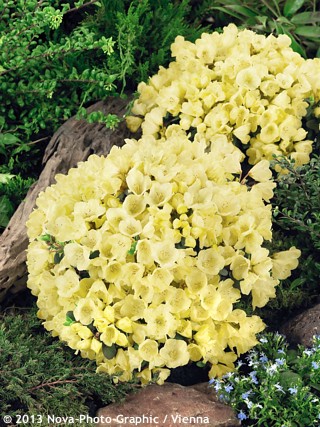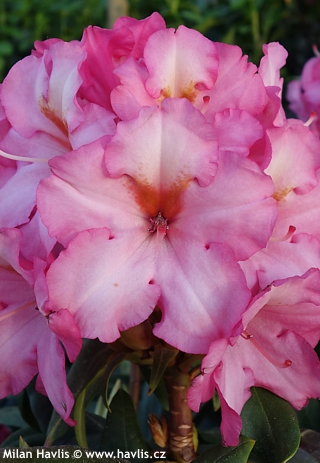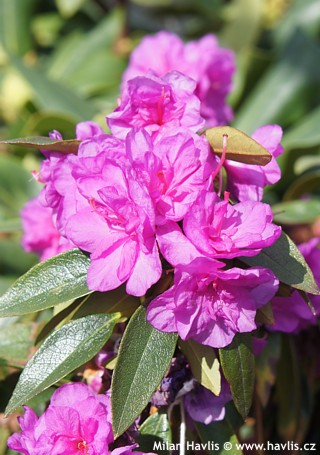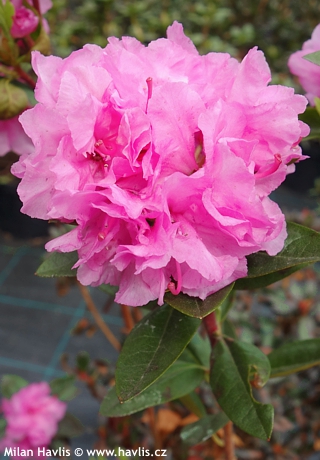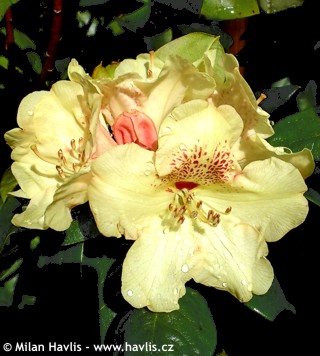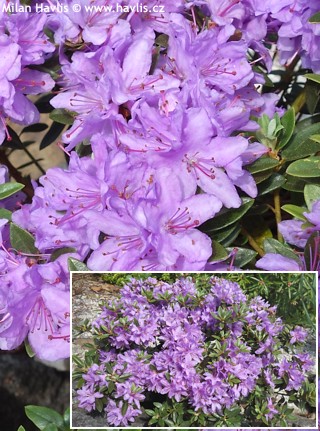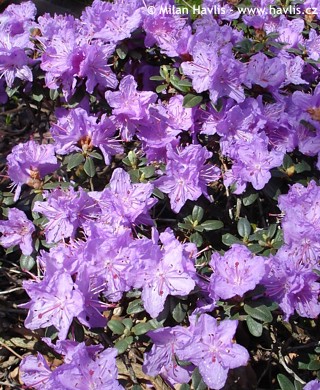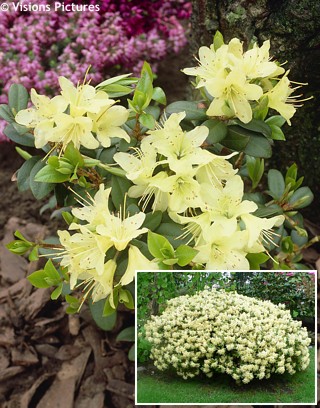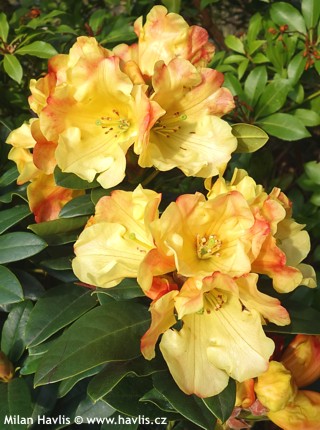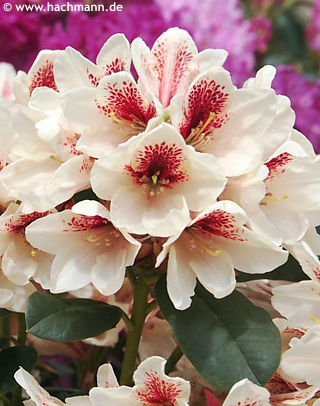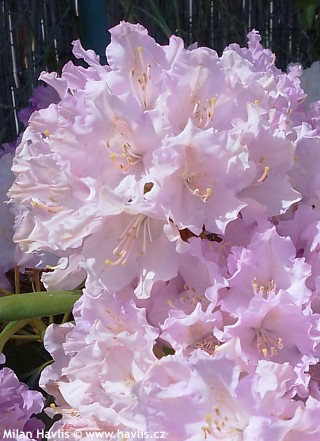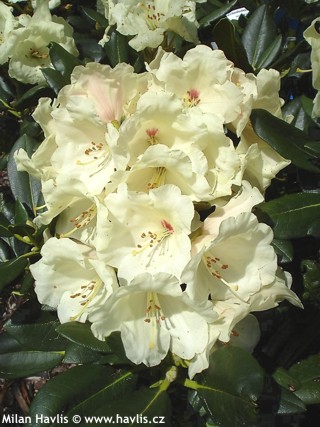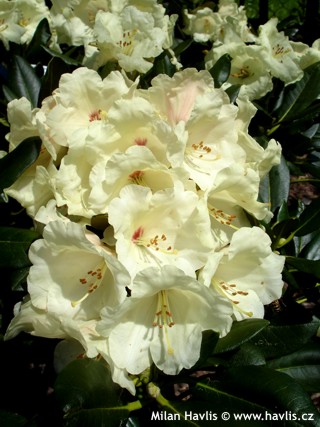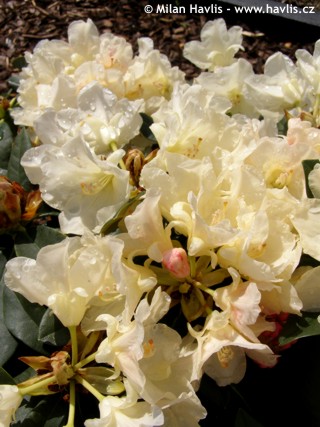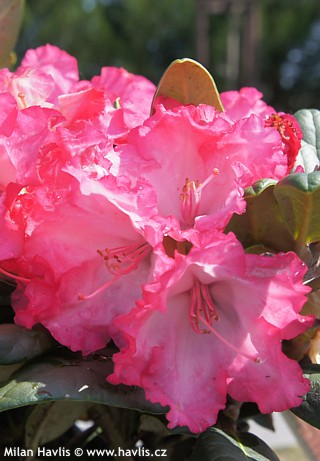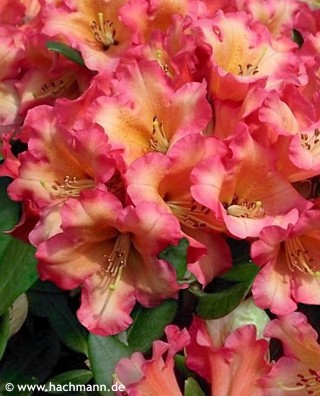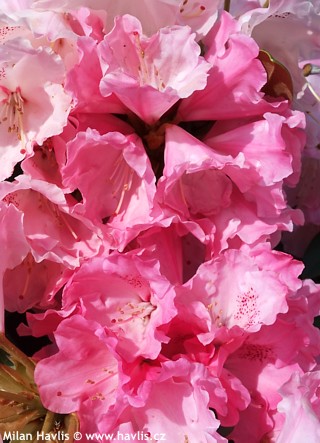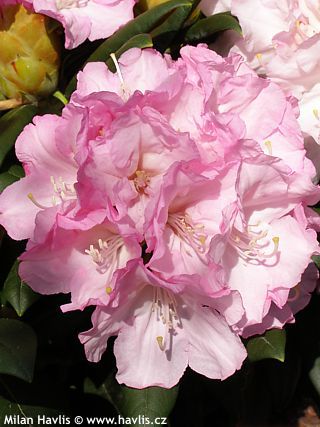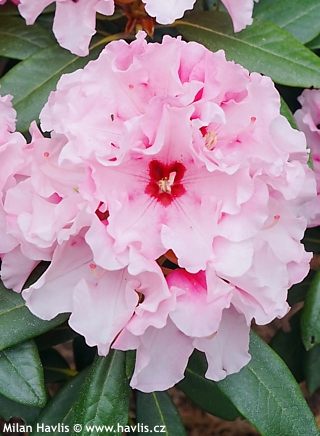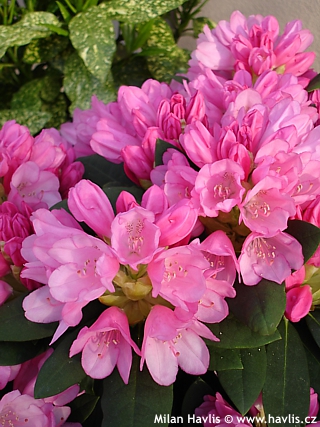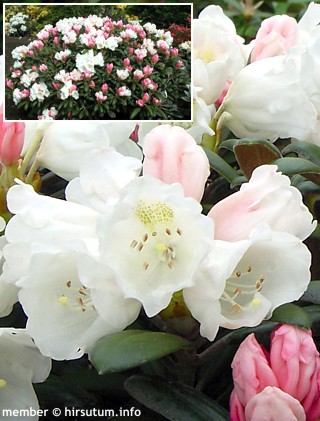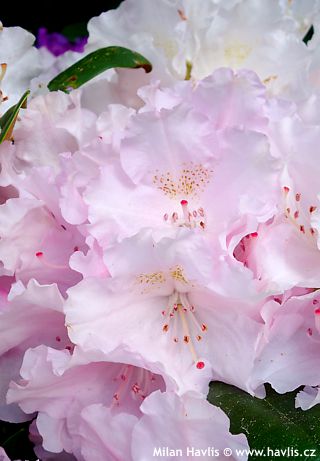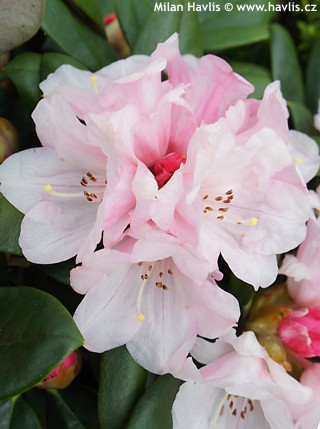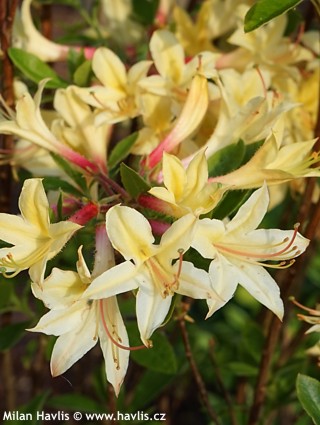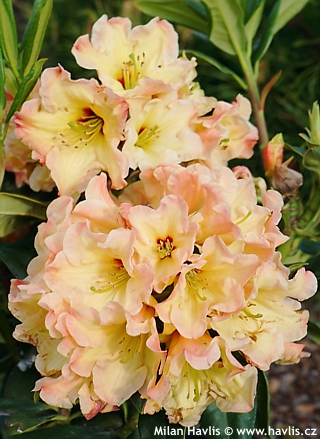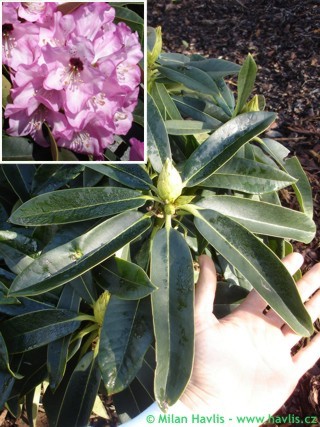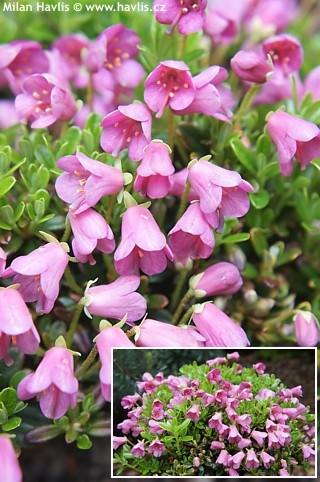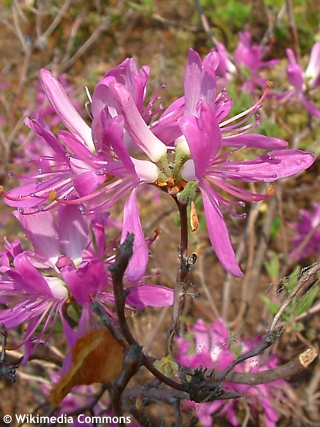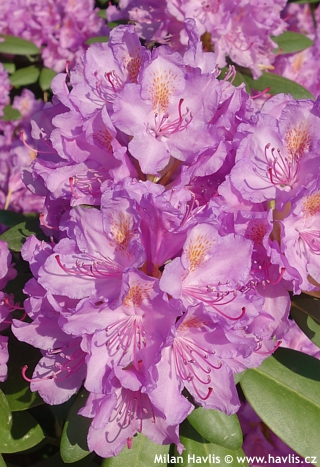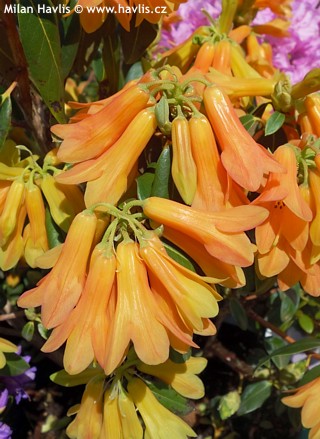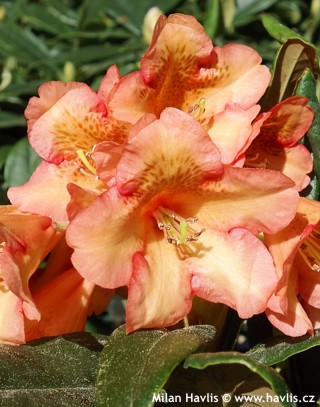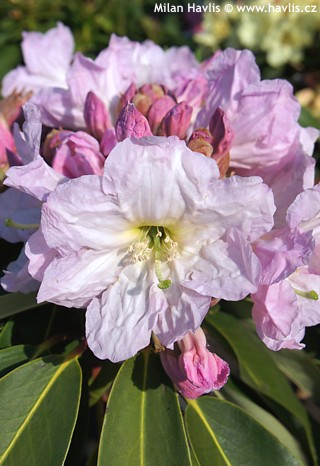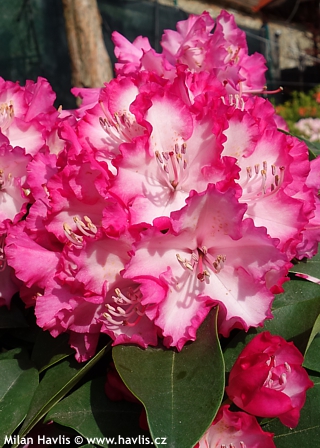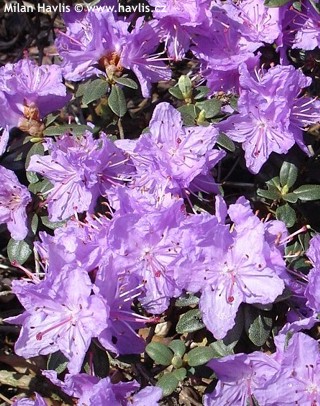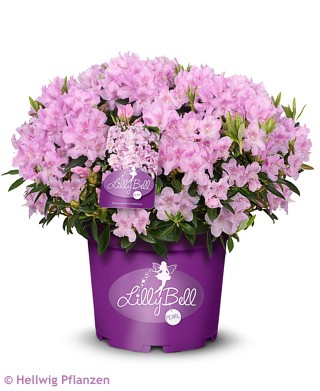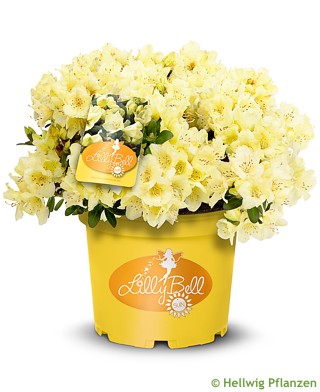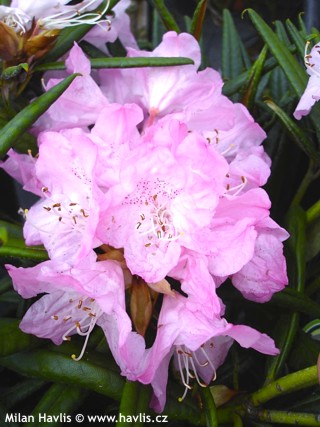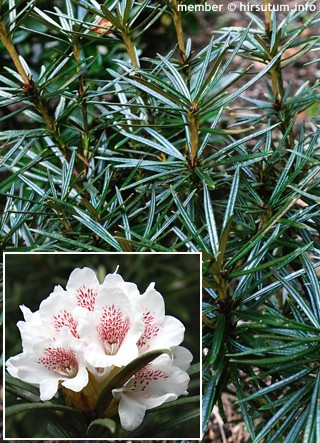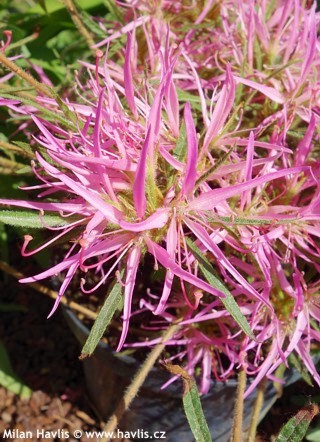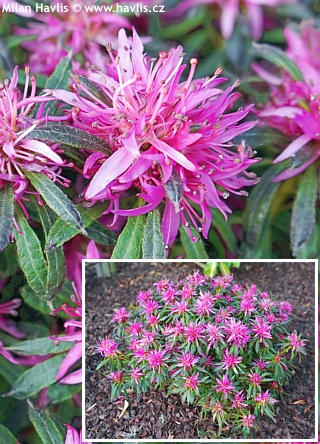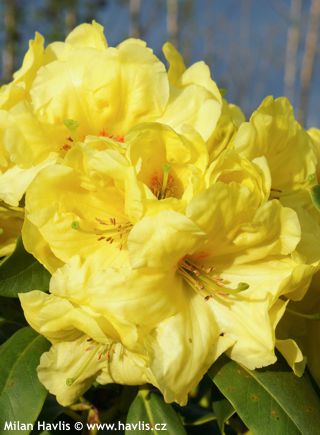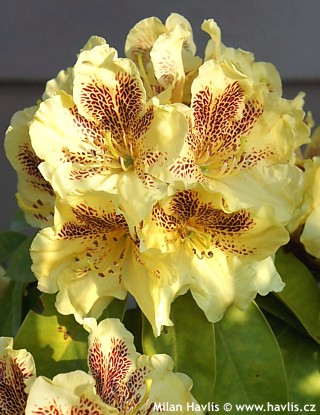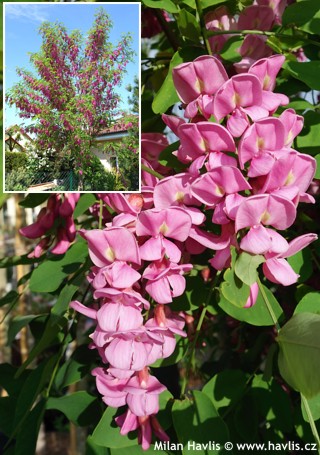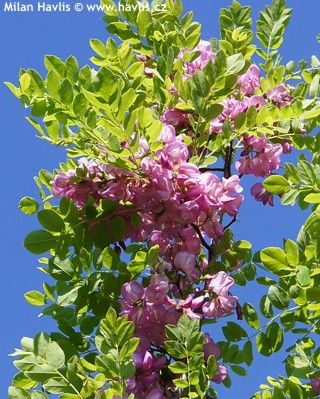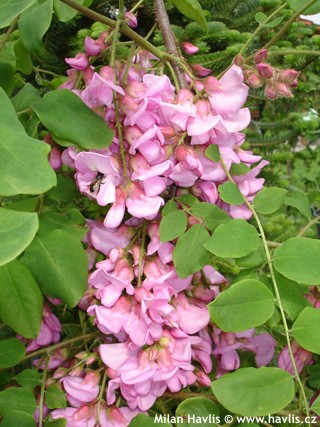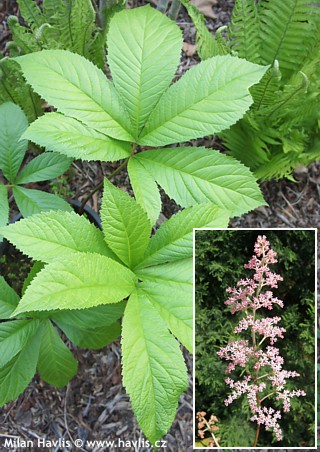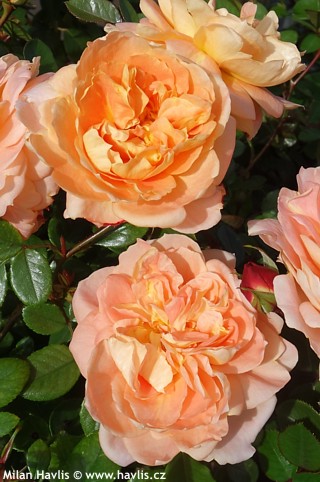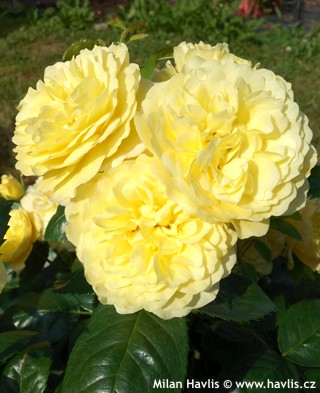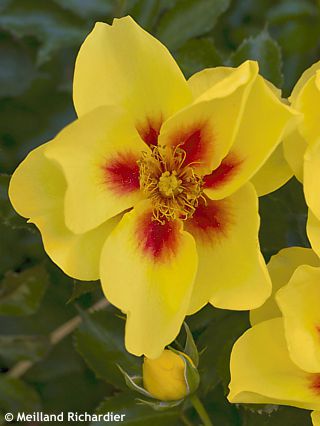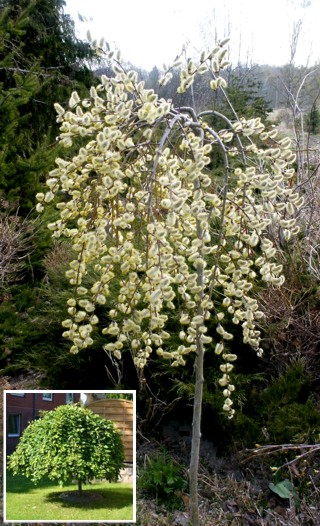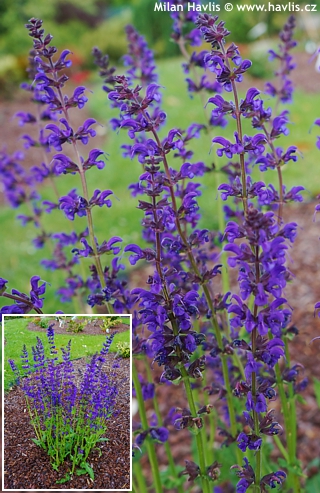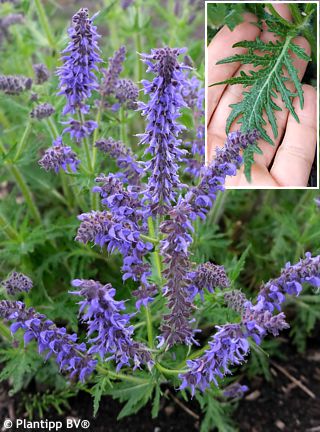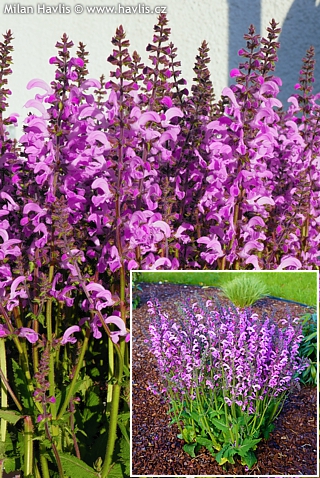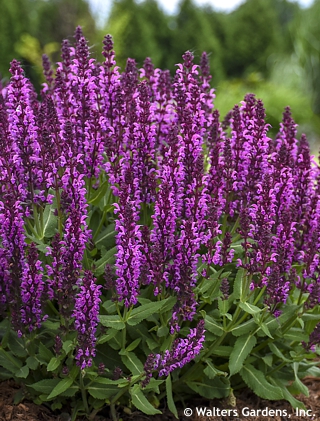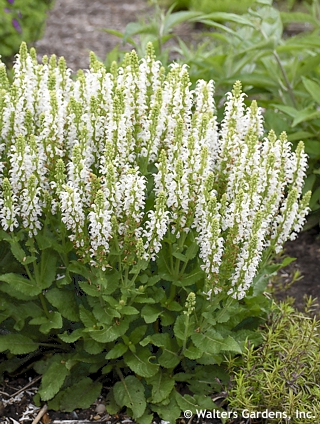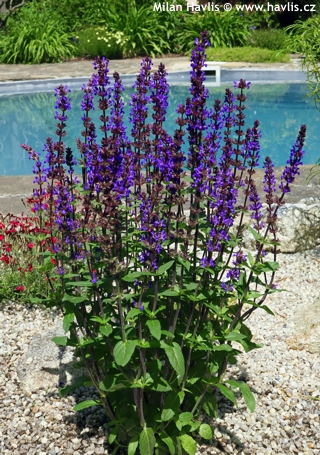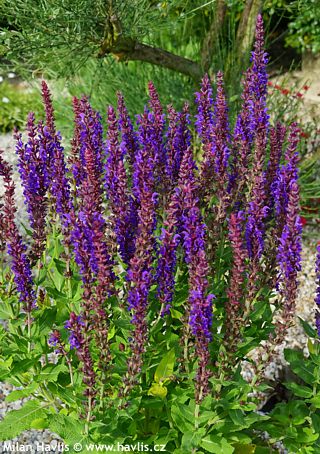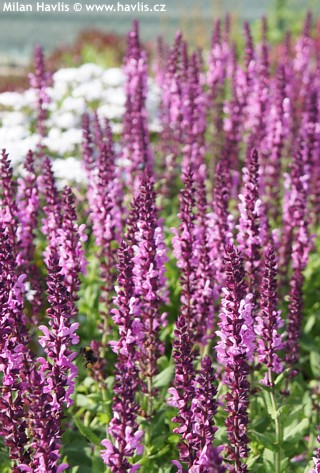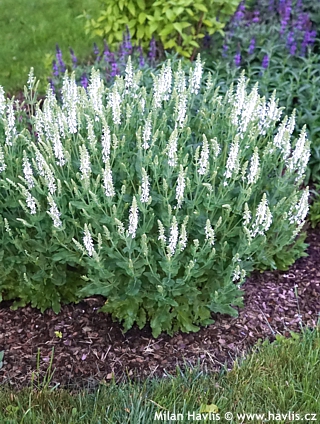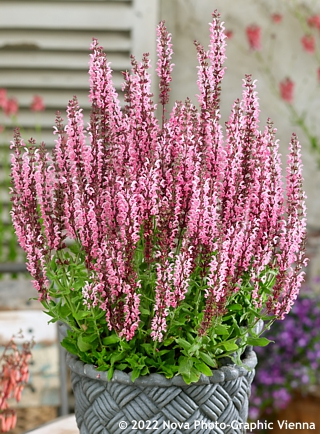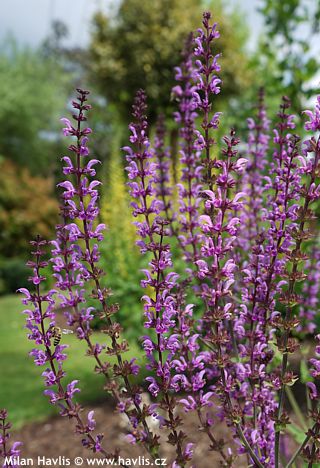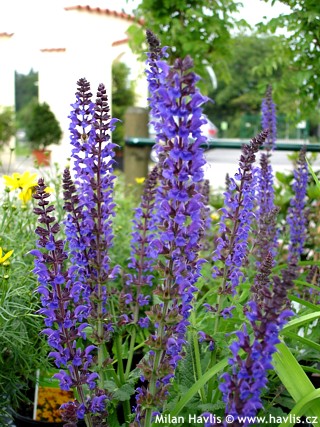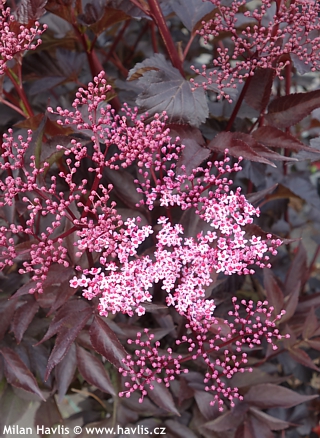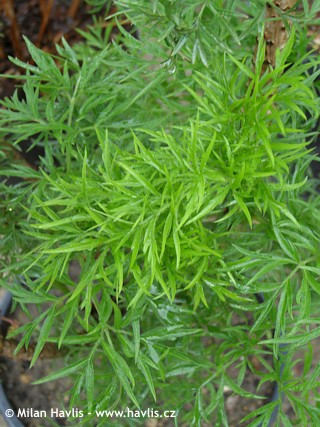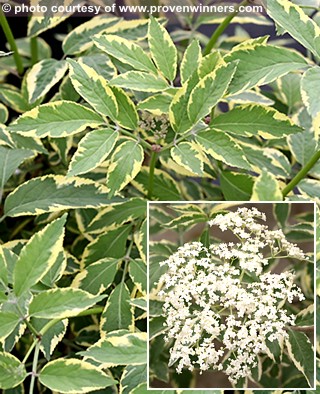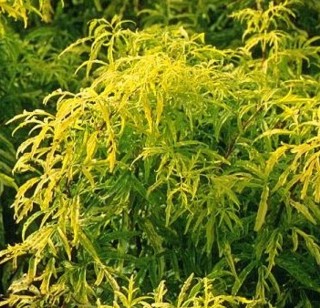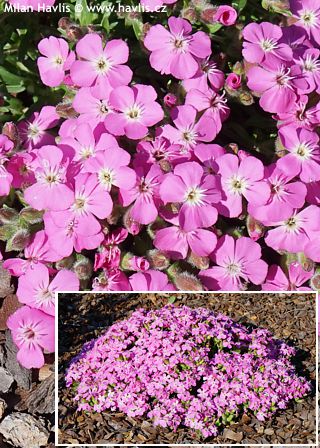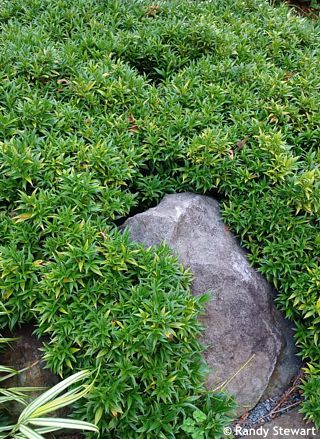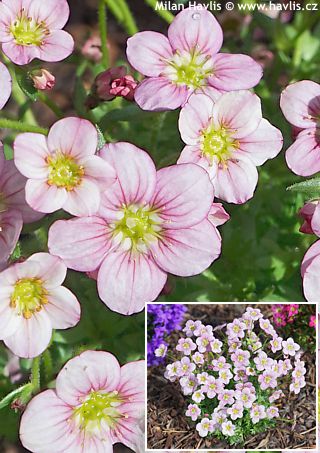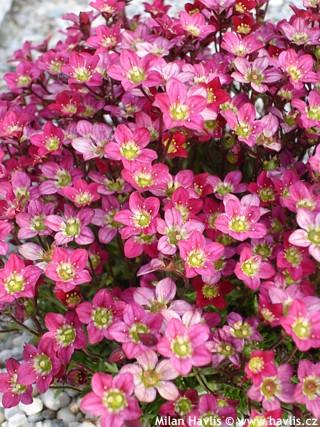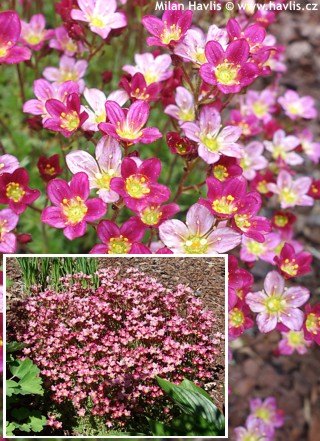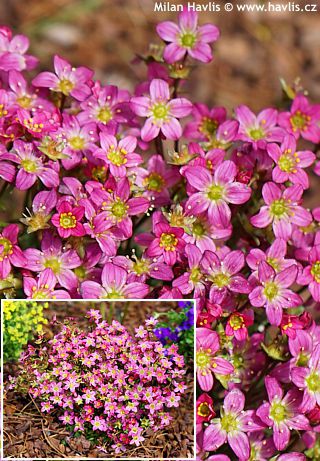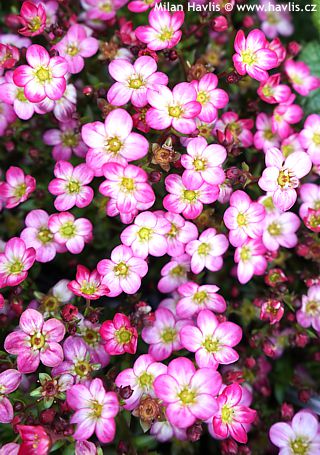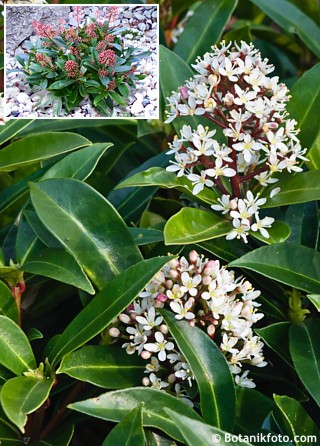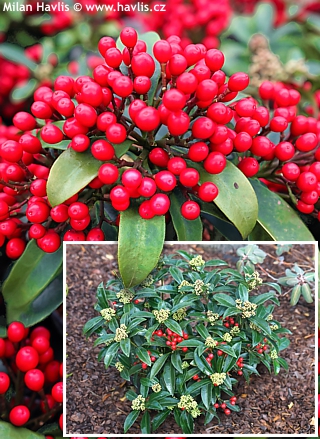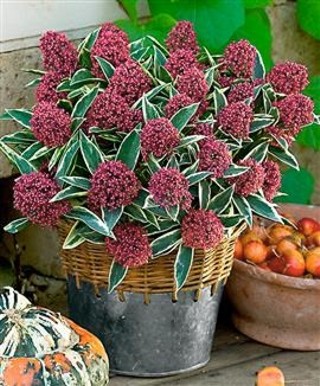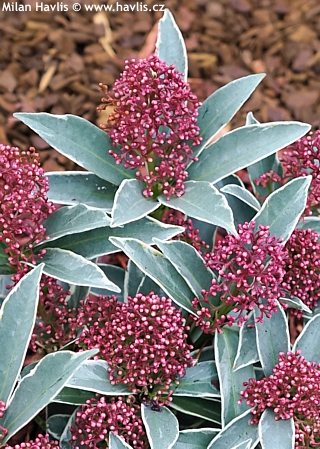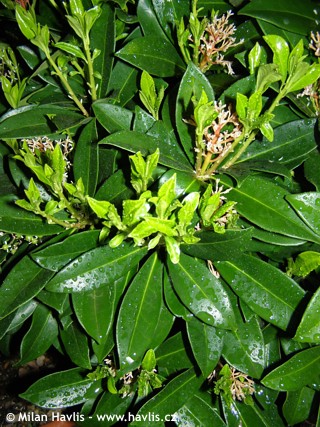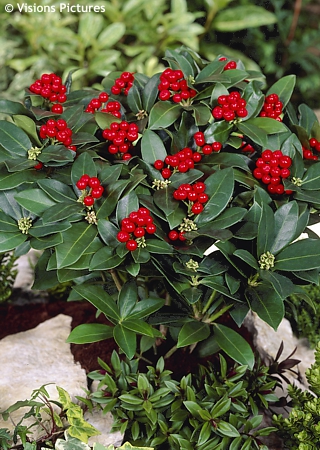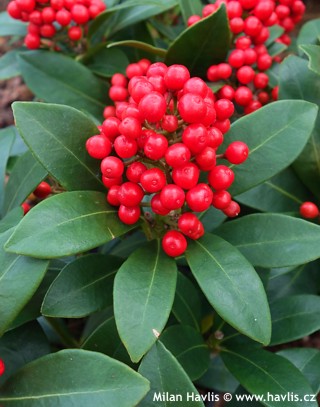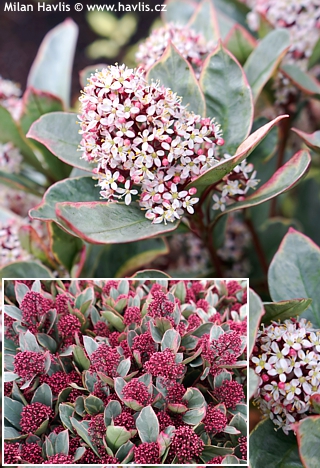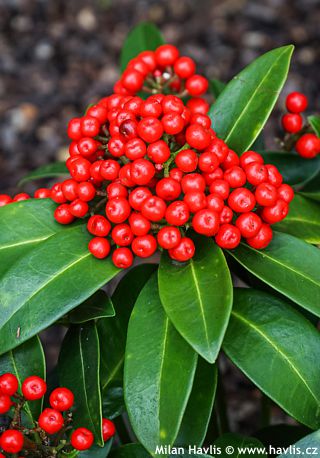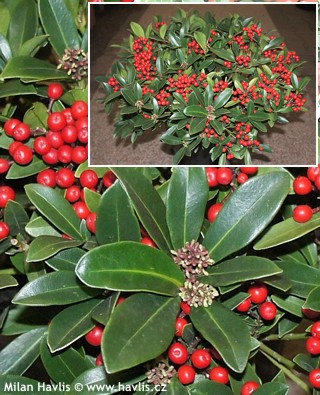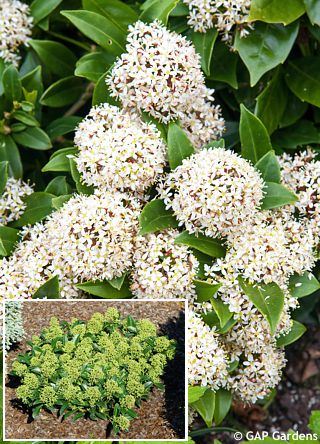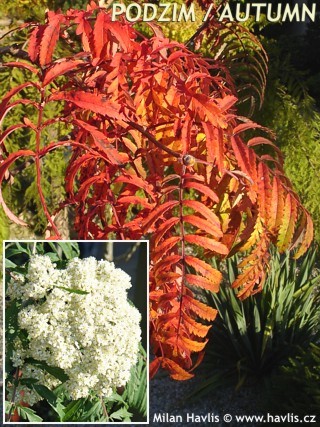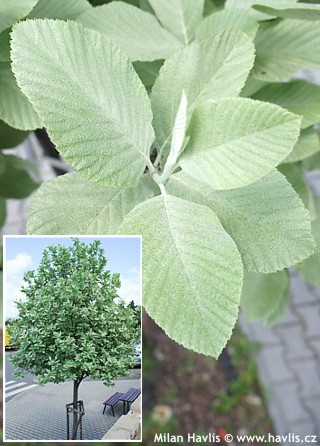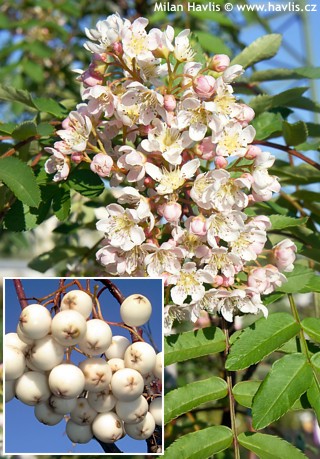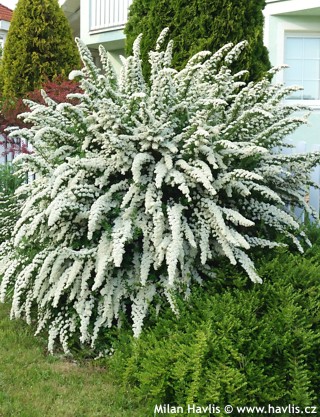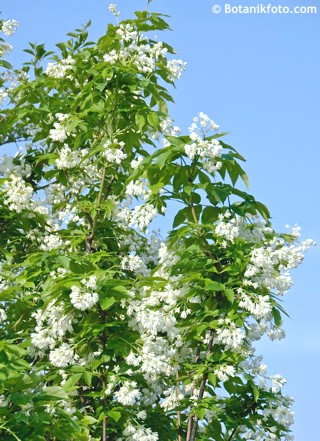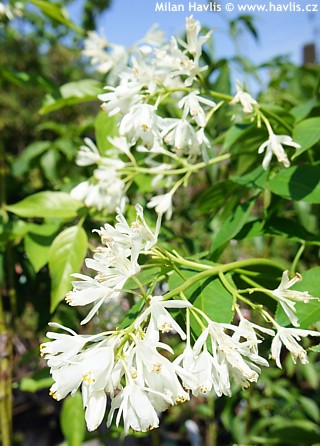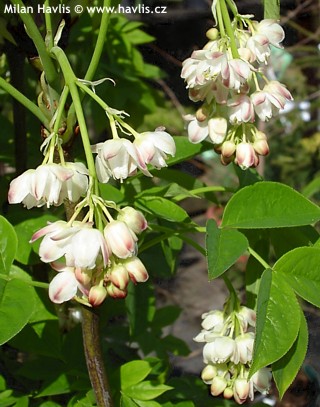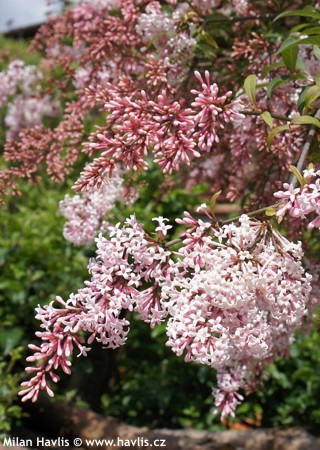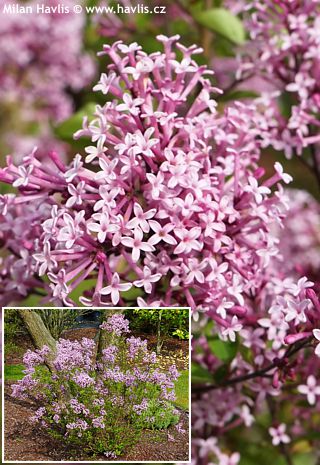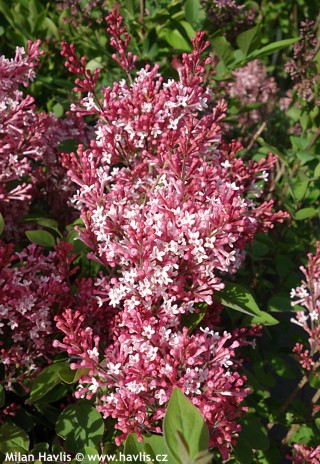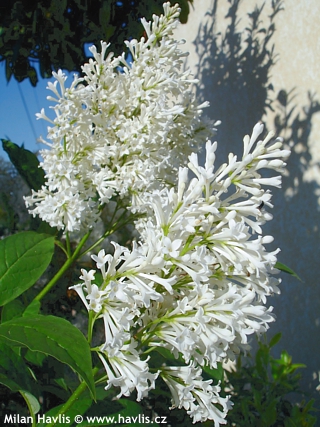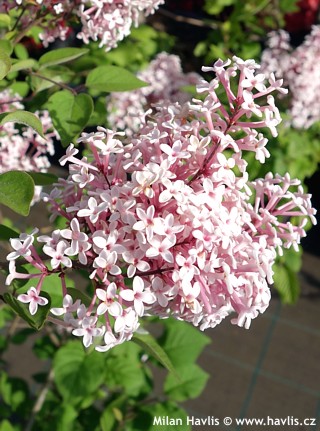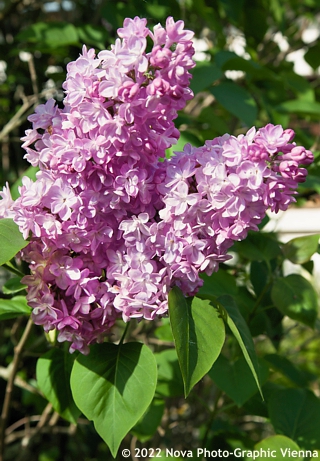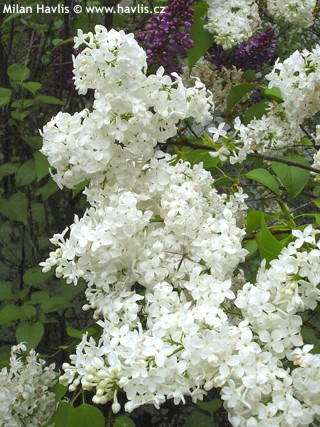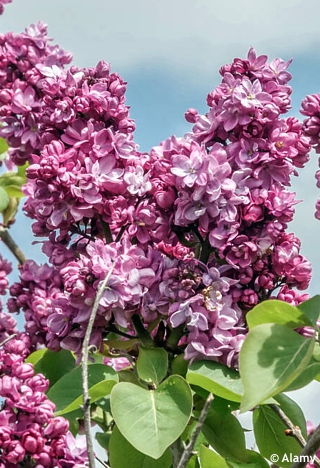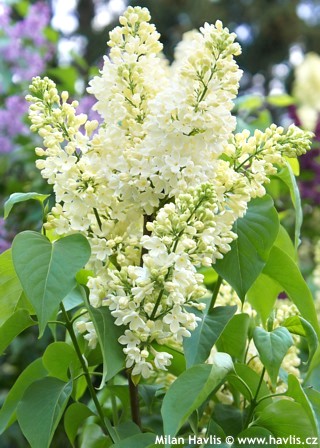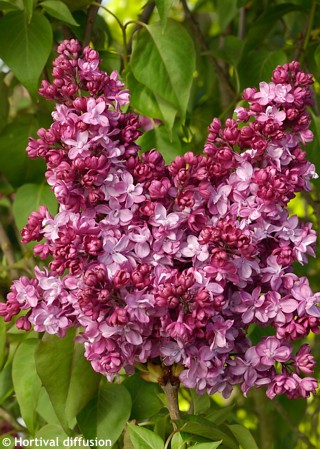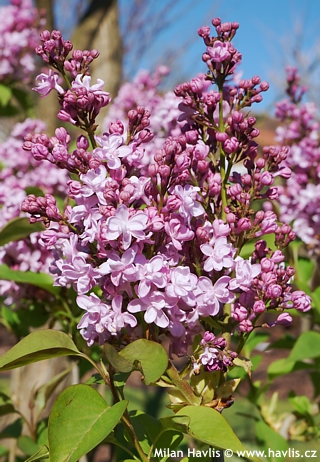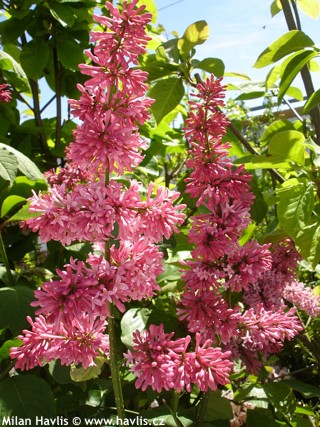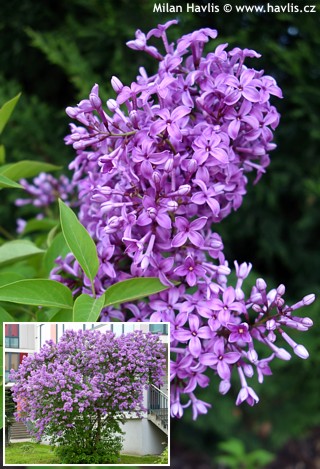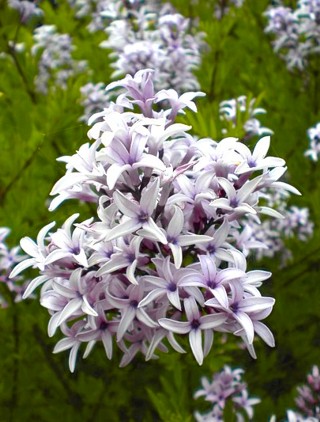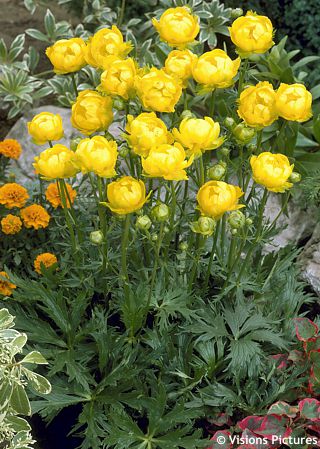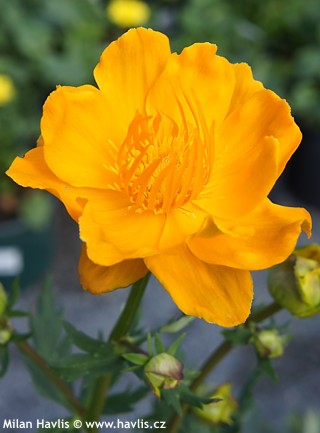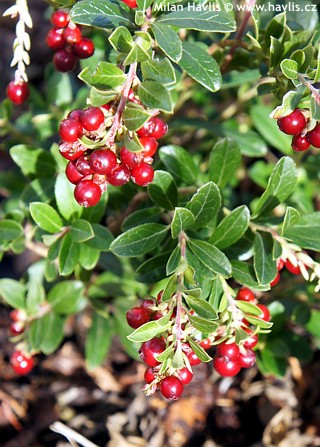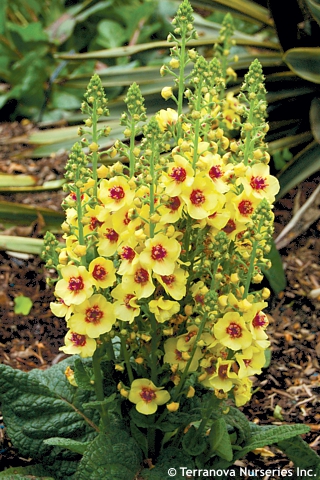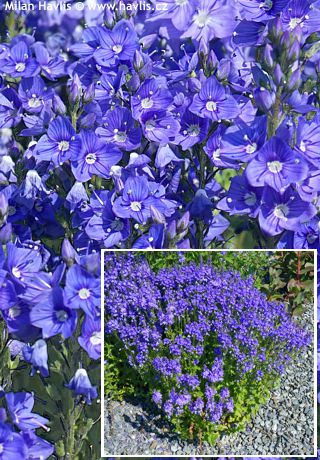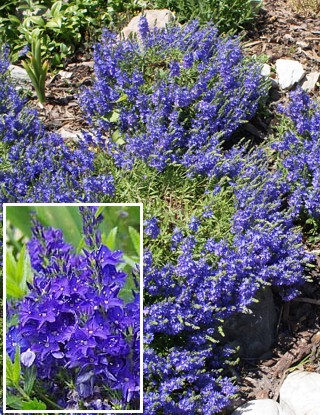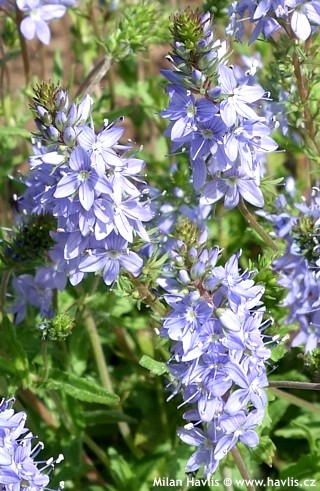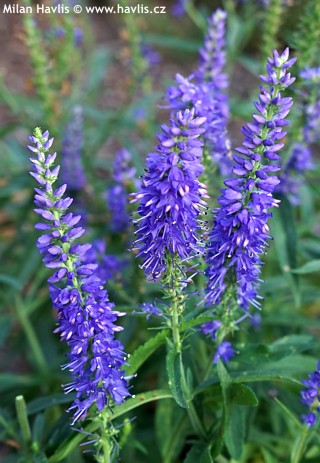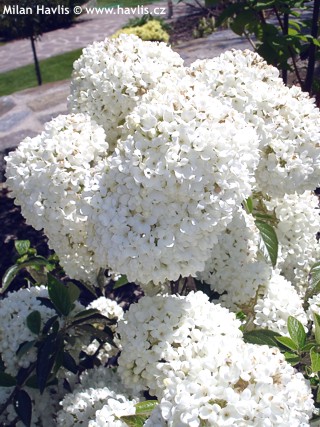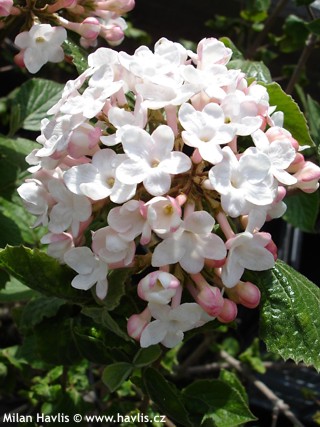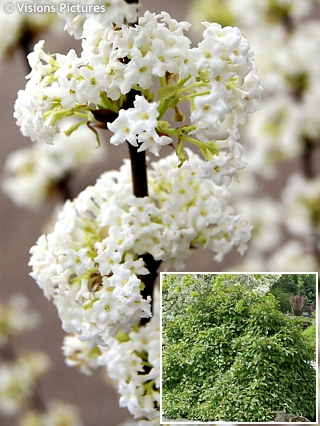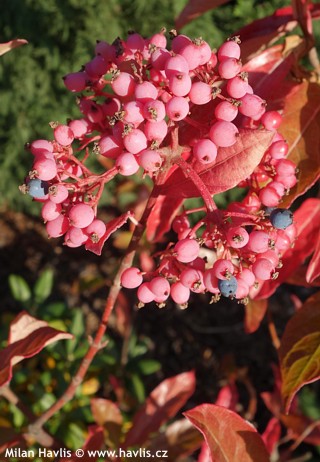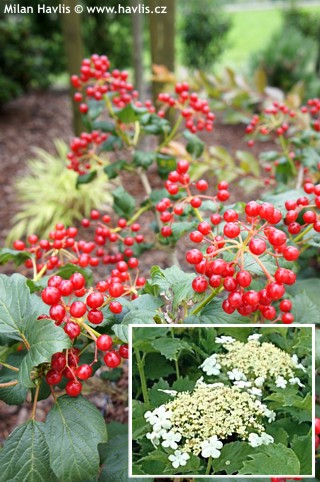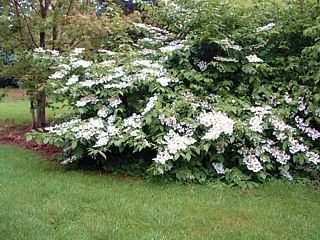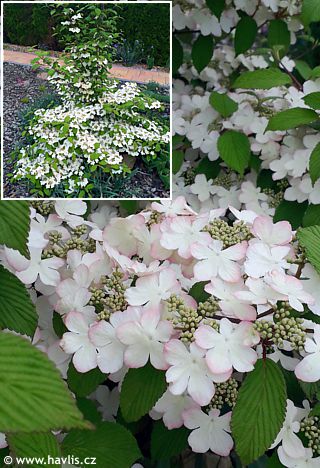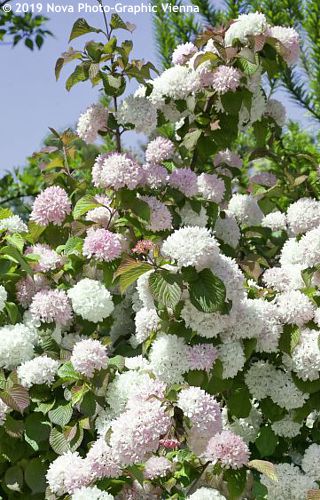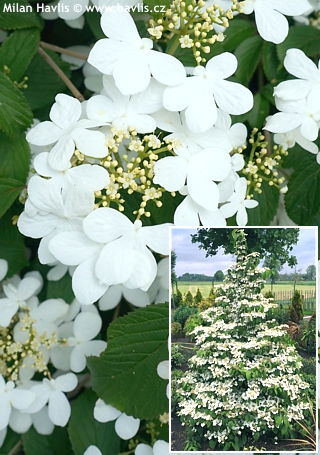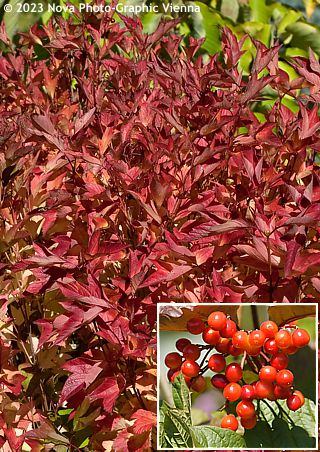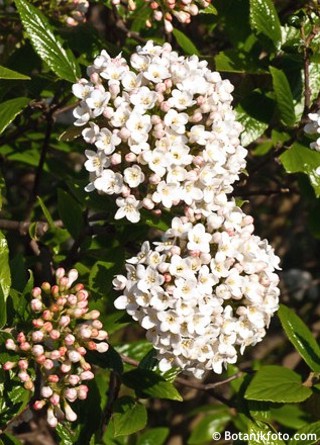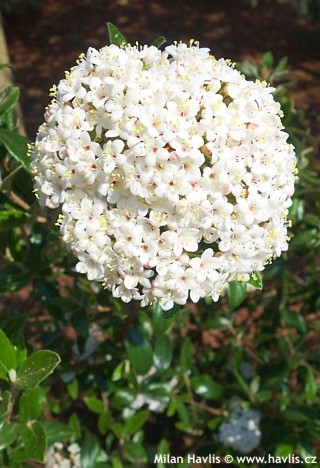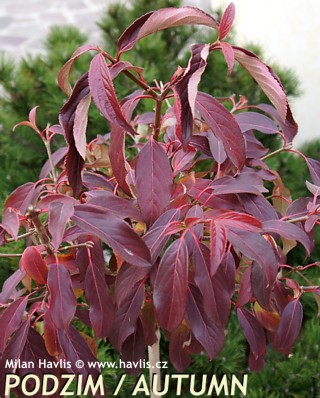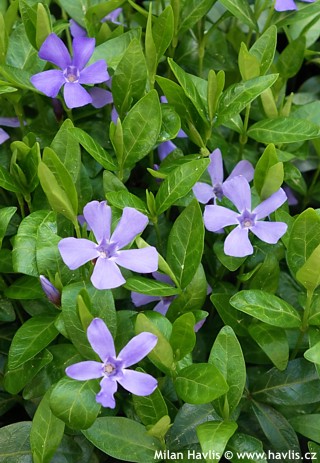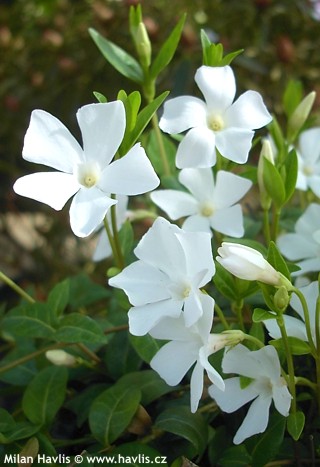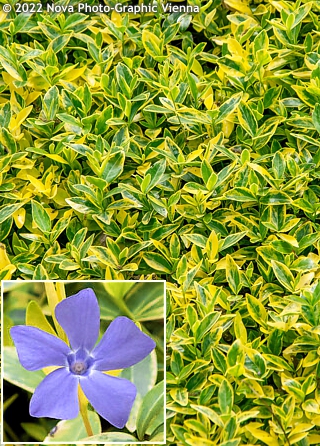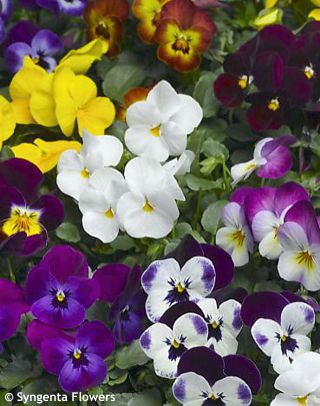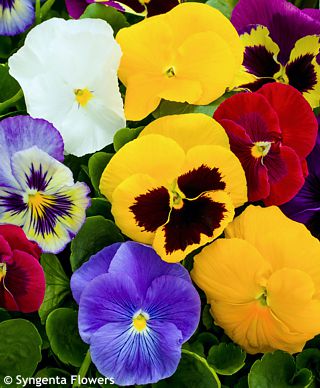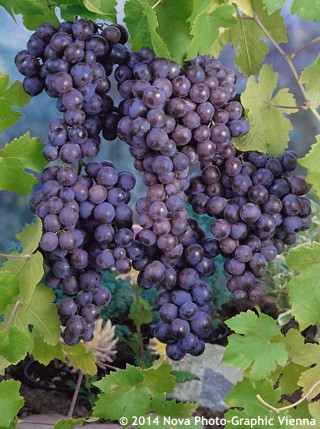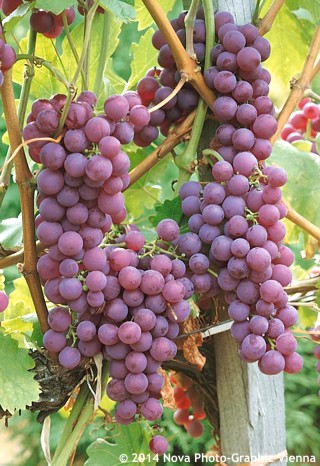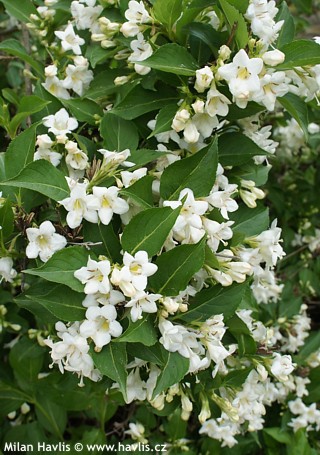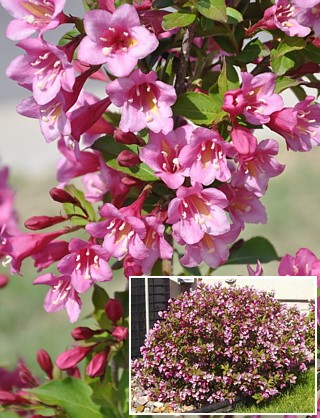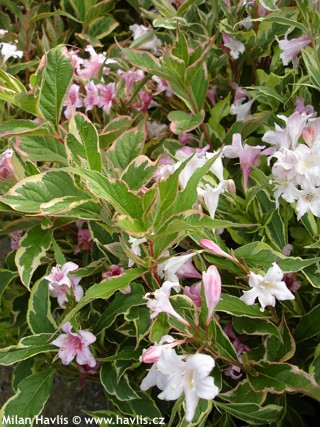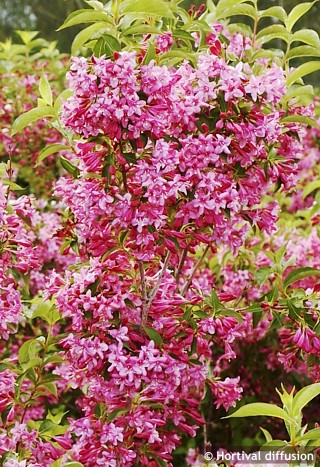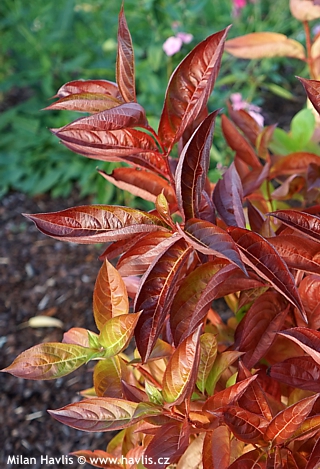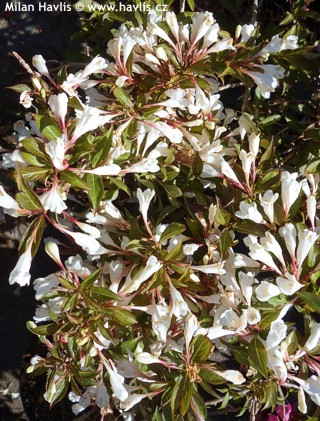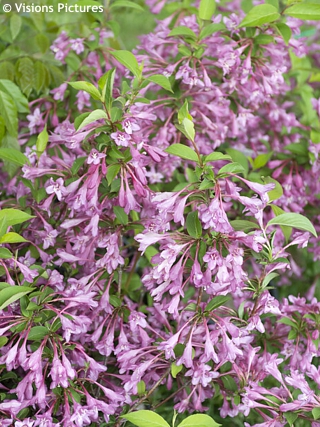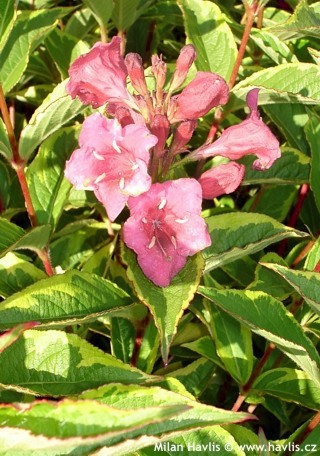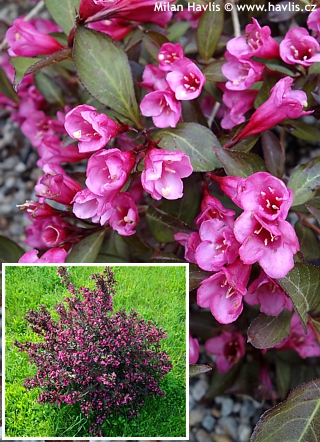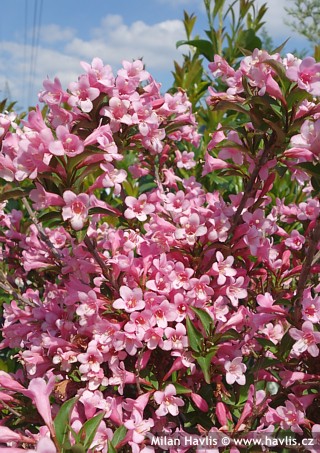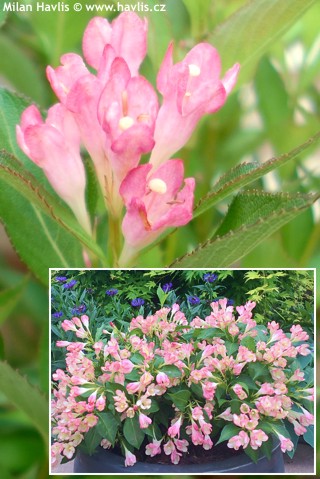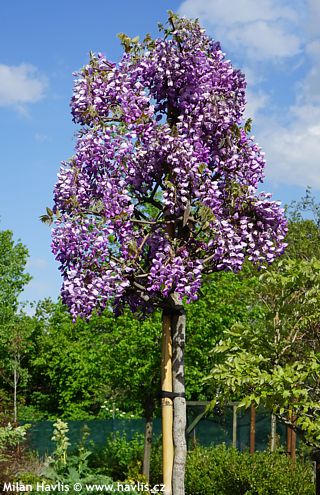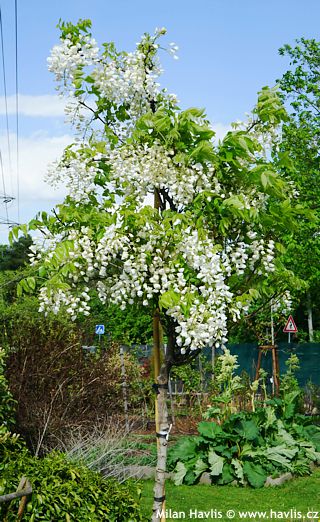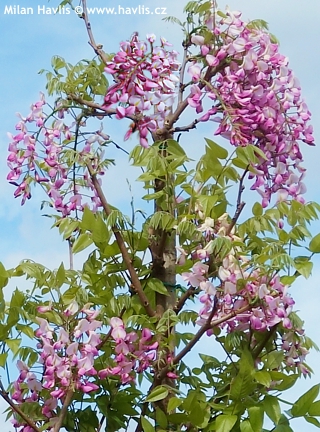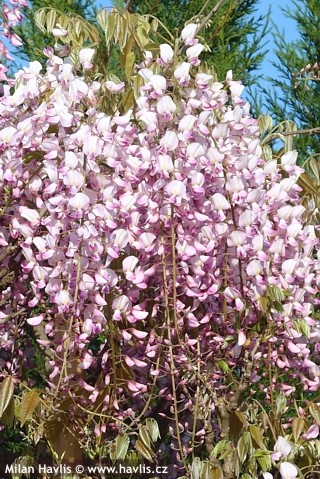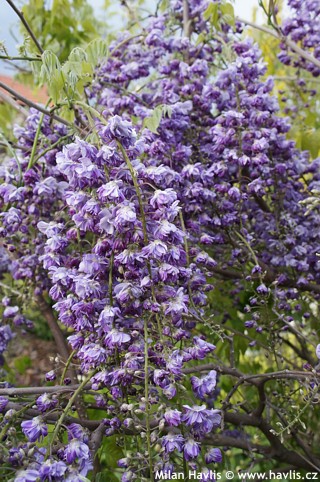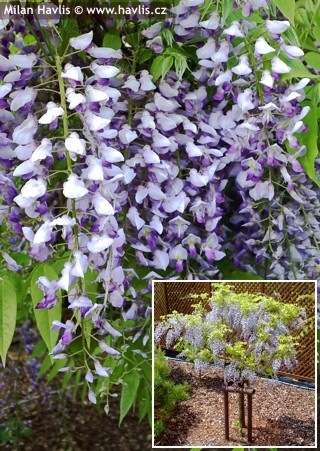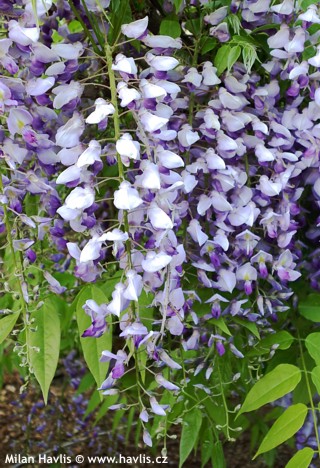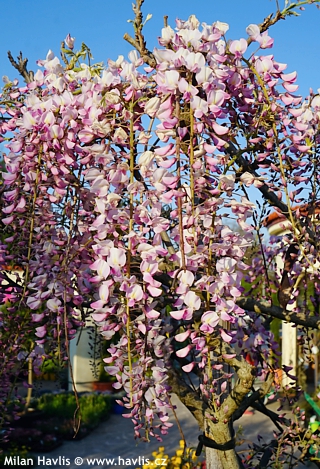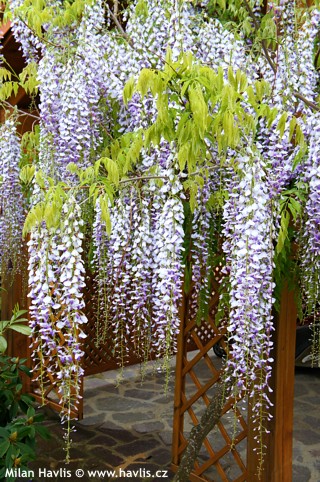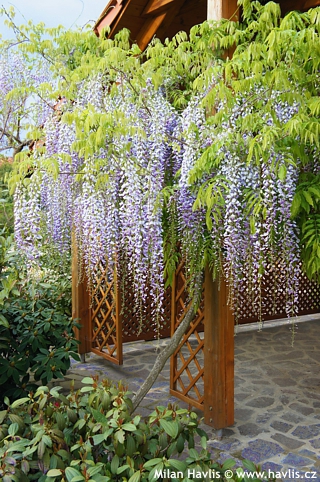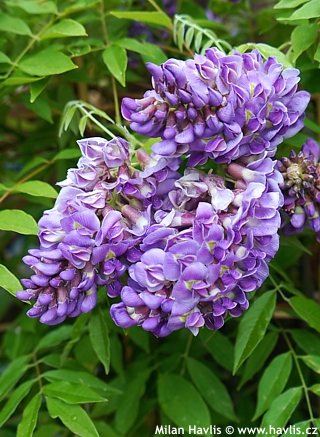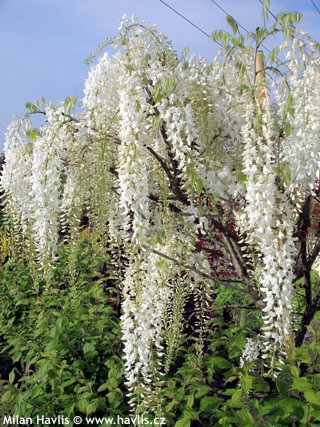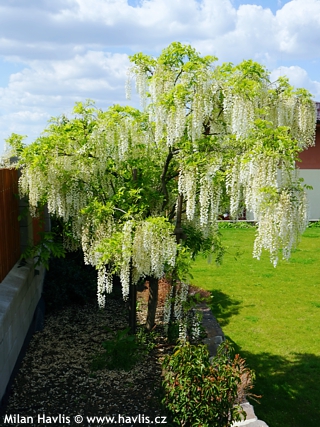CURRENTLY IN STOCK:
Another website I came across calls this Norway maple a meat-ball-on-a-stick. Quite funny, actually, but in fat it truthfully describes the shape of this small tree. Well, that only in case the author meant a good housewife who made proper, perfectly spherical meat balls.
Globosum is a variety with ...

IV - V

2 - 4m

2 - 4m

full sun

4 (down to -34°C)

for zone 5+6

for zone 7
Golden Globe is a dwarf Norway maple i.e. one of those with large leaves as opposed to Japanese maples with small and dissected foliage. One of the big advantage of Norway maple is its resistance against majority of common tree diseases and pests. And it will grow almost anywhere.
Golden Globe vari ...

IV - V

2 - 4m

3 - 4m

full sun

4 (down to -34°C)

for zone 5+6

for zone 7
Men usually get mad when women describe colours with expressions like salmon pink, peachy red etc. Well, men, get ready for another hit below the belt: we have a tree whose leaves are SHRIMP pink. Not familiar with that colour? Go to the nearest restaurant and have a prawn-cocktail to see what the f ...

IV - V

2 - 3m

full sun

4 (down to -34°C)

for zone 5+6

for zone 7
Shirasawan’s maple is a sought-after species of Japanese maple valued mostly for its unique leaf shape. To date (July 2020) there are 17 recognized varieties, and MOONRISE is a recent introduction from the USA where its inventor Carl A. Munn patented it as PP16718 in 2004. He discovered it in ...

IV - V

3 - 5m

2 - 4m

full to partial sun

5 (down to -29°C)

for zone 5+6

for zone 7
Issai is a self-fertile variety of the so-called mini-kiwi. This means that unlike the species it does not need a male and a female plant to produce fruit. Apart from tasty fruit it is a nice plant, too, with deep green leaves and scented flowers in June.
It is a vine that is less vigorous that the ...

V - VI

3 - 6m

full sun

4 (down to -34°C)

for zone 5+6

for zone 7
Red horse chestnut is a fantastic tree which is usually planted in large gardens and parks, and as a street tree. Although, this hybrid grows a little slower (30 cm a year) making some 6x4m when 20 years old.
Briotti is a popular variety with big, upright panicles of deep pink flowers with a distin ...

V

6 - 15m

6 - 10m

full to partial sun

5 (down to -29°C)

for zone 5+6

for zone 7
Chocolate vine is a tasty name for a beautiful climbing plant from Asia called akebia. Its home is in China, Japan, and Korea but being hardy to some -34 °C it is popular in almost all temperate parts of the world. It is cultivated for handsome foliage and profusion of attractive flowers in spring. ...

IV - V

5 - 10m

full sun to shade

4 (down to -34°C)

for zone 5+6

for zone 7
Saskatoon is a native Canadian species of juneberry. It is cultivated for very tasty and juicy fruit which are deep purple to blue-purple berries similar to blueberries. They are formed in short clusters and best picked when fully ripe = when it turns the deepest colour. It can be used in any way yo ...

IV - IV

1 - 3m

1 - 1,5m

full sun

1 (down to -46°C)

for zone 5+6

for zone 7
RAINBOW PILLAR® is a unique variety of shedblow serviceberry with upright, columnar growth that is suitable for small gardens and hedges. In April it produces numerous star-shaped, white, scented flowers that are followed by small, spherical berries. These are ready to be picked when their red ...

IV - IV

2 - 5m

1 - 2m

full sun

4 (down to -34°C)

for zone 5+6

for zone 7
Juneberry is a large shrub cultivated mostly for its delicious and healthy fruit. It is a large deciduous shrub or a small tree.
Flowers are star-shaped, white and scented and appear in mid spring. Oval leaves are up to 8 cm long, emerge bronze and mature to green colour, turning scarlet red or dee ...

IV - V

2 - 6m

2 - 5m

full sun

4 (down to -34°C)

for zone 5+6

for zone 7
Blue Ice is a variety of bog rosemary with bright silvery blue leaves. They are linear-lance-shaped, 2-3 cm long. Urn-shaped flowers appear from mid spring until early summer and are light pink. It is a slow growing, mound-forming or ground-covering.
It loves moist to wet places with humus-rich, co ...

V - VI

0,2 - 0,6m

0,6 - 1m

full to partial sun

2 (down to -45°C)

for zone 5+6

for zone 7
Blue Lagoon is a Bog rosemary with clear blue-grey leaves with silvery hues. They are evergreen, linear-lance-shaped, rosemary-like, 2-3 cm long. Urn-shaped, soft pink flowers appear from mid spring (April/May) and often last until early June. Blue Lagoon differs from its parent plant Blue Ice with ...

IV - VI

0,3 - 0,5m

0,4 - 0,8m

full to partial sun

2 (down to -45°C)

for zone 5+6

for zone 7
Compacta is a dwarf bog rosemary with green foliage and profusion of light pink flowers. Leaves are rosemary-like, linear-lance-shaped, 2-3 cm long. Urn-shaped flowers are paler than on Nikko variety and appear in abundance from end April until early June. It is a slow grower forming a neat cushion ...

IV - VI

0,2 - 0,3m

0,2 - 0,4m

full to partial sun

2 (down to -45°C)

for zone 5+6

for zone 7
Japanese fan columbine is an Asian species producing strong, erect plants with large flowers. They open from mid to late spring and have different colours of their centres and petals. The flower buds are nodding, just like freshly opened flowers. Only after a few days, when they have matured, they r ...

IV - V

0,2 - 0,3m

0,2 - 0,3m

semi-shade / partial sun

3 (down to -40°C)

for zone 5+6

for zone 7
WINKY series of columbine comprises of strong varieties of several colors. They form compact and symmetrical clumps which look like precisely hand-tied bouquets. WINKY Red White produces unique, glossy flowers of rich burgundy red colour with white margins. They are borne atop about 60 cm tall stems ...

IV - VI

0,5 - 0,6m

0,3 - 0,4m

full to partial sun

2 (down to -45°C)

for zone 5+6

for zone 7
ROSE DELIGHT™ is a rose rock cress variety from North American Syngenta Flowers introduced in 2003. It makes a stunning display of small, 4-petalled, rich purple pink flowers atop only about 10 cm tall stems. Narrowly obovate leaves are formed in a flat rosette just above the ground. It is a p ...

III - V

0,1 - 0,1m

0,2 - 0,3m

full sun

4 (down to -34°C)

for zone 5+6

for zone 7
Strawberry tree is another of my favourite evergreen plant, formerly classified as tender in C.E. continental climate, but we began a long-running trial where we test a group of Mediterranean plants for their hardiness. It started when we noticed that many macchia plants have to struggle with advers ...

X - V

2 - 4m

2 - 4m

full to partial sun

6b (down to -21°C)

for zone 5+6

for zone 7
Atlantic is a French variety of strawberry tree selected and introduced by the Pepinieres Minier in 1993. It boasts a neat and well-behaved habit, dense branching, and improved hardiness. Its evergreen leaves are narrowly obovate, 5-7 cm long, finely serrated at margins, they emerge bronze red and r ...

V

2 - 3m

1 - 2m

full sun

7 (down to -23°C)

for zone 5+6

for zone 7
Compacta is a strawberry tree selection found many years ago as a seedling of the species. It boasts a neat and well-behaved habit, dense branching, and improved hardiness. Its evergreen leaves are narrowly obovate, 5-7 cm long, finely serrated at margins, they emerge bronze red and remain soft gree ...

IX - V

1,5 - 3m

1 - 2m

full to partial sun

7 (down to -23°C)

for zone 5+6

for zone 7
Rubra is a common name for all forms of strawberry tree with red flowers. Only those plants which also boast other distinct features were selected and registered as individual varieties. It makes evergreen, narrowly oval to obovate, 6-10 cm long, leathery leaves with serrated margins, more conspicuo ...

X - V

2 - 4m

2 - 4m

full to partial sun

6b (down to -21°C)

for zone 5+6

for zone 7
Sandwort is a superb, low-growing, and profusely flowering perennial with hundreds of small, single, white flowers from mid spring until early summer. The leaves are very narrow, elliptic, rich green and make a dense cushion which remains evergreen all year round. Newly planted sandwort might be a l ...

V - VI

0,1 - 0,1m

0,3 - 0,5m

full sun

4 (down to -34°C)

for zone 5+6

for zone 7
Sweet Dreams armeria bears clear pink flowers composed in 3-4 cm wide, spherical flowerheads atop sturdy, 15-20 cm tall, leafless stems. The inflorescence resembles ornamental onion flowers but without any scent. They bloom incredibly long time: from late April until early autumn. Evergreen leaves a ...

IV - IX

0,1 - 0,2m

0,2 - 0,3m

full sun

5 (down to -29°C)

for zone 5+6

for zone 7
Recently, less known fruit trees and shrubs are becoming more and more popular mainly thanks to their original taste as well as positive impact on our health. Black chokeberry is one of them. It is in the same rosaceae family as the service tree and its fruit is similar, too. The lustrous fruits are ...

V - V

1,5 - 2m

full sun

3 (down to -40°C)

for zone 5+6

for zone 7
Nero is a Slovak variety of purple chokeberry with large fruit and leaves purple tinged on the reverse. The lustrous fruits are black, about twice as big as black currant berries, and are rich in vitamin C and other important microelements such as ferrum and iodine. They can be eaten fresh, in fruit ...

V - V

1,5 - 2m

1 - 2m

full to partial sun

3 (down to -40°C)

for zone 5+6

for zone 7
Recently, less known fruit trees and shrubs are becoming more and more popular mainly thanks to their original taste as well as positive impact on our health. Chokeberry is one of them. It is in the same rosaceae family as the service tree and its fruit is similar, too. The lustrous fruits are black ...

V - V

1,5 - 2m

1 - 2m

full sun

3 (down to -40°C)

for zone 5+6

for zone 7
Lords-and-ladies is an old favourite among tuberous plants. And as you can tell by the Latin name, it does not come from Bangladesh though it looks rather exotic.
The arrow-shaped leaves are very attractive, marbled green with conspicuous creamy white or yellowish veins. They are popular for flower ...

V - V

0,2 - 0,4m

full to partial sun

5 (down to -29°C)

for zone 5+6

for zone 7
White Beauty is a recently introduced new trade name for what was formerly botanically described as Albus. It is a spring flowering variety of Alpine aster with plenty of pure white ray florets and yellow discs. Stems are 20-25 cm tall and each one holds only one flower but as the plant ages there a ...

V

0,2 - 0,2m

0,2 - 0,4m

full sun

5 (down to -29°C)

for zone 5+6

for zone 7
BLUE BLUSH BICOLOUR is a hybrid aubrietia variety from the breeding company Florensis. It is one of six beautifully coloured varieties belonging to the FLORADO series. This variety is protected by European patent No. EU 49876 granted in 2018.
FLORADO BLUE BLUSH BICOLOUR makes relatively large, up t ...

IV - V

0,1 - 0,1m

0,3 - 0,5m

full sun

5 (down to -29°C)

for zone 5+6

for zone 7
Aubretia is a rock plant with fantastic colour of flowers early in the season. Kitte is a variety with large flowers, possibly twice as big compared to other aubretias, rich magenta purple or purple violet with prominent veins and a small yellow eye around the throat. Leaves are evergreen, dull gree ...

IV - V

0,1 - 0,1m

0,3 - 0,5m

full sun

5 (down to -29°C)

for zone 5+6

for zone 7
Rozannie is an elegant variety of Japanese aucuba. Some might think that it looks too ordinary compared to the other varieties with coloured leaves but the truth is that not every landscape needs a splash of variegated foliage. Rozannie is a compact aucuba shrub with deep green, evergreen leaves tha ...

IV - IV

0,5 - 1m

0,5 - 1m

semi-shade to shade

7 (down to -23°C)

for zone 5+6

for zone 7
Anneke is a deciduous azalea bred by Danny Pratt and introduced in 1964. From mid May it produces large, sweetly fragrant, wide open flowers of vivid yellow colour that will brighten up darker corners of your garden or complement other rhodes and azaleas of deeper colours. Deciduous leaves are narro ...

V - VI

1,5 - 1,8m

1,5 - 1,8m

full sun

4 (down to -34°C)

for zone 5+6

for zone 7
Cecile is a large-flowered deciduous azalea from the Exbury hybrids group. In late May it produces up to 8 cm wide, strongly fragrant flowers which combine pale pink, dark pink, soft apricot orange colour, and a golden yellow flare. It grows moderately into a compact shrub about 1.5m tall and wide. ...

V - VI

1,3 - 1,8m

1,5 - 1,8m

full sun

4 (down to -34°C)

for zone 5+6

for zone 7
In 1977 Hans Hachmann introduced a sensational deciduous azalea with the richest merge of red and orange colour. Its name is Feuerwerk (Fireworks) and it does look as if taken from the middle of a blazing fire. The individual flowers are large – 7-8 cm across, only lightly scented, and appear ...

V - VI

1 - 2m

1 - 2m

full sun

4 (down to -34°C)

for zone 5+6

for zone 7
...

V

1 - 1,5m

1 - 1,5m

full to partial sun

4 (down to -34°C)

for zone 5+6

for zone 7
Goldtopas is an excellent variety of deciduous azalea with golden yellow flowers. Their colour is like glowing afternoon sun. Flower heads are up to 13 cm large, while individual flowers are 7-9 cm wide. It grows quite compact, forming a shrub 1.1m tall and 1.4m wide when 15 years old. Deciduous lea ...

V - VI

0,5 - 1,5m

0,5 - 2m

full sun

4 (down to -34°C)

for zone 5+6

for zone 7
...

V - VI

1 - 1,3m

1,3 - 1,5m

full to partial sun

4 (down to -34°C)

for zone 5+6

for zone 7
Renowned breeders of rhododendrons and azaleas from Germany Hans Hachmann and his son Holger also hybridized a number of deciduous azaleas, such as Juanita which was introduced in 1979. It is a lovely variety with large flowers whose colour is so joyful and optimistic – rich pink with a deep g ...

V - VI

1 - 2m

1 - 2m

full sun

4 (down to -34°C)

for zone 5+6

for zone 7
Klondyke is a deciduous azalea with charming, deep golden-orange, sweetly scented flowers. Their colour is dark and warm and looks fascinating combined with purple-blue or dark violet. Inflorescence are composed of 7-9 flowers, each is about 7 cm wide. It grows nearly as tall as wide, expect some 1. ...

V - VI

0,5 - 1,5m

0,5 - 1,5m

full sun

4 (down to -34°C)

for zone 5+6

for zone 7
“Mandarin Lights” comes from the Northern Lights line. This one has bright orange flowers with shades of red and yellow and frilled edges. Excellent hardiness to -35°C.
Deciduous azaleas are ericaceous plants, loving insulate position with always moist soil. During temporary summer dry ...

V - VI

1,3 - 1,5m

full sun

4 (down to -34°C)

for zone 5+6

for zone 7
Nabucco is another fantastic azalea bred by Hans Hachmann in 1987. It bears deep red flowers that are 6-7 cm across, and open from trusses of 8-9 flowers in June. Deciduous leaves are oval to elongated, mid green in summer and orange and red in autumn. Medium upright, in 10 years it makes some 1.6m ...

V - VI

1 - 1,8m

1 - 1,8m

full sun

4 (down to -34°C)

for zone 5+6

for zone 7
...

V - VI

1,3 - 1,5m

1,5 - 2m

full to partial sun

4 (down to -34°C)

for zone 5+6

for zone 7
Northern Hi-Lights is a slow-grower with creamy white flowers that grade to pale or bright yellow on top petals. Buds are light pink. Leaves are dark green and turn brilliant carmine and burgundy red in autumn.
Deciduous azaleas are ericaceous plants, loving insulate position with constantly moist ...

V - V

1 - 1,3m

0,8 - 1,3m

full sun

4 (down to -34°C)

for zone 5+6

for zone 7
Persil is a deciduous azalea with large, white flowers that have a light yellow blotch and nice fragrance. Deciduous leaves are mid green. It grows at medium speed, some 20-25 cm per year, forming an airy shrub with almost equal height and spread.
Deciduous azaleas are ericaceous plants, loving ins ...

V - VI

0,5 - 1,8m

0,5 - 1,5m

full sun

4 (down to -34°C)

for zone 5+6

for zone 7
Sarina is a large-flowered variety of this deciduous azalea, bred by Hans Hachmann already in 1963. Its flowers are rich scarlet red, slightly frilled at margins, and have a large, golden orange blotch on the upper lip. Fragrance is faint. Deciduous leaves are oval to elongated, mid green in summer ...

V - VI

1,5 - 2m

1 - 1,5m

full sun

4 (down to -34°C)

for zone 5+6

for zone 7
Tunis azalea could be a perfect deciduous azalea choice for those who love striking colours. This variety offers large, rich salmon-red flowers with orange throats. Petal margins are a little undulated. It grows at medium speed rate forming a rather symmetrical shrub.
Deciduous azaleas are ericaceo ...

V - VI

0,5 - 1,5m

0,5 - 1,5m

full sun

4 (down to -34°C)

for zone 5+6

for zone 7
Amoena is a Japanese azalea with small to mid-sized, bright, deep fuchsia pink flowers, hose in hose, that totall cover the plant when in full bloom. They come out in mid May and continue until early June. Thanks to their bright colour it will light up the daker corners of your garden.
Leaves are ...

V - VI

0,4 - 0,8m

0,4 - 1m

semi-shade to shade

5 (down to -29°C)

for zone 5+6

for zone 7
Anouk is an extraordinary variety of dwarf habit but with large flowers. It grows slowly into a ground-covering shriu with less conspicuous horizontal layers. The flowers are pink and rather wide, when in full bloom they look as if someone dropped a basket of freshly cut rhododendron flowers on gree ...

IV - V

0,4 - 0,6m

0,5 - 1m

semi-shade / partial sun

5b (down to -27°C)

for zone 5+6

for zone 7
Arabesk is an attractive variety of Japanese azalea with large, deep red flowers. They come out in profusion from mid until end May. The evergreen foliage is dark green, with some burgundy red shades in autumn and winter, changing back to green before it starts flowering. This azalea grows slowly, m ...

V - V

0,4 - 0,8m

0,4 - 1m

semi-shade / partial sun

7 (down to -23°C)

for zone 5+6

for zone 7
Blaauw’s Pink has attractive, salmon pink small flowers with slightly darker throat. It has irregular growth and belongs to mid-sized azalea.
Leaves are mid to dark green, ovate, only about 2-3 cm long. In semi-shade and shade they remain on the shrub throughout winter, if placed in full sun ...

IV - V

0,3 - 1m

semi-shade / partial sun

5 (down to -29°C)

for zone 5+6

for zone 7
Blue Danube is a German variety of Japanese azalea. It is a slow and dense growing plant with profusion of large, 3-4 cm across, widely open, purple-violet flowers with a darker blotch just like rhododendrons have. Leaves are small, almost flat, elliptic to oval, deep green and partly hairy. They ar ...

V - V

0,4 - 0,8m

0,5 - 1,3m

semi-shade / partial sun

5b (down to -27°C)

for zone 5+6

for zone 7
Elsie Lee is a fantastic Japanese azalea variety bred already in 1960. It produces large, 5-7 cm across, double flowers of pastel pink colour. They come out in profusion usually from mid May for 2-3 weeks. Evergreen leaves are small, elliptic, and glossy. It was bred by Anthony Sammarello in Ohio, U ...

V - VI

0,6 - 1m

0,6 - 1m

full to partial sun

5b (down to -27°C)

for zone 5+6

for zone 7
F.C.F. is, so far, a non-registered variety of Japanese azalea from Italy. This small shrub produces abundance of semi-double flowers already in mid May. They are rich pink and completely cover the plant. The evergreen leaves are elliptic to oval, partly glossy, mid green and turn bronze in autumn a ...

V - V

0,5 - 1,3m

0,5 - 1,3m

semi-shade to shade

7 (down to -23°C)

for zone 5+6

for zone 7
Another red flowering Japanese azalea from Hans Hachmann was bred in 1987 and was named Fridoline. It has medium-sized flowers: 4-4,5 cm wide of bright red colour. It blooms in late spring, from end May until mid June. Slow grower, mound-forming.
Leaves are mid to dark green, ovate, only about 2-3 ...

V - VI

0,3 - 0,8m

0,5 - 1m

semi-shade / partial sun

5 (down to -29°C)

for zone 5+6

for zone 7
Girard’s Rose is another Girard azalea variety that originated in Girard Nurseries in Ohio, USA. Flowers of this one are bright rosy pink and open up in May. The evergreen foliage is mid green, turning deep burgundy red in autumn and winter, changing back to green with warm days of spring. Gir ...

V - V

0,3 - 0,6m

0,6 - 1,3m

full to partial sun

5b (down to -27°C)

for zone 5+6

for zone 7
Girard’s Fuchsia is an eye-catching Japanese azalea with vivid magenta-pink flowers. They appear quite large – 4-4,5 cm on the background of small leaves. The evergreen foliage is mid green, turning deep burgundy red in autumn and winter, changing back to green with warm days of spring. ...

V - VI

0,4 - 1m

0,4 - 1,3m

full to partial sun

7 (down to -23°C)

for zone 5+6

for zone 7
Hachmann's Rokoko is another beauty from the collection of dwarf or low growing Japanese azaleas bred by German rhodo/azalea guru Hans Hachmann. It produces medium large, about 5 cm across, semi-double flowers of rich pink colour. They open from mid May until early June on the background of small, d ...

V - VI

0,3 - 0,5m

0,8 - 1,3m

semi-shade / partial sun

5b (down to -27°C)

for zone 5+6

for zone 7
Hino Crimson (or Hino-Crimson) is an evergreen azalea with rich red flowers. They are 3-4 cm across and have prominently rounded petal tips. They come out in profusion usually from mid May for 2-3 weeks. Evergreen leaves are 2-3 cm long, elliptic, deep green, glossy, and turn bronze in winter. It wa ...

V - VI

0,6 - 0,8m

0,8 - 1,3m

full to partial sun

5b (down to -27°C)

for zone 5+6

for zone 7
Hot Shot Variegated is a Japanese azalea with small, elliptic, dark green leaves with white margins. They are evergreen in zone 7 and semi-evergreen in zone 6 when temperature drops below -18°C. The plant will always make new leaves in spring again even it loses foliage completely. The flowers are l ...

V - V

0,4 - 0,8m

0,4 - 0,8m

semi-shade / partial sun

6b (down to -21°C)

for zone 5+6

for zone 7
Johanna is extremely popular for its deep red flowers anddark leaves. It flowers so abundantly that leaves almost disappear under the cloud of flowers. It is a slow grower forming a nice, mounding, compact shrub.
Small, ovate to rounded leaves are mid green as they emerge, turning deep burgundy red ...

IV - V

0,3 - 0,8m

semi-shade to shade

5 (down to -29°C)

for zone 5+6

for zone 7
Kermesina was historically the first of the Kermesina series of Japanese azalea, bred by The Boskoop Research Centre in the Netherlands around 1940. Its flowers are small but numerous, deep purple-pink. They appear in profusion from mid May until early June. It is a slow grower forming an irregular, ...

V - VI

0,3 - 0,6m

0,5 - 1,5m

full to partial sun

5 (down to -29°C)

for zone 5+6

for zone 7
Kermesina Rose is a must have for everyone who likes varigated or multi-cloloured flowers. These are pink with a clear white margin. It is a slow grower forming an irregular, mounding, compact shrub. It may happen to this variety that a certain amount of flowers comes out without white margins and i ...

IV - V

0,3 - 0,6m

semi-shade to shade

5 (down to -29°C)

for zone 5+6

for zone 7
Königstein is an old fortress near Dresden, Germany, as well as a name for this Japanese azalea. It was bred at Pillnitzer castle gardens, close to Königstein fortress. It is a slow and dense growing plant with profusion of large, 3-4 cm across, widely open, purple-violet flowers with a darker blotc ...

V - V

0,4 - 0,8m

1 - 1,3m

full to partial sun

5b (down to -27°C)

for zone 5+6

for zone 7
Lady Dark is a new compact variety of evergreen - Japanese azalea. It makes profusion of purple violet flowers from mid May for about 2-3 weeks. They are single, open wide, and reveal delicate dotting on the upper petal. Leaves are small, narrowly elliptic, glossy, and usually reliably evergreen. It ...

V - VI

0,5 - 0,6m

0,6 - 0,8m

full to partial sun

5 (down to -29°C)

for zone 5+6

for zone 7
Pink Poetry® is simply charming. It is an evergreen Japanese azalea discovered by Manfred Mann in his nursery in German nursery town Westerstede as a mutation of Gislinde variety with deep pink flowers. It is one of the few unique varieties with bi-coloured flowers. They are soft pink, margine ...

V - VI

0,5 - 0,8m

0,8 - 1,3m

full to partial sun

5b (down to -27°C)

for zone 5+6

for zone 7
Pink Spider is a fabulous Japanese azalea for collectors who obviously do not suffer from arachnophobia. This exotic looking jewel produces semi-double flowers with narrow, acuminate flower petals. They are bright pink with purple pink dotting and white margins. They open in profusion from about mid ...

V

0,6 - 0,8m

0,6 - 1m

semi-shade / partial sun

7a (down to -18°C)

for zone 5+6

for zone 7
Rosebud is an old variety of Kurume Japanese azalea bred an introduced by J.J.Chisholm in 1934. It bears unique, double flowers of soft pink colour. They look like those on Indian azaleas but are very hardy and bloom from mid May until early June. Evergreen leaves are small, elliptic, and glossy. Ro ...

V - VI

0,5 - 0,8m

0,5 - 0,8m

full to partial sun

5 (down to -29°C)

for zone 5+6

for zone 7
Rosinetta® is another unique Japanese azalea bred by Hans Hachmann. It has pure pink, double or tripple flowers that are 4-6 cm wide and come out late in May, and continue blooming until mid June. It grows slowly, 10-year old plant is about 60 cm high and 80 cm wide.
Leaves are mid to dark gr ...

V - VI

0,4 - 0,8m

0,5 - 1,5m

semi-shade / partial sun

5 (down to -29°C)

for zone 5+6

for zone 7
Schneeperle® is a gorgeous, pure white Japanese azalea from Hans Hachmann. Its double flowers are snow white and abundant. Individual flowers are abou 4-5 cm wide and come out from mid May until early June. It grows slowly, 10-year old plant is about 35 cm high and 55 cm wide.
Leaves are mid t ...

V - VI

0,3 - 0,5m

0,5 - 1,3m

semi-shade / partial sun

5 (down to -29°C)

for zone 5+6

for zone 7
After a success of variegated azalea cultivars Silver Sword and Hot Shot Variegated, there is a new one called Silver Queen. It boasts extra large, pure pink, openly funnel-shaped flowers in May. Evergreen leaves are narrowly elliptic, acuminate, glossy, mid green with thin creamy white margins. Sil ...

V

0,6 - 0,8m

0,6 - 0,8m

semi-shade / partial sun

7 (down to -23°C)

for zone 5+6

for zone 7
Stewartstonian is becoming the most sought-after evergreen azalea with red flowers. The red is soft, almost orangey red, as far as we can talk about orange in Japanese azaleas. It grows moderately and forms a fairly compact shrub that does not need to be pruned.
Slightly glossy leaves are ovate, s ...

V - VI

1 - 1,8m

1 - 1,5m

semi-shade to shade

5 (down to -29°C)

for zone 5+6

for zone 7
JULIETTE is an evergreen Japanese azalea bred by Holger Hachmann in 1990 as a cross between Squirrel and Chippewa. It was introduced in 2004. Its flowers are 3-4 cm across, open wide, soft red to salmon red with orange tones and slightly undulated margins. They come out in May for 2-3 weeks. Evregre ...

V

0,8 - 1m

0,8 - 1m

semi-shade / partial sun

5b (down to -27°C)

for zone 5+6

for zone 7
FLASH DANCE® is a modern series of evergreen azaleas from French nursery Minier from 2017. FLASH DANCE® SALMON produces large, single flowers that are soft salmon pink, and open in profusion from about late April for 3-4 weeks on the background of small, dark green, almost rounded, highly ...

IV - V

0,8 - 1m

0,8 - 1,3m

semi-shade / partial sun

5b (down to -27°C)

for zone 5+6

for zone 7
FLASH DANCE® is a modern series of evergreen azaleas from French nursery Minier from 2017. FLASH DANCE® PINK produces semi-double flowers with two rows of larger petals, and a few dwarf sepals in the centre. They are bright pink, and open in profusion from about mid May for 2-3 weeks on t ...

V

0,8 - 1m

0,8 - 1,3m

semi-shade / partial sun

5b (down to -27°C)

for zone 5+6

for zone 7
Satschiko azalea is sold under a trade name Geisha Orange and is really very close to orange. It has very soft red flowers with salmon orange tones. They open from late April and bloom for almost 3 weeks. Evergreen leaves are small, oval, dark green, and glossy. Geisha Orange azalea forms a compact ...

IV - V

0,3 - 0,5m

0,8 - 1,3m

semi-shade / partial sun

5b (down to -27°C)

for zone 5+6

for zone 7
WALBERTON’S® MAUVE RUFFLES is an evergreen azalea producing extraordinary flowers. They are large, semi-double or fully double, mauve to lilac pink with ruffles margins. They open in profusion from about late April for 3-4 weeks on the background of small, dark green, narrowly elliptic, p ...

IV - V

0,8 - 1,3m

0,8 - 1,3m

semi-shade / partial sun

5b (down to -27°C)

for zone 5+6

for zone 7
WALBERTON‘S® PINK RUFFLES is an evergreen azalea producing extraordinary flowers. They are large, semi-double or fully double, clear pink with ruffled margins. They open in profusion from about late April for 3-4 weeks on the background of small, dark green, narrowly elliptic, partially g ...

IV - V

0,8 - 1,3m

0,8 - 1,3m

semi-shade / partial sun

5b (down to -27°C)

for zone 5+6

for zone 7
This is original, non-hybridized species of Turkey origin. Its heavily scented flowers are lemon to bright yellow with narrower tepals. They open fully into a shape of a star. Grows medium fast to 3m tall and wide.
Deciduous azaleas are ericaceous plants, loving insulate position with constantly mo ...

V - VI

1,5 - 3m

1,5 - 2,5m

full sun

4 (down to -34°C)

for zone 5+6

for zone 7
Aladdin Scout is a great Kurume azalea with profusion of soft red, large flowers. It blooms from end May until early June. Evergreen leaves are medium sized, deep green, and narrowly ovate. It grows medium fast in all direction forming a rounded bush.
Azaleas can be clipped to shapes immediately af ...

V - VI

0,6 - 1,3m

0,6 - 1,3m

full to partial sun

7 (down to -23°C)

for zone 5+6

for zone 7
Hybrid azalea Carolina is a typical item for collectors and everyone who loves multi-coloured flowers. Their centres are almost entirely purplish-pink while the margins show rich white variegation. This effect is similar to another Robin Hill variety called Conversation Piece, however, Carolina doe ...

V - VI

0,5 - 1,5m

0,5 - 1,5m

semi-shade / partial sun

7 (down to -23°C)

for zone 5+6

for zone 7
Conversation Piece is definitely something to talk about. This azalea has extremely large flowers of two colours: light pink and white. The varigation differs from plant to plant, some blooms may be just pink, others mottled white or be entirely white with pink stripes and so on. It flowers later in ...

V - VI

0,3 - 0,8m

0,5 - 1,5m

full to partial sun

5b (down to -27°C)

for zone 5+6

for zone 7
Haru-no-sono is a hybrid Satsuki azalea, a sport of
, a beautiful, large-flowered chameleon. The flowers are a combination of white and various portions of pink and purple. Even the dots in the throat vary from yellow green to purple red. You never know how many pink, white, and pinky-white flowers ...

V - VII

0,2 - 0,4m

0,8 - 1,3m

full to partial sun

6b (down to -21°C)

for zone 5+6

for zone 7
Shoka (sometimes also misspelled as Sogha) is a hybrid Satsuki azaleawith large flowers. They are predominantly white with bright purple pink blotch, or they can come out lilac-pink with the same blotch, or they can be either colour with a stripe of the other colour. Quite picky this azalea, isnR ...

V - VII

0,3 - 0,6m

0,5 - 1,3m

full to partial sun

6b (down to -21°C)

for zone 5+6

for zone 7
Verbania is a medium late hybrid azalea named after a spa town from North Italy, close to a nursery where it originated. It makes medium large, hose in hose, creamy white flowers with a very elegant, thin, salmon pink margin. They appear from about mid May for almost 3 weeks manifesting the advantag ...

V - VI

0,5 - 1m

0,5 - 1m

semi-shade / partial sun

7 (down to -23°C)

for zone 5+6

for zone 7
REPETITA® RED is a hybrid evergreen azalea from the REPETITA® series developed by Robert and Lisa Head in Long Creek in Oconee County, South Carolina, USA. The aim was to bred reliably evergreen plants with extended bloom time. REPETITA® RED azalea produces large, 7-8.5 cm across, sin ...

V - X

0,5 - 0,8m

0,5 - 0,8m

semi-shade / partial sun

7 (down to -23°C)

for zone 5+6

for zone 7
REPETITA® WHITE is a hybrid evergreen azalea from the REPETITA® series developed by Robert and Lisa Head in Long Creek in Oconee County, South Carolina, USA. The aim was to bred reliably evergreen plants with extended bloom time. REPETITA® WHITE azalea produces large, 6-7.5 cm across, ...

V - X

0,5 - 0,8m

0,5 - 0,8m

semi-shade / partial sun

7 (down to -23°C)

for zone 5+6

for zone 7
REPETITA® CORAL is a hybrid evergreen azalea from the REPETITA® series developed by Robert and Lisa Head in Long Creek in Oconee County, South Carolina, USA. The aim was to bred reliably evergreen plants with extended bloom time. REPETITA® CORAL azalea produces large, 7-8 cm across, c ...

V - X

0,5 - 0,8m

0,5 - 0,8m

semi-shade / partial sun

7 (down to -23°C)

for zone 5+6

for zone 7
Rose Glow is an attractive barberry variety with deep purple red leaves marbled light pink. They are deciduous and remain coloured like that for most of the season at the top of the shrub. Foliage inside the shrub lacks variegation totally, and shows deep burgundy red colour which makes a lovely con ...

IV - V

1 - 1,8m

1 - 1,8m

full to partial sun

4 (down to -34°C)

for zone 5+6

for zone 7
Rosi Klose is an early bergenia variety with soft pink flowers. The evergreen leaves are medium green with some wine red shades in autumn and winter. Blooming begins in early April and continues for 4-6 weeks. Flower buds are born atop 30-40 cm tall, crimson red stems, they are campanulate and noddi ...

IV - V

0,2 - 0,3m

0,5 - 0,6m

full to partial sun

4 (down to -34°C)

for zone 5+6

for zone 7
Eroica is a bergenia variety with rich purple pink flowers. They are campanulate, born in clusters, and open atop red flushed, 35-40 cm tall stems. The evergreen leaves are broadly heart-shaped, almost rounded, medium green with bronze and red shades in autumn and winter. Blooming begins in mid Apri ...

IV - V

0,2 - 0,4m

0,3 - 0,5m

full sun to shade

4 (down to -34°C)

for zone 5+6

for zone 7
Shoeshine™ Rose a bergenia (elephant’s ears) variety from Syngenta breeders. It produces more compact, dense clumps with smaller, broadly oval to almost rounded, thick, evergreen leaves. They are medium green, pink margined in summer, and gain rose shades in autumn and winter. From late ...

IV - V

0,2 - 0,3m

0,3 - 0,4m

full sun to shade

4 (down to -34°C)

for zone 5+6

for zone 7
The species of European white birch is a large tree growing over 20m tall in maturity. Its most significant feature is white bark, pealing off in thin layers. Diamond-shaped leaves are mid green, partly glossy and are said to emerge only after the danger of all frosts. They turn yellow in autumn. Th ...

IV - IV

15 - 25m

5 - 10m

full sun

2 (down to -45°C)

for zone 5+6

for zone 7
Brunnera is an attractive perrenial with showy foliage, suitable especially for garden enthusiasts looking for the beauty of leaves rather than flowers. This rhizomatous perennial produces large, soft hairy, ovate to heart-shaped, sharp-pointed, deep green leaves.
In mid spring, commonly late Apri ...

IV - V

0,2 - 0,4m

0,2 - 0,4m

semi-shade to shade

3 (down to -40°C)

for zone 5+6

for zone 7
Marsh marigold is our native perennial, naturally occurring from Central to North Europe as well as in North America and North Asia. It loves boggy and constantly moist locations in full sun. It is very variable and during a spring walk you can find several plants of slightly different appearance, y ...

III - V

0,2 - 0,4m

0,3 - 0,6m

full sun

5 (down to -29°C)

for zone 5+6

for zone 7
Aphrodite is a beautiful, large-flowered sweetshrub hybrid between c.chinensis and c.occidentalis. The flowers are often compared to magnolias - both in shape and size. They are 7-9 cm across, rich crimson to burgundy red, and appear with the first hot days of May, and continue blooming until late J ...

V - VIII

3 - 4m

2 - 3m

full to partial sun

7 (down to -23°C)

for zone 5+6

for zone 7
This easy to grow shrub has many names and all of them say something about the beautiful perfume of the flowers: sweetshrub, strawberry shrub, or even pineapple shrub. They really smell like a few types of fruit: strawberry, apple, and even melon. Sweetshrub is native to much of the eastern USA and ...

V - VI

1,5 - 2,5m

1 - 1,5m

full sun

5 (down to -29°C)

for zone 5+6

for zone 7
Arctic Dawn is an autumn flowering camellia bred by dr. Ackerman. It is a cross between a very hardy species camellia oleifera (cv. Lu Shan Snow) and camellia ‘November Pink’. It produces large, 10-12 cm across, semi-double to peony double, coral pink flowers with yellow stamens in the c ...

X - III

2 - 3m

1 - 1,5m

semi-shade to shade

6b (down to -21°C)

for zone 5+6

for zone 7
Black Lace is an older and proved variety of hardy camellia, in fact one of the best reds available. Its is a hybrid of c.reticulata and c.williamsii and has so far withstood -20°C. Its fully double, dahlia-like flowers are rich red, and bloom from early April for 6 to 8 weeks if the plant has enoug ...

IV - V

1,5 - 3m

1,5 - 2,5m

semi-shade to shade

7 (down to -23°C)

for zone 5+6

for zone 7
Ice Follies is a spring flowering hardy camellia from dr. Ackerman that first flowered in 1984 and was registered in 1992. It is a cross between c. x williamsii ‚November Pink‘ and c. oleifera. It produces large, 10-12 cm across, semi-double flowers. They are soft pink with a bit darker ...

IV - V

2 - 3m

1,3 - 1,5m

semi-shade to shade

7 (down to -23°C)

for zone 5+6

for zone 7
Pink Icicle is a showy, large-flowered hybrid camellia bred by dr. Ackermann from the United States National Arboretum. Its semi-double, soft pink flowers are 11 cm across, and open in April for 6-8 weeks. Leaves are evergreen, obovate, gently serrated at margins, deep green, and glossy. It grows fa ...

IV - V

1,8 - 2,5m

1,3 - 1,8m

semi-shade to shade

6b (down to -21°C)

for zone 5+6

for zone 7
Spring Festival is one of the most valued hardy camellia hybrids (cuspidata hybrid) with double, pink flowers. They are not very large but appear in profusion from early April for 6 to 8 weeks if the plant has enough buds. These are formed from the previous year and need as long as half a year to ma ...

IV - V

1,5 - 3m

1 - 1,5m

semi-shade to shade

6b (down to -21°C)

for zone 5+6

for zone 7
Spring Frill is a spring flowering hardy camellia from dr. Ackerman that first flowered in 1985 and was registered in 1992. It is a cross between c. oleifera ‚Plain Jane‘ and c. vernalis ‚Egao‘. It produces large, 10-12 cm across, rose-like, double flowers with 34 frilled, ro ...

IV - V

2 - 3m

1,3 - 1,5m

semi-shade to shade

7 (down to -23°C)

for zone 5+6

for zone 7
Showa-no-sakae is a winter camellia variety which is often classified as Camellia sasanqua. Its pretty flowers are small to mid-sized (6-8 cm), peony-like, semi-double to fully double, medium to deep pink. It begins to bloom according to the maturity of the buds and the weather conditions, usually f ...

I - XII

2 - 3m

1,5 - 2m

semi-shade to shade

6b (down to -21°C)

for zone 5+6

for zone 7
Adeyaka means Fascinating in Japanese, and the name was aptly chosen for this special Japanese camellia. It produces uniquely bell-shaped (but not nodding) flowers, 6-8 cm across when fully open, revealing multiple yellow stamens in the centre. The colour is rich velvet red, and flowers appear from ...

III - V

1,5 - 3m

1,5 - 2m

semi-shade to shade

7 (down to -23°C)

for zone 5+6

for zone 7
Alba Simplex is a spring flowering hardy camellia whose origin, despite the availability of multiple historical sources, is rather uncertain. One source claims that it comes from China but does not support it with any further details. Another source says it comes from Germany, registered in 1816, an ...

III - IV

2 - 3m

1,5 - 2m

semi-shade to shade

7 (down to -23°C)

for zone 5+6

for zone 7
Fire and Ice, or Fire’n’Ice is a rock’n’roll among hardy Japanese camellias, and possibly the largest flowering double, red, hardy camellia so far. Its flowers are 9-10 cm across, semi-double or fully double with shorter sepals, rich red with yellow stamens in the centre. Flo ...

III - IV

1,5 - 3m

1,5 - 2m

semi-shade to shade

7 (down to -23°C)

for zone 5+6

for zone 7
Kimberley is another old Japanese camellia variety from early 20th century, and awarded AGM by RHS in 1934. It produces beautiful, cup-shaped, rich scarlet red blossoms with a crown of yellow stamens. Flowering begins in April and continues for 6-8 weeks. Leaves are evergreen, narrowly obovate, gent ...

IV - V

2,5 - 3,5m

1,3 - 1,5m

semi-shade to shade

6b (down to -21°C)

for zone 5+6

for zone 7
Kingyo-tsubaki is another collectible gem among Japanese camellias. It was first described in Shirai-Bunko from 1789 and has so far received many names. Translation of its accepted Japanese name means goldfish camellia because its leaves are conspicuously divided at the apex into 3 tips, just like a ...

I - IV

1,5 - 2,5m

1,5 - 2,5m

semi-shade to shade

8 (down to -18°C)

for zone 5+6

for zone 7
Kuro Delight is a spring flowering hardy camellia from dr. Ackerman, perhaps the darkest red among the hardy varieties. It is a seedling of c. japonica ‚Kuro-tsubaki‘ x ‚Variety Z‘ that first flowered in 1987 and was registered in 1999. It makes medium-sized, 8-10 cm wide, se ...

IV - V

2 - 3m

1,3 - 1,5m

semi-shade to shade

7 (down to -23°C)

for zone 5+6

for zone 7
Sanpei-tsubaki is a gentle companion of commonly showcase Japanese camellias. It originated in Japanese prefecture Aichi in 1966 and was named after Mr. Sanpei Oguri, jr. (tsubaki means camellia). Its flowers are rather small but very handsome. They single, anemone-like, 6 or 7-petalled, rose pink w ...

I - IV

1 - 1,5m

1 - 2m

semi-shade to shade

8 (down to -18°C)

for zone 5+6

for zone 7
Mariël Red Bells is an exquisite nettle-leaved bellflower hybrid producing large, 3-4 cm long, chubby, campanulate flowers. They are rich magenta pink and nodding. Compared to the small leaves they look as if they did not belong there and were glued to the stems. Leaves are deciduous, small, medium ...

V - VI

0,2 - 0,3m

0,2 - 0,3m

full to partial sun

5 (down to -29°C)

for zone 5+6

for zone 7
Pea tree is a low-maintenance plant which is also often grown in very inhospitable locations because it can take almost anything: hard frost, dry soil, full sun, wind and absolute neglect.
Walker is a variety commonly grafted on short or medium-sized stems with weeping branches. Its deciduous leav ...

V - VI

1 - 2,5m

0,5 - 1,3m

full sun

2 (down to -45°C)

for zone 5+6

for zone 7
Pendulous sedge is another beauty in this large sedge family. It is an evergreen grass whose native habitat covers almost all parts of Europe from Portugal to Sweden and can also be found in hot areas such as the Azores, northwest Africa, and even the near Middle East. Nowadays, you can also find th ...

V - VI

0,4 - 2m

0,4 - 1m

full sun to shade

4 (down to -34°C)

for zone 5+6

for zone 7
Eastern redbud is a lovely, deciduous, small tree or a large shrub where the word “love” is the key feature. Why? Because its leaves are in a perfect shape of a heart that we are used to draw as an icon. Moreover, Forest Pansy variety has burgundy red to deep burgundy brown foliage. If p ...

IV - V

2 - 4m

2 - 4m

full sun

5 (down to -29°C)

for zone 5+6

for zone 7
Lavender Twist® is a fantastic variety of eastern redbud with weeping, slightly twisted branches. With age the crown makes a unique shape comparable to some Japanese maples. Leaves are large, mid green, typically heart-shaped. Small, purple-pink to lavender-pink flowers are produced in abundanc ...

IV - V

1 - 2m

1 - 3m

full to partial sun

5 (down to -29°C)

for zone 5+6

for zone 7
Ruby Falls is undoubtedly one of the darkest coloured little trees that will grab your attention thanks to its dark burgundy red, typically heart-shaped, approximately 8x10 cm large leaves and a weeping habit. Its crown is quite compact and the branches may soon touch the ground unless pruned on reg ...

IV - V

1 - 2m

1 - 2m

full sun

7 (down to -23°C)

for zone 5+6

for zone 7
RISING SUN™ is an American variety of Eastern redbud found by Ray and Cindy Jackson for their Jackson Nursery in Belvidere, Tennessee, as a chance seedling. It boasts large, 10-14 cm long and wide, broadly heart-shaped leaves which emerge bright golden or orange while older leaves are bright y ...

IV - V

2 - 4m

2 - 4m

full to partial sun

5 (down to -29°C)

for zone 5+6

for zone 7
Avondale is a Chinese redbud that comes from New Zealand and is said to be the most profusely flowering redbud ever. From the first hot days of spring small, deep pink, pea-like flowers appear on bare wood, opening from buds that overwintered from the previous season. Flowering lasts for as long as ...

IV - V

1,5 - 3m

1,5 - 2,5m

full sun

7 (down to -23°C)

for zone 5+6

for zone 7
Judas tree is a rather special plant with profusion of beautiful, bright pink flowers in mid spring. They are small, pea-like, and so special due to their appearance on bare wood and even the main stems, however large and old they are. For prolific flowering the plant needs a hot and sunny summer in ...

IV - V

4 - 7m

3 - 5m

full sun

7 (down to -23°C)

for zone 5+6

for zone 7
Miss Bateman is a gorgeous clematis variety with large white flowers decorated with even more beautiful crown of deep wine red stamens and anthers in the centre. Profuse flowering begins in mid May and continues until late June. And get ready for the second flush of slightly smaller flowers in late ...

V - VI

2 - 2,5m

1 - 1m

full to partial sun

4 (down to -34°C)

for zone 5+6

for zone 7
Clematis Pamina originated in England and was bred by Colin and Pamela Terrry in 1993 but introduced to market only in 2004. It bears large flowers (18-20 cm across) with purple red tepals decorated with a thick white brim. The first flowering begins in May and continues for 4-6 weeks, and the secon ...

V - VI

2 - 2,3m

full sun

4 (down to -34°C)

for zone 5+6

for zone 7
Creeping dogwood originates in North America (N. USA and Canada), Greenland, and N. Asia. It is a tough, rhizomatous perennial which forms a beautiful carpet of attractive foliage and flowers.
Being a dogwood, its true flowers are inconspicuous, tiny and composed in small, spherical heads. But the ...

V - VI

0,2 - 0,2m

semi-shade to shade

2 (down to -45°C)

for zone 5+6

for zone 7
This giant dogwood has another name which, in my opinion, characterizes the plant much better = wedding cake tree. Looking at the habit of the more commonly grown cultivar Variegata one knows exactly what it means. This beauty can easily become a show-stopping specimen in a garden of literally any s ...

IV - V

3 - 5m

2 - 3m

full sun

5 (down to -29°C)

for zone 5+6

for zone 7
Cherokee Daybreak® has 4 large, creamy white bracts around a tiny flower head. Leaves are mid green with yellowish-white varigation that turns pink towards the end of summer. Autumn leaves show multiple of colours with prevailing purple shades.
This shrub does not like stress of any kind. Find ...

IV - V

2 - 4m

full to partial sun

5 (down to -29°C)

for zone 5+6

for zone 7
Benifuji is a Japanese dogwood variety which in this case originated in Japan, near Mount Fuji. It was found among selected seedlings in Shinkyo Gotenba-shi nursery already in 1970, still, its patent was released only in 1994 (PP8,676).
Benifuji (or Beni Fuji) is a Japanese dogwood with the deepest ...

V - VI

2,5 - 3,5m

1,5 - 2,5m

full sun

5 (down to -29°C)

for zone 5+6

for zone 7
Teutonia is another extraordinary Japanese dogwood which, apart from its ornamental features, is valued mostly for its exquisite fruit. It is produced from small spheres, composed of tiny flowers that open from late May or early June. The showy parts are four surrounding bracts. They are broadly lan ...

V - VI

1,5 - 3m

1,5 - 3m

full to partial sun

5 (down to -29°C)

for zone 5+6

for zone 7
This Japanese dogwood has both large leaves and flowers. It flowers in June when the shrub is fully in leaf. The flowers are 6-8 cm wide, creamy white flower composed around small flower heads. They are followed by edible, bright pink fruit that looks like litchi. Pointed leaves are deciduous, ovate ...

V - VI

2 - 3m

2 - 3m

full to partial sun

5 (down to -29°C)

for zone 5+6

for zone 7
Bloodtwig dogwood is a low-maintenance shrub that is popular especially in parks and gardens with reduced time for regular care.
Its main attraction are beautifully coloured leafless branches in winter. This variety shows glowing orange at the base to vivid red and purple towards the top of new, se ...

V - V

1 - 1,5m

1 - 1,3m

full sun to shade

4 (down to -34°C)

for zone 5+6

for zone 7
European hazelnut is a well-known shrub of European woodlands which is popular mainly for its fruit - nuts. It is a suckering, thicket-forming shrub with numerous upright stems. As it is a dense and large shrub it is commonly used as a screening plant. It will also make a wild hedge which should be ...

II - III

2 - 4m

2 - 4m

full to partial sun

4 (down to -34°C)

for zone 5+6

for zone 7
Hazel is a well-known shrub of European woodlands which is popular mainly for its nuts.
It is a suckering, thicket-forming shrub with numerous upright stems. As it is a dense and large shrub it is used as a screening plant. It will also make a wild hedge which should be controlled if required compa ...

II - III

2 - 4m

full to partial sun

4 (down to -34°C)

for zone 5+6

for zone 7
Contorta is a contorted version of our European hazelnut. It was found as a spontaneous mutation of a branch in a hedge in Tortworth, England, in the middle of 1800’s by a Victorian gardener Canon Henry Nicholson Ellacombe. Enthusiastically and willingly he cut off a twig brought it to his fri ...

II - III

2 - 3m

2 - 3m

full to partial sun

4 (down to -34°C)

for zone 5+6

for zone 7
Filbert is a hazelnut species from S.E. Europe and S.W. Asia and exhibits a vigorously growing many-stemmed shrub with deciduous leaves. Purpurea is an old variety with deep maroon to near black leaves. They are 5-12 cm long, 4-10 cm wide, and during summer the colour of maturing leaves changes to d ...

II - III

3 - 6m

3 - 6m

full sun

4 (down to -34°C)

for zone 5+6

for zone 7
Carrièrei hawthorn differs from the original hybrid by a much more profuse blooming and therefore a magnificent display of fruit in autumn. It is a small to mid-sized tree whose leaves, though deciduous, remain on the tree much longer than on other deciduous trees. So no wonder that many garden ...

V - VI

3 - 5m

2 - 4m

full to partial sun

4 (down to -34°C)

for zone 5+6

for zone 7
Splendens hawthorn is undoubtedly one of the most beautiful trees of northern hemisphere not only among hawthorns. It is valued for its lush, glossy foliage and a profusion of red berries. Leaves are deciduous, broadly elliptic, serrated at margins, dark green in spring and summer, and take on vibra ...

V - VI

4 - 7m

3 - 4m

full to partial sun

4 (down to -34°C)

for zone 5+6

for zone 7
Lena is a very attractive variety of broom that bears small, pea-like flowers that are soft red outside and vivid golden-yellow inside. This combination looks striking and at the same time pleasant thanks to warm colour tones. Blooming time is early May to early June. Leaves are small, deciduous, mi ...

V - V

0,5 - 1,5m

0,5 - 1,5m

full sun

5b (down to -27°C)

for zone 5+6

for zone 7
One of the first plants to flower at the end of winter is this mezereon. Well before the first spring trees open their buds you can find this plant flowering in the wild, along the paths in the woods or on sunny meadows. Its natural habitat is Europe.
Mezereon is a deciduous shrub with upright bran ...

II - III

0,3 - 0,8m

0,3 - 0,6m

full to partial sun

4 (down to -34°C)

for zone 5+6

for zone 7
Sonoma dove tree is a sensation that has been a subject of excited debates and positive comments on horticultural forums for some time now. It is a variety that arose from grafts taken from Sonoma Heritage Tree No.20 at Sonoma Horticultural Nursery. This tree was about 60 years old at the turn of th ...

V - VI

6 - 8m

2 - 4m

full to partial sun

7 (down to -23°C)

for zone 5+6

for zone 7
Jewel of Desert is a fantastic iceplant series with various colours including white, yellow, several shades of orange, pink and red. Flowers are 2-4 cm across, and bloom continuously for 5 months! From late May until early autumn.
Iceplant loves sunny and dry locations, excess watering could kill ...

V - IX

0,1 - 0,1m

0,3 - 0,5m

full sun

5b (down to -27°C)

for zone 5+6

for zone 7
Copper is a gorgeous iceplant variety from the SUNTROPICS® series introduced by Volmary in 2022. It makes rich golden flowers with amber orange to copper red hues. They are large and appear in profusion from the first really hot days of late May and sporadically keep popping up until August, we ...

V - VIII

0,1 - 0,1m

0,4 - 0,6m

full sun

5b (down to -27°C)

for zone 5+6

for zone 7
RASPBERRY SUNDAE is a horticultural treat. Ever since its introduction in 2014, this Deutzia has been outperforming many other older varieties. Bred by English grower Ian J. Ashton from Warsash in Southampton (Southern England) it is a cross between Magicien (a variety) and D. setchuenensis var cory ...

V - VI

0,6 - 1,2m

0,6 - 1,3m

full to partial sun

5 (down to -29°C)

for zone 5+6

for zone 7
YUKI SNOWFLAKE deutzia overwhelms you with a profusion of small, snowy flowers. They are single and truly cover the plant like a late snowfall, creating almost a waterfall effect on its arching branches. They are non-fragrant and bloom from about mid May for 3-4 weeks. Then it is best to prune the s ...

V - VI

0,3 - 0,5m

0,3 - 0,6m

full to partial sun

5 (down to -29°C)

for zone 5+6

for zone 7
What more does one have to say to describe this plant other than its name? It is called beautiful deutzia and rest assured that the name fits. This deutzia is an arching, not very tall shrub with amazing rich pink flowers. They come out in late May and last for 2-3 weeks. They are star-shaped and de ...

V - VI

0,8 - 1,3m

1 - 1,5m

full to partial sun

4 (down to -34°C)

for zone 5+6

for zone 7
KAHORI PINK is a very pretty hybrid pink variety with rich rosy pink flowers from May until midsummer. The main flowering season is June when this mounding perennial is covered with about 2cm wide flowers atop very short stems, only a few centimeters above thin, evergreen, medium green foliage.
Dw ...

V - VII

0,1 - 0,2m

0,3 - 0,4m

full sun

4 (down to -34°C)

for zone 5+6

for zone 7
Leopard’s bane is a slow growing perennial with cheerfully yellow daisy-like flowers. They came out in late spring on 10-20 cm long stems, one by one, and form a heavily blooming mound that keeps flowering for several weeks. Deciduous leaves are light to mid green, heart-shaped.
It will grow ...

V - VI

0,2 - 0,2m

0,3 - 0,4m

full to partial sun

4 (down to -34°C)

for zone 5+6

for zone 7
Oleaster is the oldest species from the genus cultivated in Czechia. It is a small deciduous tree or a tall shrub native to a wide range from the Caucasus, through southern Europe to Central Asia. Its most attractive feature are the narrow, olive-like leaves which appear silvery thanks to their dens ...

V - VI

3 - 6m

3 - 4m

full to partial sun

2 (down to -45°C)

for zone 5+6

for zone 7
Pagode is a red-vein variety producing cute, little, bell-shaped, creamy flowers. Compared to the species they are slightly bigger and have redder margins and prominent veins. They appear from mid to late spring, underneath the umbrella of leaves. Deadheading spent flowers should increase the number ...

V - VI

1,5 - 2,5m

1 - 1,5m

full sun

4 (down to -34°C)

for zone 5+6

for zone 7
Latin name enkianthus was made up from two Greek words: enkyos (pregnant) a anthos (flower) although this deciduous shrub originates in Japan. It belongs to the heath family and also fits in there perfectly. No other rhododendron or azalea has its structure. Its main stems are always fully vertical ...

V - VI

0,5 - 1,5m

0,5 - 1,5m

full to partial sun

4 (down to -34°C)

for zone 5+6

for zone 7
PRETTYCOAT is a unique variety of red-vein producing cute, little, bell-shaped, creamy flowers which almost lack pink margins. They show prominent maroon veins which meet at the very bottom of the bells and hang underneath the umbrella of leaves. Flowering begins in mid spring and deadheading of spe ...

V - VI

1 - 2m

1 - 1,5m

full sun

4 (down to -34°C)

for zone 5+6

for zone 7
Kramer's Rote (syn. Kramer's Red) heath is one of the top favourite varieties among Darley Dale heaths. It makes a profusion of rich magenta pink, urn-shaped flowers from late February until late April. Its evergreen leaves are short, narrowly lance-shaped, almost linear, rich green in summer, and d ...

II - IV

0,2 - 0,3m

0,5 - 0,8m

full to partial sun

5b (down to -27°C)

for zone 5+6

for zone 7
Shrubby wallflower is a long-flowering perennial, or to be precise a subshrub forming woody stems, exactly like lavender plants do. Bowles’ Mauve is a beautiful variety with mauve flowers that open in late May and continue blooming until autumn. They are small, produced at the tops of erect st ...

V - X

0,3 - 0,6m

0,2 - 0,4m

full sun

7 (down to -23°C)

for zone 5+6

for zone 7
Shrubby wallflower is a long-flowering perennial, or to be precise a subshrub forming woody stems, exactly like lavender plants do. Fragrant Sunshine is a selection made by David Ralph Tristram in 1994 in West Sussex, UK, patented under PP13,432.
Fragrant Sunshine is a lovely Shrubby wallflower wit ...

V - VII

0,3 - 0,6m

0,3 - 0,4m

full sun

7 (down to -23°C)

for zone 5+6

for zone 7
Wood spurge is a semi-woody perennial native to warm but not parched areas of Europe, Caucasus, and Turkey. Possibly the most popular variety is called Purpurea. Its upright stems are rich burgundy red all season long, and evergreen leaves boast the same shade if fully insolated, otherwise they are ...

IV - VI

0,3 - 0,5m

0,4 - 0,6m

full to partial sun

7 (down to -23°C)

for zone 5+6

for zone 7
...

V - VII

0,5 - 0,7m

0,5 - 0,8m

full to partial sun

7 (down to -23°C)

for zone 5+6

for zone 7
Ascot rainbow is a semi-woody perennial spurge found as a natural mutation of an old unnamed hybrid by David Glenn from Australia in 2005. This variety has beautiful, evergreen foliage boasting with rich banana yellow variegation at leaf margins around grey green centres. In autumn and winter older ...

IV - VI

0,5 - 1m

0,4 - 0,6m

full sun

7 (down to -23°C)

for zone 5+6

for zone 7
Beauty is simplicity. Or the other way round? Pearl bush confirms both. The name itself sounds very attractive and the shrub definitely is a show-stopper when in full bloom. This variety is a novelty from Dutch nursery town Boskoop, and was bred by Herman Geers.
Its name is Niagara®. This pear ...

V - V

0,5 - 1,3m

0,5 - 1,5m

full to partial sun

4 (down to -34°C)

for zone 5+6

for zone 7
BLUSHING PEARL is a Dutch variety of pearl bush producing pink-tinged flower buds. The are almost spherical and before opening they resemble pearly on a string hence its common name. The flowers are 5-petalled, snow-white, composed in short racemes, and appear from late April for 2-3 weeks. They hav ...

IV - V

1 - 2m

1 - 2m

full to partial sun

4 (down to -34°C)

for zone 5+6

for zone 7
LOTUS MOON™ is a slow-growing pearl bush variety with a profusion of flowers. They are 2-3 cm across, snow white, composed of 5 petals which are narrower than on other varieties owing to which they look like stars. They are borne in short racemes from late April for 2-3 weeks. They have no fra ...

IV - V

1 - 1,5m

0,5 - 1m

full to partial sun

for zone 5+6

for zone 7
Golden bell is one of the earliest blooming shrubs in Central European spring. Though considered one of the most usual, perhaps boring and omnipresent shrubs, once it puts up its millions of vivid yellow flowers it cheers up many tired faces. Forsythia x intermedia is a hybrid between F. suspensa x ...

IV - IV

1 - 2m

1 - 2m

full to partial sun

5 (down to -29°C)

for zone 5+6

for zone 7
MINIGOLD® is a French variety of compact and shorter growing golden bell from 1972. It makes strong and upright branches, covered with a profusion of sulphur-yellow flowers from April. They are usually not visited by bees as they contain very little nectar and are only used if other flowers des ...

IV - V

1 - 1,5m

1 - 1,5m

full to partial sun

5 (down to -29°C)

for zone 5+6

for zone 7
MIKADOR® is a French introduction of golden bell from 2012. It exhibits compact growth with upright, strong branches, and rich, sulphur yellow flowers. Deciduous leaves are lanceolate, mid-green, serrated. The bark is yellow-green to yellow-brown. It can be pruned almost any time from spring un ...

IV

1 - 2m

1 - 2m

full to partial sun

5 (down to -29°C)

for zone 5+6

for zone 7
Blue Mist is a unique variety of dwarf witch alder renowned for blue-green foliage. It forms a compact, profusely flowering shrub. In mid April emerge abundance of brush-like, fragrant, white flowers in terminal spikes at the ends of erect branches. They flower for a long time, before the leaves unf ...

IV - V

1 - 1,3m

1 - 1,3m

full to partial sun

5 (down to -29°C)

for zone 5+6

for zone 7
Garland Star® is a crown imperial variety developed by Dutch company De Keizerskroon who have been breeding fritillarias since 1978. Garland Star® has exceptionally strong, deep purple to almost black stems, 90-100 cm tall, and rich orange to almost red, slightly elongated, broadly bell-sh ...

IV - V

0,8 - 1m

full sun

5b (down to -27°C)

for zone 5+6

for zone 7
William Rex is a crown imperial variety with dark orange, almost red flowers which are not purely pendent but look more sideways. Flowering begins in April and continues for 2-3 weeks. Leaves are large, lance-shaped, dark green, and glossy. Both leaves and bulbs have a strong, spicy/smokey scent whi ...

IV - V

0,6 - 0,8m

full sun

5b (down to -27°C)

for zone 5+6

for zone 7
Broom is not a kind name for a beautiful shrub like this genista. Truth is, however, that its tine leaves are less obvious for its numerous, slender, arching branches which might look a little disorganized but still not broomy.
Genista produces masses of bright yellow to golden yellow flowers in M ...

V - VI

0,3 - 0,5m

0,5 - 1m

full sun

7 (down to -23°C)

for zone 5+6

for zone 7
Winged broom or arrow-shaped broom is an attractive species from the fabaceae family. Its natural habitat spreads from South and Central Europe to Balkan. It forms low shrubs with green, prostrate branches and profusion of flowers.
Winged broom is cultivated for its showy, bright yellow flowers fo ...

V - VII

0,1 - 0,2m

0,5 - 0,8m

full sun

4 (down to -34°C)

for zone 5+6

for zone 7
Flames of Passion® is a 2003 selection of water avens discovered by world famous landscape designer and plant breeder Piet Oudolf from Dutch town Hummelo in 1999. It makes 2-3 cm large, semi-double flowers of pastel red flowers atop about 40 cm tall, dark red stems. They bloom from late May unt ...

V - VII

0,3 - 0,4m

0,3 - 0,5m

full sun

5 (down to -29°C)

for zone 5+6

for zone 7
The CENSATION™ series of avens is bred by Armand Kremer from a German perennial nursery Green Globe. Yellow Fluffy is a cheerful variety with banana yellow flowers tinged salmon pink on the reverse. They are 3-4 cm wide, semi-double, and open atop 35-45 cm tall maroon stems. It begins to bloom ...

V - VI

0,3 - 0,4m

0,3 - 0,4m

full sun

5 (down to -29°C)

for zone 5+6

for zone 7
Silver bell is a gorgeous shrub whose other name is probably even more accurate: snowdrop tree. Its origin is SE USA and it is still quite rare in Europe although it is easy to grow and hardy.
Silver bell is cultivated mostly for its snow-white bell-shaped flowers produced in masses in late April a ...

IV - V

4 - 7m

3 - 4m

full sun

5 (down to -29°C)

for zone 5+6

for zone 7
Barmstedt Gold Vilín is unique in its flower colour. It is not sulphur yellow like many other yellow flowering varieties. This one is truly golden yellow with a hint of light orange. The flowers are fringe-like and very fragrant, their perfume is strongly fruity with a little bit of spice. They come ...

I - III

2 - 3m

2 - 3m

full sun

5 (down to -29°C)

for zone 5+6

for zone 7
Witch hazels are unique shrubs that offer profuse flowering at times when everything else in the garden looks dull and far from cheerful. Pallida is a tried and proved variety that has been popular for decades and loved for its rich yellow, fringe-like, sweetly scented flowers which lack the typical ...

II - IV

2 - 3,5m

2 - 3,5m

full to partial sun

5 (down to -29°C)

for zone 5+6

for zone 7
Anna’s Red is a Lenten rose bred by Rodney Davey in the UK and released after 12 years hard breeding work in 2013. It is a surprise success of crossing h. lividus, h. niger, and h. x hybridus. It was named after Anna Pavord (*20 September 1940), a British correspondent, editor, and contributor ...

III - IV

0,2 - 0,3m

0,3 - 0,5m

full to partial sun

5 (down to -29°C)

for zone 5+6

for zone 7
ICE'N ROSES® DARK PICOTEE is another bicoloured snow rose selection, an improvement over PICOTEE hellebore with 4-6 cm wide, snow-white flowers with darker pink to almost maroon margins and more prominent veins. Chartreuse sepals in the centre are paired with creamy white stamens. Evergreen lea ...

XII - IV

0,3 - 0,4m

0,3 - 0,5m

full to partial sun

5 (down to -29°C)

for zone 5+6

for zone 7
VIV® Elsa is a Lenten rose from the VIV® series producing attractive flowers combining white background and deep maroon marbling. They come out early in the season – if forced, they can bloom atop 30-40 cm tall, strong, upright stems from October, otherwise from mid-winter. New flowe ...

I - IV

0,3 - 0,4m

0,4 - 0,6m

semi-shade / partial sun

5 (down to -29°C)

for zone 5+6

for zone 7
ICE N‘ ROSES® is an attractive series of early hellebores bred by Josef Heuger from Germany. It is a cross of h. x eriscmithii and h. x hybrida, and Josef Heuger named it in honour of his home town Glandorf helleborus x glandorfensis. It produces dense tufts with profusion of very large f ...

XII - IV

0,3 - 0,4m

0,3 - 0,5m

full to partial sun

5 (down to -29°C)

for zone 5+6

for zone 7
ICE N‘ ROSES® is an attractive series of early hellebores bred by Josef Heuger from Germany. It is a cross of h. x eriscmithii and h. x hybrida, and Josef Heuger named it in honour of his home town Glandorf: helleborus x glandorfensis. It produces dense tufts with profusion of very large ...

XII - IV

0,3 - 0,4m

0,3 - 0,5m

full to partial sun

5 (down to -29°C)

for zone 5+6

for zone 7
ICE N‘ ROSES® WHITE is a surprisingly snow-white variety of this late flowering Lenten rose. Possibly in order to offer a complete range of colour Heuger launched even two white-flowering varieties within this series despite the fact that white colour is typical for early flowering Christ ...

I - IV

0,3 - 0,5m

0,3 - 0,5m

full to partial sun

5 (down to -29°C)

for zone 5+6

for zone 7
ICE'N ROSES® is an attractive series of early hellebores bred by Josef Heuger from Germany. It is a cross of h. x eriscmithii or h. x ballardiae and h. x hybridus, and Josef Heuger named it in honour of his home town Glandorf: helleborus x glandorfensis. It produces dense tufts with profusion o ...

I - IV

0,3 - 0,4m

0,3 - 0,5m

full to partial sun

5 (down to -29°C)

for zone 5+6

for zone 7
Hellebores are variable perennials which can be crossed easily with pollen transfer and new seedlings bear new features. Double Ellen® series comprises of many named and described varieties and since new plants are developed constantly lacking a name yet, we offer them sorted by flower colour a ...

II - IV

0,2 - 0,4m

0,3 - 0,5m

semi-shade / partial sun

5 (down to -29°C)

for zone 5+6

for zone 7
Double Ellen® Picotee is a gentle hellebore variety with pale pink to almost white, semi-double flowers with rich burgundy red margins. Flowers come out according to weather, mostly from February until late April atop 30-35 cm tall, upright stems. Evergreen leaves are leathery, palmate, and dee ...

II - IV

0,3 - 0,4m

0,3 - 0,5m

semi-shade / partial sun

5 (down to -29°C)

for zone 5+6

for zone 7
Double Ellen® Picotee Green is an eye-catching hellebore variety with pale green flowers decorated with bright maroon red spots, dots, veins, and margins. They are fully double and petals have acuminate tips. Flowers come out according to weather, mostly from February until late April atop 30-3 ...

II - IV

0,3 - 0,4m

0,3 - 0,5m

semi-shade / partial sun

5 (down to -29°C)

for zone 5+6

for zone 7
Double Ellen® Pink is a variable beauty among double flowering Lenten roses. The flowers emerge very pale pink or almost white with richer pink marbling, highlights or dotting, and mature to more uniform, darker pastel pink background on which the purple pink freckles are a dominant feature. Fl ...

II - IV

0,3 - 0,4m

0,3 - 0,5m

semi-shade / partial sun

5 (down to -29°C)

for zone 5+6

for zone 7
Double Ellen® Pink Spotted is another freckled hellebore with pale pink petals and burgundy red dots on semi-double flowers. Flowers come out according to weather, mostly from February until late April atop 30-35 cm tall, upright stems. Evergreen leaves are leathery, palmate, and deep green and ...

II - IV

0,3 - 0,4m

0,3 - 0,5m

semi-shade / partial sun

5 (down to -29°C)

for zone 5+6

for zone 7
Double Ellen® Purple hellebore has the darkest burgundy purple red flowers we have seen so far. Its flowers are large, semi-double to fully double with numerous white stamens in the centre. Flowers come out according to weather, mostly from February until late April atop 30-35 cm tall, upright ...

II - IV

0,3 - 0,4m

0,3 - 0,5m

semi-shade / partial sun

5 (down to -29°C)

for zone 5+6

for zone 7
Double Ellen® Red is a double flowering Lenten rose with 3 rows of almost rounded, dark burgundy red petals decorated with white marbling at margins. Flowers come out according to weather, mostly from February until late April atop 30-35 cm tall, upright stems. Evergreen leaves are leathery, pa ...

II - IV

0,3 - 0,4m

0,3 - 0,5m

semi-shade / partial sun

5 (down to -29°C)

for zone 5+6

for zone 7
Double Ellen® White is an exquisite Lenten rose variety with white, double flowers. Their petals are slightly undulated, and the largest ones are decorated with less conspicuous lime green freckles, yet the overall appearance remains pure like fresh snow. Flowers come out according to weather, ...

II - IV

0,3 - 0,4m

0,3 - 0,5m

semi-shade / partial sun

5 (down to -29°C)

for zone 5+6

for zone 7
Double Ellen® White Spotted is a hellebore for those who prefer calm colour combinations. Its semi-double flowers are snow white with burgundy red dots. Flowers come out according to weather, mostly from February until late April atop 30-35 cm tall, upright stems. Evergreen leaves are leathery, ...

II - IV

0,3 - 0,4m

0,3 - 0,5m

semi-shade / partial sun

5 (down to -29°C)

for zone 5+6

for zone 7
Pretty Ellen® Pink hellebore makes single, soft pink flowers with gentle maroon dots near the centre. Flowers come out according to weather, mostly from February until late April atop 30-35 cm tall, upright stems. Evergreen leaves are leathery, palmate, and deep green and form a compact clump. ...

II - IV

0,3 - 0,4m

0,3 - 0,5m

semi-shade / partial sun

5 (down to -29°C)

for zone 5+6

for zone 7
Pretty Ellen® White hellebore makes single, white red flowers decorated with a bunch of creamy beige stamens and an a less conspicuous maroon eye right in the centre. Flowers come out according to weather, mostly from February until late April atop 30-35 cm tall, upright stems. Evergreen leaves ...

II - IV

0,3 - 0,4m

0,3 - 0,5m

semi-shade / partial sun

5 (down to -29°C)

for zone 5+6

for zone 7
Pretty Ellen® White Spotted hellebore makes single flowers with 5 to 7 clear white petals with a bright maroon blotch and dotting from the centre outwards leaving the margins white. Flowers come out according to weather, mostly from February until late April atop 30-35 cm tall, upright stems. E ...

II - IV

0,3 - 0,4m

0,3 - 0,5m

semi-shade / partial sun

5 (down to -29°C)

for zone 5+6

for zone 7
PIPPA’S PURPLE hellebore boasts 6-7 cm wide, single, enchanting flowers composed of 5 rounded, overlapping petals. They are burnt pink with a prominent deep purple pink freckles which disappear towards the margins. Their centres are decorated with a chartreuse crown and a small bunch of creamy ...

II - IV

0,3 - 0,4m

0,3 - 0,5m

full to partial sun

5 (down to -29°C)

for zone 5+6

for zone 7
Maestro® hellebore is another from the ballardiae hybrids i.e. crossings of h.lividus and h.niger. They usually have marbled foliage and dusky coloured flowers. Maestro® makes 4-5 cm wide flowers which open white and turn dusky pink, and mature to cloudy pink when all stamens have fallen o ...

XII - III

0,3 - 0,4m

0,5 - 0,6m

full to partial sun

5 (down to -29°C)

for zone 5+6

for zone 7
Black Beauty is an American coral bells variety bred by Daniel M.Heims from Terra Nova Nurseries, USA. It makes large, dark burgundy red, slightly ruffled, semi-evergreen foliage. In May and June it makes dark red stems with small, white flowers, and reblooms in early autumn. The plants looks great ...

V - VI

0,2 - 0,4m

0,3 - 0,5m

full to partial sun

4 (down to -34°C)

for zone 5+6

for zone 7
Tapestry® is a beautiful foamy bells bred by Janet Egger from Terra Nova Nurseries, USA, and patented as PP21150 in 2010. It makes large, semi-evergreen, deeply lobed leaves. They are dark burgundy red to almost chocolate brown in the centre, and green at margins. From May until September it pr ...

V - IX

0,2 - 0,4m

0,3 - 0,5m

full to partial sun

4 (down to -34°C)

for zone 5+6

for zone 7
SWEET ANNABELLE® is a smooth hydrangea with clear pink flowers forming large, mop-head inflorescence, up to 20 cm across, composed mostly of sterile flowers. They come out from from late May until early July. If pruned immediately after flowering they can rebloom in late summer. Deciduous leave ...

V - IX

1 - 1,5m

1 - 1,5m

full to partial sun

3 (down to -40°C)

for zone 5+6

for zone 7
Pink Storm is a pink flowering variety of Chinese flowering quince from the DOUBLE TAKE™ series. From early spring it makes large, 4-6 cm across, semi-double, crepe-myrtle-like, pink flowers with partially frilled margins. They commonly open in the first decade of April, however, if the winte ...

IV - V

1,5 - 2m

1,5 - 2m

full to partial sun

5 (down to -29°C)

for zone 5+6

for zone 7
Scarlet Storm is a unique variety of Chinese flowering quince from the DOUBLE TAKE™ series. From early spring it makes large, 5-6 cm across, semi-double, camellia-like flowers of rich red color, decorated with yellow stamens in the centre. They commonly open in the first decade of April, howe ...

IV - V

1,5 - 2m

1,5 - 2m

full to partial sun

5 (down to -29°C)

for zone 5+6

for zone 7
Pink Lady is a hybrid variety of Japanese quince, a cross between ch.japonica and ch.speciosa with large, pink flowers which usually open from mid April. However, if the winter is warm you can see numerous buds opening already in March. The shrub flowers for 4-6 weeks, well into early May when leave ...

IV - V

1 - 1,5m

1 - 1,5m

full to partial sun

5 (down to -29°C)

for zone 5+6

for zone 7
Fringe tree is a very rare and beautiful small shrub or small tree. In early summer it has profusion of upto 20 cm long pendent panicles of fragrant, shiny snow-white, narrow flowers. Female plants produce bluish black berries, however, usually only male plants are sold in nurseries.
Mid to deep g ...

V - VI

1,5 - 3m

1,5 - 3m

full sun

4 (down to -34°C)

for zone 5+6

for zone 7
This variety called Aztec Pearl was bred by Peter Moore and introduced in 1989, when Hiller Nurseries celebrated their 125th anniversary. Its name perfectly describes this evergreen plant from the moment it begins to show flower buds. They are pearl-shaped, very light pink, and open into simple, sta ...

V - VI

1 - 2m

1 - 2m

full to partial sun

7 (down to -23°C)

for zone 5+6

for zone 7
AZTEC GOLD is a Hillier Nurseries introduction from 2012, bred by Alan Postill. It is a bright golden-yellow-leaved choisya shrub. It produces profusion of simple, star-shaped, pure white, and very fragrant flowers with yellow stamens from late April until early June. Their perfume is very similar t ...

V - VI

0,8 - 1,3m

1 - 1,5m

full to partial sun

7 (down to -23°C)

for zone 5+6

for zone 7
Possibly every plant is capable of creating its gold-leaved mutation. No wonder Peter Moore helped choisya with this process when crossing choisya ternata Sundance with choisya arizonica pollen. It was named GOLDFINGERS and was registered in 1998 i.e. 14 years before Hillier Nurseries introduced the ...

V

1 - 1,3m

1 - 1,5m

full sun

7 (down to -23°C)

for zone 5+6

for zone 7
GREENFINGERS® is a large-leaved Mexican orange variety from 2019, developed by Peter Catt from Liss Forst Nursery in Liss, Hamshire, England. It bears evergreen, softly leathery, glossy, palmate leaves divided into 7 leaflets, which have a distinct, spicy aroma when crushed, but do not use them ...

V

1 - 2m

1 - 2m

full sun

7 (down to -23°C)

for zone 5+6

for zone 7
WHITE DAZZLER is a follow-up choísie to Aztec Pearl from Peter Moore, introduced in 1991. It produces masses of simple, star-shaped, pure white, and very fragrant flowers with yellow stamens in May and June. Their perfume is very similar to orange flowers hence its name Mexican orange or Mexican bl ...

V - VI

1 - 2m

1 - 1,5m

full sun

7 (down to -23°C)

for zone 5+6

for zone 7
Caligula is another showy bearded iris variety with large flowers. They are bi-coloured: top petals are rich golden yellow, and the beard is velvety reddish brown. Sword-like leaves are deciduous, pale green. Flowering stalks are sturdy, about 60-80 cm tall and bear up to half a dozen flowers.
Hyb ...

V - VI

0,6 - 0,8m

0,3 - 0,5m

full to partial sun

3 (down to -40°C)

for zone 5+6

for zone 7
If you want to stay immortal in the world of botany publish a book, best choice is an encyclopaedia, or name a variety of yours by that name: Immortality. This bearded iris produces large, fragrant, pure white flowers atop 70-80 cm tall stems. First from mid May until early June, and then again in l ...

V - VI

0,7 - 0,8m

full sun

3 (down to -40°C)

for zone 5+6

for zone 7
Many beautiful plants bear names of significant or famous people of various fields. So why not calling one a name of god! Precisely one of Indian gods Siva. And to prove our point say it twice: Siva Siva. This bearded iris bears extraordinary, large flowers whose standards are pale amber orange, and ...

V - VI

0,8 - 1m

full sun

3 (down to -40°C)

for zone 5+6

for zone 7
I was always attracted by flowers whose variety names included the word sunset because I love all colours of setting sun. This bearded iris named Sunset Sky has a unique combination of pale golden yellow of the standards and soft violet of the falls. Bred by Bernice Roe in 1968. Sword-like leaves ar ...

V - VI

0,8 - 1m

0,3 - 0,5m

full to partial sun

3 (down to -40°C)

for zone 5+6

for zone 7
Winter jasmine is a deciduous shrub native to western China and Tibet where it was discovered by a significant Scottish botanist and plantsman Robert Fortune (1812-1880) during his long-term stay in China between 1843 and 1861. He collected its seeds and sent them to England to his friend, also a bo ...

I - III

1 - 2m

1 - 3m

full sun

5 (down to -29°C)

for zone 5+6

for zone 7
Common walnut is a native tree of the Old World. Its natural habitat lies between South-eastern Europe and Himalayas. Irrespective of its large size it is still one of the most sought-after fruit trees of our country.
Walnut has attractive, pinnate foliage that have a unique scent. Flowers are cat ...

IV - V

5 - 20m

5 - 20m

full sun

5 (down to -29°C)

for zone 5+6

for zone 7
Bay State is a soft pink flowering variety of mountain laurel, bred and introduced by an American breeder of ericaceous plants Elinor Clarke in 1989. She named it after the nickname of her home state Massachusetts. Its flower buds are just a tone darker than opened flowers so the whole inflorescence ...

V - VI

1 - 1,5m

1 - 1,5m

full to partial sun

4 (down to -34°C)

for zone 5+6

for zone 7
Black Label is a German mountain laurel variety bred by a specialist kalmia breeder Dr. Karl-Heinz Hübbers and introduced in 2011. It is a cross between varieties Mitternacht and Ginkona. Its flowers are 2.5-3,5 cm across and combine a broad, deep maroon to almost black band on almost white backgrou ...

V - VI

1,3 - 1,5m

1,5 - 1,8m

full to partial sun

4 (down to -34°C)

for zone 5+6

for zone 7
Carousel is an attractive mountain laurel variety bred by Richard Jaynes, and introduced in 1982. It has medium-sized flowers with irregular, deep maroon, dotted corolla on white background. Buds are grayish white and open in late May for blooming period of 4-5 weeks. Evergreen leaves are rich green ...

V - VI

0,5 - 1,5m

0,5 - 1,5m

full to partial sun

4 (down to -34°C)

for zone 5+6

for zone 7
Galaxy is a very unusual variety of mountain laurel. Its complete botanical name is kalmia latifolia f.polypetala which means that it has strictly divided petals and that is unusual for a mountain laurel. The flowers make the same effect as deutzia. They are a combination of deep burgundy red and wh ...

V - VI

0,8 - 1,8m

0,5 - 1,5m

full to partial sun

4 (down to -34°C)

for zone 5+6

for zone 7
You needn’t be a mountain laurel collector to fall for this new variety from the first sight. Its name is Ginkona and it has the largest flowers ever seen on this plant. They are up to 4 cm across, almost white with deep burgundy brown blotches that may join in a band around the flower. The ev ...

V - VI

0,5 - 1,5m

0,5 - 1,5m

full to partial sun

4 (down to -34°C)

for zone 5+6

for zone 7
Keepsake is another mountain laurel variety with dark maroon flowers. It was bred by a specialist kalmia breeder Richard Jaynes from Oregon, USA, in 1983 and registered in 1997. It boasts dark burgundy red flowers with thin white margins. The flowers are yet a little darker than those of Kaleidoscop ...

V - VI

1,3 - 1,8m

1,3 - 1,8m

full to partial sun

4 (down to -34°C)

for zone 5+6

for zone 7
Little Linda is a bit older variety of mountain laurel bred by Richard Jaynes in 1982. It was awarded AGM (Award of Garden Merit) by the Royal Horticultural Society in England in 2002. Its female parent is Star Cluster which bears white flowers with a rich maroon band. Surprisingly, Little Linda cam ...

V - VI

0,5 - 1m

0,5 - 1m

full to partial sun

4 (down to -34°C)

for zone 5+6

for zone 7
Mitternacht means midnight and it is a new, fantastic mountain laurel variety from Germany, bred by one the biggest kalmia enthusiasts Karl-Heinz Hübbers. In 1987 he managed to cross-pollinate 2 well-known varieties Olympic Wedding and Goodrich which resulted in a gorgeous plant with the deepest flo ...

V - VI

1 - 1,8m

1 - 1,8m

full to partial sun

4 (down to -34°C)

for zone 5+6

for zone 7
Moyland is a new variety of mountain laurel from 2009 named after a castle near the city of Kleve, Germany. Its parents are the same as for another spectacular variety with dark leaves called Mitternacht. Moyland, however, has only light pink leaves with conspicuous blotches around the flower coroll ...

V - VI

0,5 - 1,5m

0,5 - 1,5m

full to partial sun

4 (down to -34°C)

for zone 5+6

for zone 7
Nani is a mountain laurel variety from 1994, named in 2007 after the grandmother of Karl Hübber’s wife, hence Nani has nothing to do with ‘nana’ commonly used for dwarf plants. Nani mountain laurel has striking flowers with rich maroon red blotches arranged in band-like form on alm ...

V - VI

0,8 - 1,3m

0,8 - 1,3m

full to partial sun

4 (down to -34°C)

for zone 5+6

for zone 7
Schokra is another dark-flowered mountain laurel variety from Germany, bred by Dr.Karl-Heinz Hübbers in 1993 a s across between Shooting Star and Mitternacht. Its flowers are deep burgundy red but not black, decorated with almost white margins. Buds are a combination of off-white and a hint of the i ...

V - VI

1 - 1,5m

0,8 - 1,3m

full to partial sun

4 (down to -34°C)

for zone 5+6

for zone 7
Sterntaler mountain laurel is a successful result of a controlled breeding programme hybridizing two older varieties: Ginkona and Mitternacht. By the way a year later the same programme brought another nice variety Bandeau. The star-shaped flowers are the same large size as on Ginkona, decorated wit ...

V - VI

0,8 - 1,3m

0,8 - 1,3m

full to partial sun

4 (down to -34°C)

for zone 5+6

for zone 7
Tad is a large flowered mountain laurel variety bred by Dr.Karl-Heinz Hübbers in 2002. The flowers are rich burgundy red with silvery white margins, and silvery grey colour of closed buds. There are up to 140 flowers in a truss making a stunning display at peak flowering. Evergreen leaves are dark ...

V - VI

1,3 - 1,8m

1 - 1,3m

full to partial sun

4 (down to -34°C)

for zone 5+6

for zone 7
Tiddlywinks is one of a few dwarf mountain laurels available so far. It was bred by Richard Jaynes in 1978 and introduced to trade ten years later. It makes a profusion of smaller flowers that are soft pink outside, almost white inside, and open from pink buds. It is very similar to kalmia myrtifoli ...

V - VI

0,6 - 1m

0,6 - 1m

full to partial sun

4 (down to -34°C)

for zone 5+6

for zone 7
Zebulon is a mountain laurel bred by Karl-Heinz Hübbers in 2003, and introduced 6 years later. It is a cross between large-flowered Ginkona, and white-flowered Peppermint. The result bears rich trusses with up to 100 individual flowers. They open from pale pink buds into large, 3-3.5 cm across, whit ...

V - VI

1 - 1,3m

1 - 1,3m

full to partial sun

4 (down to -34°C)

for zone 5+6

for zone 7
Pink Cloud is a very beautiful variety of beauty bush with pink flowers. They are bell-shaped, deep pink outside, lighter pink inside with yellow-flushed throat. They come out in profusion from end May to early June. Beauty bush resembles two shrubs: leaves, bark and shape is very similar to deutzia ...

V - VI

1 - 3m

1 - 3m

full sun

4 (down to -34°C)

for zone 5+6

for zone 7
Golden rain comes from mountainous parts of southern Europe. The natural habitat of this one is even closer to our border: central- and south-European Alps.
The flowers are slender racemes, composed of pea-like, bright yellow flowers with a deep red blotch in the centre. They are 15-40 cm long and ...

V - VI

1 - 3m

1 - 2m

full sun

5 (down to -29°C)

for zone 5+6

for zone 7
The most popular form of flowers are racemes. Golden rain is a perfect example with its long racemes of deep yellow pea-like flowers. This species makes very dense, 10-30 cm long racemes of yellow flowers. Clover-like leaves are bright to mid green, 3-palmate. This medimum sized shrub slowly grows a ...

V - VI

3 - 5m

2 - 3m

full sun

5 (down to -29°C)

for zone 5+6

for zone 7
The most popular flower forms are racemes. Golden rain is a perfect example with its long racemes of deep yellow, pea-like flowers. Vossii variety makes up to 60 cm long racemes of bright yellow flowers.
Clover-like leaves are bright to mid green, 3-palmate. This medium sized shrub slowly grows ab ...

V - VI

3 - 5m

2 - 3m

full sun

5 (down to -29°C)

for zone 5+6

for zone 7
LOVITA is a unique variety of leucothoe. Its evergreen leaves are narrowly ovate to short lanceolate with a distinct tip. Their colour is bright burgundy red as they emerge, maturing to dark olive green in summer, and turning crimson red and burgundy red with brown hues in autumn and winter. This co ...

V - V

0,4 - 0,8m

0,5 - 1,3m

full sun to shade

5b (down to -27°C)

for zone 5+6

for zone 7
Lewisia is a beautiful succulent plant from North America. Cotyledon hybrids are probably the most popular, offering a wide range of colours. Elise is a variety with slightly taller stems reaching some 10-15 cm long and not bending, atop which loose sprays of multi-coloured flowers appear from late ...

IV - IX

0,1 - 0,1m

0,2 - 0,3m

full sun

7 (down to -23°C)

for zone 5+6

for zone 7
LewisiaMountain Dreams is a variety forming thick rosettes of symmetrically layered evergreen leaves which resemble large-leaved houseleeks. From beneath the leaves rise short but sturdy stems with sprays of numerous flowers. They are about 2 cm across, and of rich shades of striking colours like ca ...

V - IX

0,1 - 0,1m

0,2 - 0,4m

full sun

7 (down to -23°C)

for zone 5+6

for zone 7
Heavenly Blue is a perfect name for this lithodora which produces a plenty of small, sky blue flowers from late April until early June, and sporadically throughout the summer. Leaves are thick, deep green, and the plant forms a neat cushion with partly erect twigs in the centre.
This lithodora does ...

V - VIII

0,2 - 0,2m

0,3 - 0,6m

full sun

7 (down to -23°C)

for zone 5+6

for zone 7
Honeyberry is an edible version of honeysuckle with fruit of similar taste and appearance of blueberry. The fruit is sweet or sweet-and-sour, 25-35 mm long, oval, deep blue. The fruit ripens very early, often already in May, about two weeks before the first strawberries.
Trávníèek is a Czech select ...

III - V

1 - 1,8m

1 - 1,5m

full sun

3 (down to -40°C)

for zone 5+6

for zone 7
Sarah Conibear from the Westcountry Nurseries is the breeder of many successful lupines varieties that have achieved a lot of medals including a gold medal from the Chelsea Flower Show Centenary Year. The nursery is located in the north-west of Devon, UK, and is proud to introduce many gorgeous lupi ...

V - VII

0,8 - 1m

0,3 - 0,5m

full to partial sun

4 (down to -34°C)

for zone 5+6

for zone 7
Athene is a large-flowered magnolia hybrid, a cross between magnolia „Mark Jury“ and magnolia x soulangeana „Lennei Alba“. The flowers have almost white petals with deep red or purple red shades at the bottom. They are very fragrant and reach 25-30 cm across when fully opened ...

IV - IV

3 - 4m

3 - 4m

full to partial sun

7 (down to -23°C)

for zone 5+6

for zone 7
Black Beauty magnolia is another brooklynensis hybrid from the Brooklyn Botanic Gardens, USA, which, surprisingly, does not bear yellow flowers. It is a cross of m.acuminata (cucumber magnolia with yellow flowers) and m.liliiflora (lily magnolia with rosy red flowers). It produces 10-20 cm tall, ere ...

IV

3 - 6m

2 - 3m

full to partial sun

5 (down to -29°C)

for zone 5+6

for zone 7
Are you a magnolia lover who thinks he has seen them all? Well, have another look at this almost blue magnolia. Of course it is slightly exaggerated, there are just blue hues in the bud, yet they are stunning.
Blue Opal magnolia is a selection from magnolia acuminata (so-called cucumber magnolia) ...

V - V

3 - 6m

2 - 3m

full to partial sun

5 (down to -29°C)

for zone 5+6

for zone 7
Another unique jewel among magnolias is this yellow flowering hybrid. It is a cross between m.denudata and m.acuminata (cucumber magnolia). It was raised by Phil Savage in Michigan, USA, in 1988 and patented three years later.
Medium-sized flowers are unusual and truly gorgeous. The colour is clea ...

IV - V

3 - 5m

3 - 5m

full to partial sun

5 (down to -29°C)

for zone 5+6

for zone 7
Cleopatra is another magnolia success by a renowned magnolia breeder Vance Hooper from New Zealand. It is a cross between Sweet Simplicity and Black Tulip varieties. The result is a rich purple red, large flower, almost 20 cm across with a lovely fragrance. In Central European climate it grows moder ...

IV - V

3 - 4m

2 - 3m

full to partial sun

7 (down to -23°C)

for zone 5+6

for zone 7
Columnar Pink is an admirable magnolia variety selected by famous English gardener Maurice Foster. His 15-acre large garden is located near Sevenoaks in Kent, U.K., a place about 500 meters above sea level which is sometimes called Kentish Alps since the rest of this south-eastern English county is ...

IV - V

3 - 4m

1 - 2m

full to partial sun

5 (down to -29°C)

for zone 5+6

for zone 7
Coral Lake is a chameleon magnolia changing colours during flowering. It is a cross between Legend (m. acuminata x m. acuminata ssp. subcordata, 1985) and Butterflies (m. acuminata x m. denudata ‚Sawada’s Cream‘, 1988). The most interesting fact about it breeding is that neither of ...

IV - V

3 - 5m

3 - 4m

full sun

4 (down to -34°C)

for zone 5+6

for zone 7
If you like the spring profusion of blooming magnolias, look at this yellow rarity. Probably the best yellow magnolia so far was raised by a Belgian breeder, Philippe de Spoelberch. It is a cross between ´Miss Honeybee´ a ´Gold Crown´.
It is called Daphne. Its flowers are deep yellow, long lasting ...

V - VI

1,5 - 3m

1 - 2m

full to partial sun

5 (down to -29°C)

for zone 5+6

for zone 7
Daybreak magnolia has a unique shade of pink. The flower buds are slim and tall, rich pink but not garish. They show small, flame-like triangles of green colour at the bottom of their calyxes. The buds take quite some time looking precious for many days before they open wide into fascinating, soft p ...

IV - V

3 - 5m

1,5 - 2m

full to partial sun

5 (down to -29°C)

for zone 5+6

for zone 7
Felix magnolia, also called Felix Jury, is a recent introduction by Mark Jury, and a gorgeous hybrid named after his late father who fortunately lived to see its first flowers, but not its worldwide success a few years later. It was made in 1984 as a cross between extremely large-flowered Atlas and ...

IV - V

2 - 3,5m

1,5 - 2m

full to partial sun

5b (down to -27°C)

for zone 5+6

for zone 7
Genie is a sensational new magnolia from New Zealand. After 15 years of breeding there is eventually a plant that holds its deep red-purple colour well and offers prolonged flowering period. The hybridizing process was truly awesome, if you are interested in how this jewel came to life follow its hi ...

V - VI

1 - 3m

1 - 3m

full to partial sun

5 (down to -29°C)

for zone 5+6

for zone 7
Another rare magnolia is this cross between magnolia acuminata var. subcordata “Miss Honeybee” and magnolia stellata. It gained flower shape fro stellata and colour from acuminate.
Goldstar has medium sized flowers with 14 narrow petals, very similar to star-shaped magnolias. The colour ...

IV - V

2 - 3m

full to partial sun

5 (down to -29°C)

for zone 5+6

for zone 7
Among deciduous magnolias there are varieties that bloom later than most of the Asian ones. This selection named Charles Coates originated in England in Kew, famous for its Kew Gardens, by crossing m.sieboldii and m.tripetala.It makes leaves first, and only at the end of spring it shows a magnificen ...

V - VI

3 - 5m

1,5 - 2,5m

full to partial sun

5b (down to -27°C)

for zone 5+6

for zone 7
Judith D. Zuk (1951-2007) was an American horticulturist and conservationist, a graduate of the prestigious Rutgers University, where many beautiful plants are bred, several of which have reached us, too. From 1990 to 2005, she served as president of the Brooklyn Botanic Garden, and during her tenur ...

IV - V

4 - 7m

1,5 - 2,5m

full to partial sun

5 (down to -29°C)

for zone 5+6

for zone 7
Livingstone magnolia is a cross between m. sprengeri ‘Diva’ and m. ‘Vulcan’. Sprenger’s magnolia is often used in hybridization for flower size and fragrance, and Vulcan was surely chosen for the colour. The result is splendid. A large flower of a vibrant purple red col ...

IV - V

4 - 6m

1,5 - 3m

full to partial sun

5b (down to -27°C)

for zone 5+6

for zone 7
Manchu Fan is a white flowering rare magnolia from New Zealand. It bears medium-sized, goblet-shaped flowers that are almost pure white with a very light pink smudge at the bottom. The petals look like fragile china and do not open up completely keeping the elegant goblet shape. The flowers open in ...

IV - V

3 - 6m

2 - 4m

full sun

5 (down to -29°C)

for zone 5+6

for zone 7
Maxine Merrill is a magnolia cross between m.acuminata ssp. subcordata ‚Miss Honeybee‘ and m. x loebneri ‚Merrill‘. It was bred by one of the greatest magnolia breeders Phil Savage from the USA. It produces medium-sized, cup-shaped flowers with 6 sturdy petals of soft banana ...

IV - V

4 - 5m

2 - 3m

full to partial sun

5 (down to -29°C)

for zone 5+6

for zone 7
Norman Gould is a compact growing Japanese magnolia hybrid. It makes 10 cm large, snow-white, goblet-shaped, fragrant flowers with 8-9 petals. They come out already from late March if the weather is nice. Deciduous leaves are 10-15 cm long, broadly ovate, mid green, and puckered. The plant forms com ...

III - IV

3 - 5m

2 - 3m

full sun

4 (down to -34°C)

for zone 5+6

for zone 7
Olivia magnolia was developed by August Kehr as a hybrid between the varieties Miss Honeybee and Gold Crown, and in 2003, two years after his death, it was selected and named by Koen Camelbeke and Philippe de Spoelberch from the Belgian Arboretum Wespelaar. It bears medium-sized flowers with a span ...

IV - V

3 - 5m

2 - 3m

full to partial sun

5 (down to -29°C)

for zone 5+6

for zone 7
Pink Charm is a pink-flowered and highly attractive magnolia variety that, along with Rose Marie, emerged from the crossing of Pink Surprise and Daybreak. It was bred and introduced by Dennis Ledvina in 2013. The flowers are bright pink on the outside, pale pink to almost white on the inside, and ha ...

IV - V

3 - 6m

2 - 3m

full to partial sun

5 (down to -29°C)

for zone 5+6

for zone 7
Purple Star magnolia is a modern variety from 2015 from the renowned Belgian breeder Phillippe de Spoleberch, whose perhaps the greatest success, with which he gained fame around the world, is Daphne magnolia, so far considered the best deep yellow available. Purple Star is a cross between m. cylind ...

IV - V

3 - 6m

2 - 3m

full to partial sun

7 (down to -23°C)

for zone 5+6

for zone 7
Satisfaction is a European novelty among magnolias from 2002. Its origin is not known, however, so far it has proven to be a real winner.
Satisfaction is a small or mid-sized magnolia with mid-sized to large blossoms. The outside colour is deep burgundy red and pure white inside. The cup-shaped fl ...

IV - IV

1 - 3m

full to partial sun

5 (down to -29°C)

for zone 5+6

for zone 7
Shirazz (two zeds) is a lush magnolia variety from New Zealand. It is a cross between magnolia denudata and magnolia Vulcan. The result is a profusion of vibrant claret red flowers with paler interior. They are fragrant and come out along strictly upright branches like closed tulips, opening wide a ...

IV - IV

3 - 5m

1,5 - 2m

full to partial sun

5 (down to -29°C)

for zone 5+6

for zone 7
Susan magnolia has narrow, goblet-shaped flowers of deep pink, nearly red colour outside and slightly lighter red inside. This is the reddest coloured variety among spring magnolias. It flowers reliably already when young. It does not require pruning at all. As it has flower buds at the ends of last ...

IV - V

1,5 - 3m

1 - 2m

full to partial sun

5 (down to -29°C)

for zone 5+6

for zone 7
This magnolia variety has only recently been imported from China, under the name Fei Huang. It is a sensational plant with large yellow flowers. It belongs to magnolia denudata (Yulan magnolia) group, however, we have not been able to search for the exact breeding details. The Chinese probably keep ...

V - V

3 - 5m

2 - 3m

full to partial sun

5 (down to -29°C)

for zone 5+6

for zone 7
Another jewel among magnolias came from New Zealand, again, and was raised by Mark Jury. Its name is Black Tulip® and has been sought after thanks to its very deep purple colour of flowers. They are rich purple in colour, not too large – only about 10-15 cm across, goblet-shaped making a ...

V - V

3 - 5m

1 - 2m

full to partial sun

5 (down to -29°C)

for zone 5+6

for zone 7
Red As magnolia (sometimes referred to as Red As Red) by Ian Baldick is a hybrid between the varieties Pickard’s Ruby and Vulcan and has been on the market since 2004. It produces stunning, chalice-shaped flowers of a deep purple-red colour especially on the outside, and a tone paler inside, a ...

IV - V

3 - 4m

2 - 3m

full to partial sun

7 (down to -23°C)

for zone 5+6

for zone 7
Golden Gift is a magnolia crossing between m. acuminata ‘Miss Honeybee’ and (m. acuminata x m. denudate) which makes it obvious that thanks to a lot of genes of cucumber magnolia (m. acuminata) the flowers should be yellow. And they are! They are 6-petalled, mid-sized, tulip-shaped, soft ...

IV - V

3 - 4m

2 - 3m

full to partial sun

5 (down to -29°C)

for zone 5+6

for zone 7
Goliath is bushier than the species. As you can tell by its name, something is going to be extraordinary here. True: the flowers are extremely large, often up to 30 cm wide, strongly fragrant and appear on the plant usually from June, often from late May if the end of spring is hot, and continue blo ...

V - IX

3 - 8m

3 - 4m

full sun

7 (down to -23°C)

for zone 5+6

for zone 7
Japanese magnolia belongs among the tallest, fastest growing, and the hardiest magnolias of the planet. It is native to Japan (and Korea) where it was named after Japanese word kobushi which means fist and relates to the shape of opening flower buds. Flowers are about 10 cm across, goblet- to saucer ...

IV

6 - 12m

6 - 8m

full sun

4 (down to -34°C)

for zone 5+6

for zone 7
This is one of the latest varieties of spring magnolias opening its flowers in May, thus avoiding late frosts that may damage flower petals or entire buds. Nigra’s petals are dark burgundy-purple on the outside and very light purple or nearly white on the inside. The goblet-shaped flowers are ...

V - V

2,5 - 3,5m

1 - 2m

full to partial sun

5 (down to -29°C)

for zone 5+6

for zone 7
With the new millennium, large-flowered magnolias seem to have become a new fashion for broad public and collectibles for magnolia enthusiasts. The number of new cultivars increases every year. EMPEROR is an impressive one from New Zealand based breeder Vance Hooper. It is a cross between Felix Jury ...

IV - V

3 - 5m

1,5 - 2,5m

full to partial sun

7 (down to -23°C)

for zone 5+6

for zone 7
Discovering magnolia STARBURST was a thrill. Not only has it gorgeous flowers, but it also has something very practical for small gardens – narrower, almost fastigiate habit. Its fragrant flowers are 15-20 cm across, purple red on the outside and much paler inside with pink stars airbrushed on ...

IV - V

2 - 4m

1 - 2m

full to partial sun

7 (down to -23°C)

for zone 5+6

for zone 7
Star magnolia is a one of the earliest magnolias to flower in March already. It has star-shaped, pure white flowers with a lovely scent. As it blooms on bare branches early in the spring we recommend placing it in front of an evergreen shrub, e.g. cherry laurel, holly, or any bright green conifer, t ...

III - IV

2 - 4m

1 - 3m

full to partial sun

5 (down to -29°C)

for zone 5+6

for zone 7
Umbrella magnolia is a unique plant of its species. It is quite unusual though easy to grow. Its main feature are exotic-looking, large leaves that can grow 30-45 cm long. Their colour is mid-green flashed with bronze from spring to early summer. They are soft and slightly hairy beneath, crowded at ...

V - VI

6 - 10m

full to partial sun

5 (down to -29°C)

for zone 5+6

for zone 7
Bloomfield is a sensational new variety of an already fantastic umbrella magnolia. Though quite unique this plants is so easy to grow and needs no or very little care. This variety produces even larger leaves than the species, they can be up to 60 cm long. They are deciduous, mid-green flashed with ...

V - VI

6 - 10m

3 - 6m

full to partial sun

5 (down to -29°C)

for zone 5+6

for zone 7
Hattie Carthan magnolia was bred by Doris Stone from the Brooklyn Botanic Garden by cross-pollinating several unnamed m. x brooklynensis hybrids (m.acuminata x magnolia x liliiflora) and ‘Evamaria’ variety. The result was a stunning magnolia with firm flowers of elongated tepals. They ar ...

IV - V

4 - 7m

1,5 - 3m

full to partial sun

5 (down to -29°C)

for zone 5+6

for zone 7
Woodsman is more than a lumberjack. In a broader sense, he's also someone who takes care of the forest and its trees, not seeing them as a commodity. He loves and appreciates them. People connected with occupations such as woodsman or lumberjack are often described in a manly manner which nowadays ...

V

2 - 4m

1,5 - 2,5m

full to partial sun

5 (down to -29°C)

for zone 5+6

for zone 7
“Yellow Bird” magnolia is a cross between magnolia acuminata and magnolia brooklynensis “Evamaria” from 1967. Yet that year it was suggested the best yellow cultivar so far. Well, a lot of time has passed and these days there are a few more girls to ask that honour that we co ...

V - V

3 - 6m

full to partial sun

5 (down to -29°C)

for zone 5+6

for zone 7
If you like strong and sweet perfume of magnolia flowers do not miss out on Mag’s Pirouette. It is a seedling of Ballerina variety and was found by Tetsuo Magaki in Japan. It is as slender and beautiful as a ballet dancer and produces snow white, semi-double to double flowers. Their petals are ...

IV

3 - 4m

1,5 - 2m

full to partial sun

5 (down to -29°C)

for zone 5+6

for zone 7
Wildcat is a beautiful and unique fully double flowered magnolia hybrid. It produces white, chrysanthemum-like, 10 cm wide flowers with some pinkish hues. It has an advantage of 1-2 weeks later flowering as opposed to star magnolias (m.stellata) which can be damaged during early flowering by late ni ...

IV - IV

3 - 4m

2 - 3m

full to partial sun

5b (down to -27°C)

for zone 5+6

for zone 7
Proctor magnolia is a hybrid of two Japanese magnolia species – m. stellata and m. salicifolia. It is distinguished by early flowering and profusion of star-shaped, white, fragrant flowers, larger than on m. stellata, with less petals but of firmer appearance. Slavin’s Snowy is a selecti ...

III - IV

6 - 8m

3 - 4m

full to partial sun

5 (down to -29°C)

for zone 5+6

for zone 7
It was in 1826 when the very first bloom of this famous saucer magnolia came into the world. It was bred by French botanist Etienne Soulange-Bodin who 6 years before that success made a cross between m.denudata and m.liliflora. It blooms on bare branches with beautifully scented, goblet- or saucer ...

IV - V

4 - 8m

semi-shade / partial sun

5 (down to -29°C)

for zone 5+6

for zone 7
If you are a magnolia lover who still has some space in the garden which is a rare combination, have a look at this immense beauty in white named Alba Superba. It is a reliable and hardy variety of saucer magnolia. If the weather is nice, from mid April (in zone 6) begins to open its profusion of me ...

IV - V

4 - 6m

3 - 4m

full to partial sun

5 (down to -29°C)

for zone 5+6

for zone 7
Alexandrina is a very popular variety of saucer magnolia. Thanks to the rich colour of outer petals it is rated commercially best-selling saucer magnolia. The flowers are upto 10 cm across, white inside, flushed deep pink and purple outside, with a lovely fragrance.
Deciduous leaves are rather obo ...

IV - IV

4 - 6m

full to partial sun

5 (down to -29°C)

for zone 5+6

for zone 7
Apollo is a modern variety of Oregon grape offering leathery, deep green, glossy, pinnate leaves composed of holly-like leaflets with serrated or thorny leaf margins, and mainly beautiful flowers that come out in profusion every year in April. They are deep sulphur yellow and have a strong but fresh ...

IV

0,5 - 0,8m

0,8 - 1,3m

full sun to shade

5 (down to -29°C)

for zone 5+6

for zone 7
Leatherleaf mahonia is an attractive, architectural shrub. It has distinctive and coarse, bold foliage. The evergreen leaves are pinnate, mid green to almost blue-green and only partly glossy. They have sharp spines along the margins. This mahonia is hardier for zone 6 as opposed to hybrid holly mah ...

II - III

1 - 2m

1 - 2m

semi-shade to shade

7 (down to -23°C)

for zone 5+6

for zone 7
First time introduced in 1954, this grape holly has been commercially spread at the turn of the century. Its dramatic foliage makes it as successful in continental climates as palm trees in the coastal areas. The leaves are holly-like but gigantic, arranged in spectacular rosettes. These are very co ...

XII - III

1,5 - 3m

1 - 2m

semi-shade to shade

8 (down to -18°C)

for zone 5+6

for zone 7
Golden Hornet is a well known crabapple variety with rich butter yellow fruit. It produces masses of slightly fragrant, white blossoms opening from pink buds in May, which are followed by spherical, bright yellow, glossy fruit which is in fact tiny apples that can be eaten if you like somewhat astri ...

V

5 - 8m

5 - 8m

full sun

5 (down to -29°C)

for zone 5+6

for zone 7
Profusion crab apple is a hybrid, sometimes classified as malus x moerlandsii. It comes from the Netherlands.
Its main feature are dark purple-pink flowers that come out from mid to end spring in profusion. They are followed by small, spherical fruit of purplish-black colour and look like wild che ...

IV - V

2 - 5m

2 - 5m

full to partial sun

4 (down to -34°C)

for zone 5+6

for zone 7
Red Sentinel is a beautiful crabapple variety with scented, white blossoms opening from pink buds. It flowers from early May and in autumn produces profusion of rich red, sometimes yellow flushed fruit that is not edible for humans but delicious for birds.
Leaves are deciduous, broadly ovate, dark ...

IV - V

4 - 6m

3 - 5m

full sun

5 (down to -29°C)

for zone 5+6

for zone 7
Some crab apples can easily compete with Japanese ornamental cherries as far as the beauty and colours of their flowers. This is the case of ´Royal Beauty´. It is a small tree growing about 2.5m tall, with weeping, somewhat narrow crown. In the spring it brings a profusion of deep pink to light purp ...

IV - IV

2 - 3m

full sun

4 (down to -34°C)

for zone 5+6

for zone 7
Coccinella® is a relatively new variety of crab apple. It is protected as a registered trademark and its features speak for itself. The flowers are pale to rich purple, with tints of red rather than pink as on ornamental cherries. Moreover, this selection has burgundy leaves and dark red branch ...

IV - IV

3 - 5m

full sun

4 (down to -34°C)

for zone 5+6

for zone 7
Bolero columnar apple tree makes medium-sized, rounded to slightly cylindrical fruits with a smooth, green skin that turns yellow as it ripens and takes on faint red tones. The flesh is almost white and its taste is best compared to James Grieve – very juicy, crispy, and pleasantly sweet with ...

IV - V

2 - 3m

0,4 - 0,5m

full sun

5 (down to -29°C)

for zone 5+6

for zone 7
Fuji is a remarkable jablonì of great popularity. It was bred in Fujisaki, Japan, in 1939 as a cross between Red Delicious and Virgina Ralls Genet. Thanks to its qualities it became the top selling and favourite apple of Japan and since late 1960’s when it was introduced to the world it has ga ...

IV - V

2 - 3m

1,5 - 2,5m

full sun

5 (down to -29°C)

for zone 5+6

for zone 7
Golden Delicious is a favourite apple brand. It comes from the USA, 1890. The fruit is sweet, juicy and crisp, of golden yellow to greeny-yellow colour. Its size is dependent on soil fertility. The fruit can be very large.
It is usually trouble-free as far as late frosts and is disease resistant. T ...

IV - V

3 - 6m

full sun

4 (down to -34°C)

for zone 5+6

for zone 7
Granny Smith is a famous apple variety from Australia from late 1800´s. It is renowned for sharp flavour and tough, lime green skin. Fruit eaten fresh is chrunchy and juicy. Thanks to firm texture it is ideal for cooking as it keeps its shape. Fruit matures late and stores well.
Granny Smith apples ...

IV - V

3 - 6m

2 - 4m

full sun

4 (down to -34°C)

for zone 5+6

for zone 7
Jonagold is a great dessert apple variety that combines the best of both its parents. It has the sweetness of Golden Delicious as well as mild sharpness and aroma of Jonathan. The flesh is crispy and very juicy. Moreover, Jonagold is a very attractive apple to look at – it is honey yellow with ...

IV - V

2 - 4m

2 - 3m

full sun

for zone 5+6

for zone 7
Melrose is an attractive and tasty late apple. It is a result of crossing Jonathan and Red Delicious. The apples are sweet and crunchy. Their colour is red. Ideal snack apple or for cooking. Tastes best about one month from picking. It can be stored until end February.
Apple trees should be pruned ...

IV - V

3 - 6m

2 - 4m

full sun

for zone 5+6

for zone 7
Polka columnar apple tree makes medium-sized, rounded to slightly cylindrical fruits with a pale green skin that changes to rosy red as it ripens. The flesh is almost white and its taste is best compared to Spartan – very juicy, crispy but firm, and pleasantly sweet with low acidity. It mature ...

IV - V

2 - 3m

0,4 - 0,5m

full sun

5 (down to -29°C)

for zone 5+6

for zone 7
This is probably the earliest apple in our climate, of Russian origin from around 1800. Its name is different in every country, the English name is White Transparent. It produces good crops of medium-large to large fruit with greenish-yellow, soft skin and very juicy flesh that can be quite sharp fo ...

IV - V

2 - 4m

1,5 - 3m

full sun

5 (down to -29°C)

for zone 5+6

for zone 7
Redcats is a columnar apple variety with deep red fruit of excellent flavour. It resembles Gala variety. It is medium-sized, rounded, the flesh is firm and crisp, juicy, with a good sweet/sour balance. The fruit is resistant to scab, canker, and powdery mildew. Redcats a midseason variety can be pic ...

IV - V

2 - 3m

0,4 - 0,5m

full sun

5 (down to -29°C)

for zone 5+6

for zone 7
Rode Boskoop (Boskoop Red) is a red version of an old and popular Dutch variety of Belle de Boskoop late apple. It produces incredibly large fruit that can weigh up to 250g. It is often irregular or rounded with ribs. The skin is tough, rich red on most parts, and the flesh is pale yellow-green matu ...

IV - V

2,5 - 3,5m

2 - 3m

full sun

7 (down to -23°C)

for zone 5+6

for zone 7
Malus Perpetu® is another crab apple. This variety offers snow-white flowers, very similar to those you can see on apple trees. They open from pink buds and their number is very high every year. Deciduous leaves are green, ovate, mid-sized. The best attraction is the fruit – many tiny app ...

IV - V

3 - 5m

2 - 3m

full to partial sun

4 (down to -34°C)

for zone 5+6

for zone 7
Scarlet crabapple is a fantastic addition to the collection of spring flowering apples and cherries. This one, however, has more than one feature to look at (just like Scarlett Johansson who may have been a reason for giving this tree its name …)
Scarlet is a flowering crabapple tree with pro ...

IV - V

4 - 6m

2 - 5m

full sun

5 (down to -29°C)

for zone 5+6

for zone 7
Nottingham is an English medlar variety renowned for its rusty brown fruit of apple and pear flavour. The fruit is a little flattened at the end and about the same size as those on the species. It is edible only after the first frosts, or if picked early it should be bletted in room temperature in o ...

V - VI

3 - 4m

2 - 4m

full to partial sun

5 (down to -29°C)

for zone 5+6

for zone 7
Bog myrtle is a deciduous shrub found in moist and constantly waterlooged areas all around Northern Hemisphere. It makes small, inversely lance-shaped or narrowly obovate, dark green to slightly blue-green leaves, and fragrant flowers from mid spring. The flowers are yellow green to golden yellow, e ...

V - V

1 - 1,8m

1 - 1,8m

full sun

1 (down to -46°C)

for zone 5+6

for zone 7
Northern bayberry is native to eastern coast of North America, and obviously Pennsylvania where its name comes from. It is probably the showiest of all hardy myricas thanks to its light green, leathery, and highly glossy foliage which resembles pittosporum. Leaves are 4-6 cm long, undulated, inverse ...

V - V

1,5 - 2,5m

1,5 - 2,5m

full sun

3 (down to -40°C)

for zone 5+6

for zone 7
Turkey olive comes from Asia Minor where it was first found in the region of Lazistan (Turkey and partly Georgia) at the Black Sea coast. It is a warm and humid subtropical climate without winter frosts, but with enough precipitation during autumn and winter, i.e., large-leaved evergreen trees thriv ...

IV - V

2 - 4m

2 - 3m

full to partial sun

6b (down to -21°C)

for zone 5+6

for zone 7
Burkwood's sweet olive is a garden hybrid between Chinese osmanthus delavayi and Turkish osmanthus decorus. It is more beautiful and tougher than either of its parents. It boasts dense habit, profuse flowering, and handsome foliage. Evergreen leaves are leathery, ovate, 3-5 cm long, medium green, gl ...

IV - V

1,5 - 3m

1,5 - 3m

full to partial sun

7 (down to -23°C)

for zone 5+6

for zone 7
Enchanting Pink Elsa is a perennial peony from a Dutch series Fabulous Flowers®. It produces large, bowl-shaped, semi-double, fragrant flowers with pastel pink petals and numerous creamy white to light butter yellow dwarf sepals in the centre. Flowers appear from late May, atop 70-80 cm tall st ...

V - VI

0,7 - 0,8m

0,5 - 1m

full to partial sun

4 (down to -34°C)

for zone 5+6

for zone 7
Karl Rosenfield is both a variety name and the breeder's name of this gorgeous perennial peony from 1908. It produces large, fully double, rich purple red (but not warm red) flowers from late May. Flowers appear atop 80-90 cm tall stems from late May. Deciduous leaves are rather thick, deep green, g ...

V - VI

0,8 - 1m

0,5 - 1m

full sun

4 (down to -34°C)

for zone 5+6

for zone 7
Shirley Temple (1928-2014) was an American actress and diplomat of great importance to former Czechoslovakia because in the years 1989-1992 she was a US ambassador here. Her name was chosen for a beautiful variety of perennial peony which boasts fully double, white flowers with an occasional purple ...

V - VI

0,6 - 0,8m

0,5 - 1m

full sun

for zone 5+6

for zone 7
Tree peonies are beautiful, woody shrubs. Unlike the perennial type, these make woody branches that slowly form a low, mounding shrub.
Flowers are large, often double or full, of all possible colours – white, cream, yellow, orange, various shades of pink, purple and red, even violet. Leaves a ...

V - VI

0,5 - 1m

0,5 - 1m

full to partial sun

5 (down to -29°C)

for zone 5+6

for zone 7
Fernleaf peony is a collector’s choice. This perennial peony is a true gem in any rockery or garden bed. It emerges in early spring with fern-like, finely divided, cut leaves that form a fluffy tuft from which comes out a spherical bud that will open into a lovely flower. It needs warm and sun ...

IV - V

0,2 - 0,4m

0,3 - 0,5m

full sun

2 (down to -45°C)

for zone 5+6

for zone 7
One of the most magnificent trees of our climate comes from East Asia and is called the Princess Tree or Empress Tree or even Foxglove Tree. Its main feature is giant leaves which can be as much as 30 cm long and wide, very hairy, pale to deep green. Thanks to them empress trees are often mistaken f ...

V - VI

5 - 10m

2 - 6m

full sun

5b (down to -27°C)

for zone 5+6

for zone 7
Emerald Cushion Blue is a compact moss phlox with lavender violet, small flowers which open on large, emerald green cushions of evergreen leaves from late April. This phlox makes a good groundcover in almost no time, however, for good habit, dense growth and to eliminate bare, woody stems we recomme ...

IV - V

0,2 - 0,2m

0,5 - 1,5m

full sun

2 (down to -45°C)

for zone 5+6

for zone 7
David's photinia / Chinese stranvaeasia is an evergreen shrub whose close relative is a garden hybrid photinia Red Robin. It comes from China and Vietnam and has better cold resistance and narrower leaves. They are deep green and glossy but emerge dark burgundy red in the spring. Before autumn some ...

V - VI

1,5 - 4m

1,5 - 3m

full sun

5b (down to -27°C)

for zone 5+6

for zone 7
DYNAMO RED is an Australian variety of Japanese photinia from the town of Kulnurra, where it was selected by its breeder John Robb in 2001. One parent was the hardy variety Red Robin and the other was a male plant of p. glabra, so botanically the result should only be referred to as hybrid photinia ...

V - VI

2 - 4m

1,5 - 2,5m

full to partial sun

8 (down to -18°C)

for zone 5+6

for zone 7
MAGICAL VOLCANO is a new photinia bred by Peter R.Kolster from the Netherlands in 2009. It is a cross between popular Fraser’s hedging photinia and Chinese photinia serratifolia. It is renowned for extremely serrated leaf margins, compact growth, and longer lasting colour of new shoots. It was ...

V - V

2 - 3m

1,5 - 2m

full to partial sun

7 (down to -23°C)

for zone 5+6

for zone 7
Camilvy is one of the new selections of Fraser´s photinia. It has darker red young leaves compared to Red Robinwhose leaves are more or less coppery red. They are large and glossy and turn very dark green in summer. They are evergreen and have wavy margins. In mid spring medium-sized panicles of cre ...

IV - V

2 - 4m

1 - 2m

full to partial sun

7 (down to -23°C)

for zone 5+6

for zone 7
Red Robin is a New Zealand selection of Fraser's photinia which is considered the first and also possibly the most successful Fraser's photinia variety of 20th century. After 20 years from its introduction it received the Award of Garden Merit (AGM) by the English Royal Horticultural Society (RHS) f ...

V

2 - 4m

1 - 2m

full to partial sun

7 (down to -23°C)

for zone 5+6

for zone 7
Red Robin is a New Zealand selection of Fraser's photinia which is considered the first and also possibly the most successful Fraser's photinia variety of 20th century. After 20 years from its introduction it received the Award of Garden Merit (AGM) by the English Royal Horticultural Society (RHS) f ...

V

2 - 4m

1,5 - 3m

full to partial sun

7 (down to -23°C)

for zone 5+6

for zone 7
Carré Rouge is a French selection of Fraser's photinia from Red Robin variety. It originated in Nantes and produces smaller leaves of intensely red colour when young, maturing to deep green, yet keeping the top leaves crimson or wine red. New leaves with red colour emerge at least twice a year: in e ...

IV

1,5 - 3m

1 - 1,5m

full to partial sun

7 (down to -23°C)

for zone 5+6

for zone 7
LOUISE is a Scottish selection of Fraser’s photinia. It was found as a naturally occurring mutation of one branch on Red Robin photinia by Louise McWhinnie from McLaren’s Nurseries in 2008. Since there’s already one variegated photinia called PINK MARBLE® let’s describe ...

V - VI

2 - 4m

1,5 - 2,5m

full to partial sun

7 (down to -23°C)

for zone 5+6

for zone 7
Lady in Red is a new sport of common ninebark with 3-lobed leaves, which appear early in the spring. It was first sown in 2000 in Norfolk, England. Unlike Diabolo® variety this one has brighter shade of red in the leaves and forms a dense and regular-shaped shrub from young age, rather arching. ...

IV - V

1 - 2m

1 - 2m

full sun to shade

3 (down to -40°C)

for zone 5+6

for zone 7
Red Baron is a non-patented (in 2011) variety of common ninebark with deep burgundy red or almost black-red 3-lobed leaves, which appear early in the spring. They have more tones of red as opposed to their parent variety Diabolo from it was found as a selection and called Red Baron later. Profusion ...

V - VI

1,5 - 2,5m

1 - 2m

full sun to shade

3 (down to -40°C)

for zone 5+6

for zone 7
AMBER JUBILEE™ ninebark is a perfect chameleon that transforms itself throughout the growing season. Thanks to its second parent, its earliest foliage in spring brings a bright yellow color, but before the leaves unfold, salmon and deep amber-orange tones appear, making the whole bush look lik ...

V - VI

1,5 - 2m

1,5 - 2m

full to partial sun

2 (down to -45°C)

for zone 5+6

for zone 7
TINY WINE® is a dwarf ninebark variety growing only about half the size of the species i.e. about 1.5m. It produces a profusion of small leaves which are deep burgundy red overall, and dark green inside the shrub. They are serrated at margins and turn deep orange and red in autumn. In late spri ...

V - VI

1 - 1,5m

1 - 1,3m

full to partial sun

3 (down to -40°C)

for zone 5+6

for zone 7
Acrocona is a beauty among Norway spruces. It is a smaller variety with picturesque cones at the tips of the branches. They are small, rich raspberry red and appear from May. Later they turn brown as they mature.
Needles are medium short, deep green, and prickly. The habit is somewhat narrowly con ...

V - VI

3 - 5m

3 - 4m

full sun

3 (down to -40°C)

for zone 5+6

for zone 7
Forest Flame is a variety that belongs to floribunda group. It has deep green, elliptic, pointed, glossy leaves that emerge orange-bronze to fiery-orange coloured. Flowers are small, vase-shaped, compound in 10-15 cm long, hanging racemes. Buds are orange-red. We recommend dead-heading spent flowers ...

IV - V

0,8 - 1,5m

0,8 - 1,5m

full to partial sun

5 (down to -29°C)

for zone 5+6

for zone 7
Bonfire is a new variety of pireis which will be loved by those of you, who dislike the pendent habit of its flower racemes: this novelty holds it flower strictly upright, like lined-up soldiers. They are deep burgundy red and appear from early autumn. The flowers themselves may come as a surprise b ...

III - IV

0,5 - 1,5m

0,5 - 1m

full to partial sun

5b (down to -27°C)

for zone 5+6

for zone 7
Flaming Silver is a fantastic variety of a lily-of-the-valley shrub. This evergreen gem shows narrowly lance-shaped, evergreen leaves that are dark green in the middle and creamy white along the margins. New foliage is vivid red or purple-pink. This colour remains for a few weeks before it matures t ...

III - IV

1 - 1,5m

0,5 - 1m

full to partial sun

5 (down to -29°C)

for zone 5+6

for zone 7
Vase-shaped flowers are very light pink and hang on red stamens in long, pendent racemes. Katsura is the darkest variety with deep burgundy red new leaves, which turn dark green in summer. It grows medium slowly, forming a compact shrub with equal height and spread. No pruning required. If you want ...

III - IV

0,5 - 1m

0,5 - 1m

full to partial sun

5b (down to -27°C)

for zone 5+6

for zone 7
Lily-of-the-valley shrubs are very popular ericaceous plants with attractive foliage and abundant flowering. Mountain Fire is one the best old varieties. It produces abundance of vase-shaped, creamy white flowers hanging on pink stamens in slightly pendent, long racemes. After 3-4 weeks of flowering ...

III - IV

1 - 1,8m

0,5 - 1,5m

full to partial sun

5b (down to -27°C)

for zone 5+6

for zone 7
Passion® is a new variety from Holland. The intention was to breed a new plant that will show more reliable flowering of deep red colour and will be healthier. Only introduced in 2006 this plant is a winner. It is a cross between pieris japonica and pieris japonica Valley Valentine.
The flowe ...

III - IV

0,5 - 1m

0,5 - 1m

full to partial sun

5b (down to -27°C)

for zone 5+6

for zone 7
Lily-of-the-valley shrubs are very popular ericaceous plants with attractive foliage and abundant flowering. Purity is another dwarf variety. It is similar to Prelude but more rounded and regular in habit. The flower buds are green and open into pure white, lily-of-the-valley-like white flowers in e ...

IV - IV

0,4 - 0,6m

0,4 - 0,6m

full to partial sun

5 (down to -29°C)

for zone 5+6

for zone 7
Lustrous green foliage of Valley Valentine pieris complements extraordinary deep rose-pink flowers which come out from late March till early April. They are urn-shaped, sweetly scented, composed in long, pendent racemes, and last for 2-4 weeks. Deadhead spent flowers immediately after flowering so t ...

III - IV

0,8 - 1,5m

0,5 - 1,5m

full sun to shade

5 (down to -29°C)

for zone 5+6

for zone 7
Variegata is a coloured form of Japanese pieris. Its leaves are dark green and glossy with bright white margins which turn pink in autumn. New leaves emerge coppery red. Well established plants grown under good conditions bear long racemes of small lily-of-the-valley like white flowers from March to ...

III - IV

1 - 1,5m

0,8 - 1,3m

full sun to shade

5 (down to -29°C)

for zone 5+6

for zone 7
LITTLE GOLDY is a dwarf lily-of-the-valley shrub that follows a success of its preceding variety Little Frosty. Its evergreen leaves are narrowly elliptic, short, acuminate, soft green with golden hues and white variegation at margins. In spring they emerge in several colours of fruit jams – f ...

III - IV

0,3 - 0,6m

0,3 - 0,6m

full to partial sun

5b (down to -27°C)

for zone 5+6

for zone 7
POLAR PASSION® is a lily-of-the-valley shrub with dark purple pink flowers in dense racemes. Individual flowers are urn-shaped, slightly fragrant, and come out from late March for 6-8 weeks. Evergreen leaves are narrowly lance-shaped, dark green with white variegation, and emerge dark pink in l ...

III - V

0,3 - 0,6m

0,3 - 0,6m

full to partial sun

5b (down to -27°C)

for zone 5+6

for zone 7
Taiwanese lily-of-the-valley shrub is a botanical species the island of Taiwan which was discovered and first described by the British botanist and plant collector E.H. Wilson. He introduced it in Great Britain in 1918, and 4 years later the Royal Horticultural Society (RHS) awarded it the AGM (Awar ...

III - IV

0,8 - 1,5m

0,8 - 1,5m

full to partial sun

5 (down to -29°C)

for zone 5+6

for zone 7
...

V - VII

0,3 - 0,4m

0,3 - 0,4m

full to partial sun

4 (down to -34°C)

for zone 5+6

for zone 7
Just like many beautifully flowering trees or shrubs, this flowering cherry, too, comes from China. It is a British selecion of highly demanded and popular variety called Kanzan from 1935 of much less vigorous growth making it suitable for small gardens as well.
Pink Perfection flowering cherry bea ...

IV - V

3 - 5m

3 - 4m

full sun

4 (down to -34°C)

for zone 5+6

for zone 7
Originally named Snofozam after it was put to trade this hybrid weeping cherry received a nicer name Snow Fountains® which tells everything. In the spring it produces masses of lightly scented pure white flowers along plentiful of weeping branches that may run almost to the ground unless pruned ...

IV - V

1,5 - 3m

1 - 3m

full sun

4 (down to -34°C)

for zone 5+6

for zone 7
Aprikose von Nancy, De Nancy, Gros Peche or simply Nancy Peach is an old and proven variety of apricots from 1709. It originated in France and is valued for production of large fruit of excellent taste and good garden performance. The fruit is almost rounded, deep orange, red flushed, the flesh is a ...

IV

3 - 4m

2 - 4m

full sun

5 (down to -29°C)

for zone 5+6

for zone 7
Bulida is a Spanish apricot tree variety from 1940. It is very hardy and a heavy cropper. The fruit is large, firm, yellow-orange without a red blush, very sweet, free-stone, and juicy with melting flesh. Maturing time is usually from early August, in good summers the fruit may ripen already in from ...

IV - IV

3 - 5m

2 - 4m

full sun

5 (down to -29°C)

for zone 5+6

for zone 7
Harcot is a Canadian breeding of apricots made by Richard Layne from Harrow in Ontario. It is a very hardy and tasty apricot variety from 1978. The fruit is medium-sized with orange and red skin, ripening from late July. The flesh is sweet and juicy, freestone, and the stones have sweet kernels. Fru ...

IV - IV

3 - 5m

2 - 4m

full sun

5 (down to -29°C)

for zone 5+6

for zone 7
Hargrand is a Canadian breeding of apricots made by Richard Layne from Harrow in Ontario. It is a very hardy and tasty apricot variety from 1979. The fruit is large if thinned in late spring. It has orange skin with some red pigment spots and mature from the first week of August. The flesh is sweet, ...

IV - IV

3 - 5m

2 - 4m

full sun

5 (down to -29°C)

for zone 5+6

for zone 7
Imola is a town in Italy renowned for the race track The Autodromo Internazionale Enzo e Dino Ferrari. It is close to Bologna in a region called Emilia-Romagna, possibly the most important Italian region for growing fruit trees. Reale d’Imola is an apricot tree which originated there in one of ...

IV

4 - 6m

2 - 4m

full sun

5b (down to -27°C)

for zone 5+6

for zone 7
Burlat is an early variety of sweet cherries. The fruit is vivid to dark red, mid-sized or large, very sweet and juicy, with medium firm flesh. As it is very precocious it is not vermicular.
It is partly self-fertile but benefits from being pollinated by another early cherry. It likes slightly acid ...

IV - V

3 - 7m

full sun

for zone 5+6

for zone 7
Dönissens Gelbe is a super sweet and aromatic variety of yellow sweet cherries from Germany. It produces masses of medium-sized, juicy fruit in July. Its colour brings one advantage – it is usually untouched by birds who relish on red-coloured cherries.
It is self-sterile and needs a pollina ...

IV - IV

3 - 5m

3 - 4m

full sun

5 (down to -29°C)

for zone 5+6

for zone 7
Hedelfingen is a very good variety of sweet cherry. It bears medium-sized fruit in early summer. Fruit is sweet and crunchy and partly resistant to cracking. It gains its colour about a week before it is truly mature. It needs protection from cherry-worms.
It is not self-fertile and needs a pollina ...

IV - IV

3 - 6m

3 - 4m

full sun

5 (down to -29°C)

for zone 5+6

for zone 7
Moreau is a dark-skinned variety of sweet cherry which has been popular with growers for many decades. It bears sweet and aromatic fruit in early July. It is medium resistant to cracking and cherry diseases. It needs protection from cherry-worms.
It is not self-fertile and needs a pollinator – ...

IV - IV

4 - 8m

3 - 5m

full sun

5 (down to -29°C)

for zone 5+6

for zone 7
This flowering cherry originated in France already in 1700. That is a success to see that a variety so old still finds its place among new and hyper modern selections. Well done! This is a medium sized tree with stunning blossoms. They are pure white, fully double, and appear in profusion from mid A ...

IV - V

6 - 12m

3 - 6m

full sun

5 (down to -29°C)

for zone 5+6

for zone 7
Stella is one the best modern self-fertile varieties of sweet cherries. It comes from Canada and produces reliable crop of large, sweet, very dark red, juicy fruit from end July. Self-fertile means it does not need a pollinating partner and you can have just one tree in the garden and there will alw ...

IV - IV

2 - 2,5m

1,5 - 2m

full sun

5 (down to -29°C)

for zone 5+6

for zone 7
Van is a mid-season variety of sweet cherry. Its fruit ripens in early July. Fruits are large, heart-shaped, deep red, almost black. The flesh is aromatic, sweet, and has excellent taste. It needs protection from cherry-worms.
It is not self-fertile and needs a pollinated for heavy crop. It likes s ...

IV - V

4 - 6m

full sun

for zone 5+6

for zone 7
MAXIMA is a modern, medium early, self-fertile cherry variety from Italy. It starts blooming only about 2 days later than Burlat (another medium-early variety) which helps the flowers escape cherry fruit flies that damage late hard-fleshed cherries by laying eggs inside from which are borne worms. M ...

IV

3 - 5m

2 - 4m

full sun

for zone 5+6

for zone 7
This ornamental cherry plum is popular in demand for its deep burgundy leaves, almost no maintenance at all and no special soil requirements.
Deciduous leaves are ovate to elliptic, of deep burgundy red colour. Such shade is perfect to break an overall green landscape with or to be used in front o ...

IV - IV

3 - 7m

2 - 4m

full sun

3 (down to -40°C)

for zone 5+6

for zone 7
Morellenfeuer is one of the top German sour morello cherries. It bears medium-sized, burgundy-black fruit with dark, juicy flesh that is both sour and light sweet, aromatic, freestone. It is ideal eaten fresh as well as processed in jams, preserves, desserts etc. It is a late variety cropping in Aug ...

IV - V

3 - 6m

2 - 4m

full sun

5 (down to -29°C)

for zone 5+6

for zone 7
Jojo® is the world's first ever plum tree variety fully resistant (not just tolerant) to PPV (plum pox virus). It is a German cross between highly popular, early variety called Stanley, and German variety Ortenauer which brought genes responsible for its health. The fruit is very good. It is me ...

IV

3 - 6m

2 - 3m

full sun

5 (down to -29°C)

for zone 5+6

for zone 7
Reine Claude d´Oullins is another French variety out of Reine Claude range. It is a greengage with large, spherical fruit of greeny-yellow fruit. It is delicious, sweet and juicy taste, the flesh is attached to the core. It is an early variety that ripens from mid to end of August.
It flowers in Ma ...

V - V

3 - 4m

2 - 4m

full sun

5b (down to -27°C)

for zone 5+6

for zone 7
Stanley is one of the most tasteful and reliable varieties of plums. The fruit is sweet and juicy, though firm. Flesh is orange-yellow, skin is smooth, deep violet-blue. The fruit is excellent fresh as well as canned, high sugar content makes them ideal for drying.
It blooms late in the spring and ...

V - V

2,5 - 6m

2 - 4m

full sun

4 (down to -34°C)

for zone 5+6

for zone 7
Mirabelle de Nancy is a cherry plum which is believed to be present and popular in France since the 15th century. Cherry plum is specific fruit, something between damson and plum. This variety produces rich yellow or golden-flushed, spherical, free-stone fruit that is juicy and sweet, not particular ...

IV - IV

3 - 6m

2 - 4m

full sun

5 (down to -29°C)

for zone 5+6

for zone 7
This flowering plum is a popular flowering tree although very few people even know its name. It is a slow to medium fast growing small tree which makes a handsome crown with profusion of flowers early in the spring, sooner than any Japanese flowering cherry. In our garden it is the first heavily blo ...

III - IV

1,5 - 3m

1 - 2m

full sun

4 (down to -34°C)

for zone 5+6

for zone 7
Ani is a Hungarian cherry laurel bred by Dr. Jozsa Miklos in order to achieve hardy and compact varieties suitable for cold winters of Central And Eastern Europe as well as resistant to summer heat and drought. Ani looks a bit like Etna variety because its new leaves also emerge bronze red in spring ...

IV

1 - 2m

1,5 - 1,8m

full sun to shade

5 (down to -29°C)

for zone 5+6

for zone 7
Ivory is a fantastic new variegated cherry laurel. It was found as a naturally occurring mutation of Caucasica hence its similar features. Evergreen leaves are 10-12 cm long, oval, flat and medium glossy. The base colour is very deep green, splashed with irregular blotches of almost snow white, not ...

IV - V

1,5 - 3m

1 - 2m

full sun to shade

5b (down to -27°C)

for zone 5+6

for zone 7
...

IV

2 - 3,5m

1 - 1,5m

full sun to shade

7 (down to -23°C)

for zone 5+6

for zone 7
“Mount Vernon” is an American variety of the lowest cherry laurel which is used for borders, rock gardens, and most often as a luxuriously looking groundcover. The leaves are highly glossy, bright to deep green and slightly drooping which brings an extra elegant feature. Although this is ...

V - V

0,3 - 0,6m

semi-shade to shade

7 (down to -23°C)

for zone 5+6

for zone 7
Novita is a new sensation among cherry laurels. Eventually there is a hardy variety which has benefits of the formerly more tender ones: it grows fast and big, has large leaves of a nice colour, and is surprisingly hardy for a large-leaved cherry laurel. It is a selection of Rotundifolia variety hen ...

V

3 - 6m

1 - 3m

full sun to shade

5b (down to -27°C)

for zone 5+6

for zone 7
Novita is a new sensation among cherry laurels. Eventually there is a hardy variety which has benefits of the formerly more tender ones: it grows fast and big, has large leaves of a nice colour, and is surprisingly hardy for a large-leaved cherry laurel. It is a selection of Rotundifolia variety hen ...

V - V

2 - 5m

1 - 3m

full sun to shade

5b (down to -27°C)

for zone 5+6

for zone 7
Otto Luyken is probably the best known and the hardiest selection among cherry laurels. It is a small, healthy shrub, which predominantly spreads to sides. It reaches no more than 1,5m in many years, therefore can be used be used for planting under trees or as a ground cover. Pointed leaves are glos ...

IV - V

0,5 - 1,5m

2 - 3m

semi-shade to shade

5 (down to -29°C)

for zone 5+6

for zone 7
Otto Luyken is one of the best known as well the most reliable and the hardiest selection among cherry laurels. Its evergreen pointed leaves are glossy and dark green. In April and May appears a profusion of erect racemes compound of small, creamy white, fragrant flowers followed by blue-black fruit ...

IV - V

1,5 - 3m

2 - 3m

full sun to shade

5 (down to -29°C)

for zone 5+6

for zone 7
Rotundifolia is one of the most popular cherry laurels in Great Britain, Belenux, and southern Europe. It has mid green to dark green, widely ovate leaves as opposed to most cherry laurels whose leaves are more narrow and elongated and usually very dark. It makes a neat, compact habit because new sh ...

IV - V

2 - 4m

1 - 2m

full to partial sun

6b (down to -21°C)

for zone 5+6

for zone 7
Etna® is the queen of laurels. Its bright emerald green leaves are glossy and healthy, slightly curved at the ends and edges which gives the whole shrub added plasticity. New leaves emerge coloured in rich bronze. Etna’s foliage is much more tolerant of winter sun scald than most laurels. ...

IV - V

1,5 - 2,5m

1,5 - 2,5m

full sun to shade

5b (down to -27°C)

for zone 5+6

for zone 7
BONAPARTE® is a German cherry laurel variety from Baumschule Straver in Emmerich, west Germany on German-Dutch border. EU plant patent No. 60081 was granted in 2022. It bears beautiful coppery orange-red new leaves when they emerge in spring before they mature to deep green. They are evergreen, ...

IV

1,5 - 3m

1 - 2m

full to partial sun

7 (down to -23°C)

for zone 5+6

for zone 7
KLEOPATRA® is a Hungarian cherry laurel variety bred by Dr. Józsa Miklos and introduced in 2007. It forms a compact, graceful shrub or a small tree with spreading branches and dark green, glossy, leathery, evergreen leaves. They emerge coppery orange just like on Etna® variety and can be d ...

IV - V

2,5 - 3,5m

1 - 2m

full sun to shade

5b (down to -27°C)

for zone 5+6

for zone 7
GENOLIA® is an excellent addition to the family of hedging cherry laurels. It comes from Switzerland, and was bred by Pepiniéres de Genolier in 2002. It forms a handsome, columnar, evergreen shrub which requires no pruning to look recent great. Leathery leaves are mid to dark green, narrowly o ...

IV - V

2 - 3m

0,5 - 1m

full sun to shade

for zone 5+6

for zone 7
ELLY® is a German introduction of slender growing cherry laurel from Adrian Straver. It forms a dense, columnar, evergreen shrub which requires no pruning to look great. Leathery leaves are mid to dark green, narrowly ovate, and glossy. Its naturally upright habit makes it ideal for a hedge, ho ...

IV - V

2 - 4m

0,5 - 0,8m

full sun to shade

7 (down to -23°C)

for zone 5+6

for zone 7
We are specialists in evergreen plants and offer the widest possible range of hardy, quality plants.
Angustifolia is a very elegant variety of Portugal laurel. Irrespective of its origin it belongs to the hardiest evergreen plants for our climate and performs better than some large-leaved cherry la ...

V - VI

2 - 6m

2 - 3m

full to partial sun

7 (down to -23°C)

for zone 5+6

for zone 7
Angustifolia is a very elegant variety of Portugal laurel. Irrespective of its origin it belongs to the hardiest evergreen plants for our climate and performs better than some large-leaved cherry laurels. It has narrower leaves than the species and brighter red stalks and new twigs. In May and June ...

V - VI

3 - 6m

2 - 3m

full to partial sun

7 (down to -23°C)

for zone 5+6

for zone 7
Brenelia is an elegant novelty variety of Portugal laurel from early 21st century. In appearance and use it is similar to Angustifolia variety but has larger leaves with undulated margins. The stalks and new stems are rich burgundy red not only in winter but most of the growing season. It grows mode ...

V - VI

3 - 6m

2 - 4m

full to partial sun

7 (down to -23°C)

for zone 5+6

for zone 7
You can easily fall in love with this Portugal laurel if you like evergreen plants. It will enchant you with its lush, glossy leaves. They are large, thick, somewhat undulated, and emerge coppery orange, turn soft green, and mature to dark green in summer. They resemble foliage of viburnum odoratiss ...

V - VI

2 - 3m

1,5 - 2m

full to partial sun

7 (down to -23°C)

for zone 5+6

for zone 7
Bonanza is a dwarf variety of peach with excellent fruit. It has profusion of typical peach-like, bright pink flowers that are clustered along short branches in a dense plant. The leaves are mid green, semi-glossy, narrow and elongated, and not much smaller than on a classic peach tree. Extreme dens ...

IV - IV

1 - 1,5m

1 - 1,5m

full sun

5a (down to -29°C)

for zone 5+6

for zone 7
If you like peaches and are looking for a heavy cropper try Fayette. This freestone variety bears large fruit that can be compared to the modern varieties. It has smooth, deep red skin with some yellow-orange shades, yellow flesh, and sweet taste. It matures from end August until mid September. Frui ...

IV - IV

3 - 4m

2 - 3m

full sun

5b (down to -27°C)

for zone 5+6

for zone 7
Redhaven is one of the most successful commercial varieties of peach in the world. It comes from the USA, and was registered in 1973.
It flowers profusely, is self-fertile and very productive. The fruit is mid-sized, with yellow and red hairy skin and yellow flesh and ripens from mid to end summer. ...

IV - V

3 - 4m

full sun

5a (down to -29°C)

for zone 5+6

for zone 7
Bonfire is a spectacular new variety of dwarf ornamental peach with edible fruit. It has profusion of typical peach-like, light pink flowers that are clustered along short branches in a dense crown. The leaves are fantastic deep burgundy red and glossy, narrow and elongated, and not much smaller tha ...

IV - IV

0,5 - 1,3m

0,5 - 1,5m

full sun

5a (down to -29°C)

for zone 5+6

for zone 7
AMBER® is a dwarf peach tree developed by Chris “Floyd” Zaiger (1926-2020) who devoted all his adult life to breeding stone fruit. He set up Zaiger’s Genetics in Modesto, California, USA, where plants are bred using hand pollination rather than using DNA manipulation. As of 20 ...

IV

1 - 1,5m

1 - 1,5m

full sun

5b (down to -27°C)

for zone 5+6

for zone 7
Platycarpa is not a peach variety but a type (form), in botany it is recognized by var. or f. in front of the name. It has many names and is most often called flat peach, donut peach, even UFO peach, and among growers commonly paraguayo peach. From a fruit tree expert I learnt that this is a wild fo ...

IV

2 - 5m

2 - 4m

full sun

5 (down to -29°C)

for zone 5+6

for zone 7
Silver Prolific is a dwarf nectarine variety with excellent fruit. It has profusion of usual peach-like, bright pink flowers that are clustered along short branches in a dense plant. The leaves are mid green, semi-glossy, narrowly lanceolate, and not much smaller than those on any other peach tree. ...

IV - IV

1 - 1,5m

1 - 1,5m

full sun

5a (down to -29°C)

for zone 5+6

for zone 7
Just like many beautifully flowering trees or shrubs, this flowering cherry too comes from China. It even bears a name of an ancient tendai buddhist temple.
Kanzanu is a mid sized tree with double pink to magenta flowers which come out in early April and follow throughout the spring. It is probabl ...

IV - V

5 - 8m

4 - 5m

full sun

5 (down to -29°C)

for zone 5+6

for zone 7
True pink is the colour of this beautiful Cheal´s Weeping Cherry. Either a standard or a half standard tree, this flowering cherry always has rather pendulous branches forming a wide crown.
Double flowers appear on bare branches at the end of April and continue throughout May already with new leav ...

IV - V

2,5 - 3m

1 - 3m

full to partial sun

5 (down to -29°C)

for zone 5+6

for zone 7
God bless all botanists who restlessly create new and yet more beautiful crosses and hybrids of plants, so we can enjoy splashes of colours and abundant flowering in our gardens.
Many of us thought Kanzan to be the best flowering and the most beautiful cherry. Well, get ready for another selection ...

IV - V

6 - 8m

3 - 6m

full sun

5 (down to -29°C)

for zone 5+6

for zone 7
A beautiful ornamental plum tree with deep purple leaves. Flowers appear in May, after the leaves have started to wrap out, and they are pale, nearly white with light purple tint. They do not flower as richly as the flowering cherries, however, this small tree is exquisite for its foliage. The small ...

V - V

2 - 3m

1 - 1,5m

full sun

3 (down to -40°C)

for zone 5+6

for zone 7
Autumnalis is a popular variety of Higan cherry. It received its name for the season in which it can re-bloom if the weather is sunny and warm. Be it early late autumn, early or mid winter this tree will open its pinkish buds once the temperature remains high above zero for more than just a few days ...

III - IV

3 - 6m

3 - 6m

full to partial sun

4 (down to -34°C)

for zone 5+6

for zone 7
The prunus genus contains over 400 species which are useful and beautiful at the same time. There are cherries, plums, peaches or sloes, as well as flowering Japanese cherries, cherry laurels etc. This variety received its name for the season in which it can re-flower if the end of autumn is warm. H ...

III - IV

3 - 4m

1 - 3m

full sun

4 (down to -34°C)

for zone 5+6

for zone 7
Fukubana is another beautiful flowering Higan cherry for spring display. It produces masses of unique, almost star-shaped, semi-double, rich pink flowers in early spring. The flowers look like those on deutzias and even though they do not last over a long time they make a stunning show with its colo ...

IV - IV

3 - 5m

2 - 4m

full sun

5 (down to -29°C)

for zone 5+6

for zone 7
Weeping Higan cherry has rich pink, double flowers in early cherry season. It makes pendent branches that soon reach the ground. It is the right spring-teller as it announces warmer weather as one of the first flowering trees. It seldom grows taller than 3 m which makes it an ideal selection for eve ...

IV - IV

3 - 4m

1 - 3m

full to partial sun

4 (down to -34°C)

for zone 5+6

for zone 7
Yoshino cherry brings joy to spring gardens with profusion of white flowers borne from deep red calyxes. It is a hybrid cherry that came from crossing prunus sunhirtella and prunus speciosa. The flowers appear on bare branches in early spring – around April and are followed by deciduous, cherr ...

IV - IV

6 - 12m

3 - 7m

full sun

5 (down to -29°C)

for zone 5+6

for zone 7
Caucasian wing nut is one of my favorite trees. I first saw it growing in the castle garden of Tøeboò chateau where it was ingeniously and logically placed as a focal point in the front of the main facade. And despite its size I knew immediately that I wanted to grow this „baby“ in my ga ...

V

15 - 20m

10 - 15m

full sun

5 (down to -29°C)

for zone 5+6

for zone 7
Blue Ensign is truly a flagship among blue-flowering lungwort varieties. Its flowers boast a deep gentian blue shade and only some have a magenta purple throat. They are shortly funnel-shaped and come out atop 20-30 tall, fleshy stems from early spring - usually late March till late April.
Another ...

IV

0,2 - 0,3m

0,3 - 0,5m

semi-shade to shade

4 (down to -34°C)

for zone 5+6

for zone 7
Callery pear is a flowering (ornamental) pear tree which is cultivated for its profuse flowering in April. The tree produces a huge quantity of snow white flowers followed by small, almost spherical fruit that is edible but not too tasty.
Chanticleer is a famous variety of narrowly conical habit. I ...

IV - V

8 - 13m

4 - 6m

full sun

5 (down to -29°C)

for zone 5+6

for zone 7
Clapps Favourite is an early pear tree variety that was first introduced in the USA before 1860. It bears medium-sized pears with greeny-yellow skin, red flushed. The flesh is sweet, soft and juicy, “melt in the mouth”. It is ideal snack fruit eaten just as picked from the tree.
It cro ...

IV - V

3 - 5m

2 - 4m

full sun

4 (down to -34°C)

for zone 5+6

for zone 7
Conference is a famous pear tree from the 19th century. It was first introduced at the National British Pear Conference in 1885, hence its name. It has medium-sized fruit that is pyriform if cross-pollinated, or banana-shaped if self-pollinated.
The fruit is pale green with golden brown russet pat ...

IV - IV

3 - 5m

2 - 4m

full sun

4 (down to -34°C)

for zone 5+6

for zone 7
Williams is probably the most known and spread out pear in the world. Its complete name is Williams bon Chretien and comes from the UK, 18th century.
It is an early variety bearing mid-sized or large fruit with light green or yellow skin. The flesh is very juicy, aromatic, and sweet, it quickly sof ...

IV - V

3 - 5m

full sun

4 (down to -34°C)

for zone 5+6

for zone 7
Kosui is a nashi pear of excellent taste, for me definitely the best I have had so far. It produces rounded fruit with smooth, dark sandy yellow skin covered with tiny speckles. The flesh is white, extremely juicy and sweet, and on top of that so aromatic – you find yourself wondering when som ...

IV - V

2 - 4m

1,5 - 3m

full sun

5b (down to -27°C)

for zone 5+6

for zone 7
Among quite a few English names of this species I think that silver pear is best. This deciduous tree really belongs to a pear family and has silvery blue-green, willow-like, narrow leaves. They emerge much greener in mid spring, along with the white, scented, 5-petalled flowers that are followed by ...

IV - V

3 - 5m

2 - 4m

full sun

4 (down to -34°C)

for zone 5+6

for zone 7
Armenian oak is one of my most favourite oaks. It produces very large, attractive leaves and the plant itself resembles sea-side flora. Its deciduous leaves can be up to 25 cm long, exceptionally even larger, broadly elliptic to obovate, mid green, soft and hairy when young, changing to smooth and g ...

V - VI

2 - 5m

2 - 4m

full sun

5 (down to -29°C)

for zone 5+6

for zone 7
Matador is a name for a new rhododendron variety, however, it appears that the breeder did not check the registration list because there is already a rhododendron of that name - bred by Lord Aberconway from 1931. Anyway, we will call it 'the new' Matador. New Matador produces dark red, glossy flower ...

V

1 - 1,5m

1,5 - 1,8m

full sun to shade

5b (down to -27°C)

for zone 5+6

for zone 7
Before bass became the lowest male voice, baritone was supposed to be the one. Just like this rhododendron named Bariton for its colour depth. Bred by Hans Hachmann in 1974 it produces large, beautifully open wide flowers of dark purple blue colour with deep burgundy red, almost black blotch on the ...

V - VI

1,5 - 2m

1,5 - 2m

full to partial sun

5b (down to -27°C)

for zone 5+6

for zone 7
Belami® is a new variety of popular rhody with very attractive flowers. They are large, with white base and prominent red blotch with dotting extending nearly to the flower petal margins.
For richer flowering and growth dead-head where possible. Rhododendrons are low-maintenance shrubs that w ...

V - V

1 - 1,8m

1 - 2m

semi-shade / partial sun

7 (down to -23°C)

for zone 5+6

for zone 7
„Blattgold“ is a sensational new variety from Germany. It is more attractive for its colourful leaves than lavender pink flowers. The leaves have irregular variegation that starts with bright golden yellow in the centre, is followed by light green blotches towards the edges, and finishes ...

V - VI

0,5 - 0,8m

0,5 - 1,5m

semi-shade / partial sun

7 (down to -23°C)

for zone 5+6

for zone 7
Blue Peter is an old time favourite rhododendron whose origin is dated in 1930. It produces rich trusses of large, frilled flowers. Their colour is violet-mauve towards the margins and almost white in the centres with a large, deep burgundy red blotch. They come out from end May until early June. Ev ...

V - VI

1 - 1,8m

1,5 - 2,5m

semi-shade / partial sun

5b (down to -27°C)

for zone 5+6

for zone 7
Caruso rhododendron is a pink-flowering hybrid which, thanks to some yaku-blood in its veins, produces profusion of flowers on a compact plant. The flowers are large, borne in erect trusses, bright pink with delicate red stigma and slightly frilled margins. They appear from mid May for about two wee ...

V - V

1 - 1,5m

1 - 1,5m

full to partial sun

7 (down to -23°C)

for zone 5+6

for zone 7
Like a glowing neon sign. This is how Claudine rhododendron shines when in full bloom. It has 6-7 cm large, bright pink flowers with gently frilled margins that are surprisingly lighter that the petals which outlines their beauty even more. It grows strong and wider than tall. Hybridized by Hans Hac ...

V - VI

1 - 1,5m

1 - 2m

semi-shade to shade

5 (down to -29°C)

for zone 5+6

for zone 7
Cunningham's White is probably the best known white flowering rhododendron hybrid. The upper petal is decorated with multicoloured flare – grading from yellow, green, and brown to deep red. Prolific, year-to-year bloomer.
For richer flowering and growth dead-head where possible. Rhododendrons ...

IV - V

1,5 - 3m

1,5 - 3m

full to partial sun

7 (down to -23°C)

for zone 5+6

for zone 7
Dagmar is a Czech rhododendron variety bred by Bohumil Kavka in 1965. It is a rather slow growing, compact, evergreen plant with gorgeous flowers. Each inflorescence bears up to 14 soft pink flowers with golden yellow throat in the second half of May. The petal margins are a little frilled.
Leaves ...

V - VI

0,5 - 1,3m

0,8 - 1,8m

full to partial sun

5 (down to -29°C)

for zone 5+6

for zone 7
Dolcemente is a beautiful rhododendron with Italian name and flowers sweet like Italian ice cream. They are 7-8 cm large, bi-coloured: salmon pink at the margins and golden yellow in the centre. The margins are elegantly frilled. Leaves are deep green and glossy. The shrub is compact, 10-year-old pl ...

V - V

1 - 1,5m

1 - 2m

semi-shade to shade

7 (down to -23°C)

for zone 5+6

for zone 7
Rhododendron Dora Amateis is an old favourite from the USA, bred in 1951 by Edmond Amateis from Brewster, New York. The plant is a cross between r.minus and r.ciliatum, and bears profusion of pure white, funnel-shaped flowers in May. The evergreen leaves are unique for a dwarf rhododendron, unlike m ...

V - V

0,5 - 1m

1 - 1,8m

full to partial sun

5b (down to -27°C)

for zone 5+6

for zone 7
Edelweiss is a Japanese rhododendron that belongs to the Yakushimanum group. These were crossed with the species originally found on Yakushima Island, Japan. It bears rich trusses of large, bell-shaped flowers that open from clear pink buds to only slightly pinkish white flowers with beautifully fri ...

V - V

0,4 - 0,8m

1 - 1,5m

full sun to shade

7 (down to -23°C)

for zone 5+6

for zone 7
Edith Hachmann is the wife of Hans Hachmann (1930-2004), a prominent German breeder, whose son Holger took over the mantle at a young age and continues the breeding of rhododendrons. On his mother's 90th birthday, he decided to name his newest beautiful creation with splendidly red flowers in her h ...

V

1,5 - 2m

1,5 - 2,5m

full to partial sun

5b (down to -27°C)

for zone 5+6

for zone 7
The breeder himself, Hans Hachmann, considers this variety Erato the most reliable deep red rhododendron so far produced. The flowers are 7-8 cm wide, deep but bright red. When the shrub is in full bloom it steels all the attention of passers-by. Leaves are deep green, slightly glossy. It grows comp ...

V - VI

1 - 1,8m

1 - 1,8m

semi-shade to shade

7 (down to -23°C)

for zone 5+6

for zone 7
“Germania” attracts you first with leaves that are lighter green and broadly ovate. The huge flowers open from big buds, they have clear pink colour with gentle spotting. It grows bushy, and compact, making a bush wider than tall. It will not grow in full sun.
For richer flowering and g ...

V

0,8 - 1,3m

0,5 - 1,5m

semi-shade to shade

5b (down to -27°C)

for zone 5+6

for zone 7
Graziella is a unique variety with narrow leaves and deep red buds. Funnel to bell-shaped flowers are lilac pink and appear in early June. Leaves are dark green with deep burgundy tint. Though exotic looking it is hardy to min. -24°C. Sturdy plant.
For richer flowering and growth dead-head where po ...

V - VI

0,6 - 1m

1 - 1,5m

full to partial sun

5b (down to -27°C)

for zone 5+6

for zone 7
Great Dane belongs among rhododendrons that are cultivated predominantly for their beautiful foliage. As the leaves emerge they are covered with dense, silvery grey indumentum. Customers are sometimes afraid that this film is a sign of a disease and try to get rid of it or spray it. Don’t! You ...

V

1 - 1,5m

1 - 2m

full to partial sun

5b (down to -27°C)

for zone 5+6

for zone 7
Hachmann's Picobello® is a proof that it is worth waiting for the best result of the many crossings a breeder has to make in order to have enough material to select new plants from. This gorgeous rhododendron makes outstanding, large flowers which are open wide, pure white with a deep garnet re ...

V - VI

1 - 1,5m

1,3 - 1,5m

full sun to shade

5b (down to -27°C)

for zone 5+6

for zone 7
This rhododendron is currently the flag ship of Hachmann’s nurseries in Germany. It was bred and introduced by Holger Hachmann in 2009, and named after his late father Hans Hachmann (†2004). It bears uniquely coloured flowers with almost white centres, deep violet purple margins, and vel ...

V - V

1 - 1,8m

1,5 - 2m

semi-shade / partial sun

7 (down to -23°C)

for zone 5+6

for zone 7
Kalinka is a yakushimanum rhododendron bred by Hans Hachmann in 1983. It flowers are a unique combination of light pink, deeper lilac pink at frilled margins, and orange markings in the throat. They open from almost red buds in the middle of May and densely cover the whole plant. The evergreen leave ...

V - VI

1 - 1,5m

1 - 2m

full to partial sun

5b (down to -27°C)

for zone 5+6

for zone 7
Large-flowered rhododendron hybrid Karl Naue was bred by Hans Hachmann in 1994, and 11 years later his son Holger introduced it to the market. He named it to honour the 71st birthday of the head of the German nursery Dittersdorf Baumschulen, which Karl Naue founded in 1960 and where he devoted much ...

V - VI

1,5 - 2,5m

1 - 1,5m

full to partial sun

5b (down to -27°C)

for zone 5+6

for zone 7
Lavendula is a gentle touch of lilac-lavender colour in your ericaceous border. This slow growing rhododendron is a fantastic piece with medium-sized flowers that are much bigger than the leaves. Those are evergreen and leathery, elliptic with a sharp tip. It is a successful cross between the follow ...

V - V

0,5 - 1m

0,5 - 1,3m

full to partial sun

5 (down to -29°C)

for zone 5+6

for zone 7
Can you still recall how to dance Macarena? Well, refresh your memory because once you get yourself this gorgeous rhododendron hybrid, you will dance around the bush every other day when it starts blooming. The hose-in-hose flowers are very wide: 9-10 cm, deep golden yellow in the centre, grading to ...

V - V

1 - 1,5m

1 - 2m

semi-shade to shade

6a (down to -23°C)

for zone 5+6

for zone 7
„Marcel Menard“ is truly a unique looking rhody with deep violet-purple flowers with a golden flare. It grows slower than others and remains compact.
For richer flowering and growth dead-head where possible. It prefers bright to dappled shade or partial shade (partial sun). The roots ar ...

V - VI

1 - 1,5m

1,5 - 2m

semi-shade / partial sun

7 (down to -23°C)

for zone 5+6

for zone 7
Metallica is an awesome variety of rhododendron bred by Holger Hachmann. It produces profusion of pure violet flowers with very dark, almost black blotch from late May until early June when most other rhododendrons have finished flowering. Evergreen leaves are leathery, ovate, very dark green and gl ...

V - VI

1,3 - 1,5m

1,5 - 1,8m

full sun to shade

7 (down to -23°C)

for zone 5+6

for zone 7
Midnight Beauty is a masterpiece from Hachmann’s nurseries in Germany. It is the deepest purple red variety bred so far. The flowers are of a stunning colour depth and form – held upright, the upper petal decorated with black blotches. The evergreen leaves are oblong, deep green. It grow ...

V - V

1 - 1,8m

1 - 2m

semi-shade to shade

7 (down to -23°C)

for zone 5+6

for zone 7
This rhododendron’s name is as mystical as its looks: Midnight Mystique. It offers large, 7-8 cm across, flowers that are almost white in the throat and rich magenta red or purple at the margins. They come out from mid May until early June. Their colour may slightly vary with soil conditions. ...

V - VI

0,5 - 1,5m

1 - 1,8m

semi-shade / partial sun

7 (down to -23°C)

for zone 5+6

for zone 7
Mogambo is a fantastic variety of deep purple-blue rhododendron bred by Holger Hachmann in 2004. Its flowers are large, open wide with slightly frilled margins, marked with a deep maroon-red blotch in the throat. Evergreen leaves are leathery, elongated and quite long – up to 17 cm. It grows m ...

V - VI

1 - 1,8m

1 - 2m

semi-shade to shade

7 (down to -23°C)

for zone 5+6

for zone 7
Nova Zembla – another old time favourite among the ironclads, this time with bright purple-red flowers with a deep burgundy blotch. On a good site it can grow taller and wider than 2m.
For richer flowering and growth dead-head where possible. The roots are shallow, spreading to sides in sear ...

V - VI

1,8 - 2,5m

1,8 - 2,5m

semi-shade to shade

4 (down to -34°C)

for zone 5+6

for zone 7
Olin O.Dobbs is a rhododendron variety named after its breeder, and I looked everywhere but could not find a single other rhododendron this American citizen hybridized. Could it be a one-hit-wonder? Still, it is a beautiful piece with large, dark purple red flowers decorated with a deep red, almost ...

V - VI

1 - 2m

1 - 2m

semi-shade to shade

5 (down to -29°C)

for zone 5+6

for zone 7
Orakel means ‘Prophecy' in German and it is a name for a fantastic variety of rhododendron bred by Holger Hachmann in 1998. It is a cross between Pfauenauge and Galaxis, launched in 2009. Its beautiful flowers have wavy margins, they are a warm tone of blueberry smoothie while the upper lobe i ...

V - VI

1 - 1,5m

1 - 1,5m

full to partial sun

5b (down to -27°C)

for zone 5+6

for zone 7
After a huge success with bi-coloured rhododendrons Hachmann Nursery in Germany comes with another gem called Painted Purple. Its large flowers have frilled, rich purple red margins. The throat is almost white decorated with a fantastic curry yellow blotch. Blooming begins in the first decade of May ...

V

1 - 1,5m

1,3 - 1,5m

full to partial sun

7 (down to -23°C)

for zone 5+6

for zone 7
Have you had a penguin in your garden yet? Well, here’s your chance to get one. This rhododendron is called Pinguin not just because it can take the cold but because of its beautifully contrasting flowers. They are only very light violet with conspicuous deep burgundy red, almost black blotch. ...

V - VI

1 - 1,5m

1 - 1,5m

semi-shade to shade

7 (down to -23°C)

for zone 5+6

for zone 7
Queen Bee, sometimes also called Berg's Queen Bee after its breeder Warren Berg, is a rhododendron hybrid, a cross between the Japanese species r. yakushimanum and the Indian species r. tsariense. Due to its latter parent it belongs to the sub-section lanata (wooly), which includes species and varie ...

IV - V

0,8 - 1,3m

1 - 1,5m

full to partial sun

7 (down to -23°C)

for zone 5+6

for zone 7
Rabatz is another red success among rhododendrons bred by Hans Hachmann. This one is a cross between Double Date and Erato and produces rich red flowers with some dark wine red dots on the upper lip. Evergreen leaves are very attractive - elliptic, deep green, and cover the plant symmetrically. Raba ...

V - VI

1,5 - 2m

2 - 2,5m

semi-shade to shade

7 (down to -23°C)

for zone 5+6

for zone 7
Raphaela is an attractive bi-coloured rhododendron hybrid by Hans Hachmann from 2009. The flowers combine striking purple pink margins and golden yellow throat. It is an early variety blooming already from second half April for 2-3 weeks. In partial shade the flowers last longer. Evergreen leaves ar ...

IV - V

0,8 - 1,3m

0,8 - 1,5m

full to partial sun

7 (down to -23°C)

for zone 5+6

for zone 7
Rasputin is a large-flowered rhododendron variety from Hans Hachmann in Germany, introduced in 1986. It boasts 7-8 cm wide, deep purple violet flowers with a deep maroon blotch. They come out from late May until mid June. Evergreen leaves are leathery, dark green, matt, narrowly elliptic, 10-14 cm l ...

V - VI

1,3 - 1,8m

1,5 - 2m

full to partial sun

5 (down to -29°C)

for zone 5+6

for zone 7
Red Jack is a huge rhodo variety from the Netherlands from 1975. It produces large, widely funnel-shaped, brilliant red flowers with slightly frilled margins and gentle dotting in the throat from about mid May. Evergreen leaves are ovate, leathery, dull green, and matte. It can grow almost 3m tall a ...

V - VI

2 - 3m

2 - 2,5m

full sun to shade

5b (down to -27°C)

for zone 5+6

for zone 7
Rusty Dane is a charming rhododendron variety from the Dane series developed by Svend Hansen from Denmark. It is a cross between Chinese species r. bureavii and Taiwanese species r. pachysanthum. They are both renowned for felt-like indumentum on the leaves and they both received the prestigious Awa ...

V

0,6 - 1m

0,8 - 1,3m

full to partial sun

7 (down to -23°C)

for zone 5+6

for zone 7
Tanaga rhododendron is one of those with an interesting colour contrast between the petal colour and the blotch. This hybrid opens its large, funnel-shaped flowers from pale lavender violet buds into lilac pink flowers with a conspicuous amber orange blotch with yellow and green hues. It is an early ...

V - V

1,5 - 1,8m

1,5 - 2m

full sun to shade

5b (down to -27°C)

for zone 5+6

for zone 7
April Reign is the lightest pink, or more accurately pale lilac flowering variety of dahurian rhododendron. The flowers are double, borne in profusion, and open early in the season – mostly from early April. Leaves are semi-evergreen, small, elliptic, mid green in summer and coppery red in win ...

IV

1 - 1,3m

1 - 1,3m

full to partial sun

5 (down to -29°C)

for zone 5+6

for zone 7
Azurika is a dwarf variety of rhododendron with the deepest violet-blue flowers. Leaves are short, ovate to elongated, deep green. It grows slowly, forming a dense and low, groundcovering shrub.
Rhododendrons are low-maintenance shrubs that will perform superbly provided you plant them well. They ...

IV - V

0,2 - 0,6m

full to partial sun

7 (down to -23°C)

for zone 5+6

for zone 7
Luisella bears profusion of small lilac-violet flowers and blue or almost turquoise leaves. It belongs to dwarf rhododendrons which grow low, like groundcovers, and form cushions that are very popular in Japanese-style gardens as so-called live stones. When in full bloom it offers a stunning show of ...

IV - V

0,2 - 0,4m

0,3 - 1,3m

full sun to shade

5 (down to -29°C)

for zone 5+6

for zone 7
Moerheim is a dwarf variety with short, ovate, deep green, glossy leaves, a dense habit, and lilac-blue small flowers.
Rhododendrons are low-maintenance shrubs that will perform superbly provided you plant them well. They mostly prefer bright to dappled shade or partial shade (partial sun). Morning ...

IV - V

0,2 - 0,6m

full to partial sun

7 (down to -23°C)

for zone 5+6

for zone 7
Shamrock is a dwarf variety of rhododendron with loads of small, yellow-green flowers, and small leaves. It is sun and drought tolerant which makes it suitable for rockeries. Very hardy.
For richer flowering and growth dead-head where possible. Rhododendrons are low-maintenance shrubs that will per ...

IV - V

0,3 - 0,6m

full to partial sun

7 (down to -23°C)

for zone 5+6

for zone 7
Fantastica tells it all in its name. A truly fantastic combination of white flowers with neon-bright pink margins. It is a yakushimanum sport, growing slowly and very compact, flowering reliably and abundantly every year. It likes full sun.
For richer flowering and growth dead-head where possible. ...

V - V

0,5 - 1m

1 - 1,5m

full to partial sun

5b (down to -27°C)

for zone 5+6

for zone 7
Keleticum is a sought-after species of dwarf rhododendron from Tibet and SW China. It has deep lilac-pink to bright purple, small flowers on long-ish stalks, and 5-10 mm long, dark green, glossy leaves. It belongs to dwarf, prostrate growing rhododendrons forming cushion-like groundcovers. They are ...

V - VI

0,2 - 0,3m

0,5 - 0,8m

full sun to shade

7 (down to -23°C)

for zone 5+6

for zone 7
Makiyak is a Makino rhododendron that offers broadly bell-shaped flowers, which open from deep pink buds to light pink, almost white flowers. It starts blooming in the second half of May and, among other varieties of this special species, is popular for its abundant flowering, which is not always a ...

V - VI

0,5 - 1,3m

1 - 1,5m

full to partial sun

5b (down to -27°C)

for zone 5+6

for zone 7
NUGGET BY BLOOMBUX® is a beautiful rhododendron cross of r.hirsutum and r.micranthum. It is a compact, evergreen shrub with profusion of small but lovely flowers from late May until mid June. They open from salmon pink buds into pale pink, funnel-shaped flowers that look like miniature weigela ...

V - VI

0,5 - 1m

0,5 - 1m

full to partial sun

7 (down to -23°C)

for zone 5+6

for zone 7
BLOOMBUX® MAGENTA rhododendron is a sister variety which rose from the same breeding as NUGGET BY BLOOMBUX® and only differs in having deeper pink flowers with magenta calyxes. It is a beautiful rhododendron cross between r. micranthum and r. hirsutum. It is a compact, evergreen shrub with ...

V - VI

0,5 - 1m

0,5 - 1m

full to partial sun

5 (down to -29°C)

for zone 5+6

for zone 7
Linearifolium is probably the oldest selected variety of this unique so-called spider azalea. It is special for its extra narrow petals and leaves. The flowers are medium pink and slightly fragrant. Blooming begins in May and lasts for 2-3 weeks. Its leaves are semi-deciduous, narrow to almost linea ...

V

0,5 - 0,8m

0,5 - 0,8m

full to partial sun

7 (down to -23°C)

for zone 5+6

for zone 7
Charming. Wine and Roses® rhododendron is in one word simply charming. It is another Rosevallon hybrid of the neriiflorum subspecies, a follow-up to a very successful red-blooming Burletta variety bred by Hans Hachmann in 1994. Wine and Roses was bred by Kenneth Cox from Glendoick Gardens in Sc ...

IV - V

0,8 - 1,3m

1 - 1,3m

semi-shade / partial sun

7 (down to -23°C)

for zone 5+6

for zone 7
European gardens love colours. And the truth is what a tropical garden has to offer in terms of colours of the flowers, our gardens can easily compete beating it with colours and shapes of the leaves. Hence one of our most attractive trees, a jewel among gold-leaved: golden locust. It was first disc ...

V

5 - 8m

3 - 6m

full to partial sun

4 (down to -34°C)

for zone 5+6

for zone 7
Casque Rouge locust offers a stunning display of deep pink to fuchsia-purple flowers in mid spring. They are pea-like, formed in 15-20 cm long racemes. You can make the tree flower profusely again in mid summer by pruning it right after the first flowering in early summer. Locust blooms on new wood, ...

V - VI

5 - 8m

2 - 4m

full sun

4 (down to -34°C)

for zone 5+6

for zone 7
Braunlaub is an attarctive rodgersia podophylla variety from Germany with bronze-brown hues on large leaves. They are up to 40 cm across, glossy, fresh green as they emerge, and gain various depths of bronze to chocolate brown hues just before flowering. Flowers are creamy white, fragrant, composed ...

V - VI

0,5 - 1,3m

0,5 - 1,3m

semi-shade to shade

5 (down to -29°C)

for zone 5+6

for zone 7
ANGELIA® EGLANTINE is a Ramanas rose variety bred French nursery Minier/Hortival Diffusion and introduced in 2019. European plant patent No. 55023 was granted in 2020. It bears large, 7-9 cm across, single, vivid purple pink, sweetly fragrant flowers. They are produced in profusion from late Ma ...

V - VIII

1 - 2m

1 - 2m

full to partial sun

2 (down to -45°C)

for zone 5+6

for zone 7
ANGELIA® WHITE is a white-flowered Ramanas rose bred French nursery Minier/Hortival Diffusion and introduced in 2019. European plant patent No. 55022 was granted in 2020. It bears large, 7-9 cm across, semi-double to fully double, snow-white, sweetly fragrant flowers. They are produced in profu ...

V - VIII

1 - 2m

1 - 2m

full to partial sun

5 (down to -29°C)

for zone 5+6

for zone 7
VARIETIES:
Oregon Thornless is a fantastic blackberry variety from the leading US blackberry producer: Oregon. It offers high yields of tasty fruit and does not irritate us with thorns. On top of that it has evergreen, deeply cut leaves so the plant looks beautiful even before it sets fruit. The b ...

IV - V

2 - 4m

0,5 - 1m

full to partial sun

5 (down to -29°C)

for zone 5+6

for zone 7
Tayberry is relatively new type of summer fruit, a cross between raspberry and blackberry. The fruit looks like long raspberry and fully mature it has deep red to burgundy colour. The taste is aromatic and sweet, though somewhat sharp as in blackberries. They are best eaten fresh but you can store t ...

V - VI

2 - 2,5m

full sun

3 (down to -40°C)

for zone 5+6

for zone 7
Caradonna is a beautiful wood sage which looks like annual salvia farinacea, yet this beauty is a true perennial. Caradonna makes compact clumps with erect stems 40-60 cm tall, very dark purple blue, almost black, bearing numerous deep violet-blue flowers in spike-like inflorescences. Main flowering ...

V - IX

0,4 - 0,6m

0,4 - 0,5m

full to partial sun

4 (down to -34°C)

for zone 5+6

for zone 7
Caradonna Compact is a subsequent variety derived from the highly successful German variety Caradonna. It boasts the same vividly coloured flowers and a lower, more compact growth. It is a wood sage that, in structure and colour, resembles the annual salvia farinacea, but this one is truly a reliabl ...

V - IX

0,3 - 0,5m

0,3 - 0,5m

full to partial sun

4 (down to -34°C)

for zone 5+6

for zone 7
Schneehügel means 'A Heap of Snow' and this German wood sage variety is exactly what the name suggests. A small and compact variety of wood sage, whose stems usually do not exceed 40 cm in height and a single plant is about the same width. It truly looks like a small pile of snow slowly thawing in a ...

V - VII

0,2 - 0,4m

0,3 - 0,4m

full to partial sun

4 (down to -34°C)

for zone 5+6

for zone 7
APRIL NIGHT is a hybrid sage, a cross of salvia nemorosa and salvia pratensis. It is a clump forming perennial with only 25-30 cm tall, upright stems bearing deep indigo blue flowers from as early as mid April. The main flowering season last for about 6 weeks and then sporadically re-blooms until la ...

IV - VI

0,2 - 0,3m

0,3 - 0,4m

full to partial sun

5 (down to -29°C)

for zone 5+6

for zone 7
Thundercloud is another dark-leaved variety of European elder. It is a sport of Guincho Purple from 1997 producing attractive purple red, almost purple black, deciduous leaves, and numerous flowers on young plants. They are formed in flattened panicles, open from rich purple pink buds to soft cotton ...

V - VI

2 - 3m

2 - 2,5m

full to partial sun

4 (down to -34°C)

for zone 5+6

for zone 7
BLACK TOWER is another child from the nursery breeding programme of popular Black Beauty and Black Lace®. It was awarded a prize for best new ornamental plant in England in 2010. It is a variety of European elder with deep burgundy black, deciduous leaves and strictly upright habit which is ide ...

V - VI

1,5 - 3m

0,2 - 1,3m

full sun to shade

for zone 5+6

for zone 7
Black Lace is a variety of European elder that has lace-like, deep burgundy leaves that look like those of dissectum Japanese maples. Flowers are striking pink panicles that appear in May. Its vigorous growth helps this shrub soon make a dense cover of leaves that are vivid purple in the spring, dee ...

V - VI

2 - 3m

1,5 - 2,5m

full to partial sun

4 (down to -34°C)

for zone 5+6

for zone 7
CHERRY LACE is a European elder variety which originated from the seedlings of the highly successful BLACK LACE variety from 2001. It was discovered by John and Maria Jones at their Hyfryd Plants nursery in Wales, in the midwest of Great Britain, in 2014. It differs from its predecessor by having pi ...

V - VI

1,5 - 2m

1,5 - 2m

full to partial sun

4 (down to -34°C)

for zone 5+6

for zone 7
GOLDEN TOWER is a slender growing variety of European elder, a sister variety of BLACK TOWER, but this time with golden foliage. Its deciduous leaves emerge bright lime green and reach a vivid yellow green or almost golden yellow shade in full sun. They are deeply incised and perfectly soften the st ...

V - VI

1 - 3m

0,5 - 1m

full to partial sun

5 (down to -29°C)

for zone 5+6

for zone 7
This variety of elder comes from England. It has striking golden-yellow fern-like foliage. New leaves have pink to reddish-purple margins. Flowering panicles are not too showy but are followed by very attractive fruit: bright red glossy berries in late summer. For best appearance we suggest pruning ...

IV - V

2 - 3m

2 - 3m

full to partial sun

5 (down to -29°C)

for zone 5+6

for zone 7
This sweet box is believed to have come from western China where it probably originated as a natural hybrid of two species. Nowadays, you will not find it in the wild either because it is extinct or perhaps it never existed as a botanical species. Very interesting is a fact that there are no varieti ...

II - IV

0,5 - 1,5m

1 - 1,5m

semi-shade to shade

7 (down to -23°C)

for zone 5+6

for zone 7
Purple Stem is a Himalayan sweet box variety renowned for rich maroon stems in late winter and spring. They also may (but may not) turn purplish blue in autumn just like young stems of some blue hollies. It boasts highly glossy, evergreen, narrowly lance-shaped, dark green foliage. In autumn are for ...

I - III

0,5 - 1m

0,5 - 1m

semi-shade to shade

7 (down to -23°C)

for zone 5+6

for zone 7
Winter Gem is a Himalayan sweet box variety bred by Peter Moore from England. He succeeded in hybridizing a sweet box that will grow well in a pot which is something that sarcococca dislikes and will tolerate chalk (lime soil). Winter Gem boasts highly glossy, evergreen, narrowly lance-shaped, dark ...

I - III

0,5 - 1m

0,5 - 1m

full sun to shade

7 (down to -23°C)

for zone 5+6

for zone 7
FRAGRANT VALLEY™ is a Canadian contribution to the Himalayan sweet box family. It is a chance seedling selected by Gurjit Sidhu in their Sidhu & Sons Nursery in Mission, British Columbia, Canada in 2002. It was one of only two plants out of 2,000 seedlings that showed different characteristics ...

I - III

0,3 - 0,4m

0,5 - 1m

semi-shade to shade

5b (down to -27°C)

for zone 5+6

for zone 7
Willowleaf sweet box is a charming species of this little-known evergreen shrub, native to northern Pakistan. Its generic name refers to the similarity of its narrow foliage to willow leaves. Unlike those, however, sweet box has evergreen leaves. They are up to 14 cm long, bright green, leathery, an ...

II - IV

0,5 - 1,5m

1 - 1,5m

semi-shade to shade

8 (down to -18°C)

for zone 5+6

for zone 7
Peter Pan is a mossy saxifrage variety with beautiful rich red flowers atop thin, about 10 cm tall stems. It forms a compact clump of evergreen, soft green leaves. Flowers come out in profusion from mid spring and create a breathtaking colourful carpet. The plant grows slowly, spreading to sides.
...

IV - V

0,1 - 0,1m

0,3 - 0,5m

full to partial sun

4 (down to -34°C)

for zone 5+6

for zone 7
TOURAN™ DEEP RED is one of seven varieties among TOURAN™ series of mossy saxifrage. It was bred by Martien Everett Gutter from the Netherlands, and patented in 2007 as PP19643. It is a selection of an older variety Purperteppich against which it has more compact habit, earlier flowering, ...

IV - V

0,1 - 0,1m

0,3 - 0,5m

full to partial sun

4 (down to -34°C)

for zone 5+6

for zone 7
TOURAN™ WHITE is a white flowering moss saxifrage variety. From all other whites its differs by larger and well-flat, wide opened flowers atop about 10 cm tall, slender stems
The plant forms a compact clump of evergreen, soft green leaves. Flowers come out in profusion and create a breathtaki ...

IV - V

0,1 - 0,1m

0,3 - 0,5m

full to partial sun

4 (down to -34°C)

for zone 5+6

for zone 7
Rollies Favourite (syn. Rolly's Favourite) is a long flowering, eye-catching campion variety with rich pink flowers composed in terminal panicles atop 35-40 cm tall stems from early May until July. It was bred by Hubertus Gerardus Oudshorn from the Netherlands, and patented as PP17392 in 2007. Its s ...

V - VII

0,3 - 0,4m

0,3 - 0,5m

full to partial sun

5 (down to -29°C)

for zone 5+6

for zone 7
If you like the smell of Japanese skimmia in the spring, then this variety is ideal for you. Fragrant Cloud will cover you in lovely, sweet lilac-like perfume. It is a luxurious, evergreen plant with small, white flowers that open from lime green flowers buds formed in fat, upright panicles the prev ...

IV - IV

0,3 - 0,8m

0,5 - 1,3m

semi-shade to shade

5b (down to -27°C)

for zone 5+6

for zone 7
Skimmia is a very nice small shrub, often used as a groundcover. It comes from Japan and the Himalayas. It needs a shady spot or a semi-shade as it loses leaf colour and suffers from sunburn in full sun. In the spring it has clusters of tiny fragrant flowers. It needs well cultivated, permeable, aci ...

IV - V

0,2 - 0,6m

0,3 - 0,8m

semi-shade to shade

5b (down to -27°C)

for zone 5+6

for zone 7
Reevesiana is a sought after subspecies of skimmia. It is a hermaphrodite plant that does not need a male pollinator to produce berries. These are vivid red and are follow tiny, white flowers in the autumn and winter. Evergreen leaves are elongated, elliptic, deep green and glossy. The plant grows ...

IV - IV

0,3 - 0,8m

0,5 - 1,3m

semi-shade to shade

5b (down to -27°C)

for zone 5+6

for zone 7
Whitebeams domesticated in our landscape a long time ago and do well. Some are showy, others are more useful than pretty, yet worth growing. Dodong is a variety which originated from seeds that were collected on Korean island Ullung Do in 1976. The tree was named after its port town. It is believed ...

V - VI

6 - 10m

3 - 6m

full sun

5 (down to -29°C)

for zone 5+6

for zone 7
Whitebeam is a European native from warmer regions of our country. It is a long-lived tree, able to cope with air-pollution and heavy clay soil which most other trees may find difficult to adapt to, which is why it has become common in public landscaping.
Magnifica is an attractive whitebeam varie ...

V - VI

5 - 12m

3 - 4m

full sun

5 (down to -29°C)

for zone 5+6

for zone 7
Mountain ash is a common tree in our country. In the 19th century a variety with edible fruit was found in Moravia, Czech Republic, it is called Edulis.
It bears deciduous, pinnate leaves composed of deep green leaflets, serrated at margins. They change to orange, red and yellow in autumn. Its flo ...

V - VI

6 - 10m

3 - 6m

full sun

4 (down to -34°C)

for zone 5+6

for zone 7
Miss Canada is a big seller among Canadian lilacs. It bears brilliant pink flowers opening from red buds. Individual flowers are tubular and sweetly scented. Thanks to very compact growth it is ideal for grafting on half-standards as a small tree for small gardens. The difference between these and c ...

V - VI

1 - 1,5m

1 - 1,5m

full to partial sun

2 (down to -45°C)

for zone 5+6

for zone 7
Miss Japan is another variety of Canadian lilacs with Miss in its name. It recalls young and beautiful girls looking their best on stages where awards are given for the best appearance. Which is exactly the same case of this lilac – its flowers are light salmon-pink and open from slightly deep ...

V - VI

1 - 2m

1 - 2m

full to partial sun

2 (down to -45°C)

for zone 5+6

for zone 7
Redwine is a Canadian lilac of so far the deepest burgundy red colour. It sweetly scented flower are tubular, and formed in partially pendent panicles. The difference between these and common lilacs is that panicles of Canadian lilac are not as clustered as on common lilac, flower 2-3 weeks later an ...

V - VI

1 - 2m

1 - 2m

full to partial sun

2 (down to -45°C)

for zone 5+6

for zone 7
Among Canadian lilacs you can also find one whose colour resembles common lilacs – thanks to its lavender or bluish-lilac flowers. Its name is Royalty. They are tubular, sweetly scented, formed in upright panicles and appear in abundance every year. The difference between these and common lila ...

V - VI

1 - 1,5m

1 - 1,5m

full to partial sun

2 (down to -45°C)

for zone 5+6

for zone 7
Pink Perfume is a Dutch addition to the Bloomerang® series of re-blooming lilacs marketed by Proven Winners® in USA. The plant was bred by Andre Franciscus van Nijnatten from Zundert, the Netherlands, in 2003, and patented as PP24252 in 2012. It is a cross between dwarf s.meyeri and small- ...

V - VIII

1 - 1,5m

1,3 - 1,8m

full to partial sun

3 (down to -40°C)

for zone 5+6

for zone 7
Meyer lilac comes from China and is a dwarf plant. Palibin is a variety with flower panicles that are just a little larger as opposed to the species. The colour of the flowers is lavender pink, the buds are burgundy purple. It grows very slowly, forming a dense mound, flowering profusely every sprin ...

V - VI

0,5 - 1,3m

0,5 - 1,3m

full to partial sun

3 (down to -40°C)

for zone 5+6

for zone 7
FLOWERFESTA® WHITE is a compact, repeat-flowering lilac which in late May produces a profusion of pale salmon pink buds that open to pure white. They bloom for about 3 weeks, after a short pause they re-bloom in early summer, and at the beginning of autumn a new flush of flowers appears for the ...

V - IX

1 - 1,5m

1 - 1,5m

full to partial sun

4 (down to -34°C)

for zone 5+6

for zone 7
FLOWERFESTA® PINK is a compact, repeat-flowering lilac with pure pastel pink, very fragrant flowers. They come out for the first time in late May and bloom for about 3 weeks. After a short pause they re-bloom in early summer, and at the beginning of autumn a new flush of flowers appears for the ...

V - IX

1 - 1,5m

1 - 1,5m

full to partial sun

4 (down to -34°C)

for zone 5+6

for zone 7
LILLIFEE is a cute little Korean lilac variety bred by Austrian botanist Dr. Helmut Pirc, European patent Nr. EU 55527 was granted in 2020. It produces a profusion of small, about 10 cm long panicles composed of narrowly funnel-shaped, lilac pink, sweetly fragrant flowers. They bloom for about 3 wee ...

V

0,5 - 1m

1 - 1,5m

full to partial sun

3 (down to -40°C)

for zone 5+6

for zone 7
This variety was first introduced in the UK in 1954. The seeds came from Korea hence its name: Miss Kim, Kim being the most common name in Korea. The scented flowers are pure lavender-lilac colour, opening from darker purplish buds. They are formed in upright panicles that are not as clustered as o ...

V - VI

1 - 1,5m

1 - 1,5m

full to partial sun

4 (down to -34°C)

for zone 5+6

for zone 7
BLOOMERANG® Dark Purple is a hybrid lilac with dark lilac pink to light purple flowers and dark purple buds. They are tubular and composed in lose erect racemes, and open from mid May until early June and re-bloom from mid July until late summer. They bear a lovely fragrance which is different ...

V - VIII

1,5 - 2m

1,5 - 2,3m

full to partial sun

3 (down to -40°C)

for zone 5+6

for zone 7
Andenken an Ludwig Späth (syn. Souvenir de Luis Spaeth) is a sought-after lilac variety mainly for its deep purple violet. The inflorescence is longer and narrower than on other commonly known varieties, made up of short, tubular and widely open flowers. Lilac flowers are very fragrant and open in e ...

V - V

2 - 4m

2 - 3m

full to partial sun

3 (down to -40°C)

for zone 5+6

for zone 7
Charles Joly and Michel Buchner are probably the most common lilac varieties in the Czech Republic. The flower colour of Charles Joly is rich lilac-pink. The inflorescence is composed of single, very fragrant flowers that resemble mezereon flowers forming a dense, erect panicle. Lilac flowers are ve ...

V - V

2 - 4m

2 - 3m

full to partial sun

3 (down to -40°C)

for zone 5+6

for zone 7
Katherine Havemeyer lilac is another unique double-flowering variety producing much darker coloured buds than opened flowers. Its panicles can be erect or slightly pendent, they are shorter than those on other common lilacs, composed of dark lilac-violet buds which open into soft lilac pink, sweetly ...

IV - V

2,5 - 3,5m

2 - 3m

full to partial sun

3 (down to -40°C)

for zone 5+6

for zone 7
Michel Buchner and with Charles Joly are probably the most common lilac varieties in the Czech Republic. The flower colour of Michel Buchner is a bit difficult to describe – something between lilac pink, light violet, and mauve. Individual flowers are double and form a dense, erect panicle. Li ...

V - V

2 - 4m

2 - 3m

full to partial sun

3 (down to -40°C)

for zone 5+6

for zone 7
President Lincoln is a common lilac variety with pale lavender violet flowers composed in about 25 cm long panicles with an intensely sweet perfume. They open from the first half of May for 2-3 weeks. Pruning is not needed but can be done immediately after flowering. Deadheading is recommended for y ...

V

3 - 4m

2 - 3m

full to partial sun

3 (down to -40°C)

for zone 5+6

for zone 7
Sarah Sands lilac is a true eye-catcher with its vivid purple red flowers. They are composed in 20-25 cm long, erect panicles with an intensely sweet perfume. They open from the first half of May for 2-3 weeks. Pruning is not needed but can be done immediately after flowering. Deadheading is recomme ...

V

3 - 4m

3 - 4m

full to partial sun

3 (down to -40°C)

for zone 5+6

for zone 7
Sensation is a variety with a perfect name. Its individual flowers are deep purple to violet with rich, white margins = an eye-catcher even for those who consider lilacs far too usual. They are strongly fragrant.
Stiff leaves are heart-shaped, upto 10 cm long, mid to dark green. Lilacs are popular ...

V - VI

2,5 - 4m

full sun

3 (down to -40°C)

for zone 5+6

for zone 7
Minuet is a dwarf variety of Canadian lilac. It produces tubular, sweetly scented, light mauve flowers composed in erect panicles, coming out about 2 weeks later than flowers on common lilacs i.e. mid to end May. It grows slowly, making a dense, rounded shrub.
Lance-shaped leaves are 6-12 cm long, ...

V - VI

1 - 1,5m

1 - 1,5m

full sun

3 (down to -40°C)

for zone 5+6

for zone 7
Tamarisk (salt cedar) is a beautiful plant with tiny leaves and profusion of plume-like flowers. This one is called small-flowered and produces pink flowers from about mid May until early June. They are composed in short, 3-4 cm long racemes along arching twigs with reddish brown bark. Deciduous lea ...

V - VI

2 - 4m

2 - 3m

full sun

4 (down to -34°C)

for zone 5+6

for zone 7
Tamarisk (salt cedar) is a beautiful plant with tiny leaves and profusion of flowers. There are several types (species) which differ mainly in their flowering period. This one is called 4-stamen tamarisk and belongs to the spring flowering species and Rubra is a variety with very rich pink flowers f ...

V - VI

2 - 3m

1 - 2m

full sun

5 (down to -29°C)

for zone 5+6

for zone 7
Globe flower is a fantastic perennial, one of the slightly tallest ones. Its cup-shaped flowers are typical for the species – they look like miniatures of peonies. Cheddar is a witty name for a spectacular variety. Why not if its colour is so similar to possibly the most popular cheese in Engl ...

V - VI

0,6 - 0,8m

0,4 - 0,6m

full to partial sun

3 (down to -40°C)

for zone 5+6

for zone 7
Highbush blueberry is native to North America. It is a deciduous shrub 1-2m tall and wide producing edible, sweet berries in summer. Individual varieties differ in habit, fruit size and also slightly the taste. New, modern varieties are bred to eliminate cracking and to enhance hardiness. Flowers ar ...

V - VI

1 - 2m

1 - 2m

full sun

4 (down to -34°C)

for zone 5+6

for zone 7
Pink blueberries, now commonly called Pinkberry® are a modern attraction of early 2000's. The first plant was achieved by American breeder Mark Ehlenfeldt from Agricultural Research Service (ARS), who in 1991 crossed rabbiteye blueberry whose immature fruit is pink, and usual highbush blueberry ...

IV - V

1 - 1,5m

1 - 1,3m

full sun

7 (down to -23°C)

for zone 5+6

for zone 7
I always feel a proud when describing a plant that comes from our Czech breeding. Prague viburnum is one of them and the name tells where exactly this hybrid originated in 1955. It is a cross between viburnum rhytidophyllum and viburnum utile.
Prague viburnum is an evergreen shrub with lustrous, g ...

V - VI

1,5 - 3m

1 - 3m

full to partial sun

5 (down to -29°C)

for zone 5+6

for zone 7
Fragrant viburnum species can make a substantial shrub, however, December Dwarf is only about half its size - about 1.5m tall and a bit less wide. It was bred in Dutch nursery town Boskoop in 1982. Its flowers are small, tubular, pink in buds, pale pink to almost white when they open, intensely swee ...

XII - IV

1 - 1,5m

1 - 1,3m

full sun

4 (down to -34°C)

for zone 5+6

for zone 7
Wayfaring tree is our domestic species of viburnum. Its natural habitat is all over Europe, especially its sunny and dry rolling land where it commonly used to grow especially along dirt tracks and pathways. It is found as far as in North Africa and Southeast Asia. It is a very hardy and vigorously ...

V - VI

3 - 5m

3 - 5m

full to partial sun

2 (down to -45°C)

for zone 5+6

for zone 7
Snowball tree is a popular deciduous shrub flowering in May. It bears profusion of pure white, spherical inflorescence that might resemble hydrangea flowers from a distance. They are sterile i.e. no fruits are produced. The branches often weep under their weight. The leaves are palmate, three-lobed, ...

V - V

2 - 4m

2 - 4m

full to partial sun

4 (down to -34°C)

for zone 5+6

for zone 7
Mariesii is an architectural shrub with 100% horizontal, tiered branches and profusion of flowers in late spring. It is a variety of Japanese snowball bush with pure white flowers, composed in umbrella-shaped terminal panicles. Most of them are sterile = producing no or very few fruit but if you are ...

V - VI

1,5 - 2,5m

2 - 4m

full to partial sun

5 (down to -29°C)

for zone 5+6

for zone 7
Want a fast grower to fill up an unattractive or empty space in the garden? Go for this one, leatherleaf viburnum will do the job fairly quickly. It has very showy leathery leaves with deep structure of veins. We suggest to control the size and shape by pruning/trimming in late spring to reach a des ...

V - VI

2 - 3m

2 - 4m

full to partial sun

5 (down to -29°C)

for zone 5+6

for zone 7
Eve Price laurustinus is truly a classic today. Its evergreen leaves are up to 8 cm long, ovate, leathery but thinner than most evergreens, medium to dark green, and with conspicuous venation. In autumn it produces a profusion of highly attractive terminal cymes composed of rosy pink flower buds whi ...

XII - III

0,5 - 1,5m

0,5 - 1m

full sun to shade

7 (down to -23°C)

for zone 5+6

for zone 7
Gwenllian is a bushy variety of laurustinus with bright purple red flower buds and lush evergreen foliage. Its leaves are 6-7 cm long, ovate, leathery but thinner than most evergreens, medium to dark green, and with conspicuous venation. In autumn it produces a profusion of highly attractive termina ...

XII - III

0,5 - 1,5m

0,5 - 1m

full sun to shade

8 (down to -18°C)

for zone 5+6

for zone 7
SPIRIT is compact laurustinus variety introduced by Antigone Plantvermeerdering B.V. and protected by European patent No. EU 2352 from 1997. It grows slowly into a mounding to rounded, densely branched shrub with attractive foliage and flower buds. Its evergreen leaves are up 4-6 cm long, ovate, lea ...

XII - IV

0,5 - 1m

0,5 - 1m

full sun to shade

8 (down to -18°C)

for zone 5+6

for zone 7
Lisspurp is a laurustinus variety selected by Peter Catt from Liss Forest Nursery Ltd in England, and European patent No. 36963 was granted in 2014. It received a trade name SECRET VILLAGE. From all others it differs by new leaves that are purple red just like its flower buds and stems in winter. It ...

I - IV

0,5 - 1,5m

0,5 - 1m

full sun to shade

8 (down to -18°C)

for zone 5+6

for zone 7
LISAROSE® laurustinus is a dense and many branched evergreen shrub of broadly upright habit. Its leaves are 6-7 cm long and 3-4 cm wide, ovate, leathery but thinner than most evergreens, medium to dark green, and glossier than most other varieties. As early as in late August it starts to produc ...

X - III

0,5 - 1,5m

0,5 - 1m

full sun to shade

7 (down to -23°C)

for zone 5+6

for zone 7
Dawn is a Bodnant viburnum variety with deep pink flowers when young, maturing to light pink, borne in terminal and axillary clusters on bare wood. Their most attractive feature is heavy, but nice, sweet perfume which is strongest on warm and sunny days. It brings the feeling of forthcoming spring.
...

XII - III

2 - 3m

1 - 2m

full to partial sun

5 (down to -29°C)

for zone 5+6

for zone 7
Charles Lamont is a Bodnant viburnum producing numerous sweetly scented flowers in warm periods of winter, and most profusely from March till April. The flowers are narrowly tubular, pink flushed to almost white, opening from pink buds, borne in terminal and axillary clusters on bare wood. Their int ...

XII - IV

2 - 3,5m

1 - 2m

full to partial sun

5b (down to -27°C)

for zone 5+6

for zone 7
Burkwood viburnum is a garden hybrid between v.carlesii and v.utile made in England in 1924. It belongs to the most fragrant viburnums whose flowers people can smell from a distance of 7 or even 8 meters. Small, intensely sweetly scented, tubular flowers are composed in spherical clusters about 10 c ...

IV - V

1,5 - 2m

1,5 - 2m

full to partial sun

4 (down to -34°C)

for zone 5+6

for zone 7
Hybrid leatherleaf viburnum rose spontaneously from seedlings of viburnum lantana which was pollinated by viburnum rhytidophyllum grown nearby. Only a few varieties have been named and Holland is perhaps the most common. It was introduced in 1925 and has slightly thinner and larger leaves with less ...

V - VI

2 - 3m

3 - 4m

full to partial sun

5 (down to -29°C)

for zone 5+6

for zone 7
Gertrude Jekyll is a superior periwinkle variety over Alba variety. It offers more abundant flowering of slightly larger flowers, or they at least seem larger as the petals are wider and not so detached from each other. They are snow white, pinwheel-shaped, divided into 5 petals, 2-2.5 cm across, an ...

IV - VII

0,1 - 0,1m

full sun to shade

4 (down to -34°C)

for zone 5+6

for zone 7
Illumination is a fascinating periwinkle variety with highly attractive foliage. The leaves are striking yellow in the centre and dark green at margins. Pinwheel-shaped flowers are violet blue, divided into 5 petals, 2-2.5 cm across, and bloom continuously from mid spring until early summer while Ma ...

IV - VII

0,1 - 0,1m

full sun to shade

4 (down to -34°C)

for zone 5+6

for zone 7
Ralph Shugert is another periwinkle variety for lovers of variegated foliage. It was found by a nurseryman David Mackenzie from Michigan, USA, in 1986, and named after his fellow plantsman. It was a natural mutation of large-flowered Bowles’ Variety periwinkle after which it inherited large fl ...

IV - VII

0,1 - 0,1m

full sun to shade

4 (down to -34°C)

for zone 5+6

for zone 7
Periwinkle is a European native plant growing wildly in the woods of Central Europe to Caucasus. It is a prostrate, evergreen groundcover offering a long flowering period.
Pinwheel-shaped flowers of Bowles' Variety variety (La Grave) are 3cm wide, have 5 divided petals of blue-violet colour with pr ...

IV - VI

0,2 - 0,2m

full sun to shade

4 (down to -34°C)

for zone 5+6

for zone 7
Weigelas are valuable garden shrubs that grow freely in almost any soil and require little maintenance. They are deciduous shrubs growing 1.5 – 2.0 tall and just a bit less wide. Leaves are ovate to oval. Bell or funnel shaped flowers come in many colours and appear at the end of spring / begi ...

V - VI

1,5 - 2m

full to partial sun

4 (down to -34°C)

for zone 5+6

for zone 7
NAIN ROUGE® is a beautiful new weigela from France. It produces abundance of rich red, funnel-shaped flowers with conspicuous beige anthers that contrast with the vibrant red colour of the flowers. They come out in late spring and early summer. Leaves are deciduous, elliptic with a pointed tip. ...

V - VI

0,6 - 0,8m

0,6 - 1m

full to partial sun

5 (down to -29°C)

for zone 5+6

for zone 7
Foliis Purpureis is a proven weigela variety from France, which rose from a selection of plants grown from seeds received from China before 1857. It was chosen for its exceptional colours and a nice habit. Its deciduous leaves are dark olive green with deep maroon to almost chocolate brown hues, the ...

V - VI

0,8 - 1,5m

0,8 - 1,3m

full sun

5 (down to -29°C)

for zone 5+6

for zone 7
Weigelas are valuable garden shrubs that grow freely in almost any soil and require little maintenance. They are deciduous shrubs growing 1.5 – 2.0 tall and just a bit less wide. Leaves are ovate to oval. Bell or funnel shaped flowers come in many colours and appear at the end of spring / begi ...

V - VI

1,5 - 2m

1 - 1,5m

full to partial sun

4 (down to -34°C)

for zone 5+6

for zone 7
MOULIN ROUGE® weigela, overseas sold as FRENCH LACE®, is an attractive mutation of Bristol Ruby variety, found by Andre Briant in 1999. It bears ovate, deciduous leaves that are green in the centre and yellow at margins. Funnel-shaped flowers are bright purple red and appear from end sprin ...

V - VI

1,5 - 2,5m

1,5 - 2,5m

full to partial sun

5 (down to -29°C)

for zone 5+6

for zone 7
MONET® weigela comes from the Netherlands where it was found in 2001 as a natural mutation of another variety called Tango. MONET® is a dwarf plant, growing into a lovely cushion with variegated foliage. The leaves are broadly elliptic, mid green in the centre with a wide creamy-beige band ...

V - VI

0,3 - 0,5m

full to partial sun

4 (down to -34°C)

for zone 5+6

for zone 7
BIG LOVE weigela is big. And loveable. It belongs to the ALL SUMMER™ series which comprises of those varieties that have the ability to bloom all summer long. Not massively but truly continuously throughout the season. It was bred by Gijsbertus Verhoef and received patent No. PP33977 in 2022, ...

V - X

1 - 1,5m

1 - 1,5m

full to partial sun

5 (down to -29°C)

for zone 5+6

for zone 7
Magical Rainbow® is an eye-catching weigela variety from Dutch town Boskoop, 2008. It was bred by Peter Rudolf Koster as a cross between two unnamed seedlings. The result is a compact shrub with vibrant coloured foliage and soft pink, funnel-shaped flowers in late spring and early summer.
Lea ...

V - VI

0,5 - 1,3m

0,5 - 1,3m

full sun

5 (down to -29°C)

for zone 5+6

for zone 7
BRIANT RUBIDOR®, formerly sold as Olympiade, is a French weigela variety found in by André Briant around 1980 as a sport of Bristol Ruby weigela. It boasts vibrant red flowers on the background of glowing yellow to chartreuse foliage. Flowers appear from about mid May for 3-4 weeks with a sparc ...

V - VI

1,5 - 2m

1,5 - 2m

full to partial sun

4 (down to -34°C)

for zone 5+6

for zone 7
ALL SUMMER RED® is a novelty weigela selected in the Netherlands in 2007. It was bred by Gijsbertus Verhoef as a cross between weigela Evita and weigela Red Prince. The result is a compact shrub with rich coloured flowers over a long period of time. Patent No. PP23654 was granted in 2011.
ALL ...

V - IX

0,5 - 1m

0,5 - 1m

full to partial sun

5 (down to -29°C)

for zone 5+6

for zone 7
PICOBELLA ROSA is a dwarf, pink-flowered weigela of compact habit. It was bred by Gijsbertus Verhoef in Dutch nursery Bert Verhoef Boomkwekerij. It is suspiciously similar to the Czech variety PINK POPPET® from 1991 and it is possible that it has some of its genes because PINK POPPET® was ...

V - X

1 - 1,5m

0,8 - 1,3m

full sun

5 (down to -29°C)

for zone 5+6

for zone 7
EBONY AND IVORYis an impressive weigela variety the Dutch breeder Gijsbertus Verhoef from the Bert Verhoef Boomkwekerij nursery. Quite often you will find it depicted as a small bush which is not correct – this variety is compact, nevertheless it will grow about one meter in height and width i ...

V - VI

0,8 - 1,3m

0,8 - 1,3m

full sun

5 (down to -29°C)

for zone 5+6

for zone 7
Silky wisteria is one gorgeous flowering plant. What makes it different compared to other wisterias are its silky leaves and fat racemes of flowers, that are creamy white with a yellowish spot in the centre. The individual flowers are about twice the size of other wisterias. They open late – i ...

V - VI

3 - 5m

full sun

5 (down to -29°C)

for zone 5+6

for zone 7
Alba is a variety of Japanese wisteria. It has extremely long racemes of pure white flowers that appear in early May along with leaves or after they have emerged. The racemes can be 50-70 cm long and are followed by long seed-pods hiding poisonous seeds. Pinnate leaves look rather exotic and densely ...

V - VI

8 - 10m

full sun

5 (down to -29°C)

for zone 5+6

for zone 7
American wisteria is quite different from its Asian relatives in many aspects. It grows smaller and more compact, produces shorter flower racemes and does well in soils that tend to get waterlogged sometimes. Amethyst Falls is a new variety of American wisteria, discovered by Lisa Head in the USA. S ...

V - VI

2 - 3m

1 - 2m

full sun

5 (down to -29°C)

for zone 5+6

for zone 7
Chinese wisteria is no doubt the queen of flowering climbers. Clusters of very fragrant violet flowers are 25-35 cm long and appear on bare wood earlier than on other wisterias, usually in April. Rather exotic looking pinnate leaves are mid green and densely cover the plant and its support. It usual ...

IV - V

9 - 12m

full sun

5 (down to -29°C)

for zone 5+6

for zone 7
Chinese wisteria is undoubtedly the queen of flowering climbers. Prolific is an abundantly flowering variety producing slightly longer flower racemes from younger age. They are 25-40 cm long, composed of sweetly scented, violet flowers, and appear on bare wood from the first warm days of April for 4 ...

IV - V

9 - 12m

full sun

5 (down to -29°C)

for zone 5+6

for zone 7













